How to visit all of California's national parks in one epic road trip

Mar 14, 2022 • 12 min read
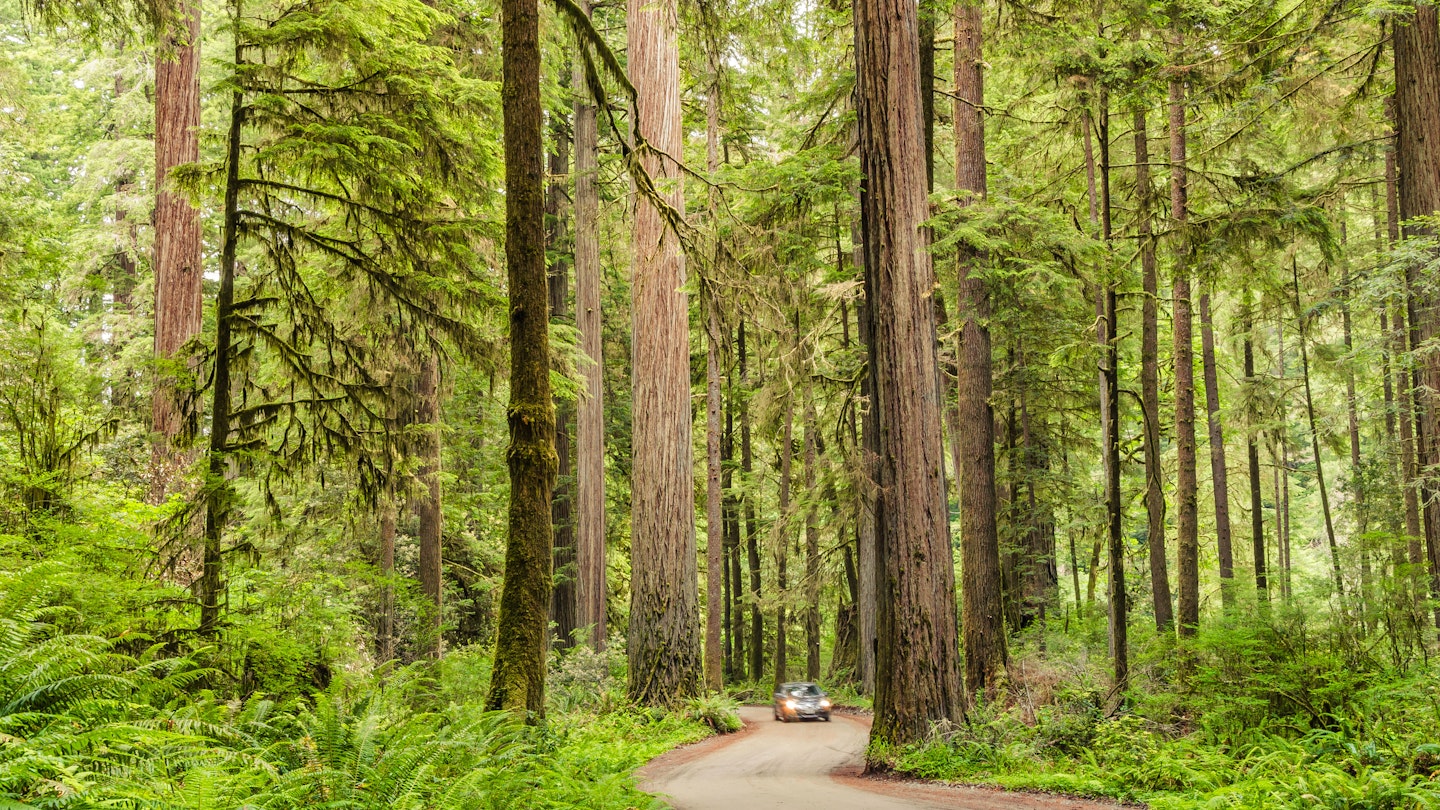
A road trip to California’s national parks will show you the best of the state’s stunningly diverse landscapes © Albert Pego / Shutterstock
California is romanticized for its sparkly Pacific oceanfronts, thickets of palm trees and glass-walled high-rise buildings in the big coastal cities. But the state consists of so much more than its famed southern coast.
If you go north, inland or even offshore, you’ll be treated to dazzlingly unique terrain, insanely diverse ecosystems and eyebrow-raising history lessons — all of which you can experience through the nine (yes, nine!) US national parks in the Golden State.
Each of these parks represents a distinct piece of California’s beautiful, multifaceted puzzle. Here's how to visit them all in a single trip that you’ll talk about — to anyone and everyone who will listen — for the rest of your life.

Breaking down the itinerary
- Total parks visited: nine
- The parks: Joshua Tree National Park, Sequoia National Park, Death Valley National Park, Kings Canyon National Park, Pinnacles National Park, Yosemite National Park, Lassen Volcanic National Park, Redwood National and State Parks, Channel Islands National Park
- Total trip time: 17 days, starting from Los Angeles
- Total mileage: 2,003 (may vary depending on your exact route and road closures)
Day one: Los Angeles to Joshua Tree National Park
Leave LA in the morning, and travel 131 miles to Joshua Tree, where you’ll camp.
Day two: Hang out in Joshua Tree
Spend the day in Joshua Tree National Park; camp here for a second night.
Where to stay
Joshua Tree National Park has several campgrounds. Take your pick, but book far in advance if your trip will take place between October and May — the cooler months are busy in the desert parks. If you want to lodge, check for availability in the nearby towns of Yucca Valley, Joshua Tree and Twentynine Palms.
Need-to-know
Desert weather can change suddenly. It’s not uncommon for dampened fires to reignite when nighttime winds fan the embers. Make sure to fully put out your fire, and secure any items that may fly away in strong winds.
How to get around
Joshua Tree is a relatively small park and easy to navigate. Park Blvd runs through the entirety of the park, with offshoots to get to attractions. You can drive your vehicle to almost all of them, and trailheads too.
What to do while you’re here
Joshua Tree has several hikes ranging from easy to hard, and ample rock-climbing and bouldering opportunities. One fun thing to do in Joshua Tree is drive down Park Blvd to see the flora shift from Joshua Tree groves to thickets of yucca cacti.
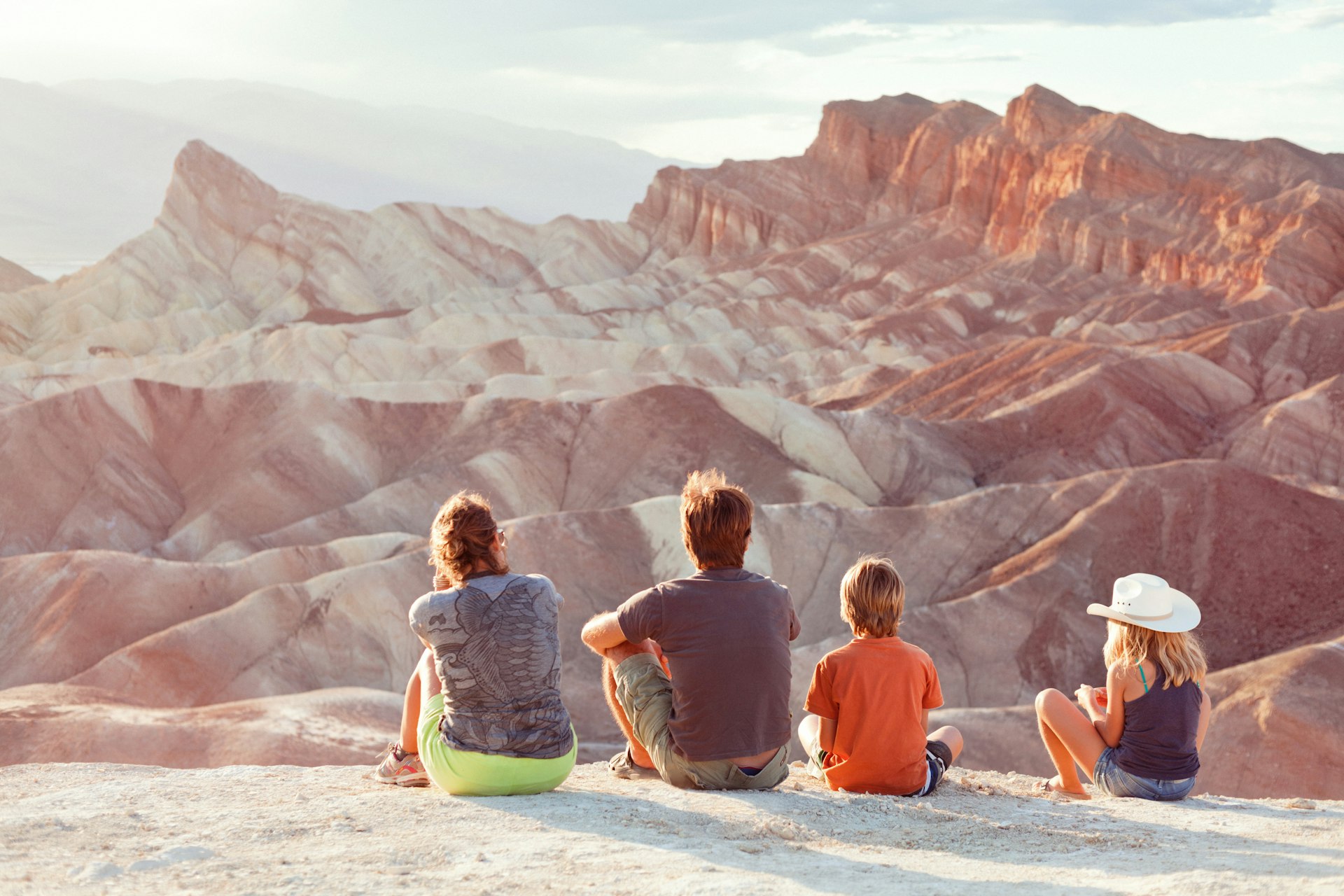
Day 3: Joshua Tree to Death Valley National Park
Leave Joshua Tree in the morning and drive 228 miles to Death Valley, where you’ll camp or lodge.
Day 4: Take in the scenery in Death Valley
Spend the day in Death Valley National Park; camp or lodge here again.
Death Valley National Park has primitive and full-hookup campgrounds, and lodges ranging from basic to luxurious. All but one of the campgrounds are first-come, first-serve, but you need reservations for a lodge.
Camping is probably not the best option if you visit Death Valley in the summer months — temperatures can remain high, up to 100ºF (38ºC) throughout the night, and spike as early as 9am. It's not a great idea in the middle of winter either, when temperatures can drop below freezing at night.
The best way to get around Death Valley is by car. Highways stretch far and wide throughout the park, along with offshoot roads to get to attractions and trailheads. The National Park Service recommends keeping hiking to a minimum in the summer, due to extreme temperatures.
Walk out to the biggest, sparkliest dunes at Mesquite Flat Sand Dunes ; drive Artists Drive to see mountains in shades of seafoam and mauve; visit Badwater Basin (the lowest place on earth at 282ft below sea level); and check out Ubehebe Crater on the north side of the park.

Day 5: Death Valley to Sequoia National Park
Leave Death Valley in the morning, and travel 268 miles to Sequoia National Park, where you’ll camp or lodge.
Sequoia offers incredible camping opportunities, with both primitive and developed campgrounds. There is one developed lodge in Sequoia National Park, Wuksachi Lodge , as well as a primitive lodge maintained by an NPS partner.
The road between Sequoia National Park and Kings Canyon National Park can close during the winter due to snow. If you plan to visit during the winter months, check for road closures and adjust your route as needed.
Generals Highway traverses the entire park; you’ll drive your vehicle to and from all trailheads and attractions. There are parking areas along the way, though parking can be tough to find in the summer.
You’ll never be able to do everything in Sequoia National Park in just a day or two, but you can get a good idea of what the park has to offer. Spend some time romping around Giant Forest to understand the sheer size of Sequoia's trees; hike to Little Baldy for a relatively quick trek with a fantastic payoff; and see the huge General Sherman Tree (the world’s largest tree by volume).
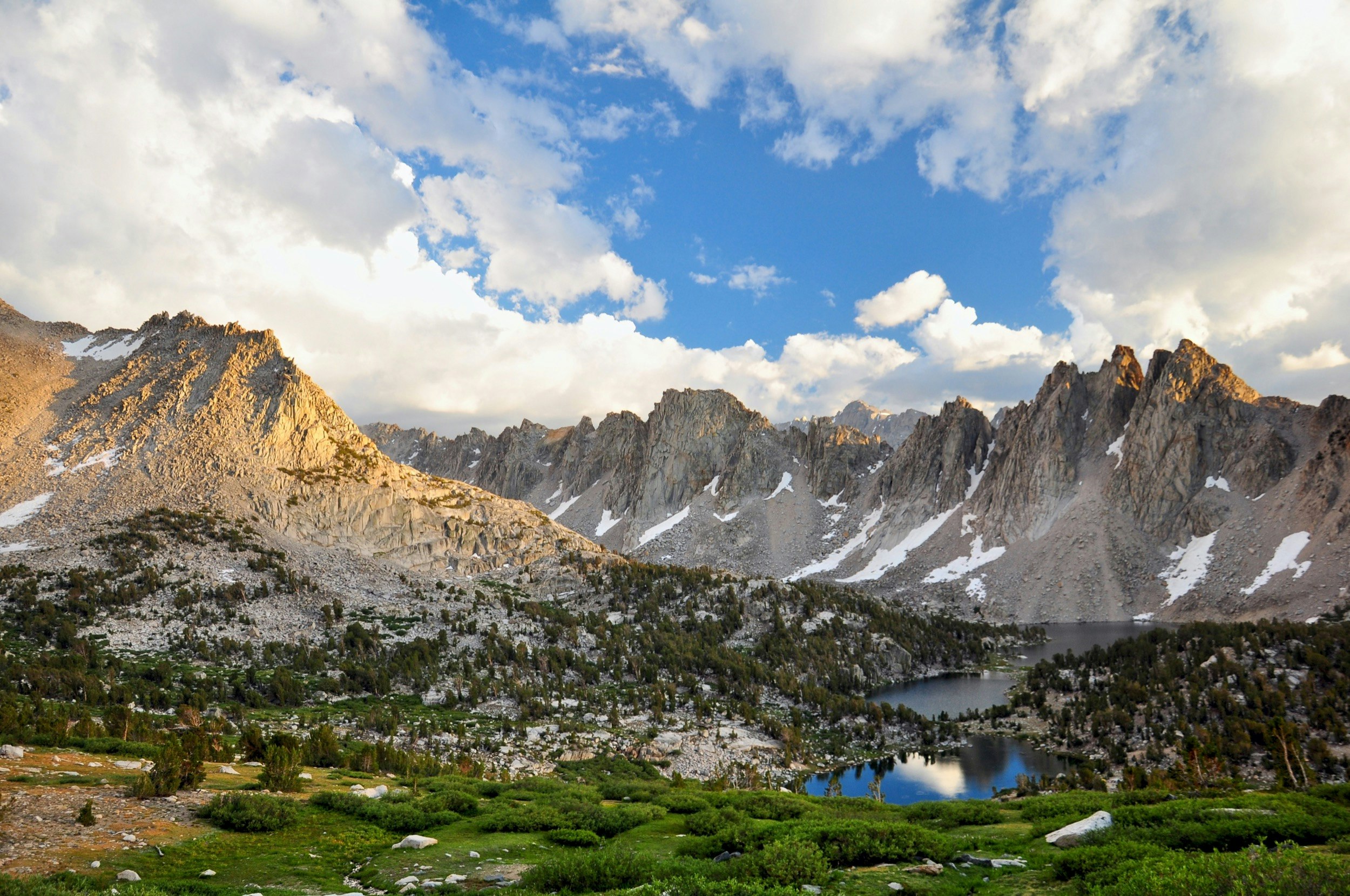
Day 6: Sequoia to Kings Canyon National Park
Spend the day in Sequoia; move on to Kings Canyon National Park (48 miles) in the evening, where you’ll camp or lodge.
Day 7: Spend time in Kings Canyon
Spend the day in Kings Canyon National Park, then drive 112 miles to Yosemite National Park, where you’ll camp or lodge.
Like Sequoia, Kings Canyon National Park has both camping and lodging options . Make reservations in advance and check to ensure your vehicle isn’t too large for the campground you book.
It seems like Sequoia and Kings Canyon are one and the same, but the parks do have defined borders — they are connected by Generals Highway, but closures can occur. Check the driving guidelines from the NPS to make sure your route and vehicle are appropriate. Depending on your vehicle and the season, you may have to exit Sequoia and drive around the park to get to Kings Canyon.
You’ll get around mainly by vehicle in Kings Canyon National Park, hopping out to travel on foot for hikes and attractions.
See General Grant , the second-largest tree in the world; walk up 172 steps to Buck Rock’s dizzying 8205-foot lookout; and enjoy the view at Kings Canyon Overlook off Generals Highway.
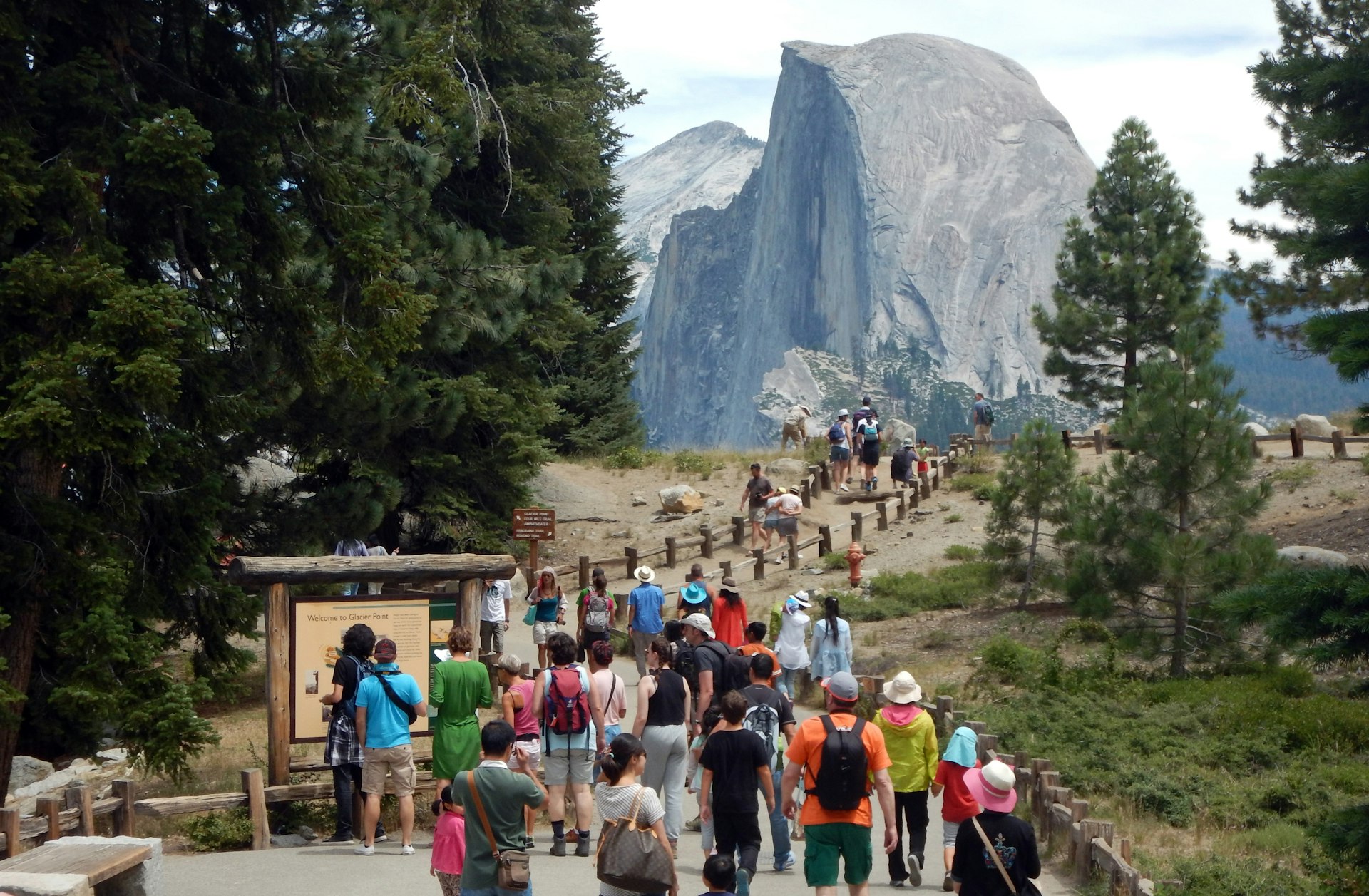
Day 8: Explore Yosemite National Park
Spend the day in Yosemite; camp or lodge here.
For quieter camping, camp on the east side of Yosemite near or in Tuolumne Meadows . If you want to lodge, you can choose one of the many options within the park .
Two main roads in Yosemite, Tioga Road (Hwy 120) and Glacier Point Road, close in the winter due to snow. They usually reopen in May or June — plan your trip accordingly. If you want to see wildlife, spend more time in the Tuolumne Meadows area, rather than the valley.
Yosemite is well-developed, with many roads, paved walking trails, boardwalks and unpaved trails. There is also a shuttle system in the valley area. If you visit during the summer, be prepared for congested traffic and trouble with parking. Getting around by bike or foot is typically easier during the summer months.
Yosemite has so many attractions that it can be tough to choose which ones to see. With limited time, see El Capitan and Half Dome from the valley floor, hike Tuolumne Meadows Trail to Soda Springs , or raft down the Merced River (summer or spring). For an expansive view of the famous granite structures, drive to Tunnel View on Wawona Road.
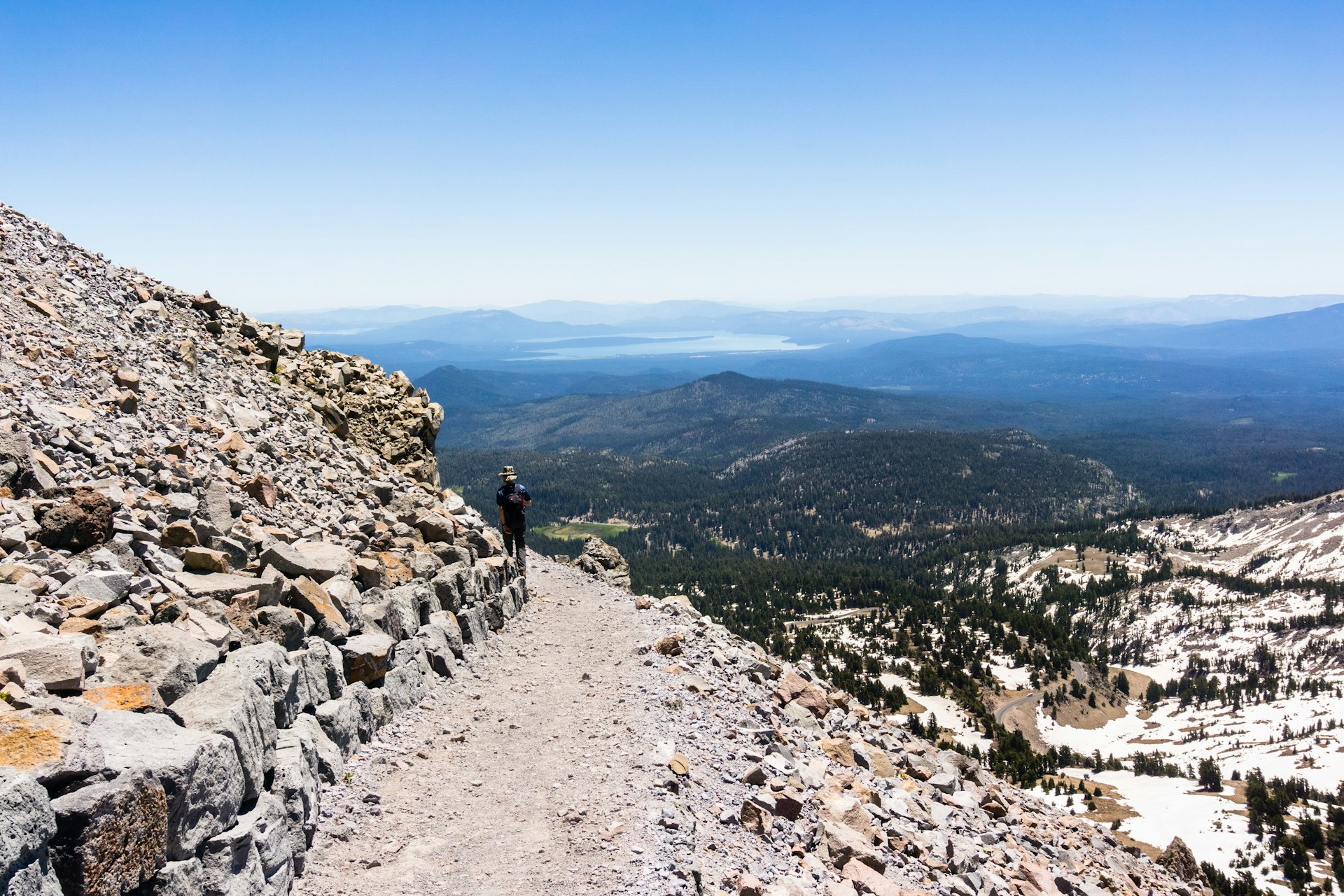
Day 9: Yosemite to Lassen Volcanic National Park
Leave Yosemite by early afternoon and travel 301 miles to Lassen, where you’ll camp or lodge.
Day 10: Stay overnight in Lassen
Spend the day in Lassen Volcanic National Park; camp or lodge here.
There is only one lodge in Lassen Volcanic National Park , Drakesbad Guest Ranch , but there are many campgrounds . Most campgrounds require advance reservations, and some are first-come, first-served.
Park Highway (Hwy 89) closes past the Kohm Yah-mah-nee Visitor Center during the winter months. The visitor center itself can also close during winter storms. While in the park, stay on established trails and boardwalks. Hydrothermal areas can be disguised and dangerous, and visitors who travel off-trail can suffer severe burns.
Lassen Volcanic National Park has several roads running through the park, but they can all close due to snowfall. The NPS highly encourages checking road conditions before you visit, or simply visiting after roads are cleared in April.
Lassen Volcanic National Park is quintessential northern California: It shows off with glistening mountain lakes, snowy peaks, and lush meadows. But the park’s real claim to fame are the boiling hydrothermal areas and volcanoes. Backpacking, hiking, biking and auto-touring are popular activities for seeing the attractions.
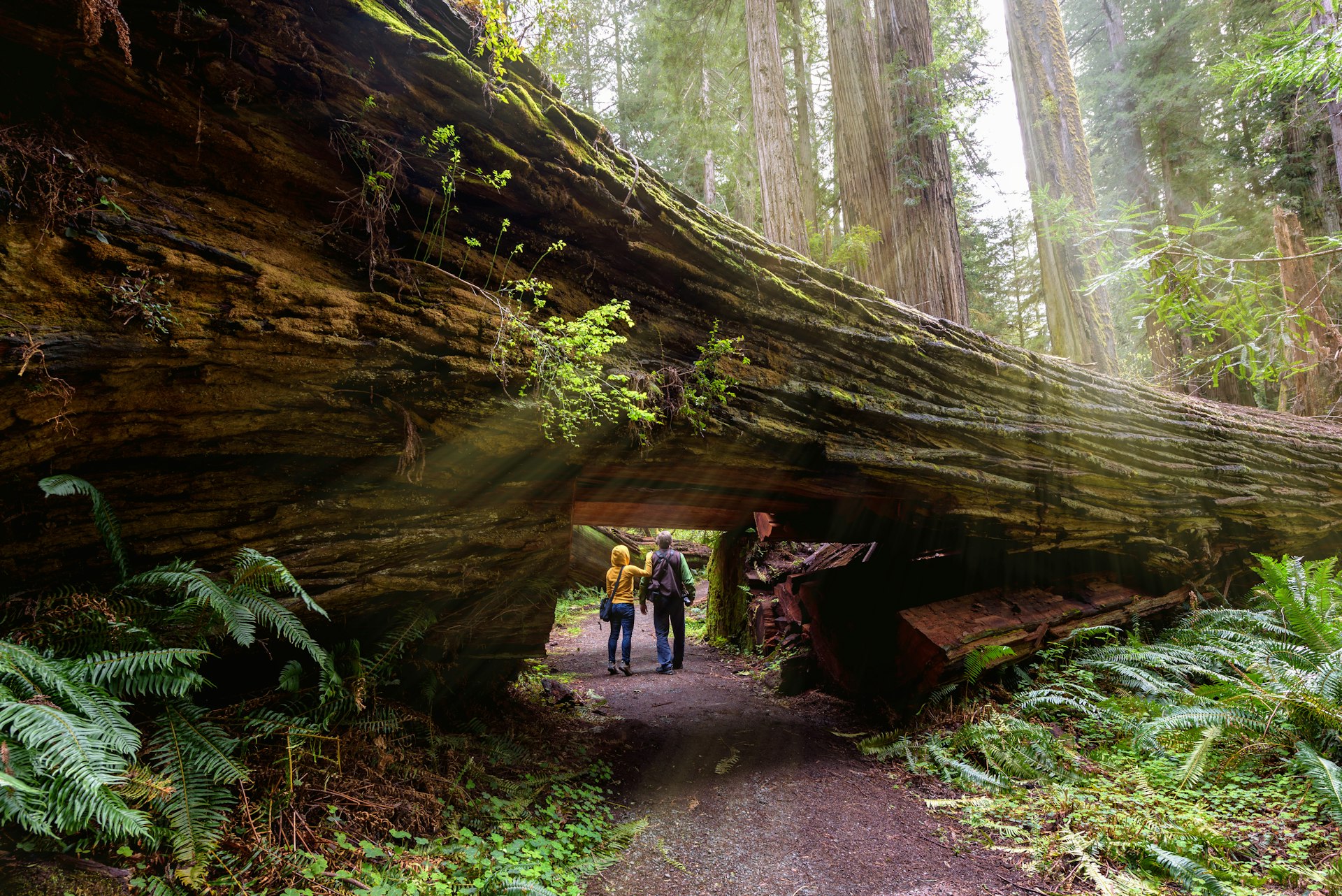
Day 11: Lassen to Redwood National Park
Leave Lassen Volcanic National Park by mid-morning; travel 177 miles to Redwood National Park, where you’ll camp or lodge.
Day 12: Mess around in the Redwoods
Spend the day in Redwood National Park; camp or lodge here again.
Redwood National Park — technically known as Redwood National and State Parks — has eight basic campground cabins but very limited lodging. If you want a real roof over your head, consider staying outside of the park in nearby communities.
The campground cabins tend to book up several months in advance, so if you're keen to stay in them, be sure to plan well ahead of your trip.
The park is mostly oriented around US Highway 101, the corridor that runs north and south along most of California. Many other roads, including designated scenic drives, run throughout the park.
Marvel at some of the tallest known trees in the world, obviously! Aside from craning your neck to attempt to see the tops of coastal redwoods, biking, hiking, horseback riding and kayaking the Smith River (summer only) are popular activities.
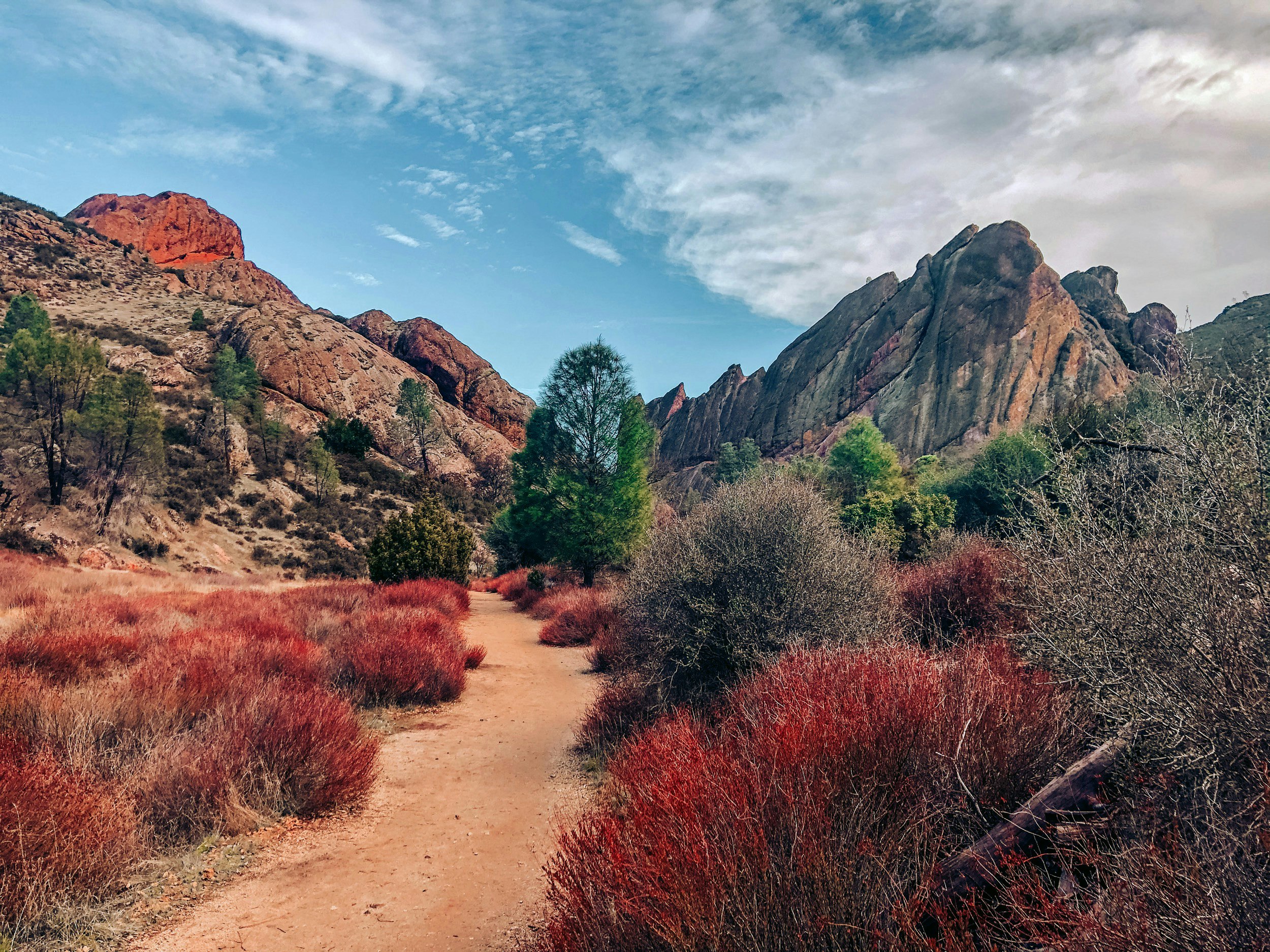
Day 13: Redwoods to Pinnacles National Park
Leave the Redwoods by early morning and travel 437 miles to Pinnacles National Park, where you’ll camp or lodge.
Day 14: Escape the crowds at Pinnacles
Spend the day in Pinnacles; camp or lodge here again.
There is only one campground at Pinnacles National Park , and it’s on the east side of the park. The east and west sides of Pinnacles are not connected by road — only by hiking trails. If you plan to camp, make sure you enter on the east side through Hollister, California. You can lodge in Soledad, California, if you plan to enter on the west side.
On this trip, you only have time to enjoy one side of the park. Plan accordingly. Both the east and west side offer great hiking trails and California condor viewing, though the cave attractions differ.
Highway 146 takes you into the west side, while highway 25 takes you into the east side. Both highways weave through the park for a few miles, and then it’s mainly foot traffic from there.
Pinnacles is one of the smaller national parks in California and has very limited facilities. Its lack of development makes for quiet hiking and uninterrupted wildlife-viewing. Make sure you shimmy through Bear Gulch Cave (east side) or Balconies Cave (west side), and look into the sky to see some condors (the largest land birds in North America!).

Day 15: Pinnacles to Ventura
Leave Pinnacles National Park and travel 233 miles to Ventura, California.
Day 16: Ventura to Channel Islands National Park
Make a reservation for an Island Packers tour to Channel Islands National Park. Head back to Los Angeles after the day tour, or stay in Ventura for another night.
Ditch your car or camper van for a night (it'll be safe in Ventura Harbor, or you can pay to park in a nearby garage) and take a park concessionaire boat to the island. Pitch a tent in one of the park's lush campgrounds or venture into the backcountry — but watch for ticks, and seal your food in rodent-proof containers. You can also opt to return to the mainland on the same day and lodge in the beachside town of Ventura.
There are no remedies for poor planning at Channel Islands National Park , so make sure you bring enough food, water, clothing and other supplies. You must reserve your Island Packers tour in advance — it’s likely that you’ll have to plan your entire trip around this day, because tours are limited and fill up fast.
You'll need fresh legs for a visit to the Channel Islands, as there's no transportation service on the islands. Everything must be accessed by foot or kayak, unless you have a private boat.
Island Packers boats most commonly go to Santa Cruz Island , the largest island in California at over 96 sq miles. On Santa Cruz, you can go hiking, bird-watching, snorkeling, kayaking and whale-watching. You can also peruse old Chumash Native American residences and ranching quarters from the 19th and 20th centuries.
Day 17 (optional): Return to LA
Travel back to Los Angeles (68 miles).
You might also like: 15 unforgettable experiences in US national parks Why you should drive California's scenic Highway 395 The best free things to do in the US national parks
This article was first published February 2020 and updated March 2022
Explore related stories
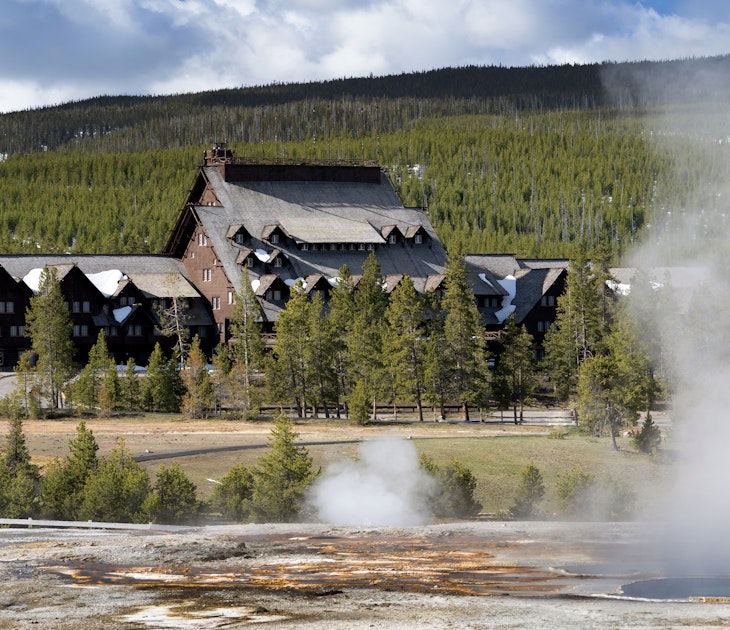
National Parks
Apr 22, 2024 • 13 min read
These 12 stupendous lodges, inns and hotels get you up close to the splendor of the USA’s best national parks.
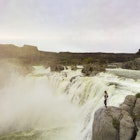
Apr 18, 2024 • 7 min read
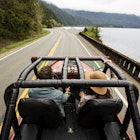
Apr 17, 2024 • 5 min read

Apr 17, 2024 • 6 min read
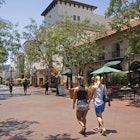
Apr 17, 2024 • 8 min read
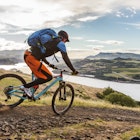
Apr 17, 2024 • 4 min read

Apr 14, 2024 • 8 min read
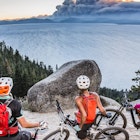
Apr 13, 2024 • 9 min read
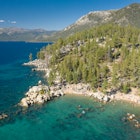
Apr 13, 2024 • 6 min read
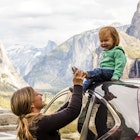
Apr 2, 2024 • 7 min read

Epic California National Parks Road Trip: 2-Week Itinerary
* This article contains affiliate links, which help run this site at no extra cost to you.
The perfect two-week California national parks road trip to see the best highlights and experience the Golden State’s outdoor nature to the fullest.
I vividly remember my first introduction to each national park I’ve visited in California.
The first time I saw a Joshua Tree up close and experienced the next-level nature of desert stargazing.
Driving along El Portal Road on my way into Yosemite Valley, my skin prickling from the jaw-dropping scenery in front of me.
That feeling of awe as a huge California Condor flew overhead while I was hiking through Pinnacles National Park.
The national parks in California are memorable, to say the least, and all of them deserve a place on any California bucket list .
That’s why I wanted to put together an epic road trip itinerary to hit the highlights of the California national park system in two weeks.
In this itinerary, I take you through the heights of the Sierras to the lowest point in North America, as well as California’s most beautiful islands .
Along the way, you’ll experience the best of California nature and what makes each of these parks so special.
Here’s to having a national parks road trip of a lifetime, happy road tripping!
Note: this post contains affiliate links, which help run this site at no extra cost to you so I can keep providing free travel advice and tips.
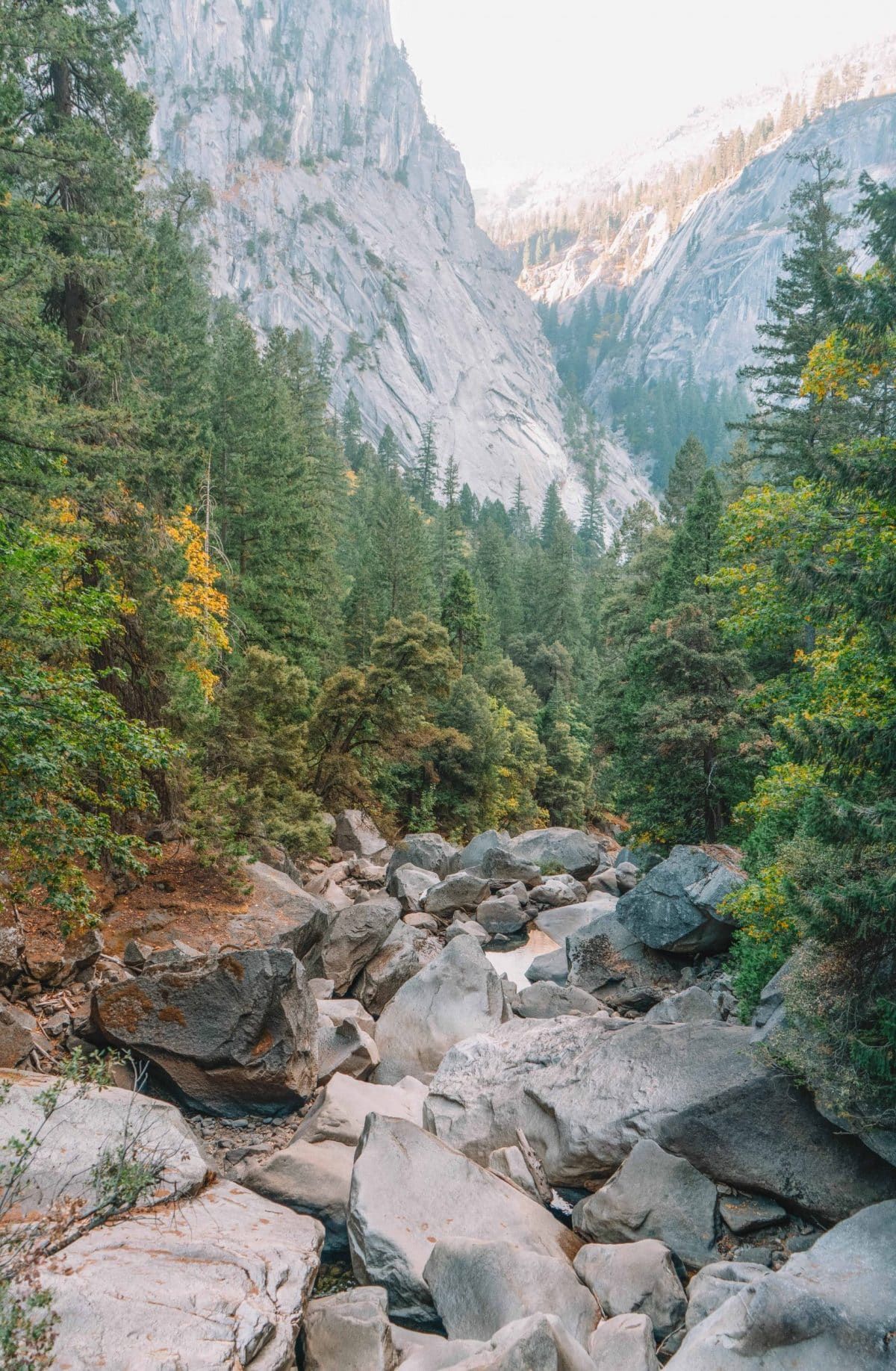
Table of Contents
How Many National Parks Are in California?
There are a total of nine national parks in the Golden State. This is the full list of California national parks :
- Redwood National and State Parks
- Lassen Volcanic National Park
- Yosemite National Park
- Sequoia National Park & Kings Canyon National Park
- Death Valley National Park
- Joshua Tree National Park
- Channel Islands National Park
- Pinnacles National Park
How Much Time Do You Need to Visit All of the National Parks in California?
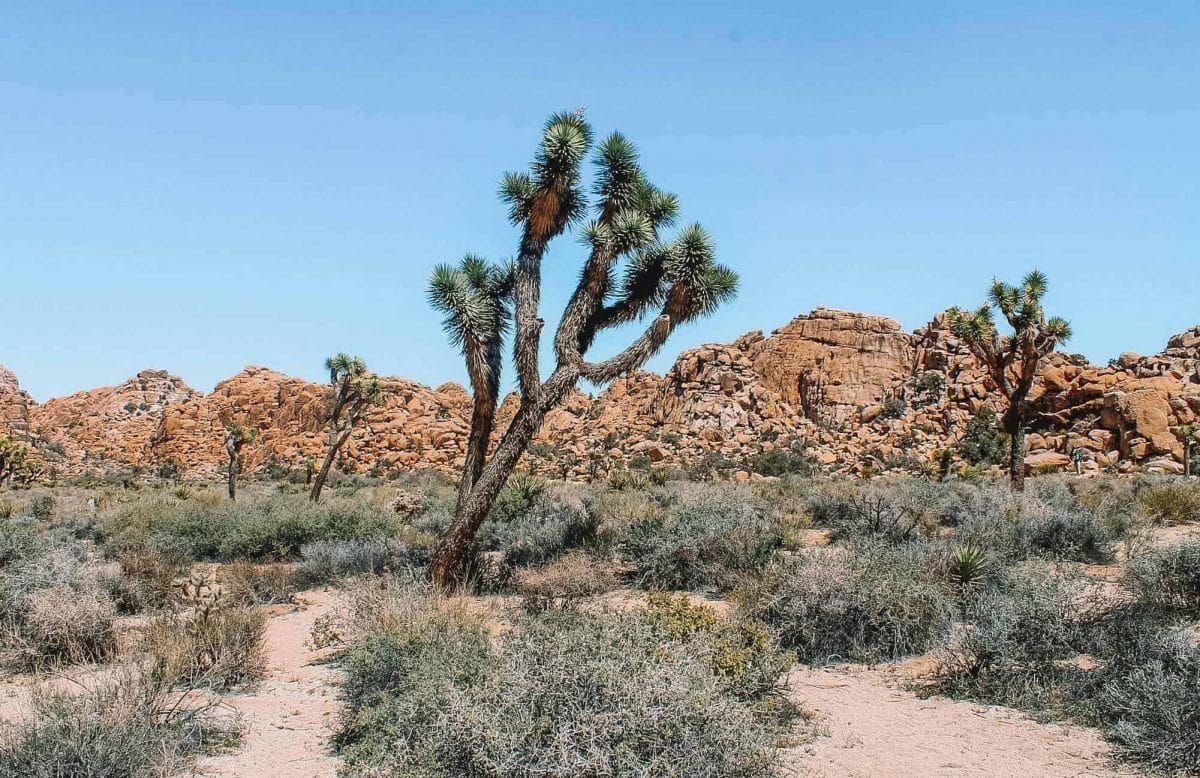
California is a large state and its national parks are very spread out, so if you want to hit all nine I’d give yourself at least three weeks if not a full month.
This two-week epic road trip itinerary takes you to 7 out of 9 of the national parks and is very doable, but if you want to add on more than that you should probably give yourself more time.
If you don’t have two weeks and you just want to see the most popular national parks, such as Yosemite, Death Valley, and Joshua Tree, you could do a 5-day to one-week road trip instead.
I have more road trip itinerary recommendations below for different lengths of time.
Get your FREE California Travel Planner – including printable checklists and my favorite two-week itinerary for the state.
When’s the Best Time of Year to do a California National Parks Road Trip?
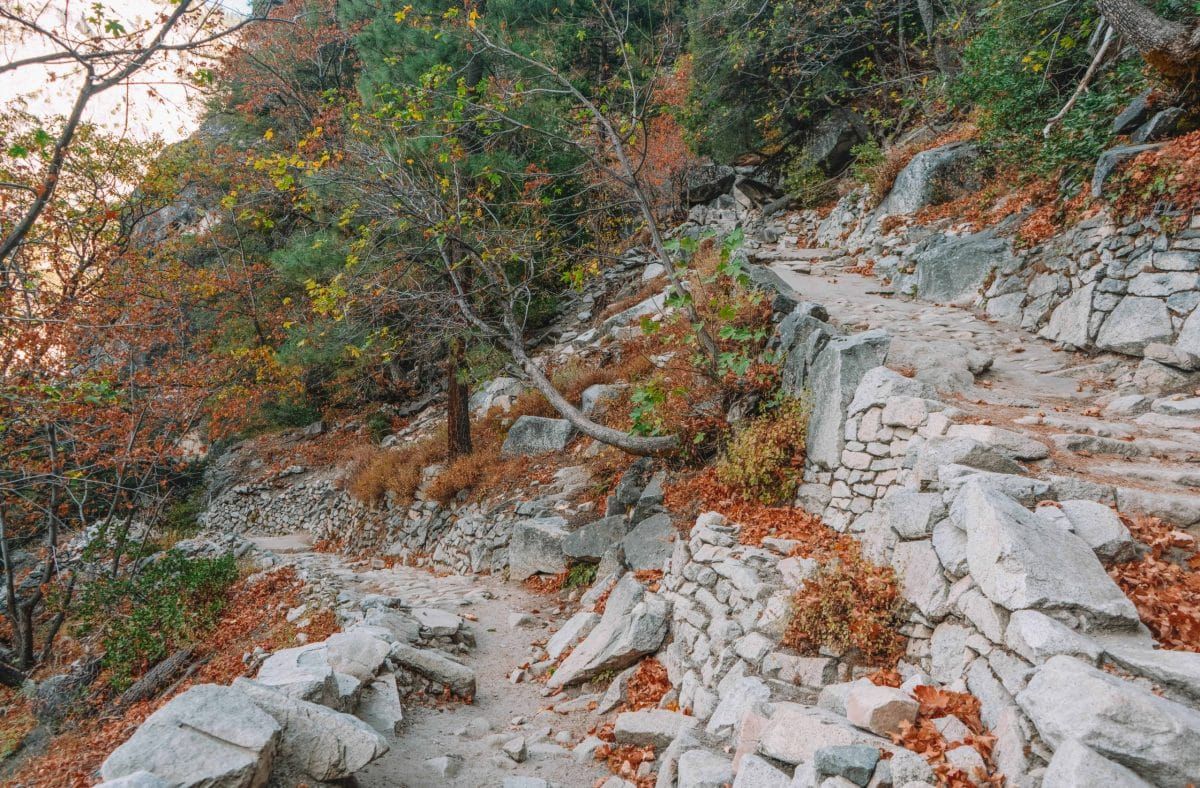
It depends on what you’re looking for, but my favorite time to do a California road trip around the national parks is either late spring or fall .
Summer is the most popular time to visit the national parks, but it’s also when they’ll be at their busiest. And the ones in the deserts are impossibly hot at that time (Death Valley and Joshua Tree).
Winter can be tricky if you’re visiting the national parks in the Sierras (Yosemite, Sequoia and Kings Canyon, and Lassen Volcanic National Park) because road closures are common due to snow.
There’s also less open in the winter so you don’t get the same atmosphere at certain parks.
Spring, on the other hand, can be an ideal time for wildflowers , waterfalls, and nice weather without too much rain (especially in late spring).
The fall will usually be warmer in California than in spring. In the fall, you’ll also be treated to fall foliage around the Sierras and reasonable temperatures at most places (for the deserts you might want to go in late fall though).
Overall, different parks are good for different times of the year but if you’re looking to hit the most national parks in one go, spring or fall are the best seasons to plan your California road trip.
- America the Beautiful Pass
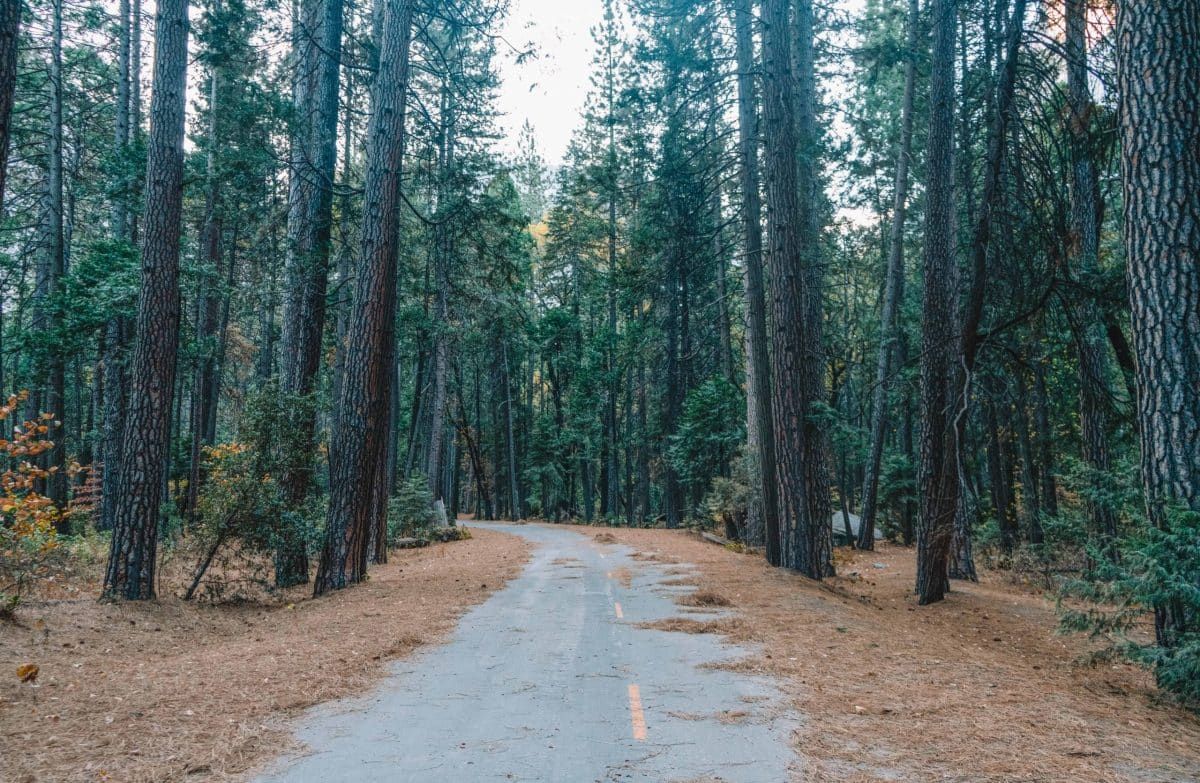
If you’re doing a national park road trip, it’s worthwhile to grab an America the Beautiful Pass to save on the cost of the parks.
The entrance fee for most national parks in California is around $35 per vehicle, so as long as you hit three different national parks the pass will pay for itself.
The pass is good for a year and can be used at any other US national parks as well if you’re planning other out-of-state adventures this year.
You can grab an America the Beautiful Pass here
PS – you might also want to grab a national park passport just for fun!
California National Parks Road Trip from San Francisco
Day 1-3: san francisco to yosemite national park.
Distance: 179 miles, 3.5-hour drive
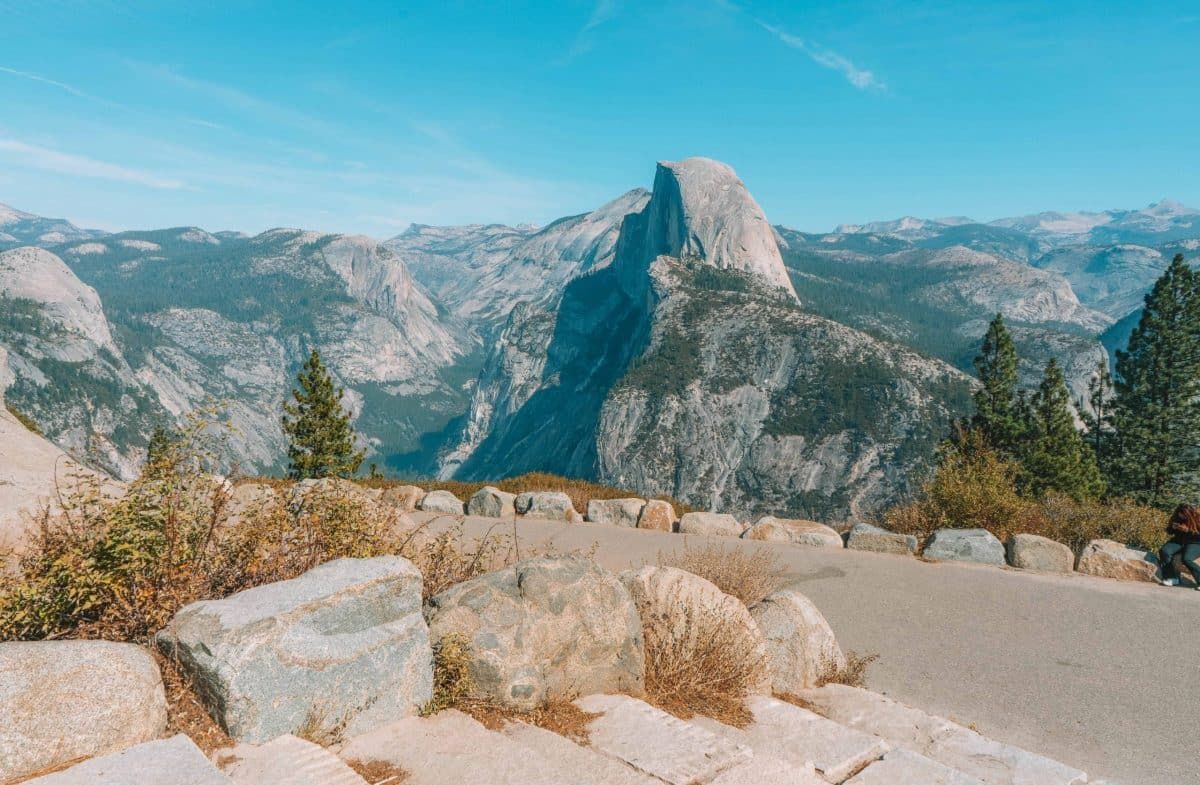
Note: since we’re skipping Redwood National & State Parks on this California road trip itinerary, you might want to visit Muir Woods to see the California redwoods before you leave or once you get back to San Francisco.
Starting from San Francisco , you’ll make the 3.5-hour drive to Yosemite National Park.
Once you make a right at Yosemite Junction, prepare yourself for a winding road up to the Sierras until you get to the Big Oak Flat Information Center.
This is the western entrance of Yosemite National Park and you’re going to either be staying near this entrance or within the park for the next couple of nights.
For this first day, you’ll probably only have a half-day to see the park after driving from San Francisco.
Once you arrive, spend the rest of the day doing a mini road trip around Yosemite Valley and its surrounding areas to get your bearings and take in those jaw-dropping vista points.
Here are a few vista points to go see: Lower Yosemite Fall, El Capitan Meadow, Valley View, Tunnel View, Washburn Point, and Glacier Point.
Since you’ve already been in the car for a few hours, you can choose to do as few or as many of these as you want.
Maybe you just want to have a picnic at Lower Yosemite Fall and watch the sunset at Glacier Point and call it a day, it’s up to you!
This is your day to get out of the car and start hiking Yosemite’s popular trails. You have two options for today – a challenging long hike or a self-guided waterfall hiking tour.
If you want to go with a challenging hike, hike either Half Dome (16.3 miles) or Clouds Rest (11.9 miles).
Half Dome is the most famous hike in Yosemite, but you’ll need to really plan ahead and snag a permit to do the full hike and climb the cables at the end.
Permits are done by lottery (the best way to enter is by doing the pre-season lottery from March 1st-31st on Recreation.gov ) so you’ll want to book early and there’s no guarantee you’ll get one.
If you’re not able to get a permit for Half Dome, tackle Clouds Rest instead, which is just as beautiful and not as crowded.
If you’re not up for that strenuous of a hike, I’d recommend doing a tour of Yosemite’s waterfalls through 1-3 trails. These are your options:
- Bridalveil Fall Trail (0.5-mile)
- Lower Yosemite Fall Trail (1 mile) – Most family-friendly waterfall hike for those traveling with kids or with mobility issues.
- Vernal Falls (2.4 miles) and Nevada Falls via the Mist Trail (5.4 miles)
- Wapama Falls Trail (4.6 miles) – You can also see Hetch Hetchy Reservoir here too.
- Upper Yosemite Falls Trail (7.2 miles)
Note: The best time to do waterfall hikes in Yosemite is during peak runoff in May or June. If you’re traveling outside of this time, these are still stunning hikes to tackle. Otherwise, I’d recommend the Mirror Lake Trail (2-5 miles) at any time of the year besides winter.
For your last day in Yosemite, it’s time to check out the eastern side of the park in the Tuolumne Meadows area.
Head over to Olmstead Point to start your day with a stunning viewpoint. Then, drive to Tenaya Lake to relax and have breakfast or an early afternoon picnic.
Next, stop by the Tuolumne Meadows Visitor Center to grab a map and learn more about the area. From here, you can do a short walk to Soda Springs and Parsons Lodge .
If you’re not too tired from hiking the previous day, you can also tackle one of the many hikes in the Tuolumne Meadows area.
The hikes around here take you through the subalpine meadow, as well as craggy peaks and calm lakes. In other words, they’re gorgeous.
A few you could do include: Gaylor Lakes (2 miles), Lembert Dome (2.8 miles), and Cathedral Lakes (7.7 miles).
Once you’re done hiking, continue enjoying the scenic drive along Tioga Pass , taking your time and stopping to check out the views along the way.
If you have extra time, drive just outside the eastern side of Yosemite National Park to spend an hour or so at Mono Lake .
This is one of the oldest and most unique lakes in North America, featuring alien-like tufa towers.
Looking for more to do? Read our guides to the best things to do in Yosemite , two days in Yosemite itinerary , and how to see the Yosemite Firefall .
Where to Stay in Yosemite
- Camping: Lower Pines Campground , North Pines Campground , Upper Pines Campground
- Hotels: Yosemite Westgate Lodge , Tenaya Lodge at Yosemite , The Ahwahnee
Read our guide to the best campgrounds in Northern California .
Day 4-5: Yosemite National Park to Sequoia & Kings Canyon National Parks
Distance: 147 miles, 3.5-hour drive
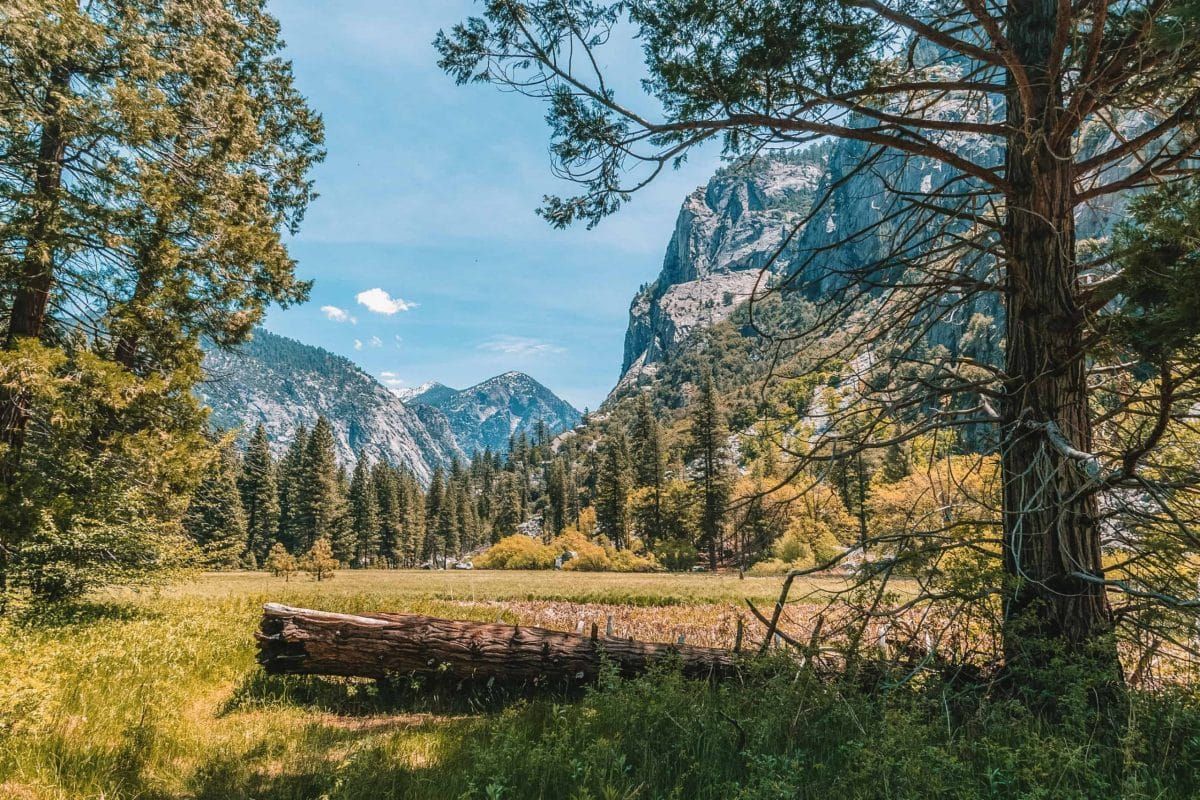
The drive from Yosemite National Park to Sequoia National Park and Kings Canyon National Parks is another 3.5-hour journey, so I’d recommend starting early from Yosemite and arriving at Kings Canyon National Park (your first stop) by noon.
Note: Sequoia and Kings Canyon National Parks are two separate California national parks. However, they’re often grouped together because they’re located next to each other and administered together by the National Park Service.
Leaving from Yosemite Valley, don’t miss Mariposa Grove where you’ll find the largest sequoia grove in Yosemite and some of the biggest sequoia trees in the world.
At Kings Canyon National Park, you’ll have the chance to explore meadows, waterfalls, epic views, and Sequoia trees. Kings Canyon National Park is also home to the deepest canyon in the US (8,200 ft).
Once you get to Kings Canyon, drive the Kings Canyon Scenic Byway that starts around Dunlap on Highway 180 and goes until Road Ends.
Along the way, there are plenty of sights to check out, including the Kings Canyon Visitor Center, Panoramic Point, General Grant Grove, Hume Lake, Junction View, Grizzly Falls (a good picnic area), and Zumwalt Meadows.
You have all of today to explore Sequoia National Park at your leisure and there’s a lot to pack in.
Sequoia National Park is another place where you’ll find some of the biggest trees in the world, as well as interesting rock formations, caves, viewpoints, and plenty of hikes.
If you have the energy, start your day off with 1-2 hikes inside the park. Here are a few options:
- Big Trees Trail (1.5 miles)
- Tokopah Falls (1.7 miles)
- Crescent Meadow Trail (1.8 miles)
- The Congress Trail (3 miles)
And then spend the rest of your day visiting Moro Rock, General Sherman, and the Giant Forest Museum.
If you have extra time, you can also sign up for a 45-minute tour of Crystal Cave, just reserve your spot at least two days in advance.
Where to Stay in Sequoia and King Canyon National Parks
- Camping: Lodgepole Campground , Dorst Creek , Azalea Campground
- Hotels: Waksuchi Lodge , John Muir Lodge , Cedar Grove Lodge
Day 6-7: Sequoia & Kings Canyon National Parks to Death Valley National Park
Distance: 311 miles, 5.5-hour drive
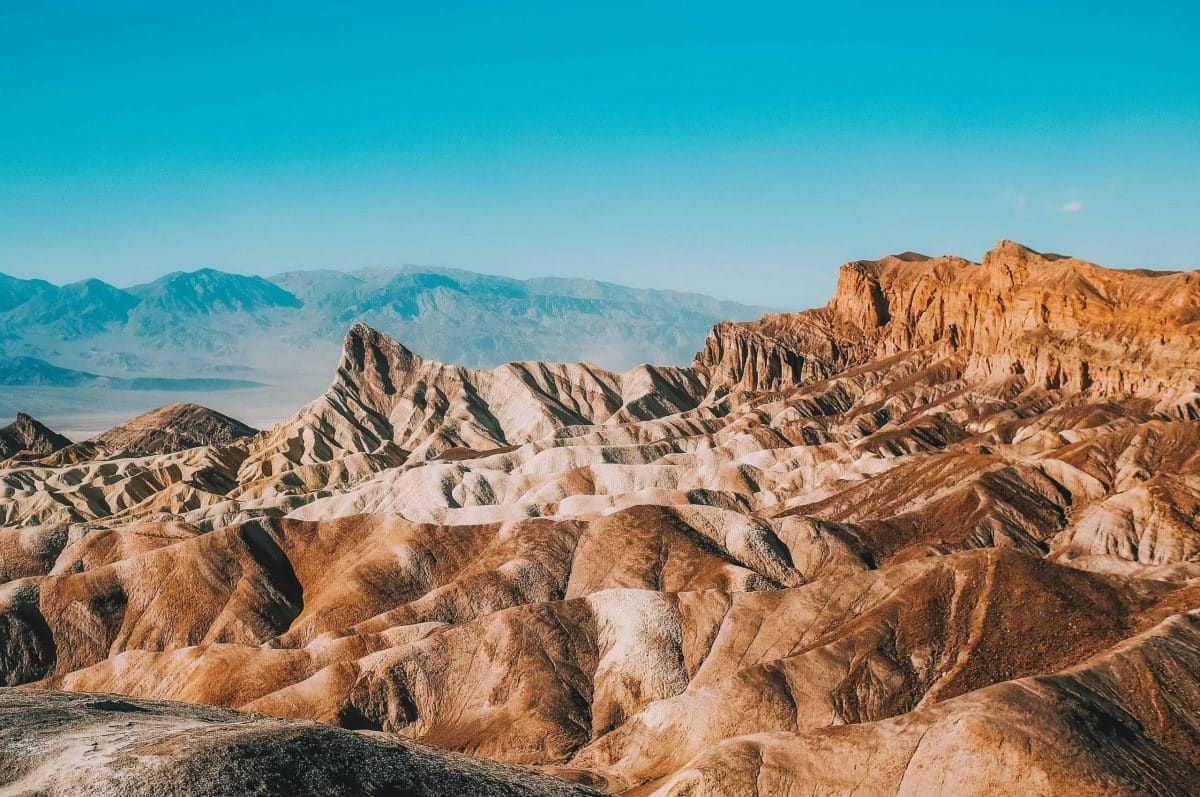
The next segment of your California national parks road trip itinerary will feel completely different from what you’ve done so far.
You’re now entering the Southern California desert region and the first stop is Death Valley National Park – the most brutal and extreme California national park on this list.
In fact, it’s the lowest and driest national park in the contiguous US.
This is the longest driving day in terms of distance between parks, so make sure you budget enough time from Sequoia National Park to get to Death Valley while it’s still light out.
Day 6
On your way into the park, stop at Father Crowley Overlook where you can sometimes see fighter jets practicing overhead.
If you want to pick up a map and learn more about the history of the area, your next stop should be the Death Valley National Park Information Center .
Depending on what time of day it is and where the temperatures are at, you may just want to rest for the afternoon until it starts cooling off.
Once it gets close to golden hour, head over to two of the park’s best viewpoints at Dante’s View and Zabriskie Point .
Start your only full day in Death Valley as early as possible.
Spend the morning at Badwater Basin , the park’s famous salt flats and the lowest point in North America at 282 feet below sea level.
Take your time walking around this massive area and snap some pictures while you’re there.
Right next to Badwater Basin, you can do the two-mile hike to Natural Bridge to look at interesting rock formations.
Next up, you can visit Devil’s Golf Course , which is another unique salt flat near Badwater Basin.
Nearby there’s also the 9-mile Artist’s Palette Drive , which features two viewpoints looking out over a rainbow-colored mountain.
If it’s not too hot yet, you can also do a hike at Golden Canyon (there are a few different hikes of varying lengths at the trailhead).
Spend your last evening in Death Valley making the journey to Mesquite Sand Dunes . You can hike to the top of them (it takes about 20 minutes) for prime golden hour views.
Looking for a more detailed Death Valley bucket list? Read our full guide to the best things to do in Death Valley National Park .
Where to Stay in Death Valley National Park
- Camping: Furnace Creek Campground , Wildrose Campground , Mahogany Flat Campground [But I’d only recommend camping at Death Valley if you’re visiting during the cooler months (October-April)]
- Hotels: The Inn at Death Valley , The Ranch at Death Valley , The Oasis at Death Valley
Day 8-9: Death Valley National Park to Joshua Tree National Park
Distance: 228 miles, 3.75-hour drive
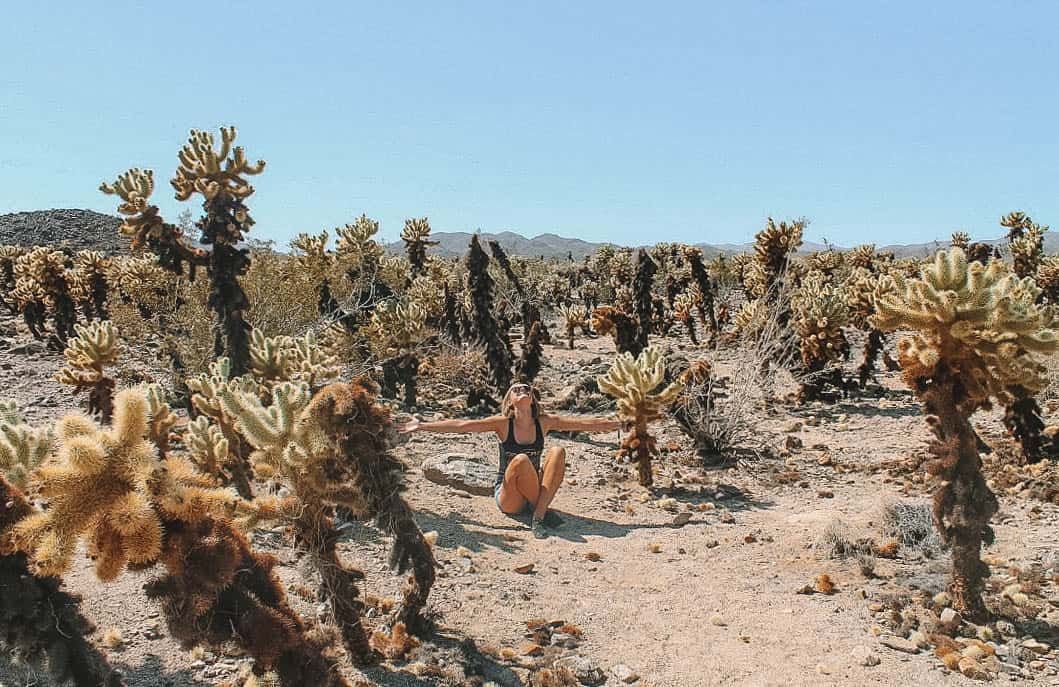
Continuing your California road trip itinerary, it’s now time to introduce you to my favorite California national park – Joshua Tree!
There’s really no other place like Joshua Tree. It spans two deserts (the Mojave and Colorado) and features alien-like landscapes and funky-looking cacti.
It was the first place I realized how beautiful the desert can be.
There’s a lot to see in and even on your way to Joshua Tree, so you’ll want to be on the road early for the four-hour drive through the desert.
Make sure to fill up on gas when you can and enjoy the many unique sights the California desert has to offer.
There are a few stops you can make on your way into the west entrance of the park.
Make a stop at Pioneertown to see what was once a Wild West movie set turned live town, grab a coffee from Joshua Tree Coffee Company , and walk around the Noah Purifoy Outdoor Art Museum to see the beauty of “junk art.”
Once you get into Joshua Tree, you’ll probably have a few hours left to sneak in some sights before calling it a day.
For your first introduction to just how beautiful the Joshua Tree landscape can be, head over to the Arch Rock Nature Trail .
This 1.2-mile trail takes you to an interesting rock formation in the middle of the desert shaped, as you probably guessed, in the form of an arch.
Afterward, you can head over to Skull Rock and the Jumbo Rocks Campground to immerse yourself in the massive boulders and weird rock formations that make Joshua Tree such a fun place to visit.
Next, head over to another one-mile loop at the Hidden Valley Nature Trail to take in even more desert scenery.
Finally, end your day with a sunset at Keys View – a panoramic viewpoint that looks out over the Coachella Valley.
Start your day early today to beat the heat of the desert and get in some hikes.
You have a few options today for hiking around the park.
If you’re up for the challenge I’d recommend starting with the more difficult Ryan Mountain Hike (3 miles). It’s a steady uphill climb to get to the summit but the views at the top are worth the effort.
Note: If you’d rather explore the other side of the park that features a slightly different landscape, head south instead of doing the Ryan Mountain Hike. In the southern part of the park, you can hike the Mastodon Peak Loop Trail (2.6 miles) or the Lost Palms Oasis Trail (7.2 miles) to get a different perspective of Joshua Tree.
After the views at Ryan Mountain or doing a hike in the south, it’s time to tackle one or two of Joshua Tree’s most popular (and easier) trails – the Barker Dam Nature Trail (1.3 miles) or the Wall Street Mill Trail (2.4 miles).
The Barker Dam Nature Trail gives you the highlights of the Mojave Desert and guides you through the landscape with interpretive displays.
This is a good one to do if you want to learn more about the local flora and fauna or you’re traveling with young kids.
However, if you’re a history buff interested in looking into Joshua Tree’s past, head to the Wall Street Mill Trail.
Along the trail, you’ll find leftover remnants of another time in the form of rusted-out cars and a mill that’s in disrepair. There are also signs along the trail that teach you about the history of the area.
This is actually my favorite hike in Joshua Tree if only for the interesting juxtaposition of abandoned cars in the middle of the desert.
After you’re done hiking for the day, head over to the Cholla Cactus Garden to see the cute and fuzzy teddy bear cacti (just don’t give it a hug!).
These are also nicknamed “jumping cholla” cacti because they “jump” when you get too close, so please be careful and keep your distance from the cacti.
If you have time, you can round out your day by touring Keys Ranch , which is a historic ranch and homestead that was once lived in from 1910 to 1969 by William F. Keys and his family. Just note that tours are only offered from October to May.
Before hitting the hay, finish off the night with a warm cup of hot chocolate (or a hot toddy depending on your preference) and do some stargazing.
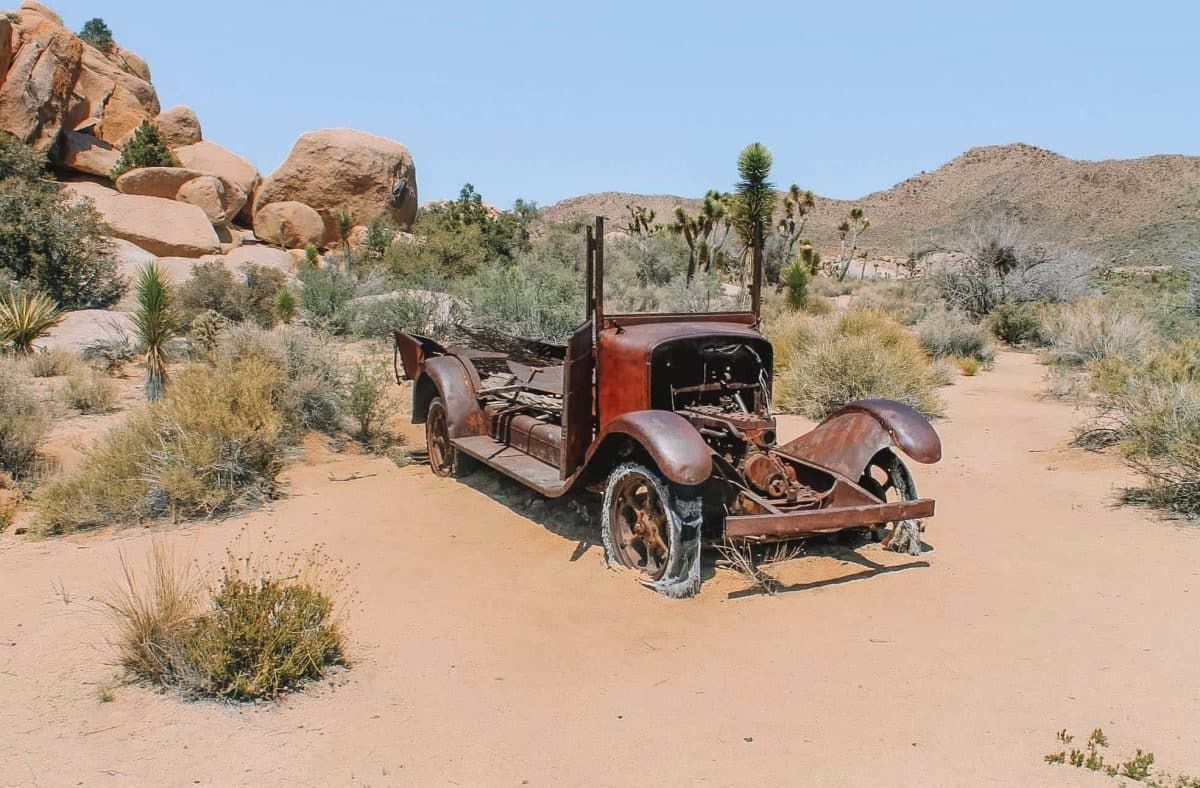
Where to Stay in Joshua Tree National Park
- Camping: Belle Campground , Hidden Valley Campground , Jumbo Rocks Campground
- Hotels: Pioneertown Motel , Joshua Tree Inn , Sacred Sands
Read my full guide to the best hotels near Joshua Tree
Day 10-12: Joshua Tree National Park to Ventura & Channel Islands National Park
Distance to Ventura: 200 miles, 3.5-hour drive
Ventura to Santa Cruz Island: 1-hour ferry ride
Oxnard to Anacapa Island: 1.5-hour ferry ride
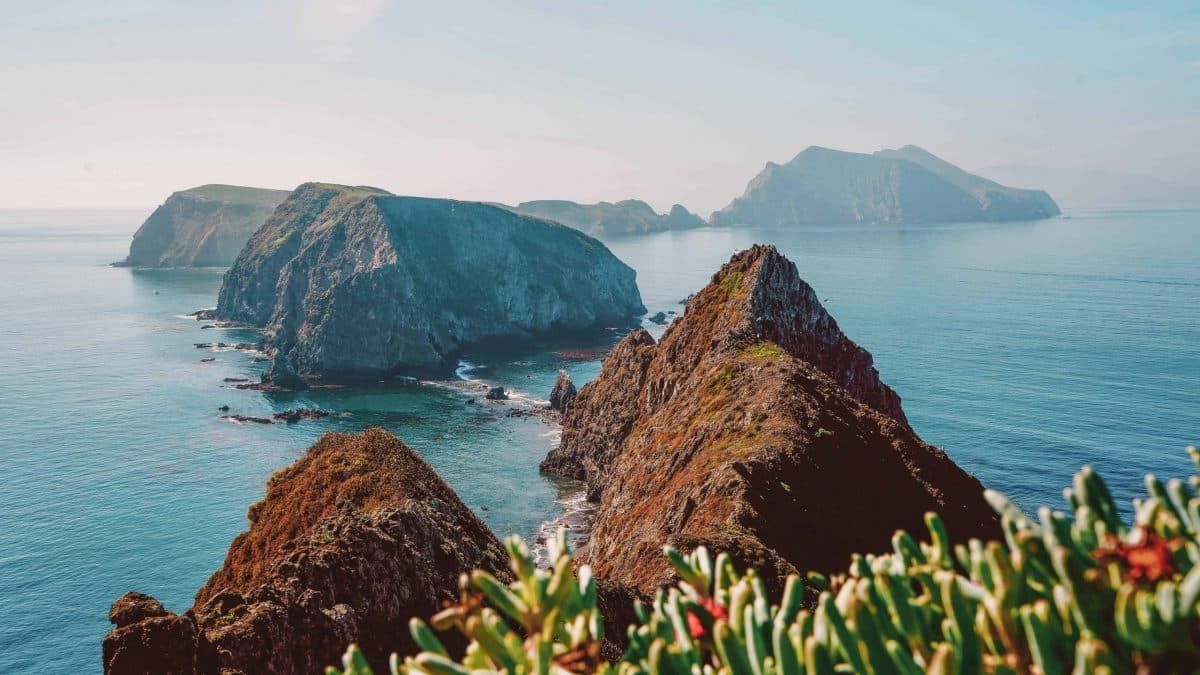
You’ve made it to the last leg of your national parks road trip, congrats! It’s finally time to head to the coast to check out California’s famous Channel Islands.
Since ferries to the islands leave early from Ventura and Oxnard, I’d recommend using your road trip from Joshua Tree to Ventura as an excuse to see some nearby Southern California sights instead of trying to rush to the ferry in time.
Once you arrive in Ventura, you have the option of staying on Santa Cruz Island for two nights or doing two-day trips – one to Anacapa and the other to Santa Cruz – to see more of the islands.
Today is the perfect day to add some detours into your California road trip itinerary, especially since you’ll need to cross through the Los Angeles area anyway.
Here are a few detour options you can make on your way to Ventura.
- Whitewater Preserve – a scenic park in the desert that’s not too far from Joshua Tree.
- Disneyland – You’ll want to get here early if you plan to visit, but this can definitely be a fun stop to break up the long hiking days and time in nature.
- Spend the day around Los Angeles – Read my full list of 100+ Things to do in the city .
- Enjoy a mini Pacific Coast Highway road trip – You can hightail it over to the California Coast from Joshua Tree, and then do a mini highway 1 road trip starting around Dana Point and ending in Ventura. Check out my guide to the Pacific Coast Highway to find out where to stop along the way.
It’s time to choose your adventure. You can either head to Santa Cruz Island today for two nights of camping or just do a day trip to Santa Cruz Island.
I recommend starting with Santa Cruz Island because it’s close to the mainland and there are the most things to do for first-time visitors.
On the island, you can book a kayaking tour to explore the island’s sea caves, go snorkeling in clear waters, spend the day at the beach, or hike around the island.
Today, you’ll either continue exploring Santa Cruz Island if you’re camping there or you’ll do a day trip to Anacapa Island.
Anacapa Island is another Channel Island that’s close to the mainland and offers good views, a touch of history, and some short hikes.
There aren’t any accessible beaches on Anacapa but it’s a nice spot for a picnic and some coastal hiking.
Where to Stay in Ventura: Amanzi Hotel , Waypoint Ventura , Crystal Lodge Motel
Where to Stay on Santa Cruz Island: Santa Cruz Scorpion Campground , Santa Cruz Del Norte Backcountry Campground
Day 13: Ventura to Pinnacles National Park
Distance: 225 miles, 4-hour drive
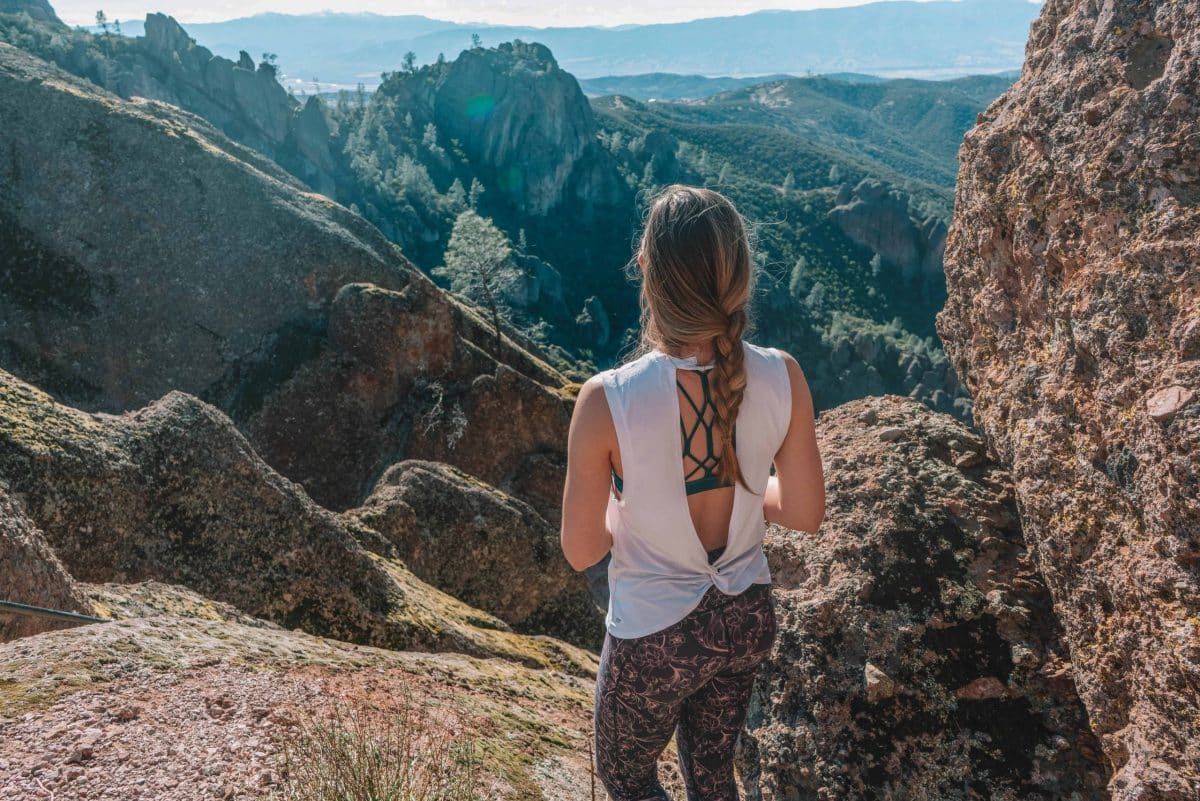
You’ll end your California national parks road trip at the newest national park in the state – Pinnacles!
Pinnacles is a small park so you can easily see a good chunk of its sights and viewpoints in one day.
If you’re driving up from the south, I’d recommend hiking the 8.4-mile High Peaks to Balconies Cave Loop .
This trail gives you the bulk of the park highlights and even lets you explore the Balconies Cave (if it’s open), just make sure to bring a headlamp!
Also, keep your eyes peeled for California Condors flying overhead. They’re the park’s most famous residents and pretty incredible to see in person.
If you don’t have time for an 8-mile trail, there are a number of shorter hikes you can do from the west side of the park as well. The best one is probably the 2.4-mile Balconies Cliffs to Balconies Cave Loop .
Read my full guide to Pinnacles National Park
Where to Stay in Pinnacles National Park
- Camping: Pinnacles Campground
- Hotels: Inn at the Pinnacles , Valley Harvest Inn
Day 14: Pinnacles National Park to San Francisco
Distance: 145 miles, 2.5-hour drive
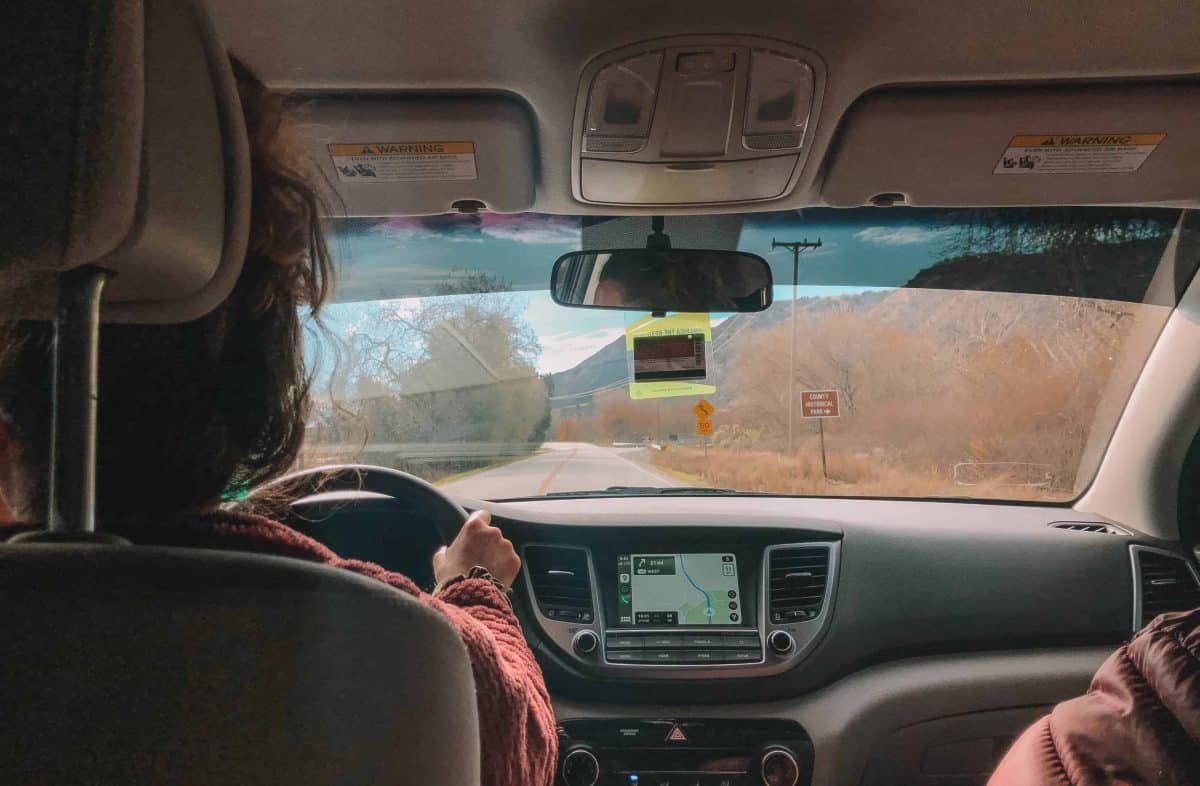
It’s time to head back to the starting point of your road trip today.
Depending on your energy levels, you can just head back to San Francisco to rest up, grab some food, and maybe have a drink to cheers to an epic road trip.
Or, if you want to squeeze in a few more sights, you can stop by Mission Soledad , the Steinbeck Museum in Salinas, and grab some garlic ice cream while driving through Gilroy.
San Jose also has a lot of things to do if you’re looking for a more full day of sightseeing.
Another alternative is heading to the coast and taking the longer but more scenic route back up to San Francisco along Highway 1.
Where to Stay in San Francisco: Stanyan Park Hotel , Omni San Francisco , Argonaut Hotel
California National Parks Road Trip from Los Angeles
If you want to do a national park road trip from Los Angeles, you can just reverse the above road trip itinerary and start from the bottom.
I’d recommend the following order if you’re starting from Los Angeles: Joshua Tree National Park, Death Valley National Park, Sequoia and Kings Canyon National Parks, Yosemite National Park, Pinnacles National Park, and Channel Island National Park.
Other 14-Day National Park Road Trip Variations You Can Do
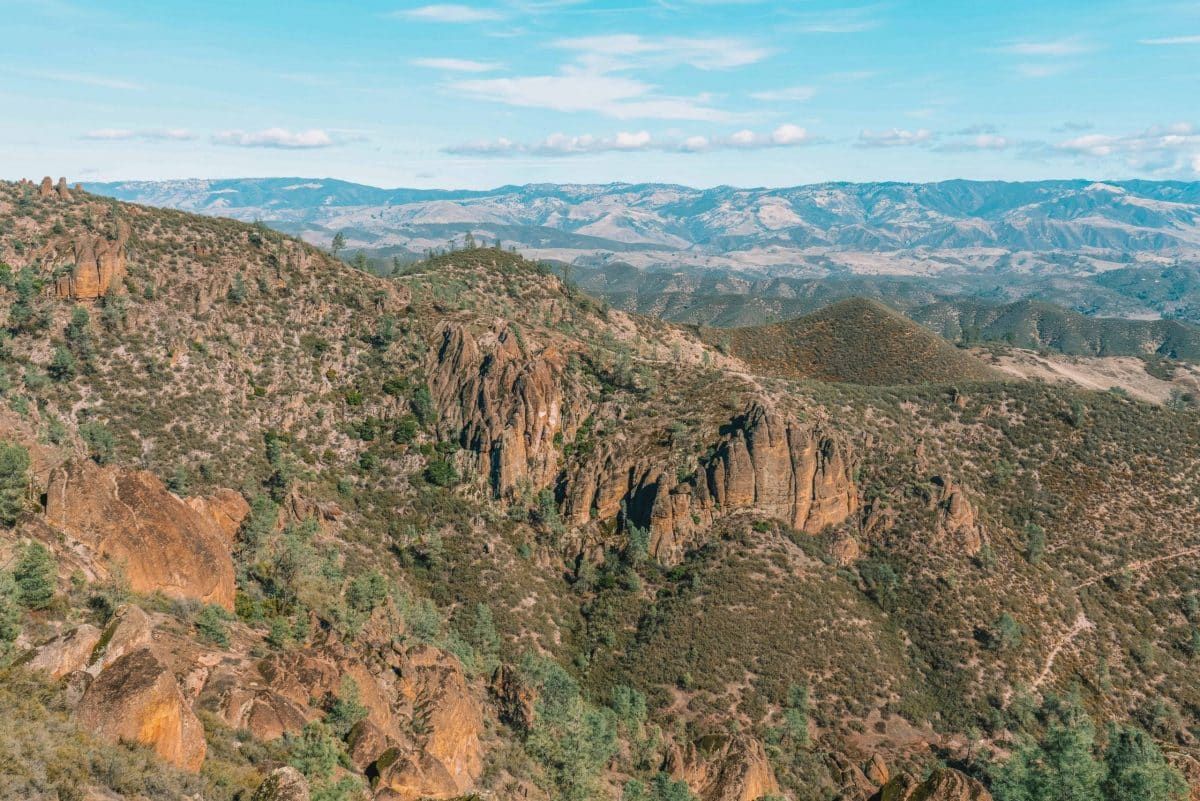
Winter: Redwood National & State Parks, Pinnacles National Park, Channel Islands National Park, Joshua Tree National Park, Death Valley National Park, and Sequoia National Park (if you want to see red sequoias in the snow ).
Summer: Redwood National & State Parks, Lassen Volcanic National Park, Yosemite National Park, Sequoia and Kings Canyon National Park, and Channel Islands National Park.
Shorter Road Trip Variations to see California’s National Parks

5-Day Itinerary
From San Francisco: Yosemite National Park and Sequoia & Kings Canyon National Parks.
From Los Angeles: Joshua Tree National Park & Death Valley National Park.
7-Day Itinerary
From San Francisco: Lassen Volcanic National Park, Yosemite National Park, and Sequoia & Kings Canyon National Parks.
From Los Angeles: Joshua Tree National Park, Death Valley National Park, and Channel Islands National Park.
10-Day Itinerary
From San Francisco: Yosemite National Park, Sequoia & Kings Canyon National Parks, Death Valley National Park, and Joshua Tree National Park.
From Los Angeles: Joshua Tree National Park, Death Valley National Park, Sequoia & Kings Canyon National Park, and Yosemite National Park.
Tips for Planning a National Park Road Trip in California
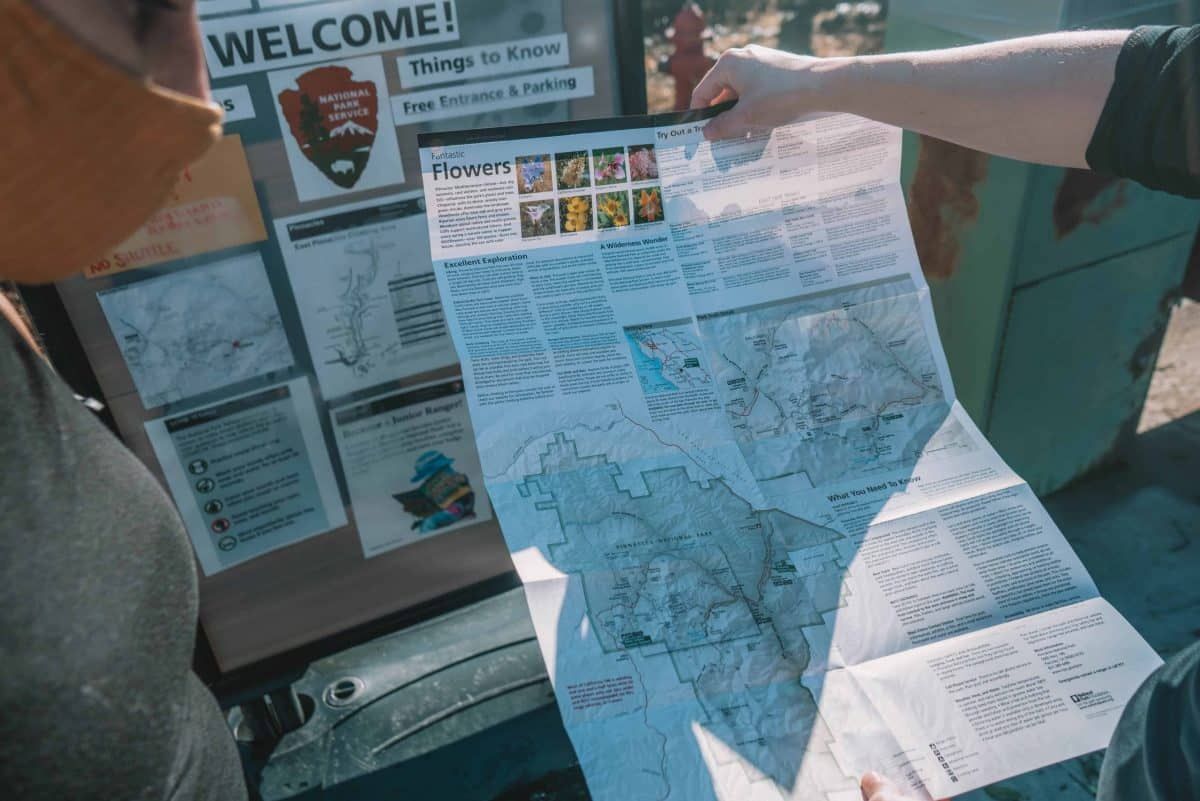
- Double-check the weather and air quality ahead of time – If you’re traveling in winter or early spring, check snow levels and make sure there aren’t any road closures (this is mostly for the Sierras). Wildfires are also always something to keep in mind when you’re doing a California road trip. They can, unfortunately, happen pretty much year-round these days, but it’s especially good to check air quality and any nearby fires in the summer and fall.
- Book things early – National parks are very popular in California, make sure to book your accommodation (especially if you’re staying at campsites or in the parks) at least three to six months in advance.
- Fill up on gas and don’t always expect to have cell service – This is especially the case near the more remote parks like Death Valley, but make sure to fill up on gas when you can. Also, don’t expect a ton of cell service in a lot of the areas around or inside the parks. It’s good to download maps ahead of time so you can access directions even without service.
- The best parts of these parks are outside your car – Although some people visit national parks and barely get out of their cars, the parks in California are best experienced when you’re hitting the trails and immersed in the outdoors. Sure, you might be able to see some nice viewpoints from the road in parks like Yosemite, but it won’t beat getting out on the trail to really take in what these parks have to offer.
- Leave no trace – This is just common courtesy when you’re visiting any place, but please pack out what you brought with you and leave no trace. We want to keep our national parks beautiful for years to come.
What to Pack for Your California Road Trip
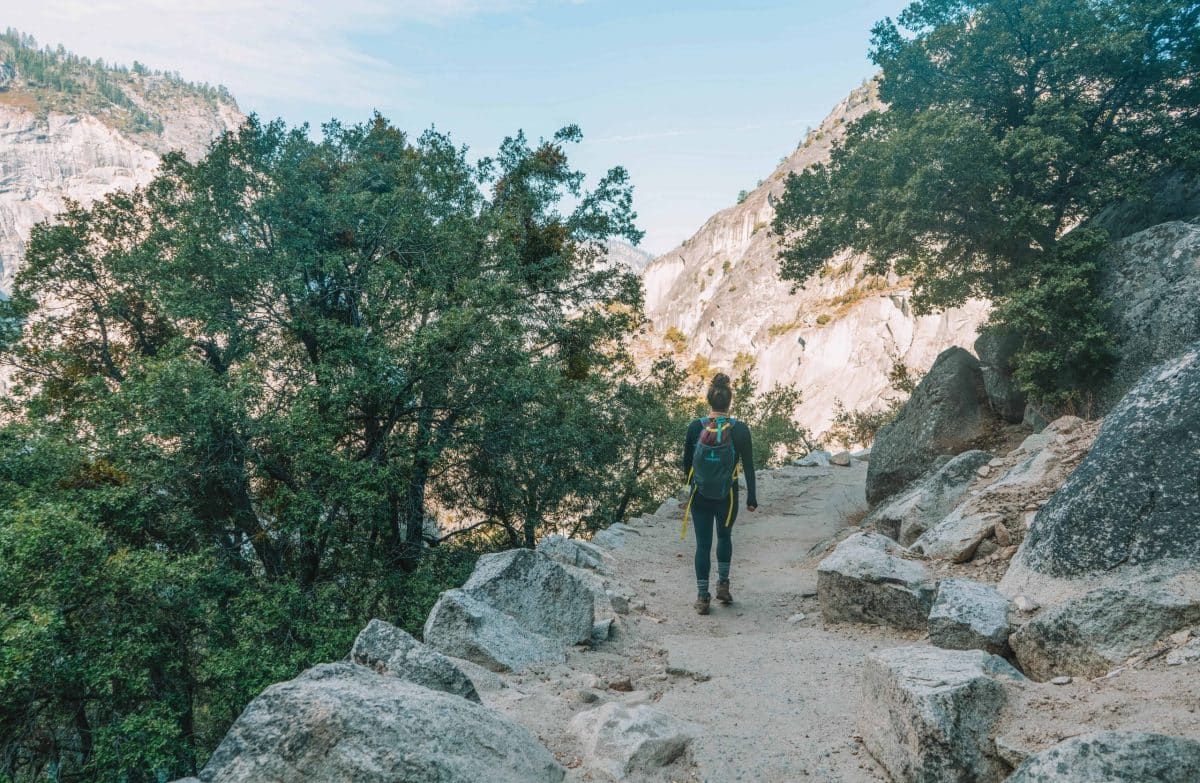
- Driver’s license/registration
- Spotify/iTunes playlists
- Road trip snacks & extra water
- Hat that’s good for hiking
- Daypack for hiking
- Hiking shoes
- Lightweight and moisture-wicking hiking clothes
- Sandals or flip flops
- Good walking shoes
- Bathing suit
- Various tops , shorts , jeans/pants , dresses , underwear , socks , PJs (and at least one super comfy outfit for longer driving days)
- Light sweater
- Windbreaker , puffy jacket , or backpacking poncho
- Beanie
- First aid kit
- Reusable water bottle
- Microfiber towel
- Usual toiletries ( lip balm , hairbrush , hair ties , toothbrush , toothpaste , floss , deodorant , makeup , pads / tampons )
- Downloaded maps/paper maps
- Camera / phone
- Outdoor watch (like a Garmin watch )
- Portable charger / USB cord
- Books or Kindle
- Camping gear (if you plan to camp)
- Travel insurance
ABOUT THE AUTHOR
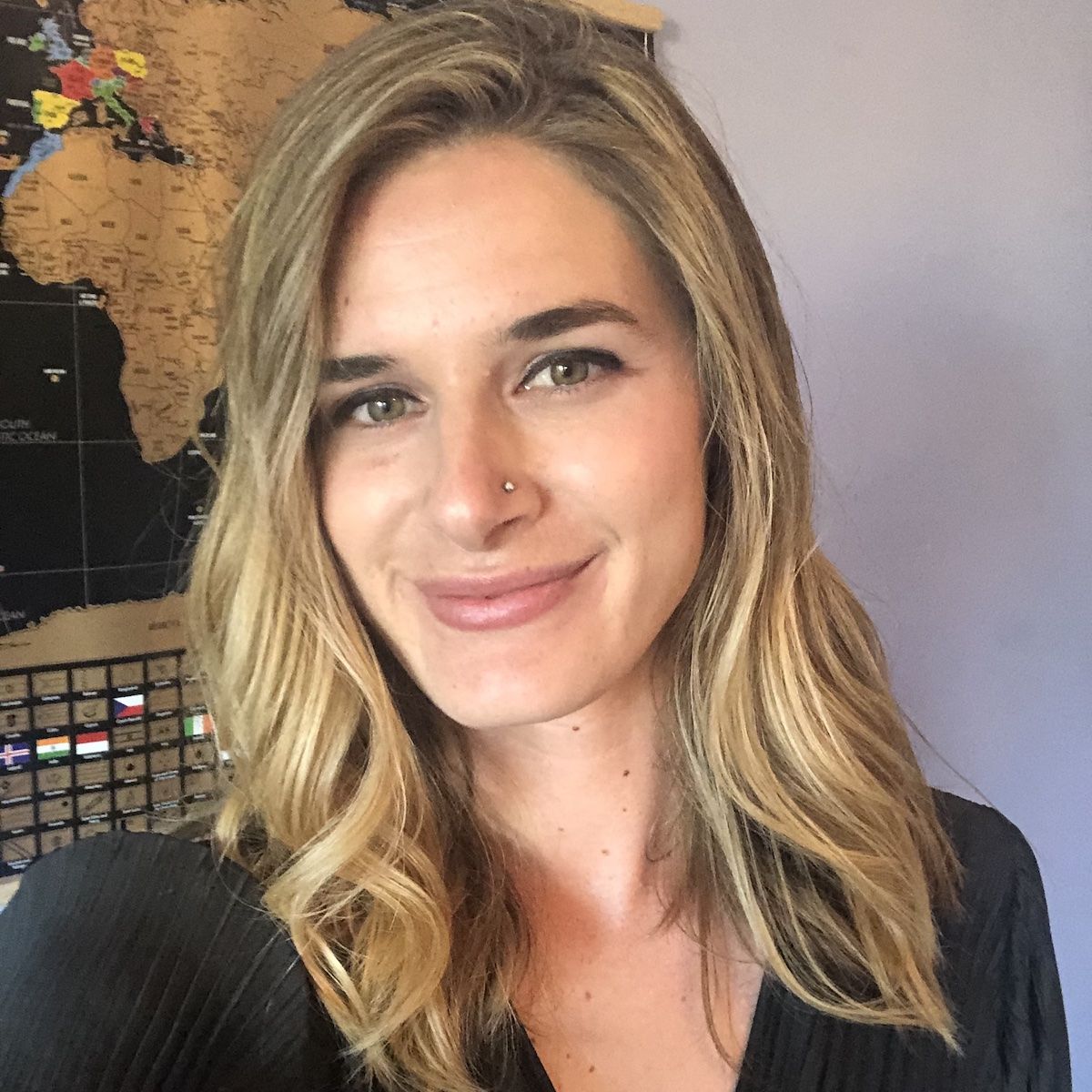
Mimi McFadden Founder & Editor-In-Chief
Mimi McFadden initially started The Atlas Heart in 2013 to write about her adventures abroad. But since 2019, The Atlas Heart has become a love letter to the Golden State. Mimi enjoys sharing her first-hand knowledge and expertise with the places she knows so well and making the most comprehensive travel guides possible. When she’s not hiking and exploring new places in California, she loves to travel abroad, read in her cozy chaise lounge, play basketball, and connect with friends and family over board games. Over her 28 years in California, she has lived in Santa Cruz (18 years), San Diego (5 years), and the San Francisco Bay Area (5 years), where she currently resides.
Looking for more California travel inspiration? Check out these related posts below!
The 30 Best California Breweries to Visit
California State Parks List
California Hot Springs Guide
Best Glamping Spots in California
Best Places to Spend Christmas in California
Most Beautiful Sunflower Fields in California
Most Romantic Getaways in California
Best Lavender Farms in California
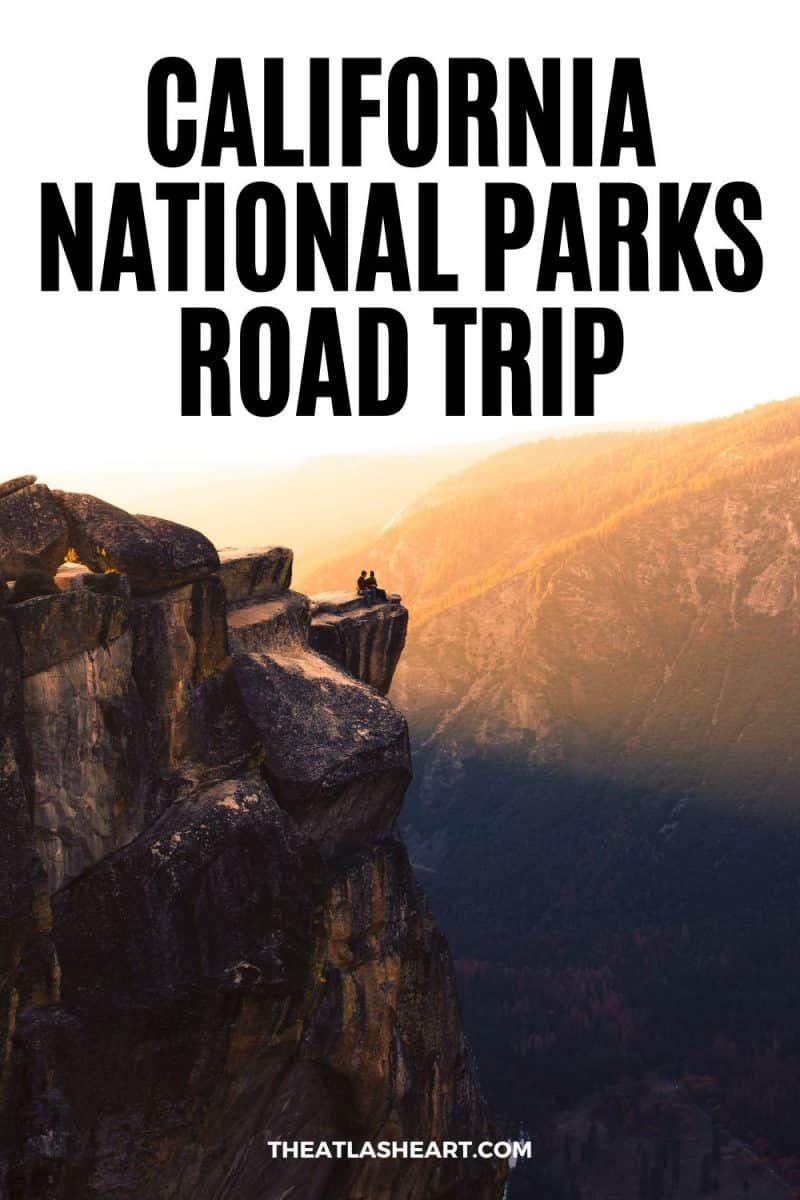
Pin this image for future reference
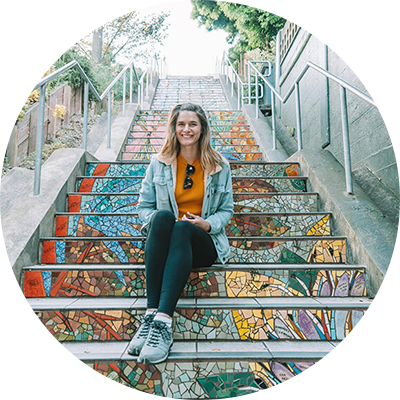
Hi, I'm Mimi! I'm an outdoorsy Californian who has spent over 28 years immersed in the incredible natural beauty that California has to offer. My goal is to inspire others to get out and find their next adventure in California. Whether it’s escaping to an alpine lake in the Sierras, finding peace among the giant redwoods, or road tripping down the PCH, there’s always more to explore in this beautiful state.
Leave a Comment Cancel reply

The Atlas Heart is a California travel website dedicated to showing you the best of the Golden State from a local perspective.
As an Amazon Associate, I earn from qualifying purchases.
©2024 The Atlas Heart
Complete California National Parks Road Trip Itinerary
To support this website, at no extra cost to you, we may earn revenue on links within this post. As an Amazon associate, I earn from qualifying purchases.
Do you want to take an epic California National Parks Road Trip? I’ve got you covered
If you’re planning a road trip to California’s national parks, you’re in for a treat. I’ve personally taken this trip, and let me tell you, it’s an experience of a lifetime.
As someone who loves exploring the great outdoors, California’s national parks are some of the most breathtaking and diverse in the country. From the towering sequoias of Yosemit e to the rugged coastline of Redwoods National Park , there’s something for everyone on this trip.
But before you hit the road, plan ahead and make sure you have everything you need for a safe and enjoyable journey. In this article, I’ll share some tips and insights based on my own experience, so you can make the most out of your California national parks road trip. So, let’s get started and start planning your adventure!
Did you know that California has the most National Parks out of any state ? It makes sense when you see just what parks are in the Golden State, as well as the size and geographic variety of the state. While Texas and Alaska may be bigger, California is by far the largest state if you’re measuring North to South . Which is what gives it the variation in climate and geology. I know, that’s getting a little nerdy! But if you want to see the variety, you can in this California National Parks Road Trip.
This itinerary covers the 8 National Parks in California . However, depending on the time of year you visit, it may not make sense to hit them all in one trip. Use this as a guide to determine when and how you want to visit California. I’ll include suggestions on how to break this into more than one trip.
I did build this as a round trip from San Francisco. You could easily do this trip out of Los Angeles and start at the Channel Islands or go west and start at Joshua Tree. It’s also easy to start in San Francisco and end in Los Angeles. However, I know a round trip from one destination is usually a cheaper flight, which is why I created this as a circle tour.
Table of Contents
How to Plan a California National Parks Road Trip
To start a road trip this massive, it’s helpful to have a route planner. This could be Google Maps, where you can input multiple stops along a trip. However, I prefer Roadtrippers . With Roadtrippers Pro, I can add as many waypoints (or stops) as I’d like, and it automatically inputs the stop in the best place along the route. And if I don’t like it there, I can easily move stops around.
I used Roadtrippers to create this itinerary here, with some small modifications. My goal is no more than five hours on the road. However, California is vast, so there is a six-hour day in here. Plus, keep in mind, road conditions and estimates can vary.
You can learn more on how to use Roadtrippers here .
Moon Guide’s USA National Parks is another essential to getting the details of every park. The NPS site is good as well, but Moon Guides will tell you the best hikes, the top 3 sites in the park, what to do if you have one day, etc. It was an essential guide for some of the hikes I did on my recent trip to California.
Finally, you’ll want to grab your National Parks Annual Pass, the America the Beautiful pass. This will get you into all the National Parks in California. At $80, for the whole family I might add, this pass will pay for itself with visits to two of these destinations.
How to get from park to park
We’re talking an epic road trip here. For this trip, I am mapping this out as if you have a car, RV, or plan to do some van camping in California .
I recommend camping, as it is a beautiful opportunity to connect with the natural beauty that is the National Parks. You could even rent something such as an Escape Campervan so you’re not pitching a tent or setting up an RV every night.
I realize camping is not for everyone, so I also have lodging recommendations in each location as well. These range from cabins in campgrounds, to home rentals , and park accommodations where possible.
Ready to hit the open road? Let’s go!
Download my Roadtrippers map for every California National Park here .
🤩 Save $5 off Roadtrippers Plus Membership with my code BTR5QTP
Day 1 – San Francisco
- Start: Home
- End: Sonoma Valley
- Miles: 80 miles
If you’re flying in, you’re likely not landing until the afternoon. By the time you get off the plane, get your rental vehicle, and load up on snacks or groceries, it doesn’t leave you with a lot of time to get to the Redwoods.
If you do get in early, head straight to Day 2.
Why not cross the Golden Gate Bridge and spend some time in Sonoma County instead? Visit wine country and grab a bottle or three for the road . Don’t drink and drive of course. This is for your evenings around a campfire.
Must See: Vineyards, everywhere. It’s lovely driving through this farmland and seeing every vineyard, even small homestead ones.
Where to Stay: Vintner’s Inn is everything you’d expect an inn to be in the middle of wine country. Located on a vineyard trail, guests receive a free bottle of wine upon arrival.
For camping in the area, we stayed at Bodega Dunes. There are a few different options here, with a boardwalk to the beach.
Alternate Stay: Stay in Point Reyes National Seashore at Samuel P Taylor State Park. Cabins and camping is available and it’s not too far to visit the seashore.
Where to eat: These amazing restaurants in Healdsburg are a hidden gem and are just a few miles from Santa Rosa.
Day 2 – Redwoods
- Start: Santa Rosa
- Miles: 259 miles
National Park: Redwood National Park and State Parks
On your way to the Redwood National Park, take a slight detour and drive through the Avenue of Giants. You won’t regret this scenic drive with plenty of stops to wander the giant Redwood trees. It’s about 40 miles long. Redwood trees are the tallest trees, while later in the trip you’ll view Sequoias, the biggest by volume.
The Redwoods National Park requires no entrance fee, however for some of the activities you do need a reservation. This ensures the area isn’t overcrowded. Highlights include visiting Elk Meadow and strolling the beach just inside the park.
Must See: Hiking through Fern Valley was one of my favorite things we did during our trip to Redwoods. During peak season it does require a reservation permit to visit. Also, keep in mind the drive is somewhat steep and narrow to climb. Four-hour permits are available at 8:00 am and 1:00 pm. From talking to the rangers, essentially you are allowed in at any time during your reserved time slot, so you could do this on the same day as you arrive. Alternatively, you could go first thing on day 3 and then use the remainder of the day to drive to Lassen.
Where to Stay: Sue Meg State Park was stunning and just outside the Redwoods area. The park is filled with tall pines and paths lead out to a rocky beach overlook area. Cabins are available if you’re not camping.
Day 3 – Lassen Volcanic National Park
- Start: Orick
- End: Manzanita Lake
- Miles: 223 miles
National Park: Lassen Volcanic National Park
Lassen Volcanic is a hidden gem on your national park road trip. Because it’s tucked away in Northern California, it often gets overlooked. The good news is it makes it a great place to get away and have some hikes to yourself, even in summer. A lot of this park does close for winter, and even one of the trails we wanted to do wasn’t open yet in June. Snow stays on the ground and we even hiked while it was snowing.
Lassen Peak is not the tallest mountain in California or even the US. But it does clock in at over 10,000 feet and makes for an impressive visit. It is an active volcano, but don’t expect molten lava pouring from the mountain. the US Geological Society believes the volcano is in a period of subsidence, or a less active period.
Must See: While the Bumpass Hell trail is most mentioned, for its hydrothermal and sulfur mud pool activity, it may remain closed until mid to late June. We enjoyed Kings Creek Falls Trail . This trail took us through a meadow, still dotted with snow, to a mountain climb. The trail circles around to a rocky and beautiful waterfall.
Note that this area was devastated by the Dixie fires in 2021. You can still see where many burnt trees are standing. Don’t let this deter your visit however as it’s a striking contrast from one side of the trail to the other.
Where to Stay: Manzanita Lake Campground, both camping, and cabins available. Manzanita also has showers, laundry, and a decent general store for stocking up.
Day 4 – Lake Tahoe
- Start: Manzanita Lake
- End: Lake Tahoe
- Miles: 216 miles
While technically this is not a national park, I included Lake Tahoe to break up the drive. Your California National Parks Road Trip has long drives these first few days. You could skip over Lake Tahoe and head straight to Yosemite. That would be about a 7-hour drive through the Sierra Nevada mountains. While Lake Tahoe isn’t a direct path between the two parks, it does break it up nicely and you still get extraordinary hikes and views.
Must See: Emerald Bay is part of Lake Tahoe and seemingly where a lot of the action happens. We hiked into the main area, but you can drive as well. During the summer it is busy with lots of activity. Our hike began at our campground, making it that much more convenient. We kayaked near Fannette island, toured the Vikingsholm grounds, and enjoyed the clear emerald water views.
Where to Stay: Emerald Bay State Park and Eagle Point campground was an absolutely perfect campground. Our site was steps from the hiking trail, allowing us to park the van and explore immediately. They do close in early September and fill up in the summer. be sure to book early.
For non-campers, I would look at any of the stunning home rentals here . Many cabins have extraordinary lake views.
Day 5 – Yosemite
- Start: Lake Tahoe
- End: Yosemite Valley
- Miles: 165 miles or 195 miles
National Park: Yosemite National Park
Yosemite National Park has 4 entrances. I would recommend the Big Oak Flat Entrance on the northwest side. if you map to the valley, however, it may take you through the Tioga pass entrance on the east side. Either works, but we’re all about maximizing our time in the parks and not on the road.
Since we’re only allowing 2 days on this itinerary, I’m focusing on the highlight of Yosemite National Park, in the Yosemite Valley.
Must See: If you feel up for squeezing in a hike after arriving at the park, head to the Lower Yosemite Falls. This flat easy 1-mile hike will give you a view of the lower falls and plenty of photo ops. You could also head over to the Mist Trail at Vernal Fall.
Take either today or the later part of tomorrow and visit the history of the Yosemite park in the museums located in the valley. See the valley Visitor Center, Yosemite Museum, Ansel Adams Gallery, and the Indian Village of the Ahwahnee, all steps from each other.
Where to Stay: You can’t go wrong with any of the accommodations within the valley. Choose from Yosemite Valley Lodge, The Ahwahnee, or Curry Village for luxury accommodations or cabins. Housekeeping Camp has tent cabins for a glamping experience. The valley also has tent and RV camping at Upper Pines, Lower Pines, North Pines, and Camp 4. Note Camp 4 used to be first come first serve, but during peak season is available by a daily lottery, one day in advance . If you’re willing to chance it, this is a perfect base camp for your hike to upper Yosemite Falls .
Day 6 – Yosemite
- Start: Yosemite Valley
- Miles: 0 miles
You need at least 2 days in this popular park, especially if you want to get a good hike or two in. Today, tackle all or half of Upper Yosemite Falls . It is a strenuous hike in the 2nd half with steep rocky inclines. If you do just the first half, you still get rewarded with stunning views of the falls. The full hike will take you to the top of the mountain with more once-in-a-lifetime views of El Capitan, but it’s not for everyone.
You could also check out these guided hikes in Yosemite .
If you didn’t get to Mist Falls yesterday, do that one today. Or hike an easier terrain at Mirror Lake.
Not up for a hike today? Take in views of Half Dome, Bridal Veil Falls, and Yosemite Falls, by riding the free bus transportation throughout the valley floor, stopping at various scenic points.
Where to Stay: Spend another night here and relax!
A note about the timing in this trip. Depending on the time of year, you may want to exclude Death Valley and Joshua Tree National Parks due to the extreme heat in the summer months. if you’re traveling in the later winter months, you may find sections of the northern parks closed. Do some research on the National Park Service website to find what is open and when. You could also split this trip into separate times of the year and start in Southern California for the following parks.
Day 7 – Yosemite
- End: Furnace Creek
- Miles: 303 miles
National Park: Yosemite National Park and Death Valley National park
While today you will end up in Death Valley, depending on the time of year and the heat, you may not want to arrive until the evening when the heat has abated. Plan to drive and explore more of Yosemite National Park and arrive late.
Today you’ll head out of the park towards the Tioga Pass entrance. This scenic drive passes Tuolumne Meadows , Tenaya Lake, and Olmsted point. Tuolumne Meadows is a popular place to spot wildlife and wildflowers. Tenaya lake as well as Cathedral Lakes, and Gaylor Lakes also make for scenic reflective views as well as easy to strenuous hikes.
Finally, you’ll head towards Death Valley, which is about a 4-hour drive from the Tioga pass Entrance Station.
Must See: Nighttime in Death Valley offers some of the best stargazing in America . Designated as a Gold Tier Dark Sky Park by the International Dark Sky association means you won’t miss a thing by arriving here at night. Death Valley has a Dark Sky Festival in the later winter or spring months. There are night ranger programs and even full moon night hiking at Mesquite flat Sand Dunes or Badwater Basin. Check out the park’s night explorations here .
Where to Stay: the oasis at Death Valley is a privately owned historic luxury property with pool views overlooking the desert. however, for more unobstructed night sky viewers, I’d recommend Furnace Creek Campground which is open year-round. Furnace Creek, as opposed to the other first-come-first-served campgrounds, accepts reservations.
Day 8 – Death Valley
- Start: Furnace Creek
- End: Twenty-Nine Palms
- Miles: 236 miles
National Park: Death Valley National Park & Joshua Tree National Park
Did you know that Death Valley is below sea level, making it the lowest point to visit in the national parks? Today explore what you can of Death Valley before driving your California National Parks road trip to Joshua Tree. By making your way south from Furnace Creek, you’ll hit the highs and lows of Death Valley.
Must see : Just south of Furnace Creek is Zabriskie Point, with an overlook of the badlands and unique erosion and winds that shape the desert. From there, keep traveling south to Badwater Basin, the lowest point in North America. Badwater Basin is 282 feet below sea level. Badwater’s salt flats provide another highlight of what the variety in Death Valley offers.
Where to Stay : tonight stay in Twenty Nine Palms or Joshua Tree. Joshua Tree National park only has campgrounds. black Rock or Cottonwood Campgrounds are the most developed. Outside of the park check out the Desert Lily Lodge for more dark sky views.
If you can and have the time, this would be a great time to check out all the cool things to do in San Diego .
Day 9 – Joshua Tree
- Start: Joshua Tree
- End: Ventura
- Miles: 224 miles
National Park: Joshua Tree National Park
Wake up and explore Joshua Tree National Park from the north or west entrance stations. Either will take you along Park Boulevard for the more popular sections of the park. If you can enter through Oasis Visitor’s Center and exit through to the Joshua Tree Visitor’s center, you’ll explore all of Park Boulevard.
Must See: Hidden Valley has more than 400 places to climb and clamor over the various rock formations. With 8,000 climbing routes, it’s a rock climbers’ paradise. Even if you’re a beginner, you can join a beginner rock climbing course . And if you don’t want to climb, you can still pretend you are a rock climber by walking the Barker Dam Nature Trail.
After exploring Joshua Tree, head west towards the Channel Islands.
Where to Stay: Emma Wood State Beach is near the ferry that will take you to the Channel Islands National Park.
Day 10 – Channel Islands
- Start: Ventura
- End: Sequoia
- Miles: 221 miles
National Park: Channel Islands National Park
Wake up in Ventura and explore the Channel Islands National Park. You cannot drive to the Channel Islands and there are no cars on the islands. If you want to camp, you can pack in for primitive camping on the island. Otherwise, boats leave at 4 pm allowing you enough time to drive to Sequoia next.
There are five Channel Islands in total. The ferries take you to Anacapa or Santa Cruz Islands year-round, and to Santa Rosa during the summer months. A popular and easy hike is the one to Inspiration Point on Anacapa Island . This is where you’ll see the Anacapa Lighthouse and spectacular views and photo ops from the higher elevation.
Must See: The sea caves on Santa Cruz Island are a perfect place to explore by kayak. For kayak rentals and tours, check out the Channel Islands Kayak Center . Rates are very reasonable for a full day at $35 for a single kayak.
Where to Stay: You’re on your way to Sequoia once you depart the boat. Stay in one of the many campgrounds between Sequoia and Kings Canyon, or check out the Sequoia National Forest Campgrounds. The Silver City Mountain Resort is another perfect cabin getaway too.
Day 11 – Sequoia & Kings Canyon
- Start: Sequoia
- End: Kings Canyon
- Miles: 60 miles
National Park: Sequoia National Park and Kings Canyon National Park
Because they border each other, Sequoia and Kings Canyon are often lumped together as one park, but still operate separately. Today start out at the south end of the park and make your way to Moro rock for an overlook of the park. It is a strenuous hike, but only a 1/2 mile round trip and mostly stairs with guard rails. There are 380 steps up (and down).
Must see: The top sight in Sequoia National Park is the giant sequoia trees, and you won’t go wrong doing the largest tree, General Sherman tree and surrounding trails. You’ll find other tall trees along the Congress Trail. If you have time, stop into the Forest Museum to learn more about what makes these the largest by volume trees and the sturdiest.
From here, make your way north along the Generals’ Highway, through the Sequoia National Forest, and on to Kings Canyon National Park.
In Kings Canyon, do the short trail that leads to the General Grant tree . Take Kings Canyon Scenic byway and stop at Canyon View for amazing views of Kings Canyon.
Where to Stay: Grants Grove has campsites and cabins available.
If you want to do just Sequoia and Yosemite on a trip, follow the route here .
You can grab another national monument by visiting the Manzanar National Historic site . It’s west of Sequoia and northeast of Death Valley.
Day 12 – Pinnacles
- Start: Kings Canyon
- End: Pinnacles
- Miles: 190 miles
National Park: Pinnacles National Park
Get an early start and you can get to Pinnacles National Park by noon. Alternatively, you could leave the night before and wake up in Pinnacles. Pinnacles National Park is the home of the California Condor, an endangered species. If you are lucky, you’ll see them soaring above in on the high peaks trail. A strenuous, 7.2-mile trail if you complete the whole thing, you may want to start this in the morning when you’re fresh.
Pinnacles is also noted for its cathedral-like rocky spires. Many of the hikes here are moderate to strenuous. If you’re not a hiker, however, you can still drive from the east entrance to overlooks at Peaks View and the trailheads at Old Pinnacles and Bear Gulch to view the ancient and intricate geological formations.
Must See: Bear Gulch Cave has a self-guided path that weaves between the lodged boulders. These boulders create gulches, caves, and caverns. Be sure to bring some light beyond your cellphone flashlight. The trails from the Bear Gulch Day Use area is about a 2.2-mile moderate hike.
Where to Stay: Tonight stay in the Pinnacles campground if you’re van camping on your California National Parks road trip. Keep in mind this campground fills up fast so make your reservations early. Pinnacles has an east and a west entrance and they do not connect by road. If your activities are on the east side, and you want to avoid driving all the way around the park, you may want stay the night in Hollister, about 34 miles north. The good news is that puts you closer to your final destination.
Day 13 – San Francisco
- Start: Pinnacles
- End: San Francisco
- Miles: 134 miles
If you’re doing some of the more strenuous hikes and arrived mid-day yesterday, you’ll want an extra day in Pinnacles. If not, make your way to San Francisco for the final leg of your journey.
Many flights east leave late in the day in San Francisco so that you can have a red-eye home. If like us, you take a later flight, you’ll have time to explore the city.
Note, however, that if you’re renting a campervan for your California National Park road trip, you may need to return it early in the day. This can also play a factor in your overall driving and touring plans.
We returned our van early in the day and then took an Uber to the city to explore. We rented baggage space at a local hotel using the Bounce App . After exploring, we took an Uber to the airport for our 9 pm flight.
Must See: There are a lot of things to see and do in San Francisco if you want an extra day, to spend, go for it. These are just a few of our favorites.
- Ghiradelli sign
- Fisherman’s Wharf
- San Francisco Trolley
- The Painted Ladies
- Lombard Street
If you do decide to take a Day 14, an extra day on this trip, cruise up the California coast on the Pacific Coast Highway, Bixby Bridge, and Big Sur for a scenic route.
2 Week California National Parks Road Trip
There you have it. 2 weeks to see every California National Park on a road trip. It’s a lot and only covers the highlights of each park. But if you’re on a mission with limited time, this will do it!
On our California adventure, we did 11 days covering more days in the parks. Our trip looked like this:
- Day 1 – Bodega Dunes Campground
- Day 2 – Redwoods – Sue meg Campground
- Day 3 – Lassen – Manzanita Lakes Campground
- Day 4 – Overnight in Sierraville
- Day 5 – Lake Tahoe – Emerald Bay Campground
- Day 6 – Drive to Yosemite – Groveland, CA
- Day 7-8 – Yosemite
- Day 9-10 Sequoia & Kings Canyon
- Day 11 – Santa Cruz and depart San Francisco
We enjoyed a lot of scenery and hikes on this trip, as well as many bucket list destinations.
Alternate Itineraries
Here are a few other California National Parks Road Trip itineraries you could do in fewer days. or take these itineraries and spend extra time in places such as Yosemite, Sequoia, or the Channel Islands.
Northern California National Parks Round Trip Route:
- San Francisco
- Kings Canyon & Sequoia
Lost Angeles to San Francisco Route:
- Los Angeles
- Joshua Tree
Southern California National Parks Round Trip Route:
- Death Valley
- Channel Islands
When to go on a California National Parks Road Trip
With a trip this size, it’s hard to say when the right time to go to California would be. Too early in the spring, and some sites may still be closed due to snow. Some rentals will tell you not to visit Death Valley in the summer. And fall may see some of the campgrounds closed, although crowds will be fewer.
Personally, I think if you’re going to visit all the California National Parks on your road tri p, spring or fall would still be the best time to do it. You may sacrifice some trail and campground closures, but you’ll still see a majority of the highlights with fewer overall crowds.
What California National Parks Allow Dogs
Service animals are always allowed. Dogs are usually allowed in the campgrounds. However they will not be allowed on most of the hiking trails.
How much does it cost to visit California’s national parks?
The cost of visiting California’s national parks varies depending on the park and the activities you want to do. Entrance fees range from $10 to $35 per vehicle, and camping fees range from $15 to $35 per night. Some activities, such as guided tours or ranger-led programs, may also have additional fees.
Which national parks are worth visiting on a California road trip?
Some of the most popular national parks in California include Yosemite, Joshua Tree, Redwood, Sequoia, Kings Canyon, and Death Valley. Each park has its unique features and landscapes, so it’s worth researching each one to determine which ones are the best fit for your family.
When is the best time to visit California’s national parks?
The best time to visit California’s national parks depends on the park you’re planning to visit. Generally, spring (March to May) and fall (September to November) are the best seasons to visit as temperatures are mild, crowds are smaller, and there are fewer bugs.
How long does a California national parks road trip typically take?
The length of a California national parks road trip varies depending on the number of parks you want to visit and how much time you have. A typical itinerary can take between one and three weeks.
What should we pack for a California national parks road trip?
It’s important to pack for all weather conditions and activities, including comfortable walking shoes, sunscreen, hats, layers, and waterproof gear. It’s also a good idea to bring a first aid kit , insect repellent, and plenty of water and snacks.
Are there guided tours available in the national parks?
Yes, many of the national parks offer guided tours led by park rangers or private tour companies. These tours can be a great way to learn more about the park’s history, geology, and wildlife.
Tonya Denmark of Detail Oriented Traveler's Favorite Resources
✈️ my favorite way to check flights.
Skyscanner is a great way to check all flights and create watch lists for a change in flight prices.
🏩 My choice to check hotel prices
Booking.com has the most extensive list of hotels.
🏠 My go to for the Best Home Rental site
VRBO has better support for home rentals. I recommend using them.
👨👩👧👦 My absolute Best Tour Booking Site
Viator allows you to book now and pay later, plus has free cancellation.
🎠 My Go to for the Best Attractions Pass
Go City all inclusive passes provide extraordinary value
Read my review of Go City Here.
Best Travel Insurance
Travel Insurance Master gives you quotes from a variety of insurance policies so you can pick the best one for you.
Best way to store your luggage
Luggage Hero is the perfect way to find storage options when you are touring a place for the day.
What's the best way to check rental car prices?
Discover Cars is my choice for trusted ratings and no hidden costs.
Best Travel Planning Guide
I have a comprehensive travel planning guide that you can buy here. Use code: WELCOME for 25% off.
About The Author
Tonya Denmark

California National Park Road Trip & Itineraries
Yosemite Road Trip and Beyond!
Summer will be here before you know it – the long days of sun-filled warmth and possibility radiating from the soles of your sandals to the tip of your sun hat. The smell of sunscreen, and best of all, the sound of the key in the ignition and a car packed with the essentials for adventure.
It’s time to start planning that summer national park road trip! Goodbye to the same four walls we’ve been staring at for months. Goodbye to urgent deadlines, the growing pile of demands, and the stale routines that we promised ourselves months ago we would kick. Hello to a Yosemite road trip and to the freedom of the open road and national parks – America’s Best Idea.
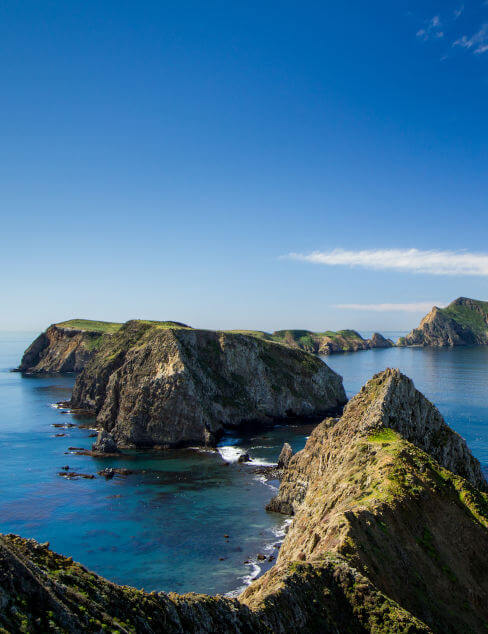
Think about it.
California has nine — count ’em NINE — different national parks, more than any other state. That’s plenty to keep everyone busy for a whole host of summers. And that doesn’t even count 18 national monuments, over 270 state parks, the miles of coastal highway and more.
On a California national parks road trip, you can visit everything from one of the hottest dessert environments on earth at Death Valley National Park , to the island national park with world-class marine exploration at Channel Islands National Park . There are volcanic mountains ( Lassen Volcanic National Park ).
Photograph the distinctive trees and rock formations at Joshua Tree National Park . Wander through the cobblestone cliffs at Pinnacles National Park. Stand in awe below the most massive trees in the world in Sequoia and Kings Canyon National Parks and visit the tallest trees at Redwoods National Park .
And naturally, you can’t visit California’s National Park system without stopping in the crown jewel of them all, Yosemite National Park. The park is so beautiful that people travel from around the world to see the towering granite cliffs and waterfalls.
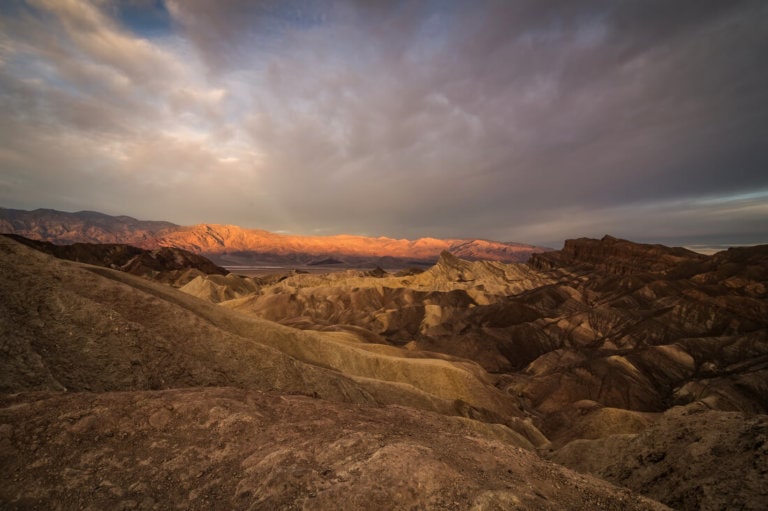
There is so much to do in California, you won’t be able to get to all of it in one trip unless you have much more time than most. And take our word for it, each of these destinations is so rich and so unique that they are worth slowing down for.
Leave time to follow your curiosity. Linger in the places that bring you the most joy. Soon find yourself making plans to return again next year to revisit your favorites, and become inspired by new spaces.
The key to an epic road trip is balancing the time in your vehicle on the road, and the time you spend actually exploring the national parks. Make sure you’re not so focused on your checklist that you miss out on discovering all there is to see in each destination.
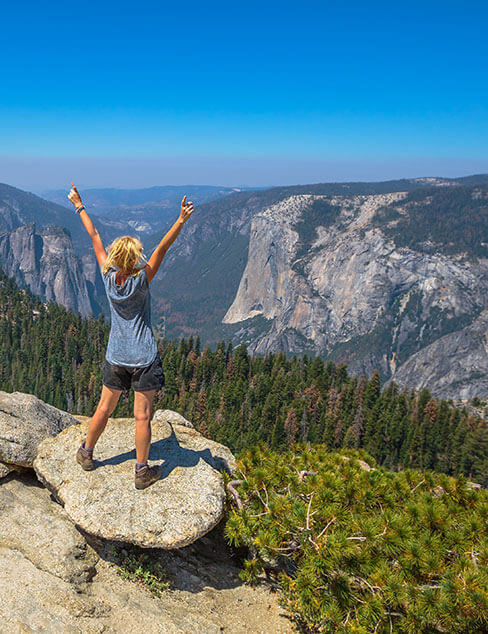
The One Must-See National Park
If you had to pick just one national park to road trip to this summer, it would have to be Yosemite.
The renowned park ranger, Carl Sharsmith was once famously asked what he would do if he only had one day in the park. His answer: he would sit by the Merced River and cry. That’s because he spent a lifetime exploring and discovering every nook and cranny of this magical place as a Yosemite National Park Ranger. So, in case you were wondering if there is enough to do, the answer is yes.
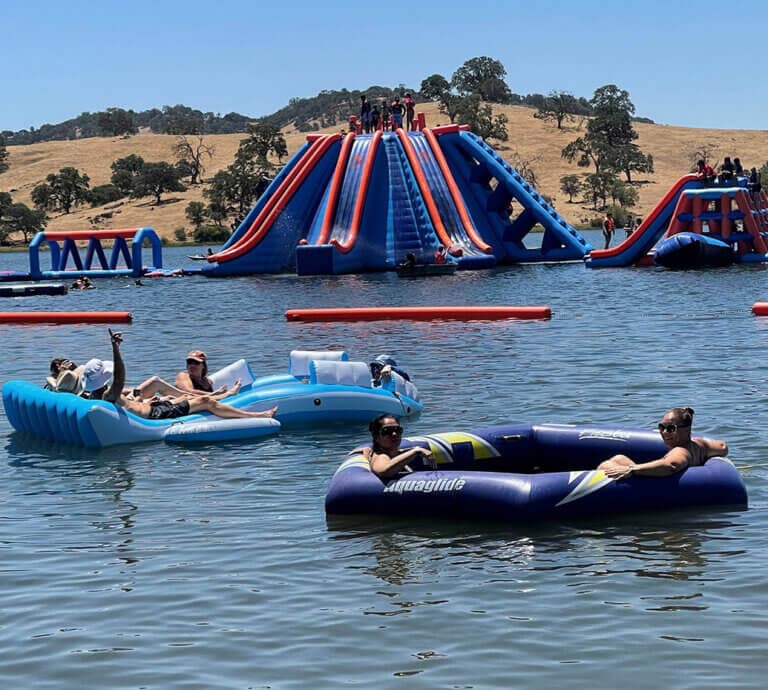
There are spectacular historic and cultural locations. You could spend three days alone following in the footsteps of the famous naturalist John Muir on his first visit to Yosemite.
- Start that route in Gilroy, the Garlic Capital of the World.
- Cross Pacheco Pass.
- Take the back roads through welcoming small towns like Snelling, Coulterville, and Greeley Hill on your way into Yosemite filled with a wide array of lodging and dining options.
You can also break up your drive from the Bay Area with a stop at Lake McClure and Lake McSwain . These are beautiful places to camp, fish, and enjoy some of the area’s “˜off-the-beaten-path’ activities. Take a lap at Exchequer Mountain Bike Park ““ a 700-acre park with views of Lake McClure dedicated exclusively to mountain biking. Cool off at the Splash and Dash Aqua Park .
Yosemite is one of the most popular parks in California, and its popularity is growing. You’ll want to plan for your visit, so make sure you’re signed up for the Yosemite.com newsletter to get the best and most current information as well.
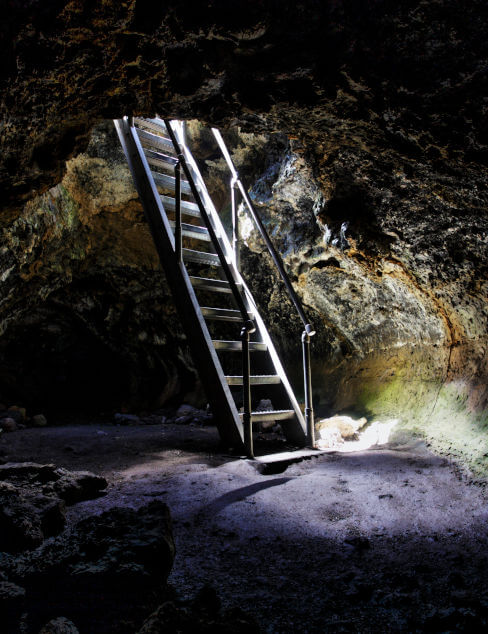
California National Park Road Trip Loops
Given its location in the center of the state, Yosemite is also an essential part of any California National Park loop trip. Making the scenic trip over Tioga Pass is the ideal, and most scenic way to cross the Sierra Nevada. If you have two weeks or more, and you’re looking for some longer loops, check out these itineraries. Just remember to take your time and linger in the places that are bringing you the most joy.
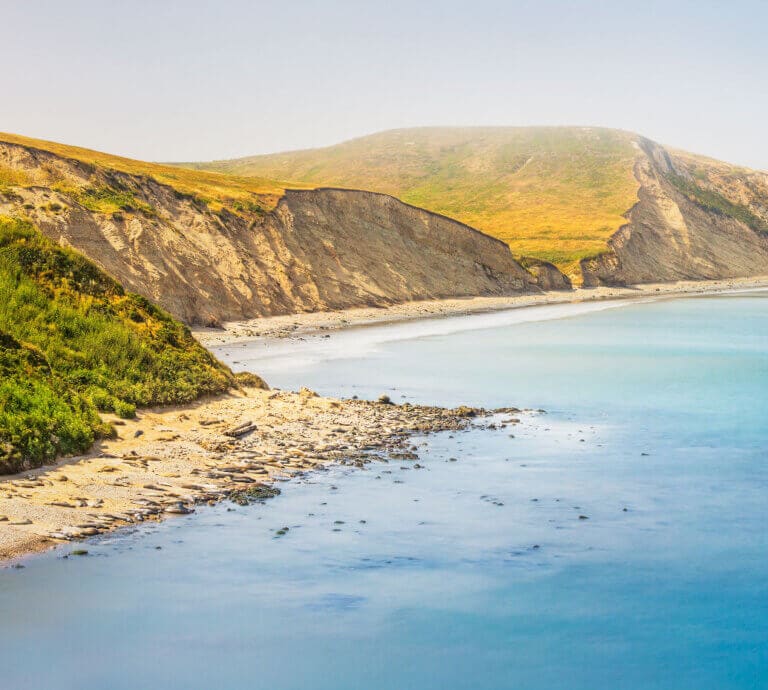
The Northern National Park Road Trip Itinerary
The northern national park road trip boasts three national parks, four if you are willing to go outside of California (we will forgive you). But wait, that’s not all! It also includes three National Monuments and a National Seashore.
If you start in San Francisco , you’ll find several outdoor parks nearby worth a visit. Take your time exploring parks like Fort Point with its unique history and vantage point overlooking the Golden Gate Bridge . Gaze up into the towering tops of the old-growth coastal redwoods at Muir Woods National Monument . Wander Point Reyes National Seashore’s windswept beaches, and keep your eyes open for wildlife like tule elk or elephant seals.
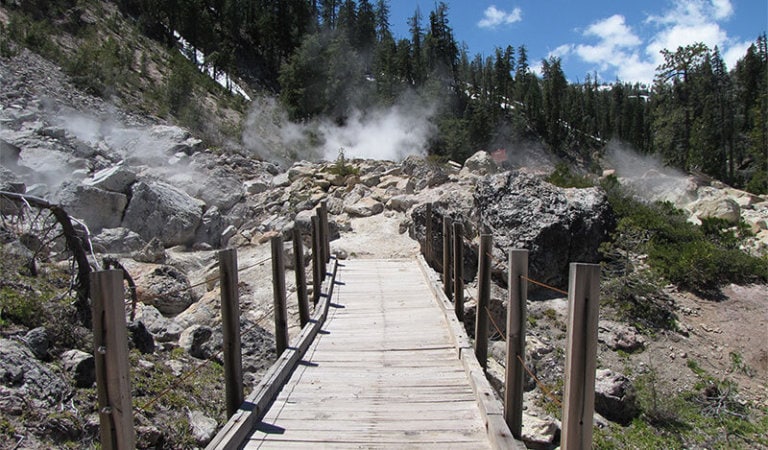
Start your trip with a visit to the world-famous, Yosemite National Park . Breathe in the sweet pine-scented air and dangle your toes in playful mountain rivers. With the diverse natural landscapes in the region, you could easily spend 3-4 days (or a lifetime) exploring the trails , rock climbs , and other things to do . Don’t forget to get a taste of history and some “˜spirited’ refreshment in Mariposa on your way back to San Francisco .
From Yosemite, you’re ready to head north to Lassen National Park . Lassen is the southernmost volcano in the Cascade Range, and the park is filled with fascinating mud pots, fumaroles and hot springs.
At this point, you’ll be close to Crater Lake National Park in Oregon. We would forgive you a detour beyond the California boundary, or you could stick to California-based sights and visit two National Monuments on the way to Redwoods National Park. Lava Bed National Monument’s volcanic landscape includes more than 800 caves, Native American rock art sites, and historic battlefields. Tule Lake National Monument provides a sobering reminder of the incarceration of Japanese Americans during World War II.
After visiting the most massive trees in the world in one of the giant sequoia groves in Yosemite, you should visit Redwoods National Park, which boasts some of the tallest trees on Earth. Then take a leisurely trip down the Pacific Coast Highway back to San Francisco .
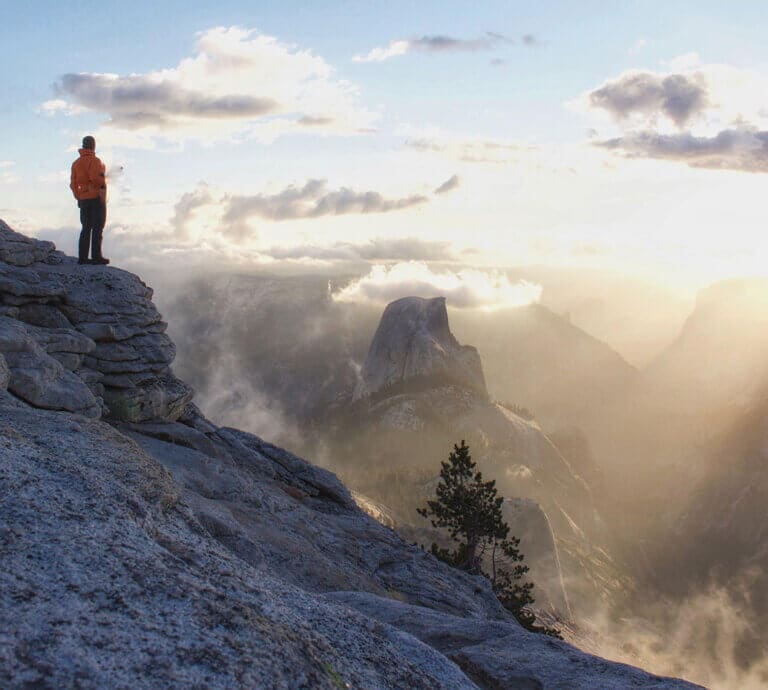
The Southern Coastal National Park Road Trip Loop
If the three (or four) national parks on the northern route were not enough to tempt you, then check out the southern national parks loop with a whopping SIX national parks, plus three iconic cities and a national monument.
Starting again in San Francisco , take your time driving to Yosemite National Park . This gives you more time to enjoy gold country along the way. Try your luck panning for gold or cast a fishing line in a clear lake or mountain stream.
If you have time, there is plenty to do here for a week or more if you have the time. Yosemite is the kind of destination that people return to year after year because there is so much to see and do.
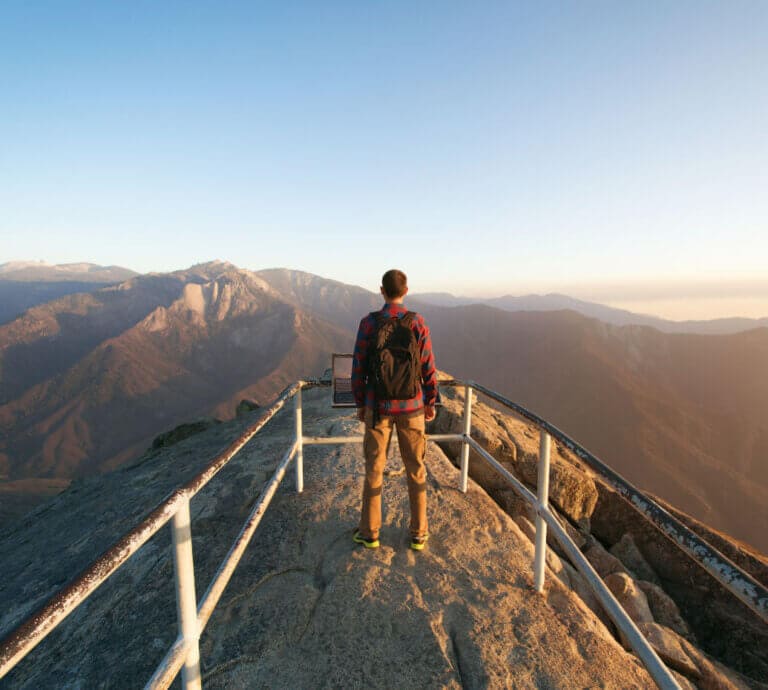
From there head south to Sequoia and Kings Canyon National Parks . Take your time to get one of the best views in the Sierra Nevada from Moro Rock, then visit the famous sequoias and contemplate the most massive trees in the world, like the General Sherman. Each grove has it’s own unique character.
Discover how these compare with the Tuolumne , Merced and Mariposa sequoia groves in Yosemite National Park. Don’t forget to also stop to wonder at the striking cave formations at Crystal Cave or watch the sunset at Moro Rock.
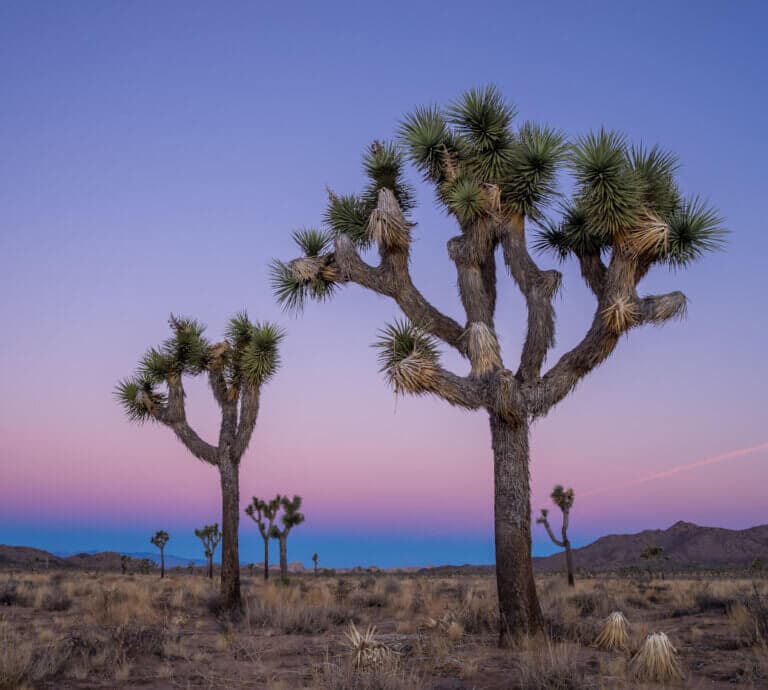
Once you’ve filled your mind with the ancient giants, head south to Joshua Tree National Park and marvel at the photogenic trees and scramble the natural rock formations. Many diverse hikes and viewpoints await your exploration.
From Joshua Tree National Park, drop south to explore San Diego and learn about 16th century exploration and go tide pooling at Cabrillo National Monument .
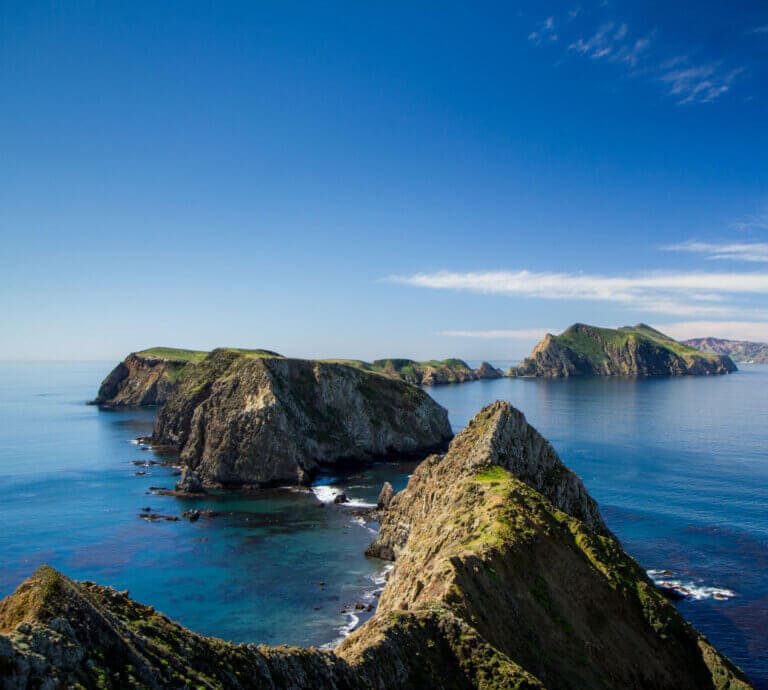
Follow the Southern California Coast to Ventura and Channel Islands National Park. Hopefully you’ve made a reservation to visit the national park for the day, or spend the night on the island. Just getting to the islands is a scenic journey on its own, and filled with opportunities for wildlife viewing.
More coastal exploration awaits you on the way to Pinnacles National Park to relish the quiet hiking there before returning to your starting point.
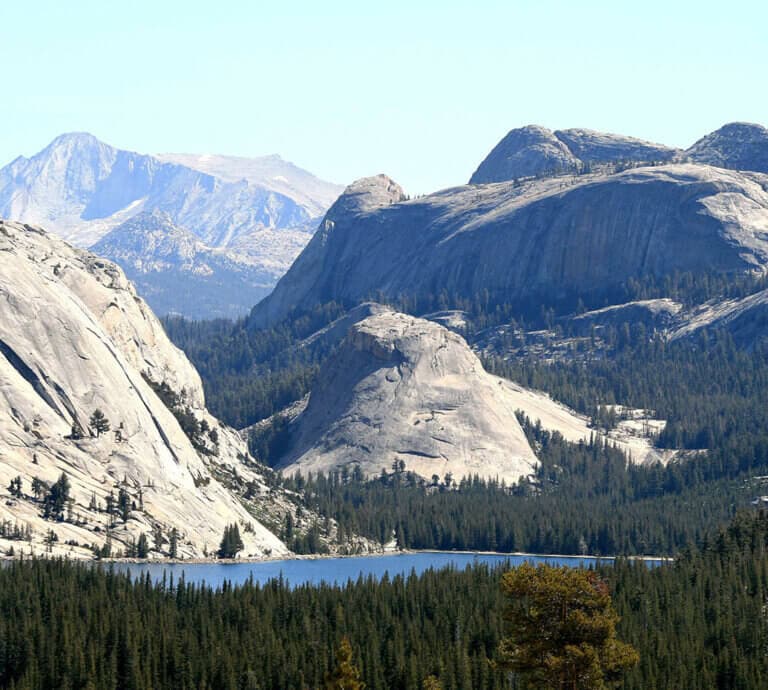
This one is for mountain lovers! But how do you top the six national parks in the southern coastal loop? Easy, with seven national parks in the southern mountain loop.
Start this loop the same way you started the Coastal loop from San Francisco , through Mariposa County into Yosemite National Park .
This time, instead of turning South, drive across the Sierra through Yosemite’s gorgeous high country. Olmsted Point , Tenaya Lake , and Tuolumne Meadows provide scenic stops and spectacular hiking options that are worth at least a day or two if you can manage it.
Emerge from Yosemite at Mono Lake Tufa State Natural Reserve to see the delicate calcium-carbonate towers and abundant bird-life.
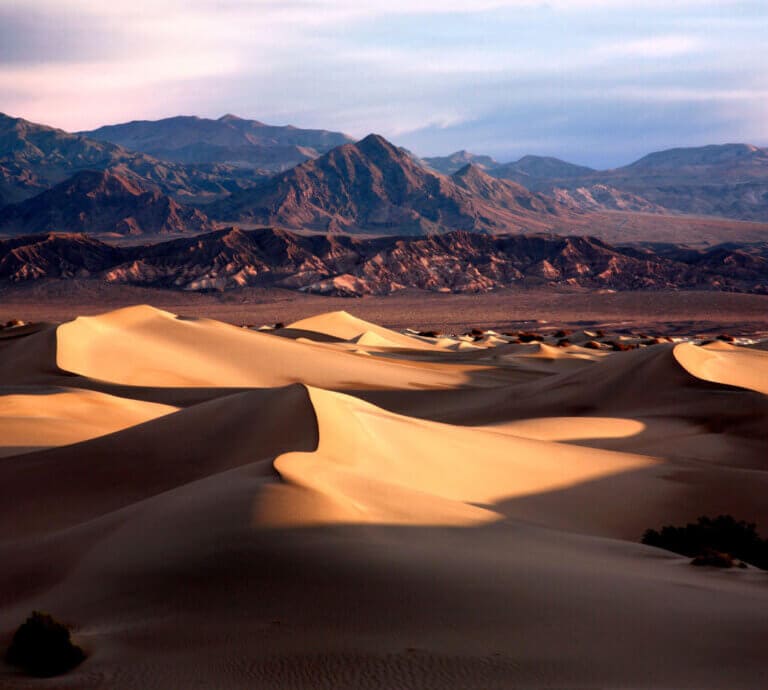
From here, the drive down Highway 395 parallels the scenic serrated edge of the Sierra Nevada. If you manage to get a highly-prized permit to hike Mount Whitney, you can go from the highest point in the contiguous US to the lowest point in Death Valley National Park .
From Death Valley, continue South to visit the unique trees and rock formations at Joshua Tree National Park. Then continue west to Ventura Harbor and Channel Island National Park .
This time, instead of following the coast, head inland past César E. Chávez National Monument toward the giant sequoia groves of Sequoia National Park and Kings Canyon National Park .
From there, drive west to visit Pinnacles National Park before finishing your loop.
The Complete California National Park Road Trip Itinerary
If you have a lot of time, love the open road and can’t bear to choose between these amazing options, by all means, visit them all. Simply combine the northern road trip with the southern mountain loop. You’ll be in for an epic California National Park road trip itinerary that hits all the bases.
We use cookies to help us improve, promote, and protect our services. By continuing to use the site, you agree to our cookie policy. More Information

10-Day California National Park Road Trip Itinerary
- California is home to a variety of national parks, including 9 official national parks and a total of 28 national park units.
- A 10-day road trip through California is a great way to explore the highlights of the state, with stops at Joshua Tree, Death Valley, Sequoia and Kings Canyon, Yosemite, Pinnacles, Muir Woods, and Point Reyes.
- Each national park offers unique activities and experiences, from hiking and scenic drives to stargazing and exploring ghost towns. Visitors can also enjoy the diverse landscapes of California, from deserts and mountains to the coast.
California is a huge state with a variety of unique landscapes and vibrant cities. There are a number of scenic road trips to take through California , highlighting the coastline, the mountains, and everything in between.
Road trip travelers particularly enjoy visiting California’s national parks, which often mean two different things. When visitors think of national parks, they often jump to the 63 national parks throughout the US , 9 of which are in California. However, the National Park Service actually refers to all the protected areas managed by the NPS as national parks. With this in mind, there are actually 428 national park units in the US , including national monuments, national battlefields, national scenic byways, and national seashores. 28 of these national parks are in the scenic state of California.
While a 10-day national park road trip through California isn’t enough time to see all 28 national park units, or even the 9 national parks in California, it is plenty of time to explore the highlights of this great state. This 10-day California National Park road trip winds through deserts, mountains, and scenic beaches, highlighting many of the most famous landscapes in California. By focusing on the southern and central parts of the state, driving time (which can quickly get out of control in California) is mitigated, leaving more time for scenic stops along the drive.
Related: 10 National Park Road Trips That Should Be On Your Bucket List
Day 1: Los Angeles To Joshua Tree National Park
Driving distance: 131 miles, time to drive: ~2.25 hours.
Los Angeles is one of the easiest starting points for a California road trip, with several international airports and direct access to the first California National Park road trip stop. The first day of the trip allows plenty of time to arrive in the Golden State before heading to Joshua Tree National Park, which is just over two hours away.
Joshua Tree National Park is a true can’t-miss road trip stop. Even those with just an hour or two can enjoy one of the short, easy hikes in Joshua Tree National Park . With so much scenery so close to the roads, Joshua Tree is the perfect first stop on what is sure to be a busy road trip.
About Joshua Tree National Park
- Park Hours: 24/7
- Entrance Fee: $30/vehicle
- Popular Things to Do at Joshua Tree National Park (Day 1): Scenic Drives, Stargazing, Easy Hiking Trails, Scenic Overlooks
Day 2: Joshua Tree National Park
Since the first day of the road trip can often be slowed down by flights, check-ins, and car rentals, the scenic part of the adventure may have to wait for day two. Thankfully, whether this is the first or second day exploring Joshua Tree National Park, travelers will have plenty to take in.
In addition to being one of the most scenic places in California, Joshua Tree National Park has a variety of activities to enjoy beyond hiking. Soaking in hot springs and stargazing are popular pastimes in this desert landscape.
Just 20 miles north of the park itself is a truly out-of-this-world experience. The Integratron is an upscale sound bath experience with an extraterrestrial past. Originally built to communicate with aliens, today, guests at the Integratron can enjoy a soothing sensory experience in the heart of the desert. Book well in advance; this place sells out quickly.
- Popular Things to Do at Joshua Tree National Park (Day 2): Hiking, Scenic Drives, Integratron Sound Bath, Stargazing, Hot Springs
- Integratron Fees: Shared Sound Bath from $55/person
The drive from Joshua Tree National Park to Death Valley National Park is about four hours. Those following this itinerary may want to drive to Death Valley National Park on the evening of day two in order to make the most of their day in Death Valley itself.
Day 3: Death Valley National Park
Driving distance: 228 miles, time to drive: ~4 hours.
Death Valley National Park may not have the most inviting name, but there is still something magical about visiting one of the hottest places on the planet . The second destination on a California National Park road trip, Death Valley, straddles the California/Nevada border.
In addition to the unique arid landscape, Death Valley National Park is home to several of the best hikes that lead to ghost towns in the US . With nine different ghost towns in Death Valley National Park , all preserved in the dry air, one could easily fill a day simply exploring the past.
About Death Valley National Park
- Popular Things to Do at Death Valley National Park: Hiking, Biking, Off-roading, Ghost Town Visits, Scenic Drives
Death Valley National Park’s roads were heavily damaged by Hurricane Hilary in August 2023 . As of December 2023, the park is open to visitors, but many of the roads remain closed for repairs. Check the map on the NPS Death Valley National Park website for current road conditions and closures.
Day 4: Sequoia And Kings Canyon National Parks
Driving distance: 302 miles, time to drive: ~5.5 hours.
With two national parks comes twice as much fun. The first day in Sequoia and Kings Canyon National Parks involved driving there from Death Valley. Despite how close they look on the map, the roads necessitate a fairly big loop to get from the desert to the forests. As a result, approximately five and a half hours of this day of the California National Park road trip will be spent en route.
Thankfully, both Sequoia and Kings Canyon National Parks are worth the effort. Home to the biggest tree in the world, the famous General Sherman (in Sequoia National Park) , these parks are filled with literal giants. After spending the first three days of this road trip in some of the driest parts of California, a couple of days among the giant sequoias is the perfect change of pace.
About Sequoia and Kings Canyon National Parks
- Park Hours: 24/7 (both parks)
- Entrance Fee: $35/vehicle (covers both parks)
- Popular Things to Do at Sequoia and Kings Canyon National Parks: Hiking, Ranger-led Activities, Scenic Walks, General Sherman Viewing, General Grant Viewing
While Sequoia and Kings Canyon National Parks are listed separately, their proximity means that they are easily visited together. Additionally, the $35 entrance fee covers admission to both parks for up to seven consecutive days.
Day 5: Sequoia And Kings Canyon National Parks
While driving is indeed a key part of an epic California National Park road trip, every good vacation needs a couple of days that move a little slower. Having done the drive the day before, day five of this trip is all about truly enjoying the forest.
There are plenty of things to do at both Sequoia and Kings Canyon National Parks , including hiking, biking, taking a guided tour, or hopping back in the car for a scenic drive. Despite being located near the Sierra Nevadas, both parks are fairly mild in their climate, making them an ideal stop, even for a winter road trip through California.
While it comes second to General Sherman, the General Grant Tree in Kings Canyon National Park is just as magnificent to look at and frequently less crowded than its slightly bigger brother in Sequoia National Park.
Day 6: Yosemite National Park
Driving distance: 111 miles, time to drive: ~2.5 hours.
A California National Park road trip would not be complete without a couple days in California’s most visited national park. Yosemite National Park is a true spectacle, with towering pines, clear mountain lakes and rivers, and some of the most unusual granite formations in the world.
It takes just over two hours to get from Kings Canyon National Park to Yosemite National Park, leaving plenty of time to enjoy both scheduled days in this spectacular destination. The first day may be perfect for hiking the smaller trails or chasing some of the best waterfalls in Yosemite National Park . As this is a road trip, the scenic drives in Yosemite National Park are another perfect way to spend a day here.
About Yosemite National Park
- Entrance Fee: $35/vehicle
- Popular Things to Do at Yosemite National Park (Day 1): Short Hikes, Scenic Viewing, Waterfall Hikes, Scenic Drives
Related: 10 Things To Know Before Pitching A Tent & Camping In Yosemite National Park
Day 7: Yosemite National Park
Two days may feel like a long time to spend in one place on a short 10-day California National Park road trip, but a quick look around Yosemite National Park proves this place needs the extra time.
The second day in Yosemite National Park is the perfect time to schedule activities that require more advance planning. The Half Dome hikes, for instance, are one of the best hikes in the US and require a permit to complete. Additionally, those road tripping in February can make a reservation to see Yosemite’s famous Firefall .
Even those not interested in these scheduled activities can find plenty to do in and around Yosemite National Park. As part of the Sierra Nevada mountain range, there are a number of amazing caves to explore near Yosemite National Park . The day’s adventures complete, guests can bundle up in one of the cabins or lodges inside the park grounds (or simply set up a tent!) before starting the final sprint of the California road trip.
- Popular Things to Do at Yosemite National Park (Day 2): Half Dome Hike, Firefall Drive or Hike, Cave Exploration, Ranger Programs, Scenic Drives, Hiking
Day 8: Pinnacles National Park
Driving distance: 173 miles, time to drive: ~3.5 hours.
If Yosemite National Park is the most visited national park in California, Pinnacles National Park may be one of the least visited. Pinnacles National Park is located near the coast of Central California, just three and a half hours from Yosemite.
Here, road trip travelers can marvel at the unique pinnacle rock formations as they hike, bike, and drive through the park. Those watching carefully may also notice some important feathered companions among the rocks. The California Condor, once effectively extinct in the wild, has made a major comeback, largely thanks to the sustainability efforts of US national parks like Pinnacles.
Today, Pinnacles National Park is one of the most important nesting grounds for this endangered bird, proving that this underrated destination deserves a day on the California national park road trip.
About Pinnacles National Park
- Park Hours: 24/7 (East Gate Only)
- Popular Things to Do at Pinnacles National Park: Hiking, Biking, Wildlife Viewing, Rock Climbing
Due to the fragile nature of the California Condor population, some parts of Pinnacles National Park are closed seasonally to protect nesting grounds. Always follow local signage to help protect these vulnerable animals.
Related: California Condor: Where To See One Of The World's Rarest Birds
Day 9: Muir Woods National Monument
Driving distance: 146 miles, time to drive: ~3 hours.
Along the coast near San Francisco, Muir Woods National Monument is a serene coastal forest that serves as both an area of protection and research. With only ten days on this California national park road trip, going all the way north to Redwood National and State Parks may be unrealistic, so spending a day in Muir Woods National Monument, which also protects large groves of old-growth coastal redwoods, is a scenic alternative.
Muir Woods is particularly special thanks to its huge variety of hiking trails , ready for visitors of all ability levels. Located just fifteen minutes from San Francisco, one of the must-see stops on a cross-country road trip , travelers can easily spend their second-to-last day in both the wilderness and the big city.
About Muir Woods National Monument
- Park Hours: 8 am - Sunset
- Entrance Fee: $15/person
- Popular Things to Do at Muir Woods National Monument: Hiking, Scenic Drives, Wildlife Watching, Trip to San Francisco
Day 10: Point Reyes National Seashore
Driving distance: 23 miles, time to drive: ~1 hour.
This 10-day California National Park road trip starts in the middle of the desert and ends surrounded by the ocean, a true testament to the huge range of natural landscapes in California.
Point Reyes National Seashore offers some truly picturesque views for the end of the road trip.
Located just an hour from Muir Woods National Monument and San Francisco, Point Reyes has both classic sandy beaches to lounge on and crashing rocky shores to hike above. In fact, visitors can easily hike in Point Reyes National Seashore , which features 47 hiking trails, ranging from very easy to hard, so that everyone can explore the California coast in all its glory.
Whether enjoying a full day on the beach or catching one of the many Point Reyes National Seashore park programs , this national park road trip promises to end just as dramatically as it began.
About Point Reyes National Seashore
- Park Hours: 6am - 12am
- Entrance Fee: FREE
- Camping Fee: $30/night (1-6 people)
- Popular Things to Do at Point Reyes National Seashore: Hiking, Ranger Walks, Visit Point Reyes Lighthouse , Scenic Drives
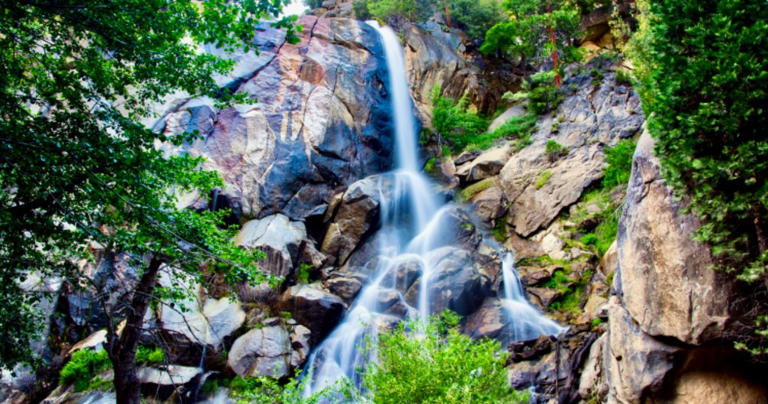

All 33 California National Parks: Full Guide and Map
California has more national parks than any other state or territory. But of course that’s not surprising. Our huge geography and natural beauty showcases a wide variety of terrain, encompassing redwood forest, volcanic hotspots, coastal islands, deep canyons, basalt columns, sand dunes, crazy geology and strange Joshua trees (which bytheway, aren’t actually trees). And then there are historic sites dedicated to civil war history, worker’s rights, gold rush settlement, internment, poetry and even John Muir (the patron saint of California National Parks).
There are 9 official national parks in California, but a total of 33 national park sites. And this guide will help you learn more about all of them. We’ve got blurbs describing each park with links out to some relevant trip planning resources. And we’ve also got a visual compilation of the sites in one handy California national park map.
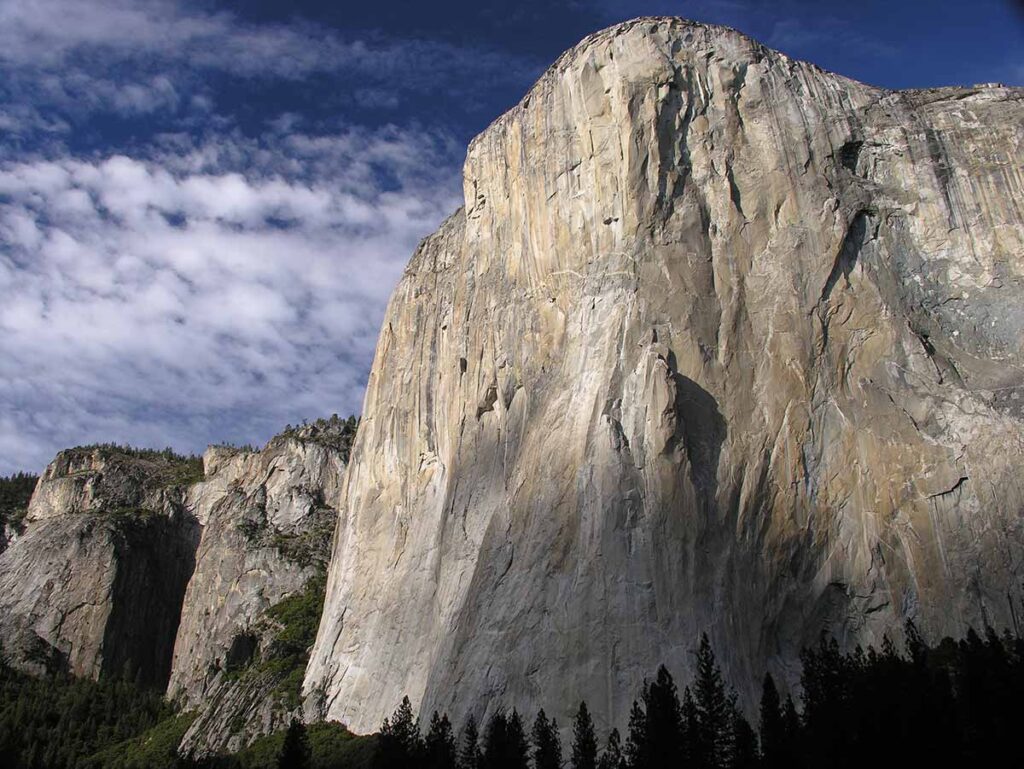
Tips for Visiting California National Parks
- If you’re planning to visit three or more of the major California parks, you’ll save money by getting an annual $80 America the Beautiful Pass . We also have a useful resource for determining whether a CA park pass is right for you.
- Book your campgrounds early, because they fill up fast. You can do that at Recreation.gov .
- The same goes for any kind of lodging in Yosemite, Kings Canyon/Sequoia and Death Valley National Parks.
- Some of the parks are located in/near urban areas, but many are in the boondocks. So, just assume that you’ll have rotten mobile service in most of the parks.
- Different parks are busier or have more on offer in different seasons. Check out our guide for when to visit California for advice on which locations are best for which season.
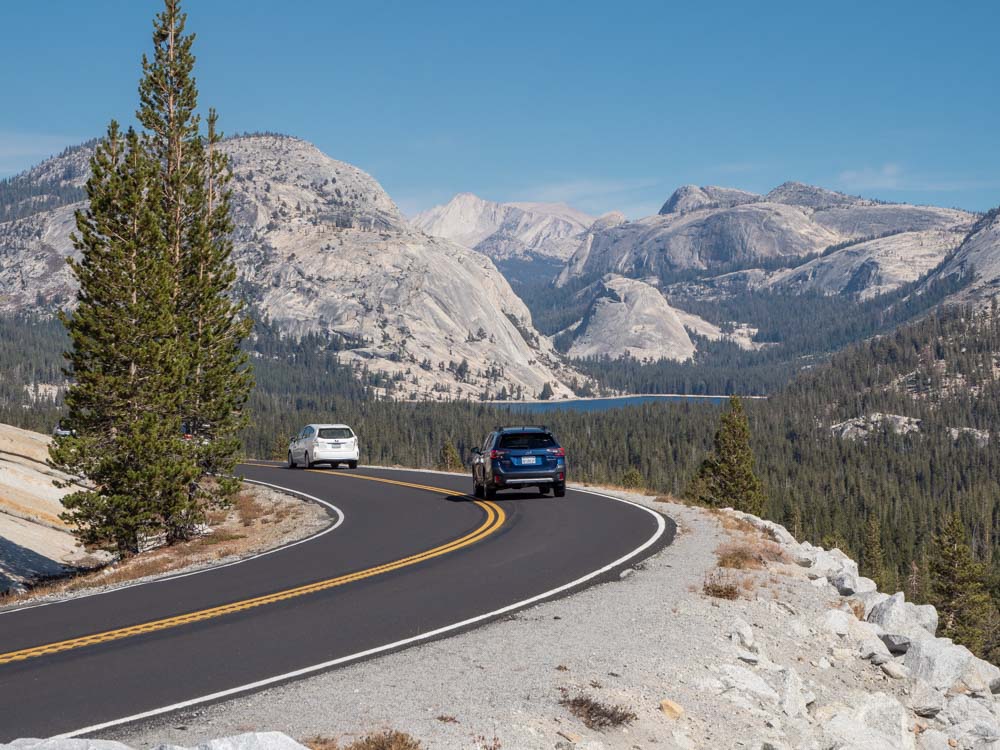
5 Road Trip Itineraries that Feature National Parks in California
If you starting in San Francisco, we have a ton of great road trip resources for you. One itinerary will take you from SF to the North Coast Redwoods . This trip offers kooky roadside attractions and key stops at 11(!) redwood groves.
Or get from San Francisco to Yosemite . This trip has key stops within the park, but also suggests some cool spots outside of the park, like wine tasting and gold country history.
If you want to get to Death Valley from SF , this guide gives you three different routing options, each with unique historic and natural sites. One option on that trip is to go through Yosemite over Tioga pass and then explore Highway 395 before getting to Death Valley.
Or you can just focus on the southern parks and do a routing between Joshua Tree and Death Valley . This one has some quirky art installations, an extra large crater and key spots for sunrises and sunsets.
Or just hang out in the Bay Area and check out some of these National Park sites near SF .
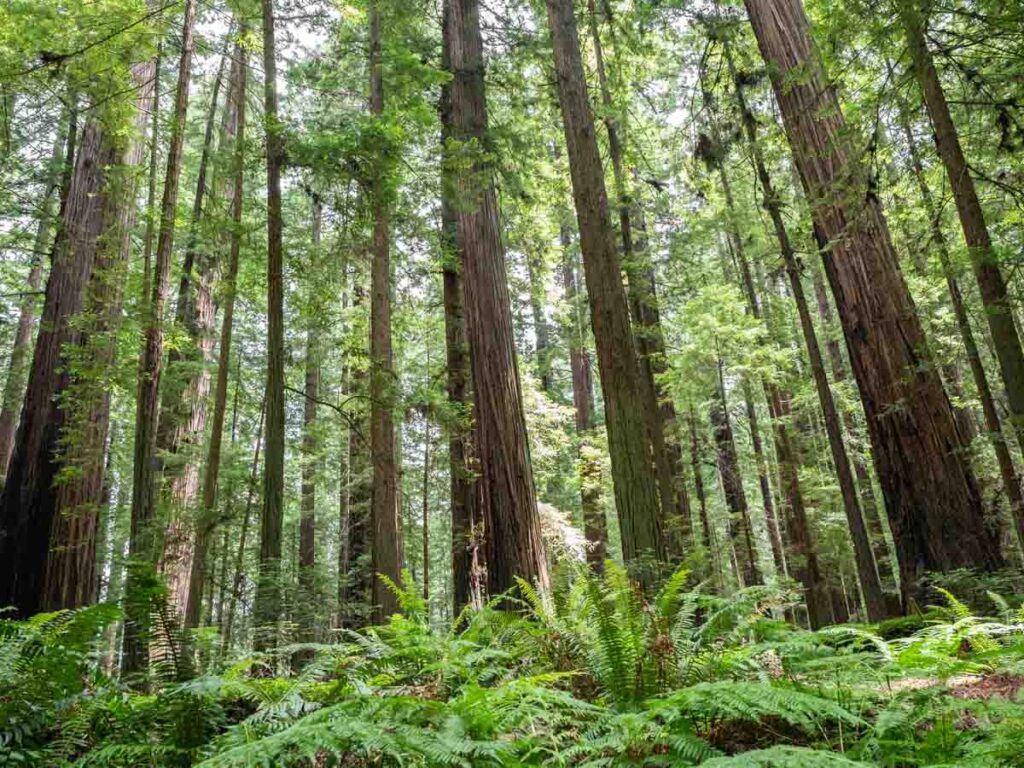
The 8 Primary National Parks
This list of California national parks is very thorough, and we hope you scroll through the whole thing, because there are some surprising finds in our park system. But If you are looking for something in particular, we want to make it easy for you to find it.
Our 33 national park sites are a mix of official “national parks”, historic sites, monuments and historic trails. If you are simply interested in visiting the “official” or most famous California national parks, the eight of them are listed below. Just click on the link and it will jump you down for more information on that particular park.
Redwood National and State Parks
Lassen volcanic national park, pinnacles national park, yosemite national park.
- Sequoia & Kings Canyon National Parks
Channel Islands National Park
Death valley national park, joshua tree national park.
But, we do hope that you’ll explore some of the 25 other national park sites in CA. We’ve divided them up between Northern California, Southern California and the historic trails, which tend to cover a larger region.
National Park Sites in Northern California
National park sites in southern california.
- Pan regional National Historic Trails
California National Park Map
If you are planning a road trip, identify your key stops with this handy map for California national parks.
Full List of National Parks in California
Get ready to add to your bucket, because all of these park sites have something really interesting to offer, and some of them are bucket-list worthy.
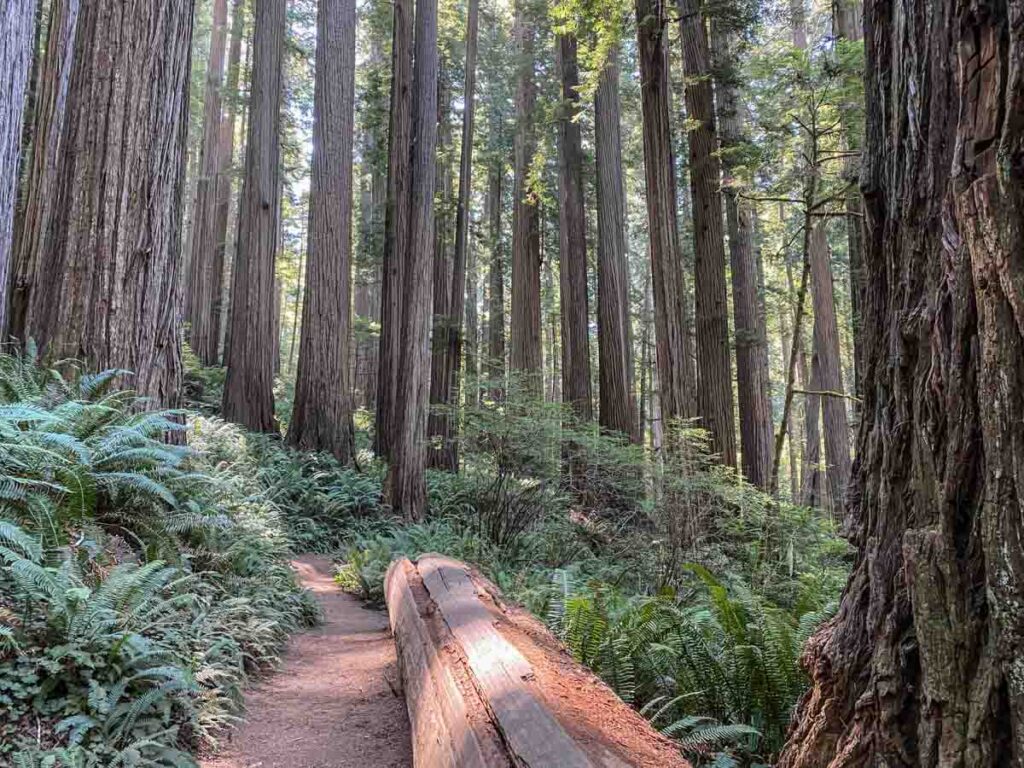
(This article contains affiliate links. This means that if you choose to purchase, I’ll make a small commission.)
Redwood National & Sate Parks is an unusual multi-jurisdictional reserve that is co-managed by the National Park Service and California State Parks . The area is notable for the unique California Coast Redwoods, which are some of the tallest trees in the world (plus, they smell amazing). The full territory includes The Redwood National Park, Jedediah Smith State Park, Prairie Creek Redwoods State Park and Humboldt Redwoods State Park. Use our Redwoods itinerary to see the best of it.
Key stops on the route include the Avenue of the Giants scenic drive (Humboldt, SP), The Drury Parkway scenic drive and fern canyon (Prairie Creek, SP), the Lady Bird Johnson Grove (Redwoods, NP) and the Boy Scout Trail and Templeton and Stout Memorial Groves (Jedediah Smith).
- Getting There : It’s a straight shot up Highway 101 on the “Redwood Highway.”
- Where to Stay : Best Western (Garberville), Emerald Forest cabins (Trinidad) The Lighthouse Inn (Crescent City). There is also camping available in the state parks.
- Entrance Fee : None for the scenic drives and groves. Fees for camping apply.
- More info on Redwood National and State Park .
Tule Lake National Monument
It’s important for us to remember that during WWII, our fear of the Japanese threat caused us to incarcerate our own citizens. Both Tule Lake and Manzanar (noted below) are important sites for keeping those historical events from being forgotten. The Tule Lake National Monument includes the Tule Lake Segregation Center, the largest and most controversial sites where Japanese Americans were incarcerated during World War II, and Camp Tulelake, which was first a Civilian Conservation Corps camp, then an additional facility to detain Japanese Americans, and finally a prisoner of war camp.
Ranger led tours are offered on Saturdays and you can always do the self-guided exhibits.
- Getting There : It’s in far northeastern California on Highway 139, 30 miles south of Klamath Falls, Oregon. It’s also located just 12 miles from Lava Beds and you can do both in one trip.
- Where to Stay : Holiday Inn Express or Best Western Plus Olympic Inn in Klamath Falls.
- Entrance Fee : Free.
- More info on Tule Lake .
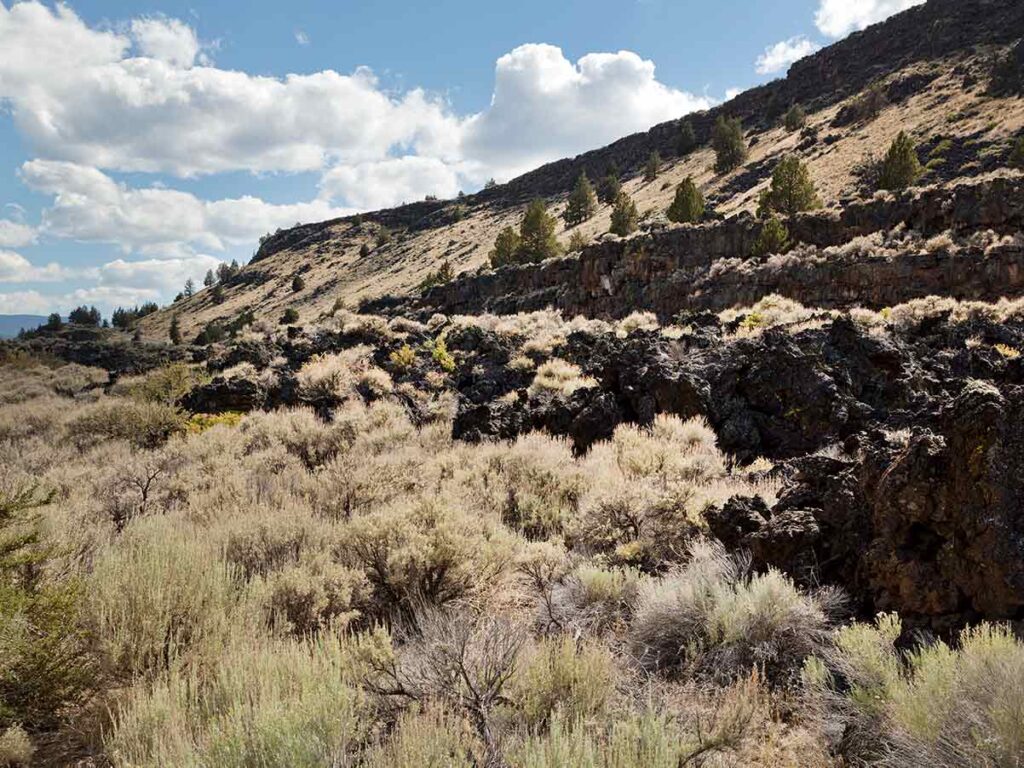
Lava Beds National Monument
Lava Beds has some pretty funky volcanic geology going on, when it was created by the Medicine Lake shield volcano. Medicine Lake had gentle eruptions which coated the area with basaltic flow. The result is a cool system of caves and lava tubes.
There are developed cave sites (with lights), which you can visit along the 2 mile Cave Loop road. During the summer, there are ranger-led guided cave tours on Saturdays (which must be reserved in advance.) The park also has 14 hiking trails of varying distances which feature lava tubes, overlooks of the basin and Native American petroglyph sites.
- Getting There : It’s in far northeastern California on Highway 139, 45 miles south of Klamath Falls, Oregon and just 12 miles from Tule Lake.
- Where to Stay : Holiday Inn Express or Best Western Plus Olympic Inn in Klamath Falls. Or in the on-site campground.
- Entrance Fee : $25 per vehicle.
- More info on Lava Beds .
Whiskeytown National Recreation Area
Whiskeytown is a cool mix of history and lots and lots of lovely nature.
For the nature, you can visit the Whiskeytown and Crystal Creek water falls. The park has 28 hiking trails that vary from 1-7 miles (including the popular Buck Hollow and James K. Carr trails.) The lake is huge and there is also a ton of water fun at Whiskeytown. You can rent kayaks, boats and hang at the one of several beaches. You can also explore history at nearby Shasta State Park and the Weaverville Joss House.
- Getting There : It’s located 9 miles west of Redding on Highway 299.
- Where to Stay : For fancier digs, try the Hope Inn or stick with the basics at the Comfort Suites . The park also has quite a bit of camping capacity with 4 campgrounds.
- More info on Whiskeytown National Recreation Area .

Lassen is an amazing volcano that last erupted in 1915. And it’s still fuming. There is a lot of hissing, burbling landscape in Lassen (noted in the image above). But you can also find alpine lakes, forest hikes and lovely spring flowers.
There is a 30-mile scenic highway that cuts through the park, which is actually part of the longer 500 mile Volcanic Legacy Scenic Byway. The longer byway includes Crater Lake National Park, Lava Beds, Mount Shasta, Burney Falls and Lassen. The park also has 150 miles of hiking trails, including the popular Bumpass Hell trail (to a hydrothermal spot) and the Manzanita Lake Loop.
Please note that Lassen got nailed HARD by the huge Dixie Fire. So be sure to check the NPS current conditions page for what is open for visitors.
- Getting There : It’s located 90 miles east of Redding via Highway 36 or 44.
- Where to Stay : The Best Western Quartz Rose Inn (Chester) or The Manzanita Camping Cabins . The park has 4 campgrounds, including one that’s just for RVs.
- More info on Lassen National park .
Point Reyes National Seashore
How would you like some crashing waves, rocky headlands, lonely lighthouses, a cypress tunnel and some massive Tule Elk? Then be sure to visit Point Reyes National Seashore. This park offers up some of California’s most stunning coastal scenery.
For wildlife, one of the top things to do in the park is to visit the Tule Elk preserve at Tomales Point. You can find elephant seals on the beaches at Chimney Rock. And also migratory gray whales from December to May. For hiking, you have your choice of 150 miles of trails, including the popular Bear Valley trail (10 miles), Muddy Hollow/Coast trail (12 miles) and the Mount Whittenberg trail (4 miles).
- Getting There : It’s located 40 miles north of San Francisco on Highway 1. On the way, you can also stop at Muir Woods (noted below).
- Where to Stay : Even if you aren’t a fan of Hostels, consider the HI Hostel , it’s located in the heart of the park. Also in nearby Olema is the stylish Olema House . Point Reyes has 5 small-ish campgrounds, but there are also spots in nearby Samuel P Taylor State Park.
- More info on Point Reyes National Seashore .
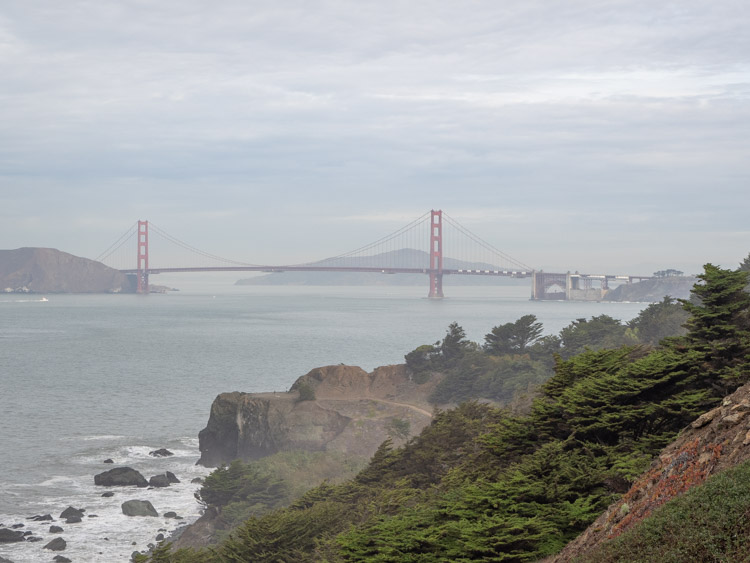
Golden Gate National Recreation Area
The Golden Gate National Recreation Area (GGNRA) isn’t an official national park, and yet, it’s the most visited “park” in the US, receiving 13 million visits in 2021.
The GGNRA manages a huge recreation area, which includes not only 5 sites that are on the official National Park list, like the Presidio, Maritime Museum, Fort Point, Muir Woods and Alcatraz (all noted below). But the GGNRA also manages nature and historic sites stretching 40 miles north into Marin County and 20 south into San Mateo County. Top spots include: the Marin Headlands, Ocean Beach, Fort Funston, Sweeny Ridge, Phleger Estate, the Fitzgerald Marine Reserve, Fort Mason and Lands End (which is worth hiking ).
And the crown jewel is the Golden Gate Bridge, which is one of the most popular tourist spots in San Francisco. We have a whole guide for visiting the Golden Gate bridge which offers practical advice on where to park, how to walk it and some fun facts.
- Getting There : Here is a map showing all of the GGNRA sites.
- Where to Stay : SF accommodation guide to figure out where to stay for all budgets.
- Entrance Fee : Free for everything but the Maritime Museum, Muir Woods and Alacatraz.
- More info on the Golden Gate National Recreation Area .
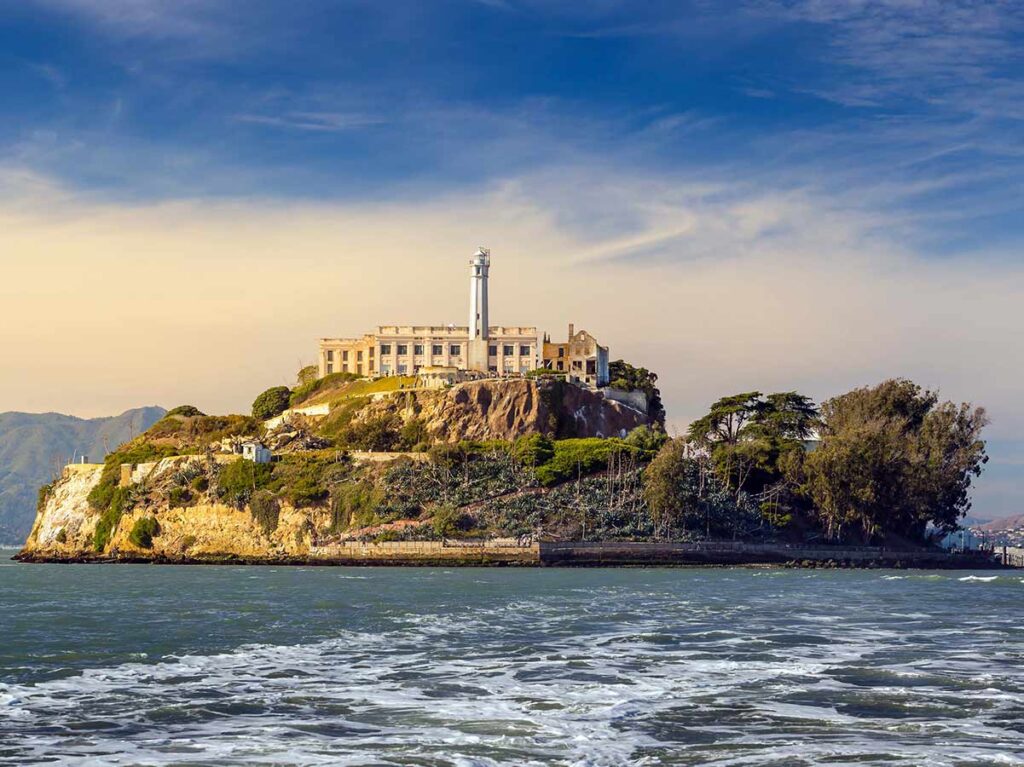
Alcatraz Island Historic Site
Alcatraz Island was at times a fort, military prison and a maximum security federal prison. In 1969, it was also occupied for 19 months by Native American groups who were advocating for civil rights. Touring the island provides a fascinating look into the history of incarceration in the United States.
In addition, the island occupies a lovely patch of the San Francisco bay and the ferry ride to and from the island always provide great views of San Francisco and the Golden Gate Bridge.
They run daily tours to the island. It’s very popular, so be sure to book ahead .
- Getting There : Located in the San Francisco Bay, a short ferry ride from Pier 39.
- Entrance Fee : $41.
- More info on Alcatraz .
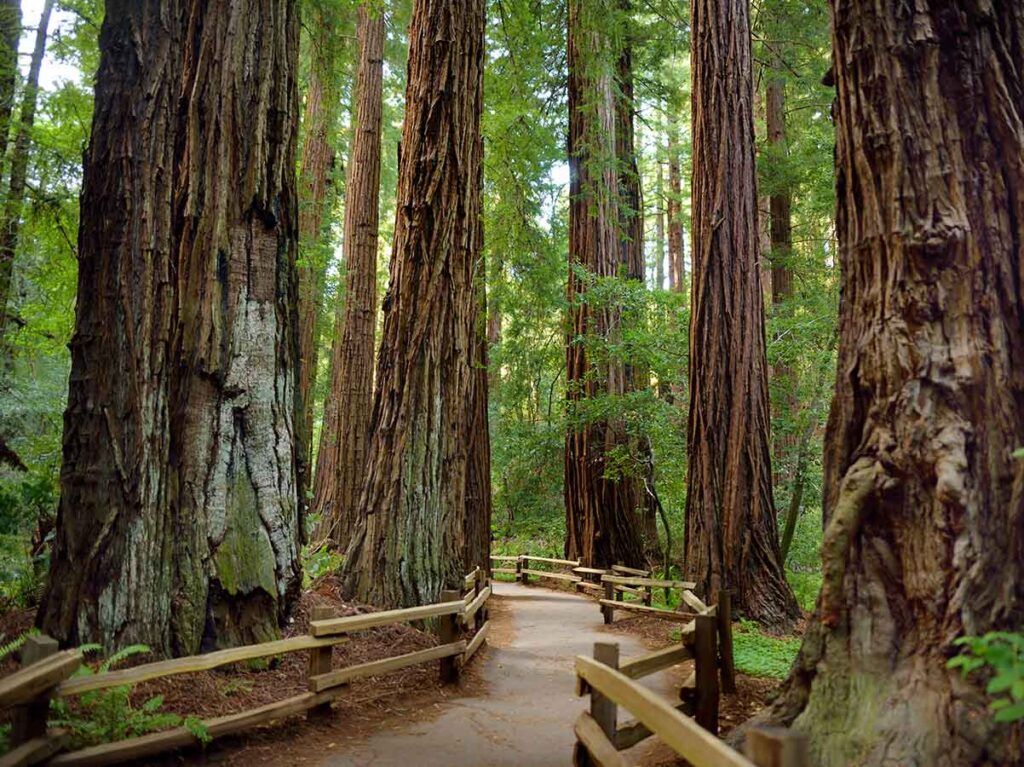
Muir Woods National Monument
As I mentioned above, John Muir was a passionate conservationist and he’s California’s patron saint of national parks in California (and all other US parks too). After he invited Teddy Roosevelt to go camping in what is now Yosemite, the President was inspired to set aside 230 million acres of public land for our first national parks.
Muir loved a walk in the woods and the coast redwoods in Muir woods are a lovely place to do it. The monument offers a great entry-level way to experience California’s coast redwoods. The park has 6 miles of trails that go from a 1/2 hour accessible loop to a 1.5 hour longer loop. The trails also extend out into nearby Mount Tam State Park.
- Getting There : It’s located 16 miles north of San Francisco. Parking is very limited and requires reservations. Or you can take the seasonal shuttle service from Mill Valley.
- Where to Stay : Most people visit Muir Woods as a day trip from San Francisco. Use our SF accommodation guide to figure out where to stay for all budgets.
- Entrance Fee : $15 per adult (kids free), $9 to park, $3.50 for the shuttle. If you don’t drive, you can also do Muir Woods on a guided 1/2 day tour .
- More info on Muir Woods .
“But in every walk with Nature one receives far more than he seeks.” – John Muir
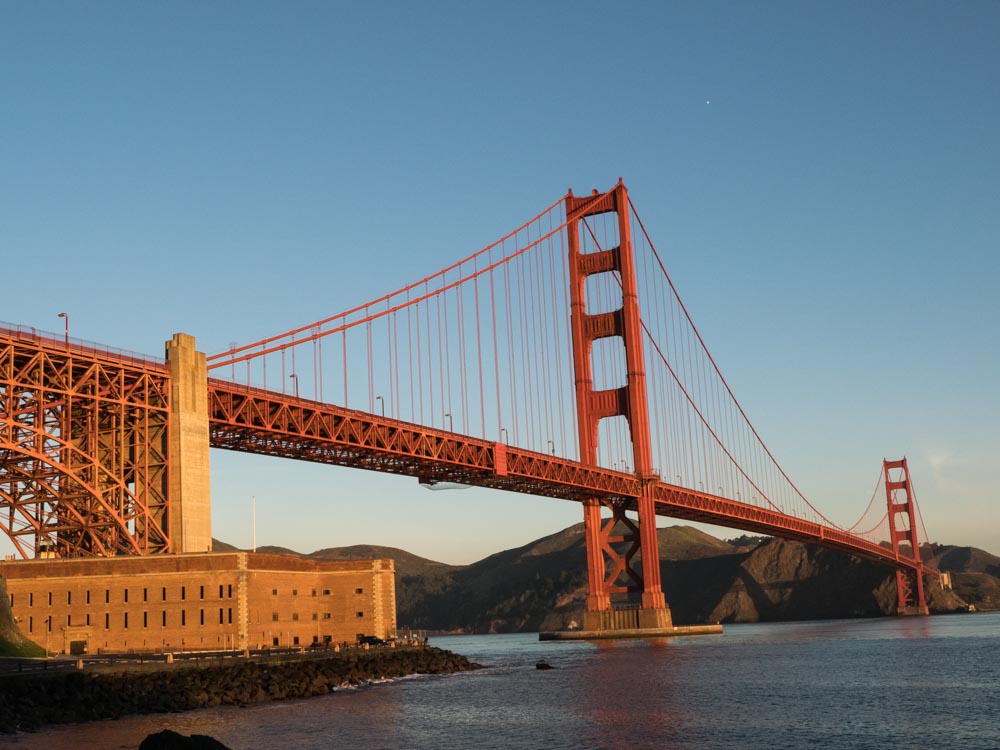
Fort Point National Historic Site
Fort Point has been guarding the entrance through the Golden Gate since the Gold Rush. The building is functional, but also quite lovely with its arched casements and red brick. It really lights up at dawn, which is when the above picture was taken. It’s one of our favorite views of the Golden Gate Bridge . The fort was built for the civil war and was used throughout the 20th century as an active defense site and also a barracks.
You can visit the fort as a self-guided tour and then use the nearby stairs to walk up to and over the Golden Gate Bridge .
- Getting There : It’s located west of Crissy Field, right under the bridge.
- More info on Fort Point Historic Site .
San Francisco Maritime National Historic Park
This historic park is perfect fo anyone who’s nuts for ships.. The Maritime park is located near San Francisco’s Fisherman’s Wharf. It offers visitors the sights, sounds, smells and stories of Pacific Coast maritime history. The Park includes a magnificent fleet of historic ships from a 1895 schooner to a 1914 paddlewheel tug.
You can walk on the decks of the ships, take a cell phone tour and also visit the Maritime museum. The museum has exhibits on ship-building, SF maritime history and they have some lovely WPA-era murals inside the art-deco building.
- Getting There : Located in San Francisco just west of Pier 39.
- Entrance Fee : $15 per person.
- More info on San Francisco Maritime Park .

Presidio of San Francisco Historic Site
When the Spanish colonized California, they set up a defense outpost at the entrance to the San Francisco Bay. Over time, the Presidio was expanded by the Mexicans and then the Americans. The military outpost served through the Spanish American War, the Civil War, the Philippine War, both World Wars and the Cold War. In 1989, the federal government decided to de-commission the base and it was transferred to the Parks Service.
But the Presidio is not your typical parks site. Yes, you can find old military batteries and historic buildings. But you’ll also get 25 miles of hiking trails, including on the prime Crissy Field waterfront. In addition, there is also a mix of private businesses and housing within the presidio. You can find the Disney Family Museum, art installations, and even Lucas Studios (including a really cool statue of Yoda, which is part of our offbeat San Francisco guide ).
- Getting There : Located in northwestern San Francisco. If you don’t want to drive, you get there using the PresidiGO shuttle .
- More info on the Presidio .
Eugene O’Neill National Historic Site
Eugene O’Neill is America’s only Nobel Prize winning playwright. He chose to live in Northern California at the height of his writing career, which is where he wrote his most memorable plays like, The Iceman Cometh , Long Day’s Journey Into Nigh t, and A Moon for the Misbegotten .
The Tao home is on a 128 acre ranch near Danville, in San Francisco’s East Bay. O’Neill and his wife were fans of Oriental art (hence the house’s name), but they married that ethic with a traditional Spanish-style architecture.
You can visit the home on a self-guided tour on Saturdays, or you can arrange a reserved tour on weekdays. Either way, you access the property via an NPS shuttle.
- Getting There : Located in Danville, CA, 23 miles southeast of Oakland.
- Entrance Fee : Free, but reservations required.
- More info on the Eugene O’Neill historic home .
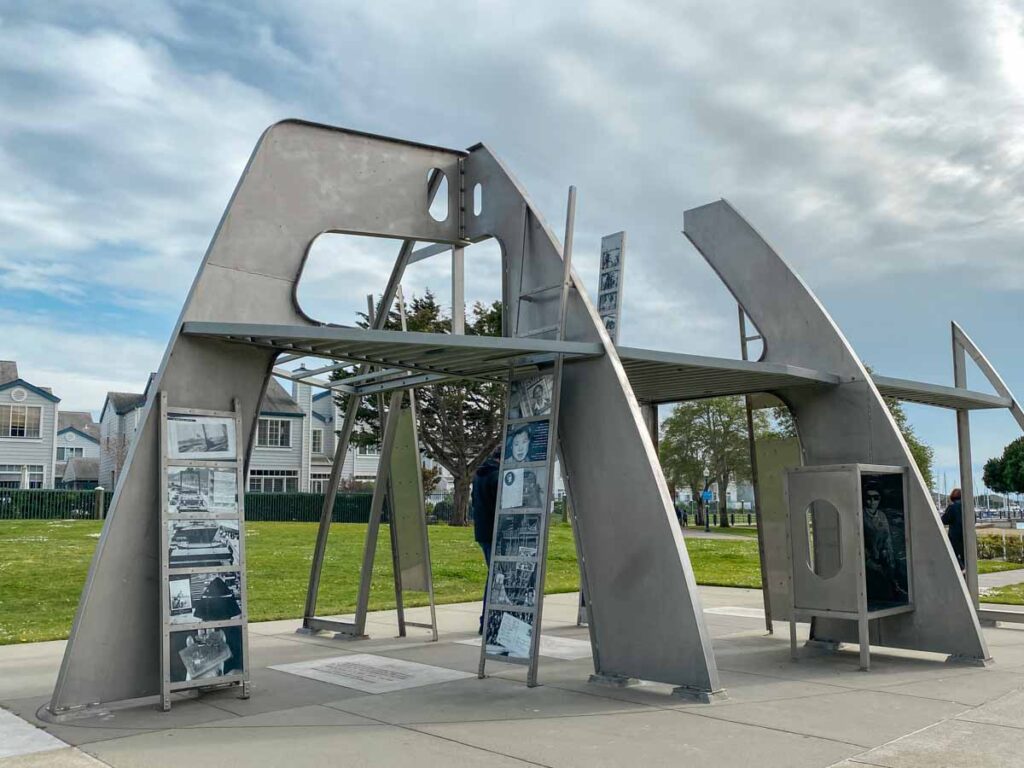
Rosie the Riveter WWII Home Front National Historic Park
The Bay Area’s manufacturing capacity really booted up during WWII. Women were given job opportunities that had previously been out of reach. This small monument honors the efforts of the many women who stepped up and helped the US deliver on the war effort. The park includes a welcome center with exhibits and a series of sculpture installations with pictures and storytelling.
- Getting There : Located in Point Richmond, which is a few miles north of Berkeley. You could do an East Bay history tour and combine the visit with the John Muir and Eugene O’Neill sites.
- Where to Stay : Most people visit as as an excursion from San Francisco. Use our SF accommodation guide to figure out where to stay for all budgets.
- More info on Rosie the Riveter .
John Muir National Historic Site
John Muir loved nothing more than to put a few sandwiches into his pockets and take off into the wilderness. But when he wasn’t doing that, he was writing and raising his family in Martinez, California.
Muir and his wife Louisa Strentzel lived on her family’s 2,600 acre fruit ranch. The historic site includes the ranch grounds, a 10,000 square foot home, Muir’s gravesite and a historic adobe building. Self-guided cell phone tours are available.
- Getting There : Located in Martinez, CA, 22 miles northheast of Oakland.
- More info on the John Muir historic site and some inspirational quotes by John Muir .
Port Chicago National Memorial
We experienced our worst WWII homefront disaster at Port Chicago. At Port Chicago Naval Magazine, 320 men were instantly killed when two ships being loaded with ammunition for the Pacific theater troops blew up. The waterfront site acknowledges and memorialized the disaster.
- Getting There : Located in Concord, CA, 28 miles southeast of Oakland and not far from the John Muir house.
- More info on Port Chicago .
Pinnacles is another California national park that was formed by volcanic action. The magma fields and subsequent erosion have created a landscape with towering rock spires and caves. The park is home to nesting California condors, peregrine falcons, golden eagles and 13 species of bats.
Pinnacles is the least visited of California’s national parks, with only 177,000 visitor per year. More elbow room for you then!
There are 30 miles of hiking trails in the park. Most notable are the 5.3 mile Old Pinnacles to Balcony Cave trail or the more strenuous 6+ mile High Peaks loop trail. Please note that there isn’t a road that goes through the park. So you either park at the west entrance for limited day hikes. Or use the east entrance for camping and access to more trails.
- Getting There : Located 76 miles south of San Jose.
- Where to Stay : The closest motel is the Days Inn 30 miles away in King City. Your better bet is the the Pinnacles campground , which has tent sites, tent cabins and RV spots.
- Entrance Fee : $30 per car.
- More info on Pinnacles National Park .
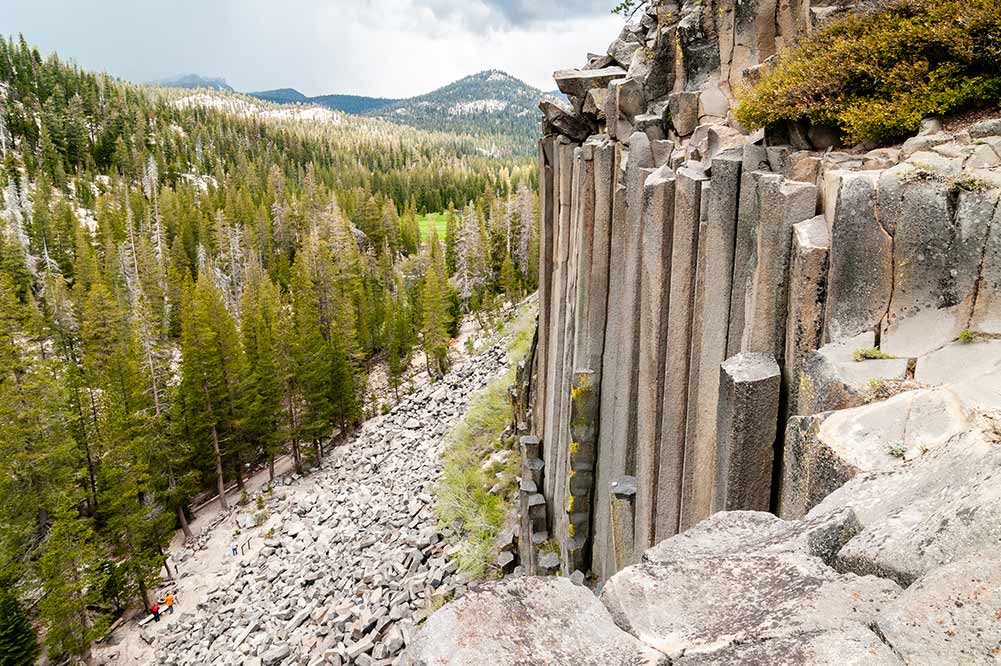
Devil’s Postpile National Monument
These funky basalt columns are formed when cooling lava shrinks into uniform(ish) hexagons. Basalt Columns are found around the world (Russia, Iceland, Northern Ireland, the Golan Heights), but they are rare enough to be notable. The columns at the Devil’s Postpile are believed to have been formed about 100,000 years ago. You can find them in the Eastern Sierra high alpine setting and they are surrounded by pine forest and waterfalls.
Notable hikes include the 1.3 mile Devils Postpile loop and the 4 mile Rainbow falls trail. The monument is also located very close to Mammoth Lakes and all of the other amazing recreational opportunities available along the Highway 395 corridor . The park is only open in the summer and fall, and during busy times, you’ll need to take a shuttle.
- Getting There : Located 13 miles west of Mammoth Lakes.
- Where to Stay : There is plenty of lodging options in Mammoth Lakes, like the Mammoth Creek Inn and the Village Lodge . The NPS campground at Devil’s Postpile is closed, but there are 5 forest service campgrounds in and around Reds Meadow .
- Entrance Fee : The shuttle is $15 for adults and $7 for kids.
- More info on the Devil’s Postpile .
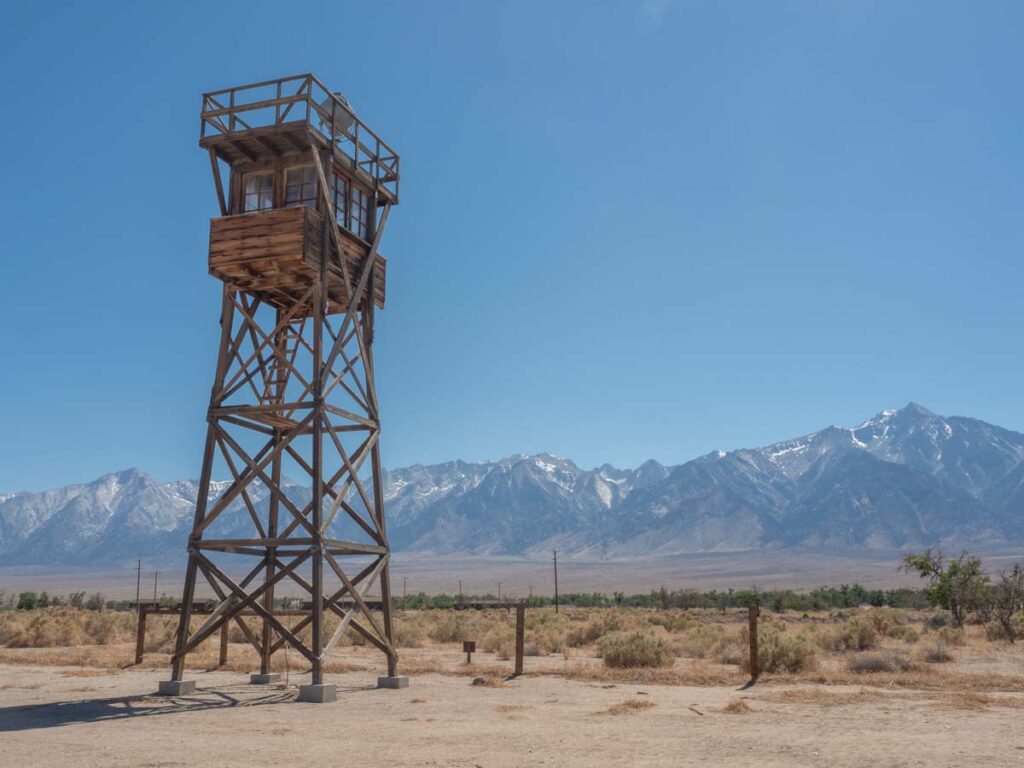
Manzanar National Historic Site
The attack on Pearl Harbor not only definitively drew us into WWII, but it gravely wounded the American psyche and triggered a lot of fear. One of our national responses to that fear included rounding up 110,000 Japanese-Americans citizens, and interring them in military-style prisoner camps. Manazanar was one such camp, housing 10,000 people during the war.
The historic site has a series of reconstructed buildings that show housing conditions, the school room and the mess hall. There is also a touching cemetery and memorial.
We recommend making time for it as one of the top sites to visit near Lone Pine in the Eastern Sierra.
- Getting There : Located 11 miles north of Lone Pine.
- Where to Stay : There is a range of basic motels in Lone Pine , or try the the well-rated Mt. Williamson Motel & Basecamp in nearby Independence.
- More info on Manzanar National Historic Site .
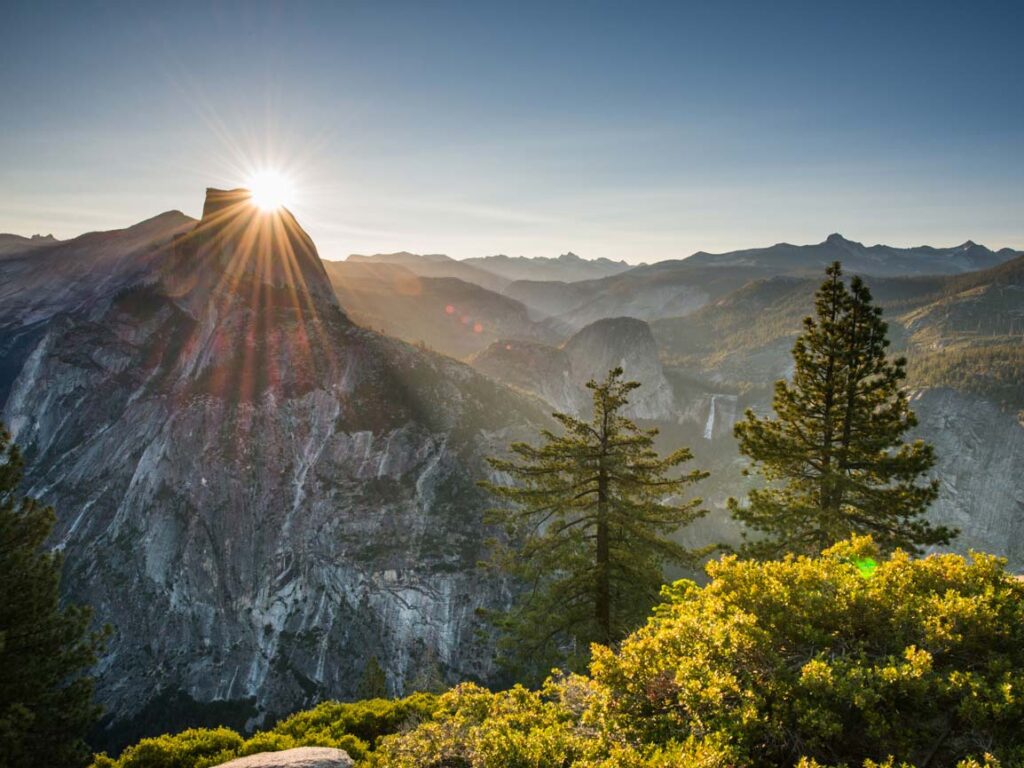
Yosemite was first protected in 1864 and is one of our first national parks. It’s best known for its waterfalls, sheer granite cliffs, Giant Sequoia groves and 1,200 square miles of pine forest. After the Golden Gate Recreation Area, Yosemite is our most popular national park in California, with 4.4 million annual visits.
The Pacific Crest Trail and the John Muir trail both transit through Yosemite’s wilderness. But the most popular parts of the park are in Yosemite Valley. Popular things to do in the valley include the Yosemite Valley loop trail, the lower Yosemite falls hike, the Mirror Lake loop and the Glacier Point overlook. But there are also some fantastic hikes out of Tuolumne Meadows and the Mariposa Giant Sequoia grove in the south part of the park is also worth it.
- Getting There : Located 194 miles east of SF and 316 miles north of LA.
- Where to Stay : Try the Yosemite Plaisance B&B in Mariposa or the Yosemite Valley Lodge right in the park. Yosemite also has 7 campground, but they book up very quickly.
- Entrance Fee : $35 per car.
- More info on Yosemite National Park .

Sequoia and Kings Canyon National Park
Legally speaking, Sequoia and Kings Canyon are actually two separate national parks. But the NPS manages them as one unit, so we have combined them here.
The “Giant Forest” was designated a national park in 1890 and 50 years later, Kings Canyon was added to the mix. Sequoia National Park’s primary purpose is conservation of the massive Giant Sequoia redwood tree, which is the largest tree (by density) in the world. Kings Canyon also has sequoias but it is also home to an amazing glacial canyon along the San Joaquin river.
Popular sites in King’s Canyon include the General Grant Grove and the Redwood Canyon area. And for Sequoia it’s the Giant Forest with the General Sherman tree. Connecting both is the scenic Highway 180, which we have flagged as one of the most scenic drives in California .
Please note that Sequoia NP and the surrounding Sequoia National Monument were damaged in the recent KNP fire and some groves and trails may be inaccessible.
- Getting There : Located 240 miles east of SF and 247 miles north of LA.
- Where to Stay : Try the Sequoia Resort in Badger or the budget friendly Comfort Inn in Three Rivers. The two parks have 14 campgrounds (some only available seasonally) and there are many other forest service campgrounds in the surrounding area.
- More info on Sequoia and Kings Canyon National Parks.

There is something so beautiful about Death Valley’s landscape. Death Valley is hot and sandy and rocky and it’s most definitely not trying to be your best friend. The park presents a stark, sharp landscape that rewards visitors who are looking for something more edgy. Death Valley features sand dunes, ghost towns, salt flats and towering mountains.
Popular things to do include hiking Golden Canyon or Sidewinder Canyon , the Mesquite Dunes at sunrise (pictured above), the Artist’s Palette drive, Badwater Basin and the Zabriskie Point overlook.
- Getting There : Located 270 miles northeast of LA.
- Where to Stay : Both The Ranch and The Inn are right in the heart of the park. We also have a full accommodation guide , which has some budget friendly options. If you are camping, check out our full camping guide for Death Valley .
- More info on how to visit Death Valley National Park and also some fun facts .
César Chávez National Monument
Widely recognized as the most important Latino leader in the United States during the twentieth century, César E. Chávez led farm workers in the establishment of the country’s first permanent agricultural union, which helped the workers with higher wages and safer working conditions.
While on-site, you can take advantage of the Visitor Center, see the desert garden and visit the memorial garden where Chávez is buried.
- Getting There : Located just north of Tehachapi.
- More info on César Chavez National Monument .

The Channel Islands are like California’s Galapagos. These eight islands are just isolated enough from the California mainland to have evolved some unique plants and animals that you don’t see anywhere else (like the island fox). Visiting the islands are a treat for fans of snorkeling, kayaking, hiking and whale watching.
The most popular and accessible island is Santa Cruz. It’s just an hour from the port at Ventura and it has nearly 90 miles of hiking trails.
Plan your trip well in advance because the ferry service sells out quickly.
- Getting There : Located 1-4 hours offshore from Ventura.
- Where to Stay : Hotels close to the harbor include the Ventura Beach Marriott and the Holiday Inn Express Ventura Harbor . There are a limited number of camp spots on the island but you’ll need to bring in everything (including water).
- Entrance Fee : Ferry rides are $32 for adults and $22 for kids.
- More info on how to visit the Channel Islands .
Santa Monica Mountains National Recreation Area
The Santa Monica mountains are LA’s backyard playground. This recreation area is 158,000 acres with 500 miles of hiking and mountain trails and 41 miles of coastline. And that doesn’t even count the adjacent areas that include the Topanga and Point Mogu state parks and the Malibu and Zuma state beaches.
Popular hikes include the 3 mile Solstice Canyon loop, 6 miles sections of the Backbone trail and the 6 mile Sostomo and Deer Valley loop. Or do a multi-day hike on the more rigorous Backbone trail.
- Getting There : Located 45 miles north of downtown Los Angeles.
- Where to Stay : For southern access, try the Surfrider in Malibu. Or base yourself the east in Santa Monica and stay at the Channel Road Inn . The NPS hosts one campground in the recreation area but there are also 14 state campgrounds in the area.
- More info on how to visit the Santa Monica Mountains .
Castle Mountains National Monument
Castle Mountains is the newest offering in California’s national park portfolio. It was dedicated in 2016 and is attached to the Mohave National Preserve (noted below). The monument sits squarely in the Mohave desert. It houses the rare Joshua Tree and is also home for migratory desert bighorn sheep.
Castle Mountains is not a fully developed park. It does not have designated trails, nor a campground. However, you can access it on dirt roads via a 4×4.
- Getting There : 68 southeast of Baker or 82 miles southwest of Las Vegas.
- More info on how to visit Castle Mountains .

Mojave National Preserve
This 1.6 acre park is larger than Joshua Tree, but way off the radar. However, we do recommending visiting it if you are road tripping between Death Valley and Joshua Tree . The park features sand dunes, cindercone volcanoes, joshua trees, spring wildflowers and mining ruins.
There are 24 miles of established trails and a lot of opportunity for backcountry bushwacking. There are several paved roads that run through the park, but Mohave is really fun for people who like to go offroading. Popular features include the Kelso Dunes, the joshua tree forest and the Rings Loop.
- Getting There : 104 miles north of Joshua Tree or 148 miles south of Furnace Creek in Death Valley.
- Where to Stay : The park has two developed campsites but they also allow disbursed undeveloped camping, which are usually accessed via 4×4.
- More info on how to visit Mojave National Preserve .

After Yosemite, Joshua Tree National park is the most popular formal national park site in California. Of course, it features the iconic joshua tree. But there is also a lot of cool mining sites, day hikes, killer sunset views and clear skies for stargazing. And the nearby town of Joshua Tree also features some funky art installations.
Popular things to do in the park include the Barker Dam trail, the Wall Street Mill trail, the lost horse mine loop, the Cholla cactus garden and Key’s View.
- Getting There : 48 miles north of Palm Springs.
- Where to Stay : For some western kitsch, stay at the Joshua Tree Ranch House . There are also a ton of cool glamping options and cabins for rent . Inside the park, you’ll find 8 campgrounds.
- More info on how to visit Joshua Tree , a 1-day itinerary and some fun facts .
Cabrillo National Monument
Cabrillo National Monument commemorates the landing of Juan Rodriguez Cabrillo at Ballast Point in 1542. It was the first European expedition to land in what is now the Western US. It sits on a lovely peninsula of land right in San Diego.
Popular things to do including touring the lighthouse, spotting migratory whales, hiking the bayside trail or tidepooling along the Point Loma trail.
- Getting There : 12 miles west of downtown San Diego.
- Where to Stay : Base yourself downtown at the funky Staypineapple Hotel Z or the bay front Springhill Suites . If you are camping, try to snag a spot at the Silver Strand state beach.
- Entrance Fee : $20 per car.
- More info on how to visit Cabrillo National Monument .
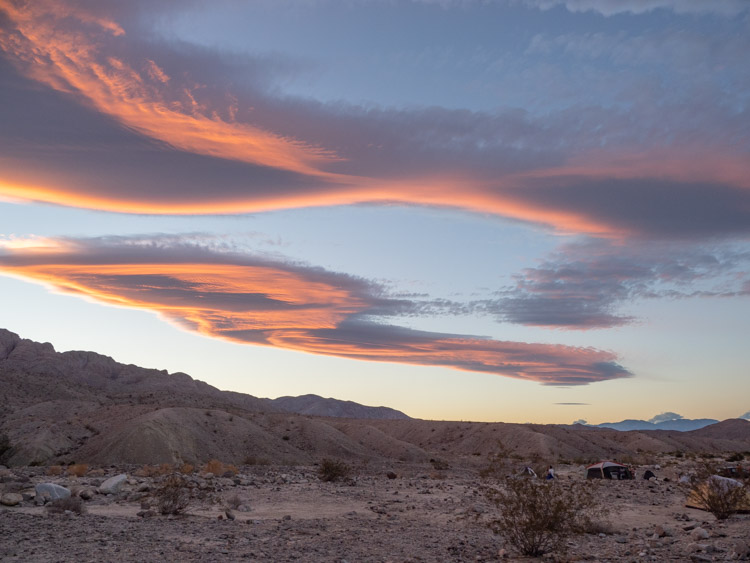
Pan Regional National Historic Trails
These historic trails aren’t in any one particular spot. But rather, they show historically significant routes which were critical in the colonization and settlement of California. These trails ultimately became some of our most important highway routes and they represent some of California’s most scenic byways . The key to getting the most out of any of these trails is to road trip them, taking the time to stop at historic markers and regional history museums along the way.
Juan Bautista de Anza National Historic Trail
in 1775, Juan Bautista de Anza led 240 intrepid folks on an epic 1,200 mile journey to establish the first non-Native settlement at the San Francisco Bay. They followed the route of the Rio Sonora, transiting through what is now Nogales and worked their way west through Arizona, north through San Bernardino and then up what is now Highway 101 to SF.
Key stops would include Anza-Borrego State Park, Griffith Park, Pismo Beach, Fort Ord, Henry Coe State Park, Crystal Springs trail and Golden Gate Park. Missions of note for this journey include San Diego, San Gabriel, Santa Barbara, San Luis Obisbo, San Juan Bautista and Mission Dolores.
Old Spanish National Historic Trail
This trail represents the old pack mule trail that rode west west between Santa Fe, New Mexico and Los Angeles. A good chunk of it follows what became historic Route 66. Key stops on the California segment include the Mohave Preserve/Kelso and the Route 66 museum in Barstow.
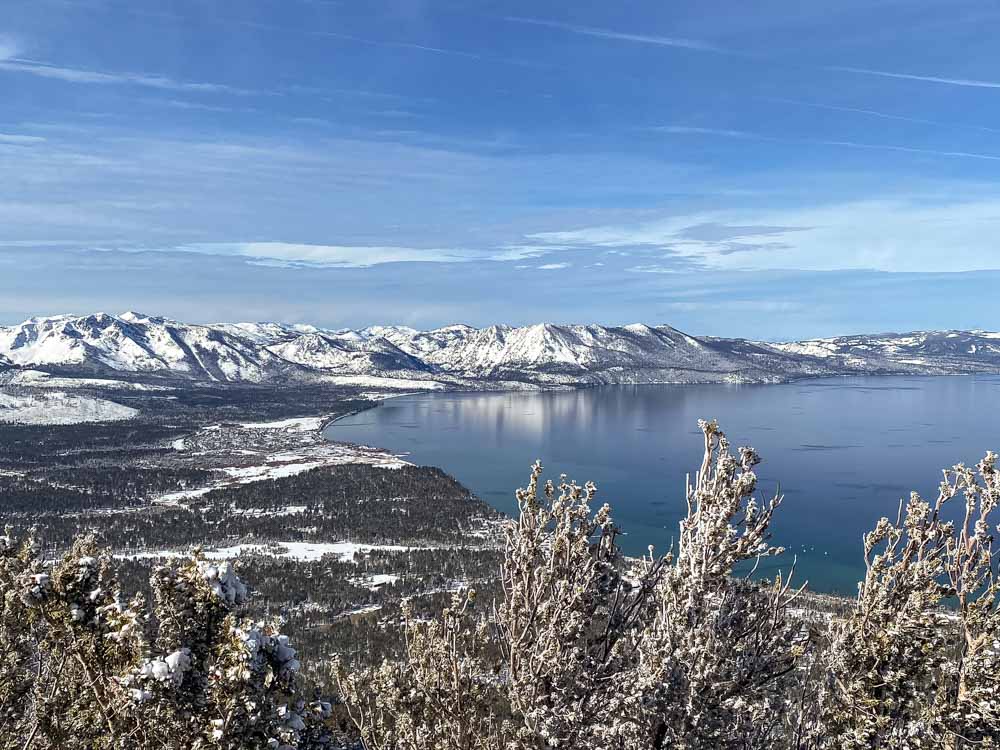
California National Historic Trail
When the California Gold Rush started in 1848, it opened a floodgate of immigration to California. This historic routes are preserved by the California National Historic trail. It’s a constellation of routes that led to some of California’s key gold mining towns.
These trails came west from Nevada before splintering to Highway 139 (through Lava Beds), Highways 44 and 36 (through Lassen), Highway 70 (to Oroville), Interstate 80 (through North Lake Tahoe), Highway 50 (through South Lake Tahoe) and Highway 108 (over Sonora Pass).
Pony Express National Historic Trail
The Pony Express only ran for 18 months between 1860-61, but it helped to form a strong identity for the American West. This trail runs 1,000 miles from St. Joseph, Missouri to Sacramento, California. The California section of the route starts in Carson City, Nevada and follows what is now Highway 50. Key stops include southern Lake Tahoe, Placerville and old town Sacramento.
Share these CA National Parks on Pinterest:

Share with your friends
Leave a Comment Cancel reply

Awesome California National Parks Road Trip You Need to Do
By: Author Rob Taylor
Posted on Published: September 30, 2022 - Last updated: September 18, 2023
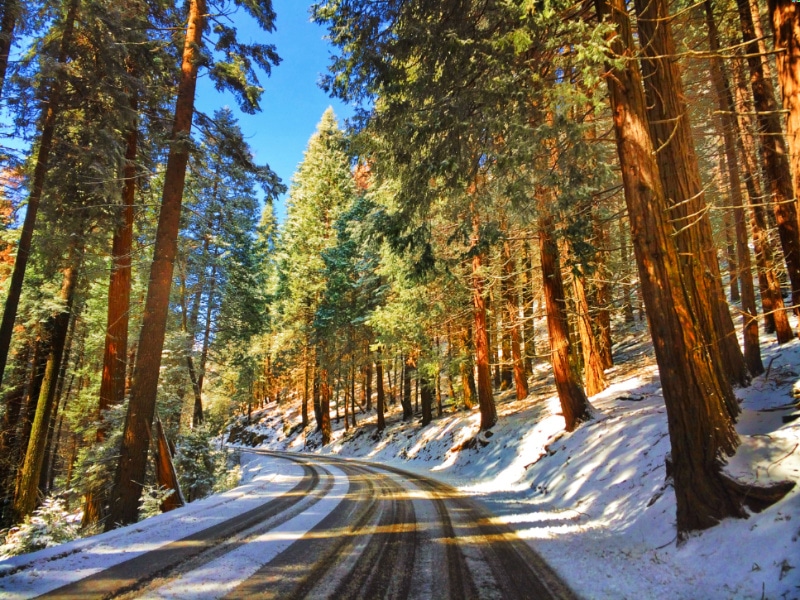
There will never be enough time to do all the road trips we want to, but through research and experience we try to share only the best of what we love. This Awesome California National Parks road trip will take you through the mountains and along some of the coast. Iconic sights and off the beaten path hikes make this road trip unforgettable.
This specific California National Parks road trip is ideal to do in 10 days or more. If you are strapped for time, cut the trip in half and plan to do the mountains portion separate of the Bay Area and California coast .
Jump to 10 Day California National Parks Road Trip plan!
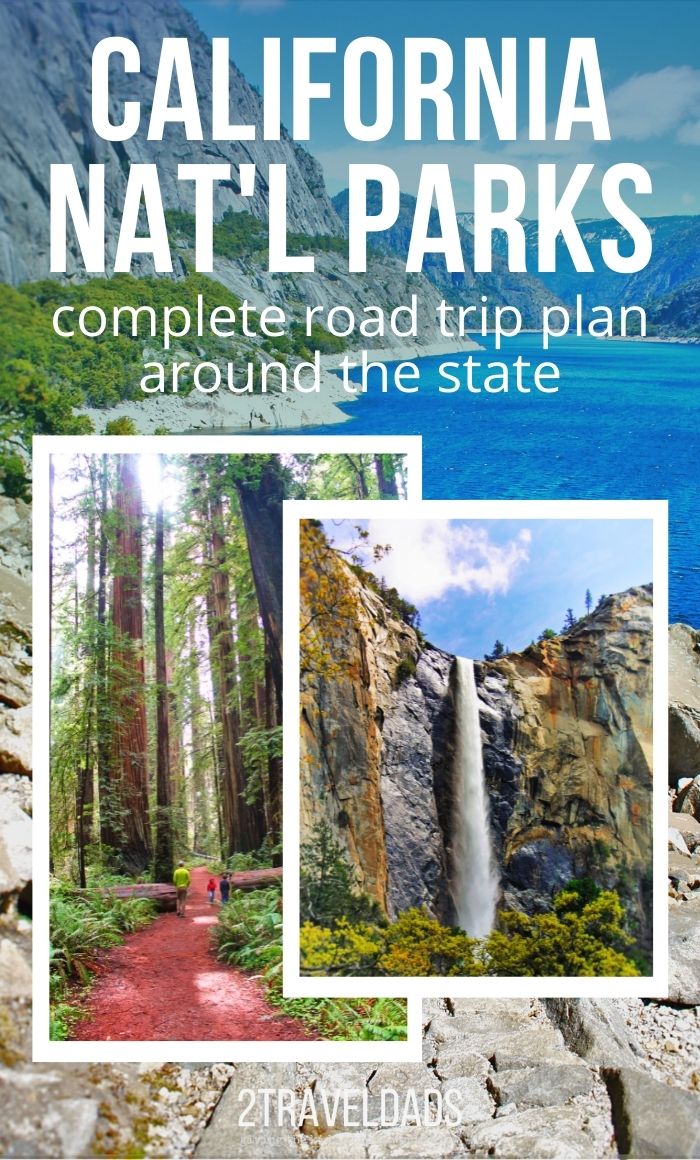
Within the below road trip plan you’ll find links to our favorite tours or sights, suggested guides for different types of experiences and we’ve built in search boxes to easily book hotels or vacation rentals along the way. Vacation rentals are great if you want to cook your own meals on vacation and save money or if you have strict dietary requirements.
When you’re doing a road trip like this it’s easy to just have one night in each destination, but if you can swing the time, you’ll never regret having two nights in most places. That will give you time to explore more deeply and enjoy extra hikes!
Check out our complete California Travel Guide!
What to Expect on a California National Parks Road Trip
You may have heard about our epic towering trees road trip that we did through California. It was full of beautiful National Park sites and unique learning experiences. Well, this IS THAT TRIP!
This is the 10 day California National Parks road trip that really brings you the best of nature and the California culture. Everything is planned for you here so this road trip is really easy and will keep the stress to a minimum.
Get my book, The Road Trip Survival Guide!
You should expect to have a few long drives throughout the road trip plan, but always with worthwhile stops between destinations. You should also plan for a variety of weather events. California is typically sunny and warm in summer, but when you hit the coast, it’s anyone’s guess what the weather will do.
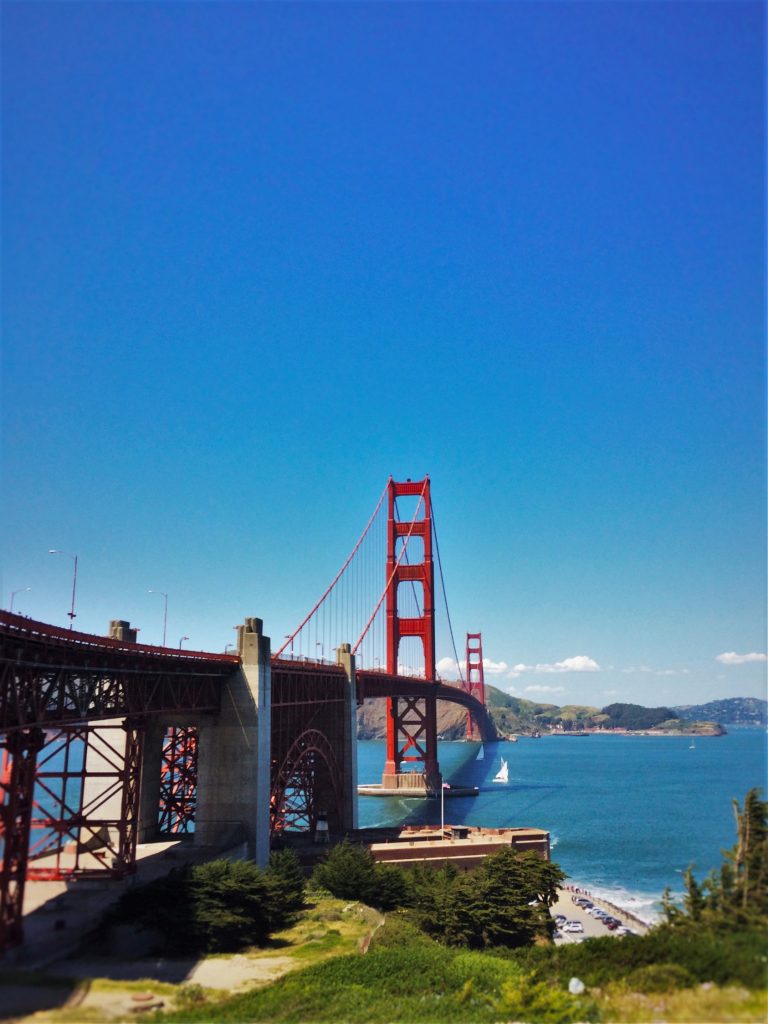
When to do the CA Parks Road Trip
The best time of year to do a California National Parks road trip is either late spring or early fall. You’d think summer would be great, but truth be told that’s when EVERYBODY and their grandma tries to visit all the National Parks . If you can plan your road trip for the beginning of May through the beginning of June, you’ll get the best weather AND the smallest crowds.
Note : I wrote the Road Trip Survival Guide as a way to help people plan road trips like this – avoiding crowds and enjoying the road trip experience, including in the off-season.
For fall road trips in California consider common public school schedules when you’re planning. A majority of schools in the state go back to school in August, so when September rolls around the crowds have really begun to subside. True, popular places like Yosemite will continue to be rather busy into winter, but must less so than peak summer tourists.
Tip : California is one of the best places to enjoy fall colors , both in National Parks and wine country. If you can loop the state in October, you’ll be in awe of the leaves.
If you choose to do a winter California National Parks road trip be sure to pack chains for you car and be prepared to face a fair number of road closures or limited access. Mount Lassen, Yosemite , Kings Canyon and Sequoia National Parks all get a healthy helping of snow starting in fall.

Where to Start a California NPS Road Trip
Where you begin your California National Parks road trip depends on where you live. If you are a California resident, you may need to reorder this itinerary to make more sense for you, but if you’re flying from out of state, you can follow our road trip plan and hit the National Parks in this order quite easily.
Use our Road Trip Planning Tool to make this travel plan just right for you (and help you budget it too!)
National Park Road Trip from Los Angeles or San Diego
You’ll see on the 10 day California National Parks road trip itinerary that we begin by heading out of the Bay Area. If you’re starting in Southern California, you can still do the road trip in the given order. If you’d like to do it in reverse order, it is easy to add Joshua Tree National Park or Death Valley National Park to the plan. These can also be added to the end of the itinerary.
If the desert isn’t a part of your ideal road trip plan, just head directly up either the 101 ( El Camino Real and the California missions ), the 1 ( Pacific Coast Highway, rugged and beautiful ) or the 5 (the boring but fast interstate). Whichever route you choose to start, have fun but don’t get too distracted because you have lots of awesome things to do on the California National Parks road trip ahead!

Road Trip out of the San Francisco Bay Area
Starting a road trip out of the San Francisco Bay Area is the easiest when it comes to convenience and adding extra days to you trip. With three airports all with direct flights from nearly anywhere in the USA or Canada, finding flight deals into the Bay Area is a breeze.
When it comes to additional day to add to your trip, spending time in San Francisco or the coast out by Santa Cruz and Half Moon Bay is always a good idea. And you can’t forget Napa / Sonoma for a few extra days too. We loved our stay at the Bodega Bay Lodge on the Sonoma Coast and would add that to a road trip again in a heartbeat.
Another easy addition to the trip if you’re starting in San Francisco is doing a jaunt down to Monterey or Pinnacles National Park . Both are fairly close to the Bay Area and worth the extra day or two.

Driving to California from Out of State
California is bordered by Oregon, Nevada and Arizona, so if you are driving to Cali from anywhere else in the USA, you have lots of awesome options for either fun stops or extra days to plan on the road trip.
If you’re coming from the north, there are some wonderful Oregon road trip stops , including Crater Lake National Park or Oregon Caves National Monument . Or you could drive along the ocean doing the complete Oregon Coast road trip !
If you’re crossing through Nevada, in the northwest portion you’ll find Lake Tahoe and Carson City (love love love Carson City!). Driving through Las Vegas ? Enjoy the crazy colorful rocks and petroglyphs of Valley of Fire State Park .
For those coming from the east and driving through Arizona, I-10 will take you through Phoenix and Tempe where there are lots of fun places to visit, including the amazing Desert Botanical Gardens . The northern Arizona route is fun too with stops in Sedona and Grand Canyon National Park. And did you know that there are some beautiful, remarkable places to kayak in Arizona ?
For the, hands down, most epic National Park road trip you could possibly imagine, add the California loop onto the end of a massive road trip that includes the Utah National Parks , as well as Yellowstone National Park and Glacier country . Wow! What a trip that would be!
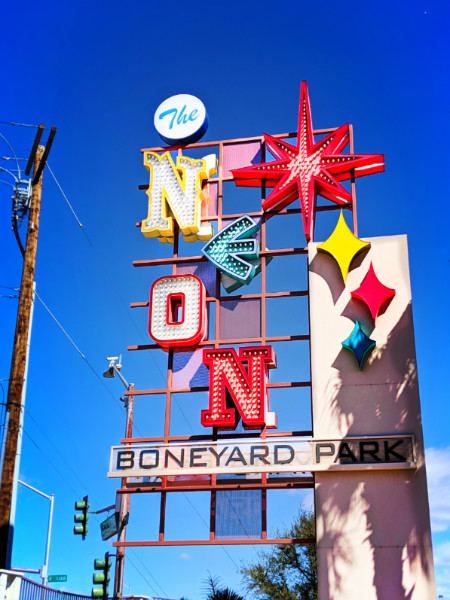
Things to Do on a California National Parks Road Trip
So, here are the details of all the amazing stops to make on this road trip. While the focus is visiting California National Parks, there are several wonderful state parks and unique things to do along the route.
San Francisco to Begin
Who doesn’t love San Francisco? I think that SF is a great place to start your California National Parks road trip because the city itself is wonderfully historic and walking around it will get you primed for hiking. San Francisco’s many hills, like Telegraph Hill , and valleys make it a fun, unique city to explore.
The food scene, touristy spots like Pier 39 , and wonderful cultural hubs like the Castro or Haight-Ashbury make it a California must visit. Since this is the start/end of the road trip plan, you can easily spend a few days in San Francisco to make the most of your trip.
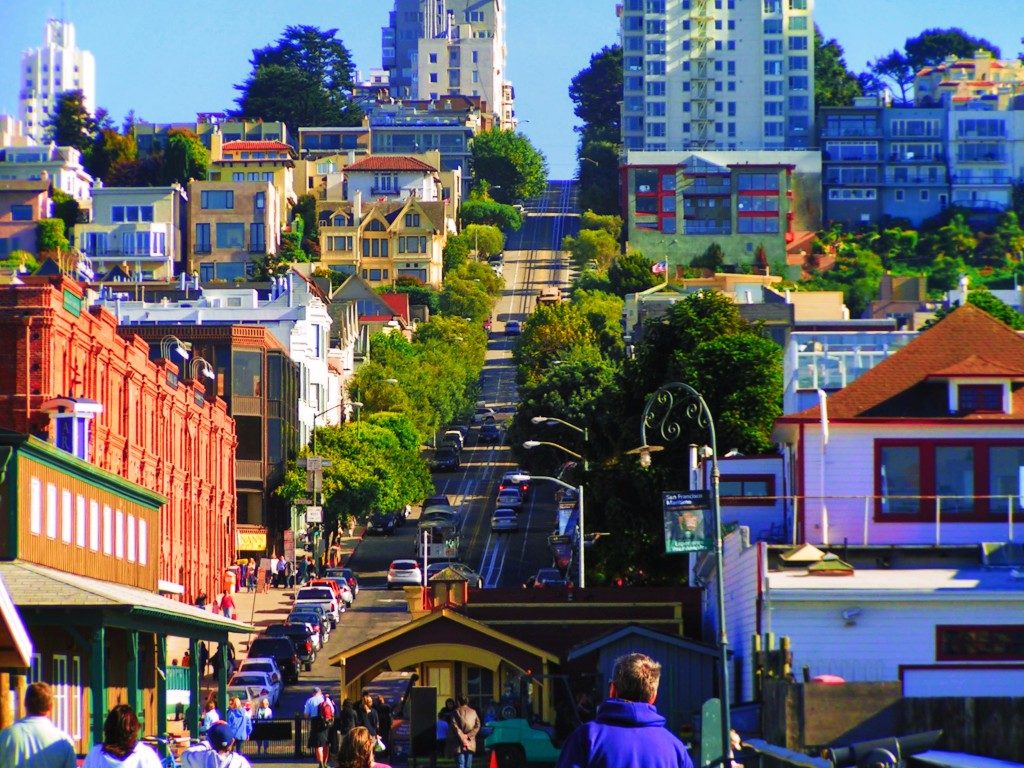
Golden Gate Recreation Area
A bonus of visiting San Francisco to start your road trip is checking off several National Park site, including the Golden Gate Recreation Area . This awesome National Park Service collection ranges from the Presidio (waterfront by Cow Hollow) to the Sutro Baths on the Pacific, to the Golden Gate Bridge itself .
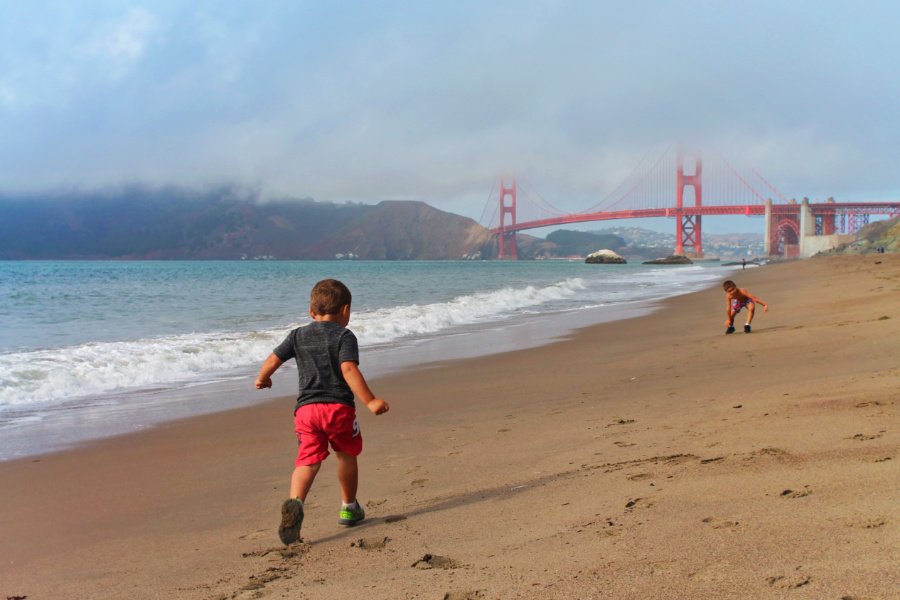
Check out our guide to the Bay Area National Parks for more sites to visit!
Muir Woods National Monument
We love visiting Muir Woods National Monument and doing the many easy hikes. This is your first taste of the famous California Redwoods and you won’t be disappointed. Get there early for the best lighting in the woods and the smallest crowds.
What makes Muir Woods so special for me is that when I was a kid I was obsessed with Star Wars, which was filmed in the area. Getting to visit Muir Woods National Monument for the first time was like walking in the steps of Luke Skywalker and I will never forget it.
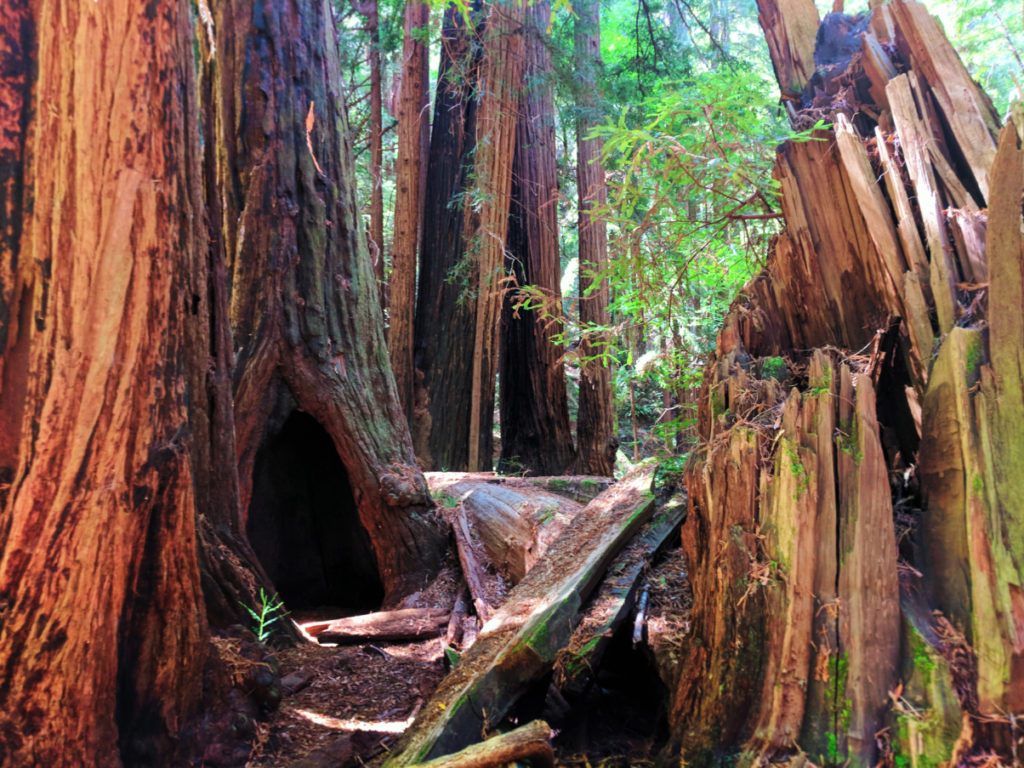
Healdsburg for Wine Country
You really could stop in several different towns to explore wine country, but Healdsburg is fun and easy along our California National Park road trip route. Visit for an afternoon or plan to do an overnight, but stop into Healdsburg for both high class and family friendly winery visits. Alexander Valley Vineyards or Preston Farm and Winery are two great options.
Tip : Sonoma and Napa valleys are wonderful to visit for some of the best fall colors in California . And if you plan it right you might even be able to be there for Crush!

Victorian Eureka
I love Eureka , but every time we visit it’s a cloudy, overcast day or week. Every. Single. Time. It’s a beautiful town though.
Eureka boomed during the lumber age of Northern California so the money pouring into the town created some beautiful neighborhoods and mansions. Our favorite spot to stay in Eureka is the Carter House Inns , as it’s a collection of hotel suites in several beautifully maintained Victorian buildings. Love it!
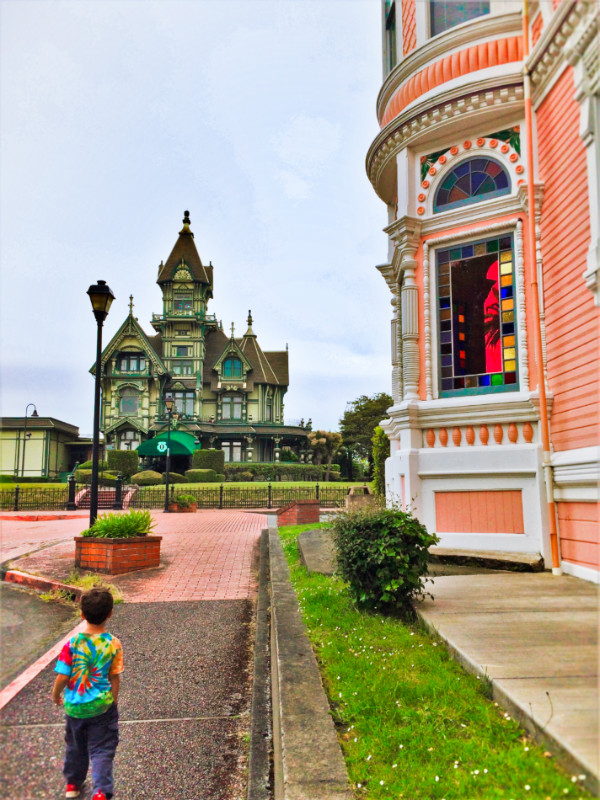
Redwoods National Park
Something you need to know about Redwoods National Park is that it’s also a state park system. The Redwoods make for some of the best stops on a California National Parks road trip. Redwoods National and State Parks include beautiful hiking trails through some of the biggest trees on earth, beaches with amazing dark sand, and quiet forest glens.
We particularly love the Jediddiah Smith Redwoods and Lady Bird Johnson Grove areas. We like making these stops because the trails are unique and you get the best of the redwoods in a short jaunt.
As you explore redwood country, you’ll see there are actually a bunch of drive-thru trees of redwood tree tunnels. They usually have an additional fee, but they’re fun for the novelty of it.
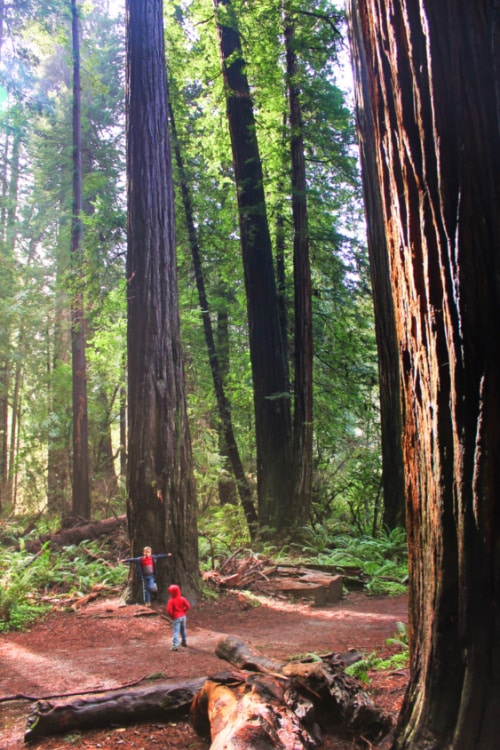
Mount Lassen Volcanic National Park
Mount Lassen Volcanic National Park has seen a burst in popularity since I was a kid, and it really is one of the best things to do in Northern California . It’s an unusual National Parks road trip stop in that it’s an actual active volcano. Even though it’s not necessarily going to blow tomorrow, the geothermal activity all around Mount Lassen is unique to National Park sites (except Yellowstone’s geysers and springs ).
At Mount Lassen Volcanic National Park, check out the Sulphur Works, Boiling Lake, and other hydrothermal areas. Watch for some of the prettiest California waterfalls around here too! There are lots of great hikes on the south side of the mountain, so take a day or two for your visit and get the full Mount Lassen experience.
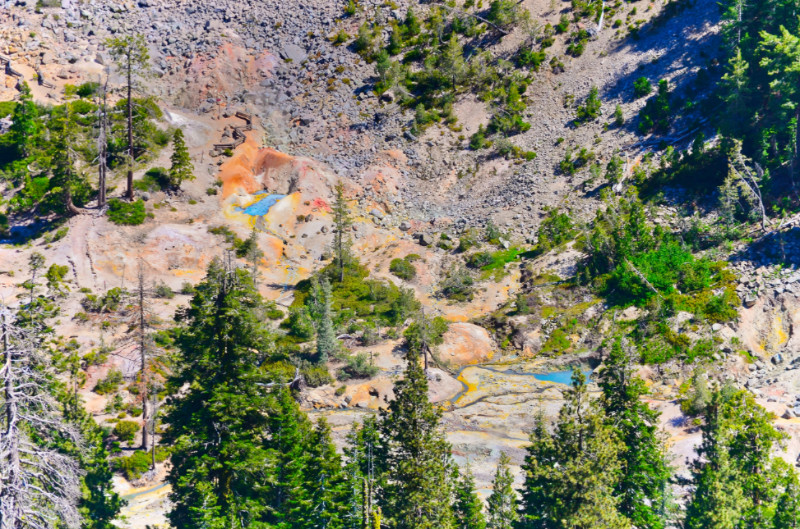
Reno and Lake Tahoe
Because visiting Mount Lassen brings you so close to Lake Tahoe, you have to visit. I know that it’s not one of the California National Parks but there are state parks all around the lake and you’ll feel regret if you skip over it. Having done both the California and Nevada sides of Lake Tahoe, I can say that I prefer the Nevada side.
Book the Tahoe East Shore Biking Tour here!
Visiting Reno-Tahoe on its own is a wonderful trip ( awesome Reno-Tahoe itinerary here !) but just hitting some of the beautiful viewpoints and exploring a bit of Carson City and silver country as you head south is super easy. Carson City is the capital of Nevada, is historic, and is full of great outdoors adventures .
When you’re back to the eastern shore of Lake Tahoe, be sure to stop at Sand Harbor State Park for both beautiful turquoise clear waters and even beach time. If you brought your own paddling gear, be sure to do some kayaking out of Sand Harbor.
Book Sand Harbor Guided Kayaking here!
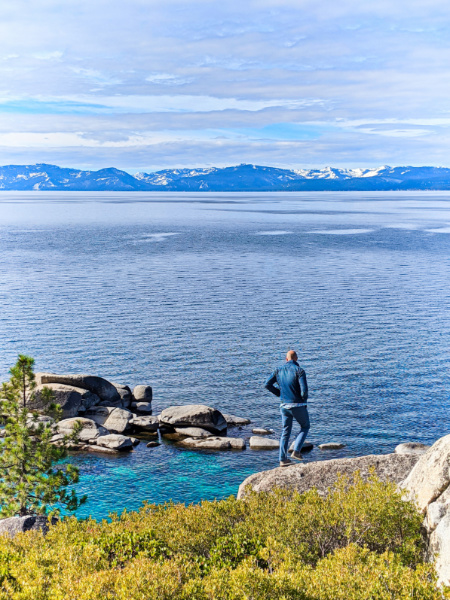
South Lake Tahoe
As you loop down the eastern shore of Lake Tahoe you’ll come to South Lake Tahoe, which is a ski destination and is full of casinos. I recommend breezing through to your next destination if you can, but there are some unique stops to enjoy too, like the riverboat cruise out of Zephyr Cove .
There are some fun tourist activities in summer in South Lake Tahoe, particularly if you’re into mountain biking or boating. These typically require you to bring your own equipment, but at least with biking you can usually do a tour for the more mellow trails if you didn’t bring mountain bikes.
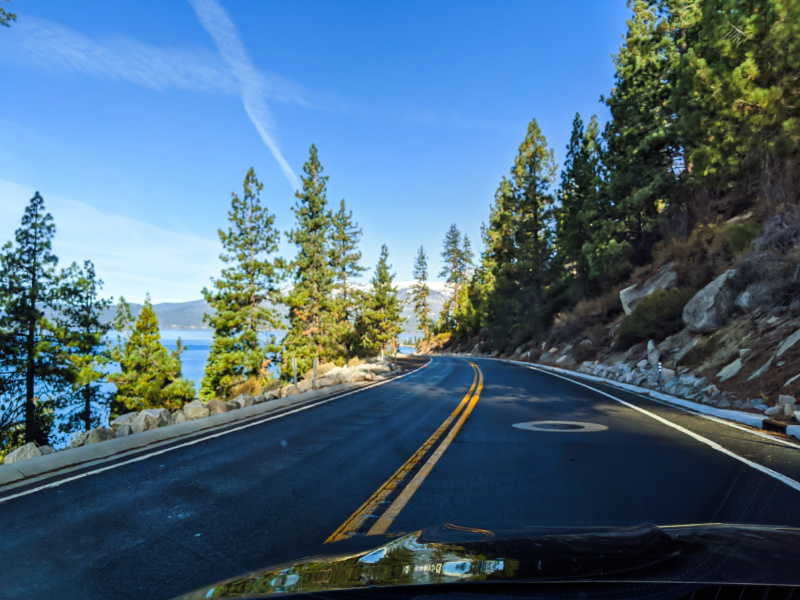
Mono Lake, Mammoth Lakes and Crowley Lake
This is such a cool, special part of the California National Parks road trip. Before you get to Yosemite, you have to pass by a fair number of lakes in the Sierras. They are all different and you’ll find some really unusual geology along the way.
Starting with Mono Lake you’ll find some unique monoliths out in the lake and along parts of the shore. Mono Lake Tufa State Nature Reserve is a great place to geek out over weird old calcium formations.
From here head an hour south to the Crowley Lake Stone Columns , which are another strange geologic feature. The columns along the lake were a mystery for a long time and now they’re just really cool and beautiful to check out. This is some of the weirdest geology around Mammoth and the Eastern Sierras .
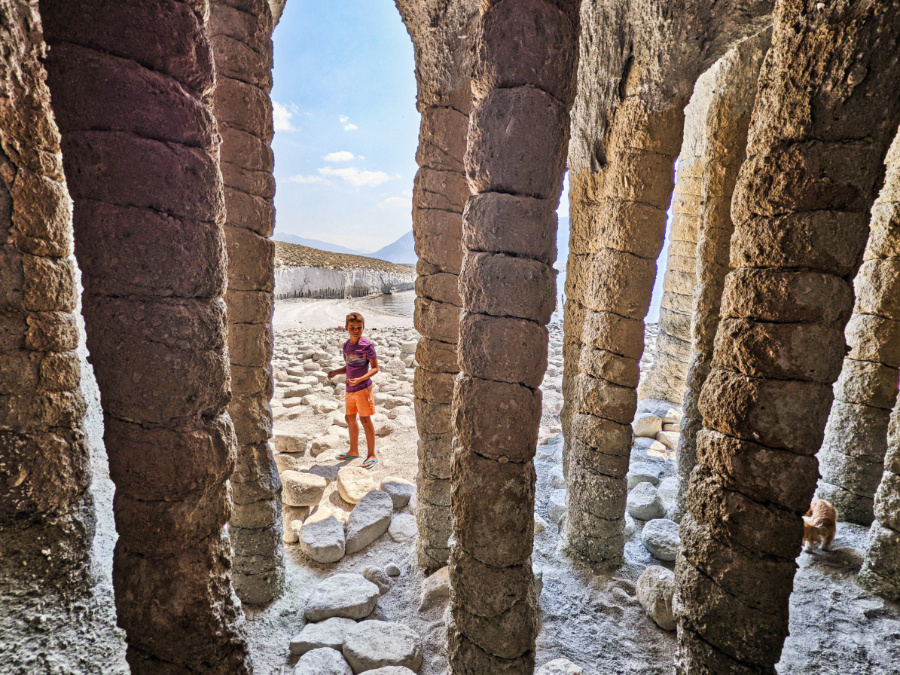
Lastly, Mammoth Lakes is typically known for being a great place for skiing, but in the summer, it’s a hiking and paddling destination. Lake Mary, Lake Mamie, and Twin Lakes make for wonderful kayaking or SUP spots . There are lots of viewpoints and fun restaurants, so enjoy your time here before heading into Yosemite National Park. If you happen to be doing your road trip in winter, Mammoth Lakes is a popular ski and snow play destination, so visit Mammoth Lakes to get your winter fix!
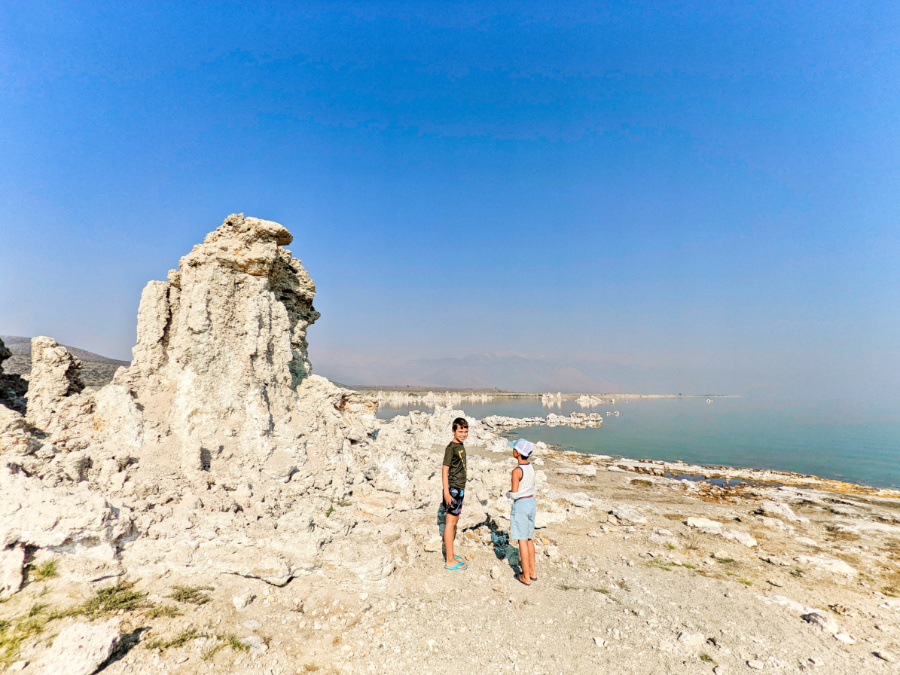
Yosemite National Park
I will never forget the first time I visited Yosemite National Park . In the first ten minutes within the park boundary I saw a black bear. Over the years I’ve enjoyed climbing Half Dome , hiking to countless waterfalls and relaxing on the valley floor. Visiting Yosemite with kids is great because there are so many kid friendly sights and hikes. That’s what makes it one of the best National Parks in California !
Tuolumne Pass, Meadows and Grove
You’ll see so many things in the Yosemite area with the name Tuolumne. Meaning “cluster of stone wigwams” it perfectly captures the essence of the region. Tuolumne Pass and meadows are the first part of Yosemite National Park that you’ll pass through when coming from Mono Lake.
I love this part of the park because it’s so quiet with very few visitors. As you drive through the pass, there are streams and small waterfalls along the valley hillsides, and the exposed granite patches are just beautiful.
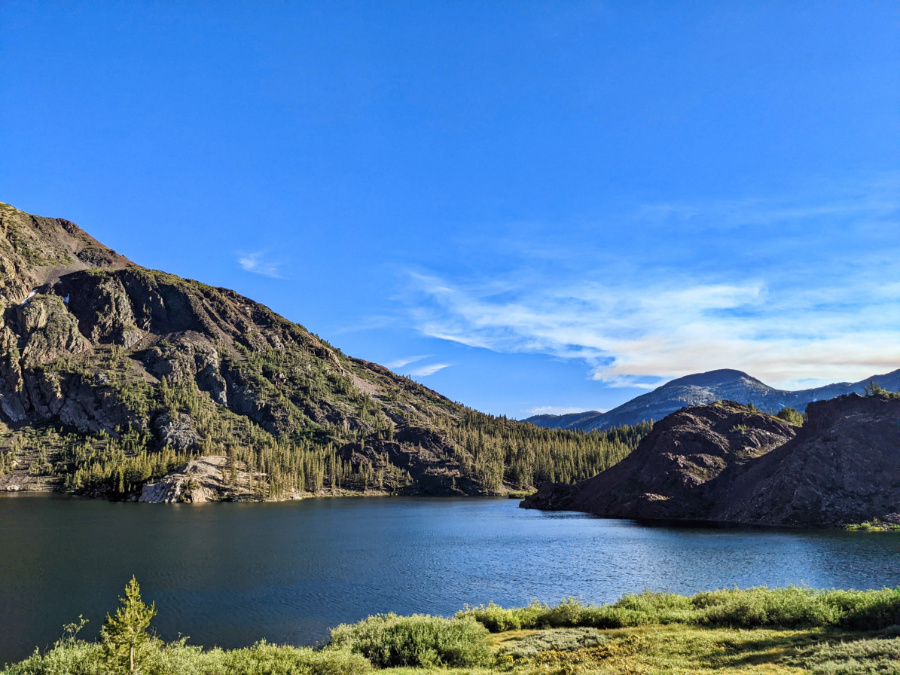
Hetch Hetchy Valley
Visiting the Hetch Hethy Valley is so cool… and most people totally skip over it. Located far from the main Yosemite Valley, there is a damn at the Hetch Hetchy that flooding the whole valley, so hiking along the lake is a unique thing to do in the park.
At the end of the lake trail is one of the most beautiful waterfalls in Yosemite National Park: Wapama Falls. After one of the prettiest hikes you’ll do at any point during the California National Parks road trip, you’re rewarded with rainbows and mist as you get up close to Wapama Falls.
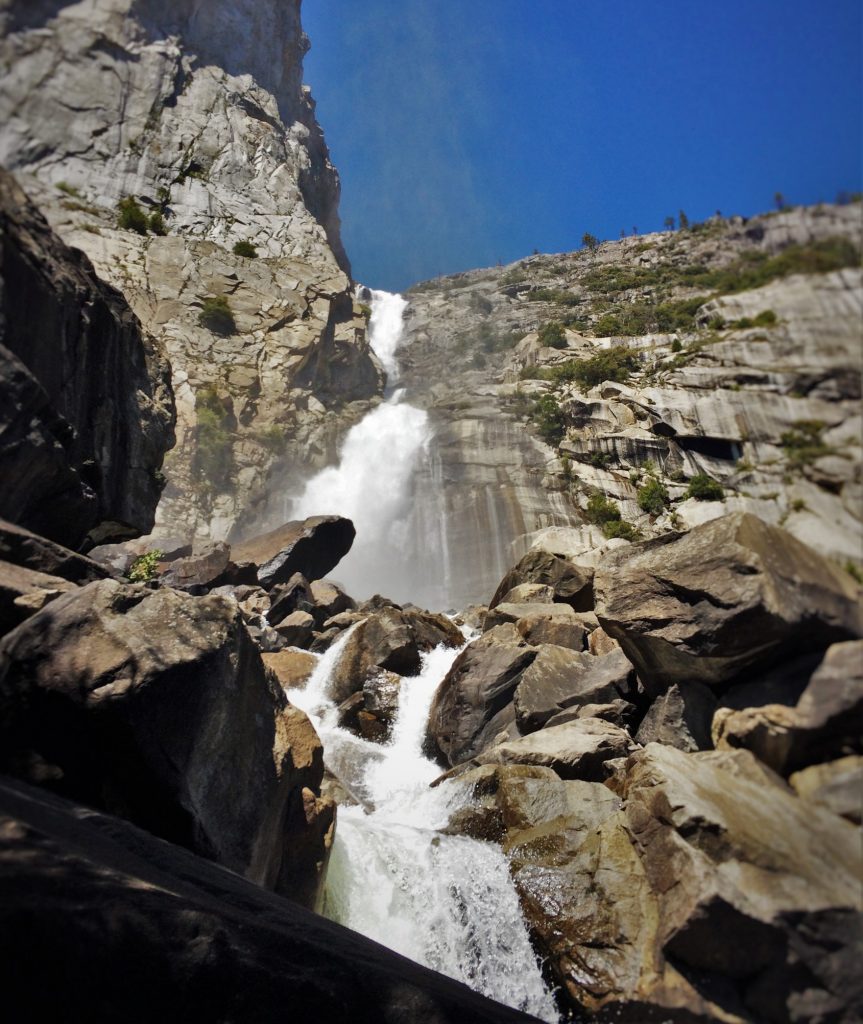
The Yosemite Valley
You can easily tour the Yosemite Valley on your own, making stops at the waterfalls and historic structures. If you like though, the Yosemite Valley Tram Tour is actually pretty great, and is perfect with small kids. Whichever way you choose to explore, the Valley is worth visiting, even on a crowded day.
Book a Yosemite Valley Tour here!
Be sure to make stops along the way as you go through Yosemite National Park. Tunnel View in Yosemite is both a great easy stop and a hiking departure point. Pull over here before leaving the park for a great last experience in one of the best California National Parks.
Tip: if the Glacier Point Road is open, drive it and be wowed even more!

Kings Canyon National Park
Kings Canyon National Park is really cool and tends to be overlooked. Sweeping views, giant sequoia trees and great picnic spots make it a fun, easy stop on your road trip route. The John Muir Lodge within the park is conveniently located at Grant Village so it’s not far from some of the main sights of the park.
Begin at the Grant Grove to experience sequoias up close, including walking through the Fallen Patriarch (giant hollow tree tunnel). Then move onto the Zumwalt Meadows where an easy hike will take you into the valley and you’ll be surrounded by Kings Canyon’s granite mountains.
It’s really easy to experience the best of the park by driving the Kings Canyon Scenic Byway . You’ll get nearly a complete tour and it’s all absolutely beautiful!
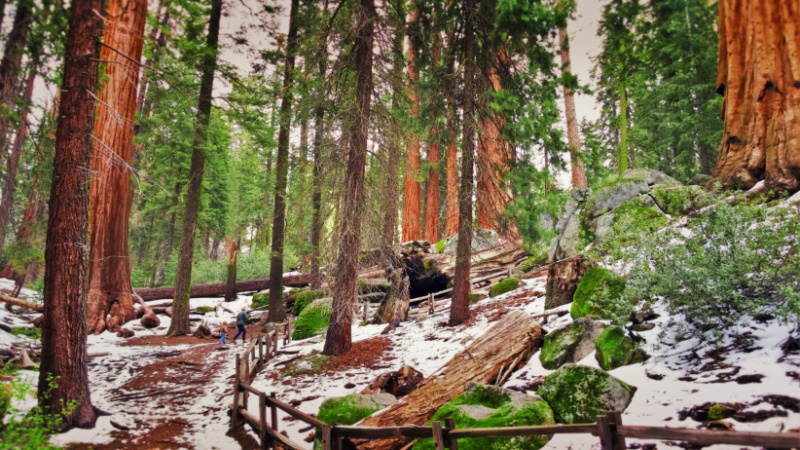
Sequoia National Park
Sequoia National Park is the last official stop on our 10 day California National Parks road trip. I love Sequoia. Whether you’re staying at the Wuksachi Lodge in the park or maybe you’re camping, there are ample hiking opportunities nearby.
Visiting the General Sherman Tree and grove, the Giant Forest and the Crystal Cave will take a day. Add stops like Medicine Rock, Mineral King hiking or even visiting Mount Whitney just beyond the park to make it a final hurrah and make the most of your time in the Sierras.

10 Day California National Parks Road Trip Plan
Start : Fly into San Francisco Bay Area (SFO, OAK, SJC) – spend the night in the Bay Area.
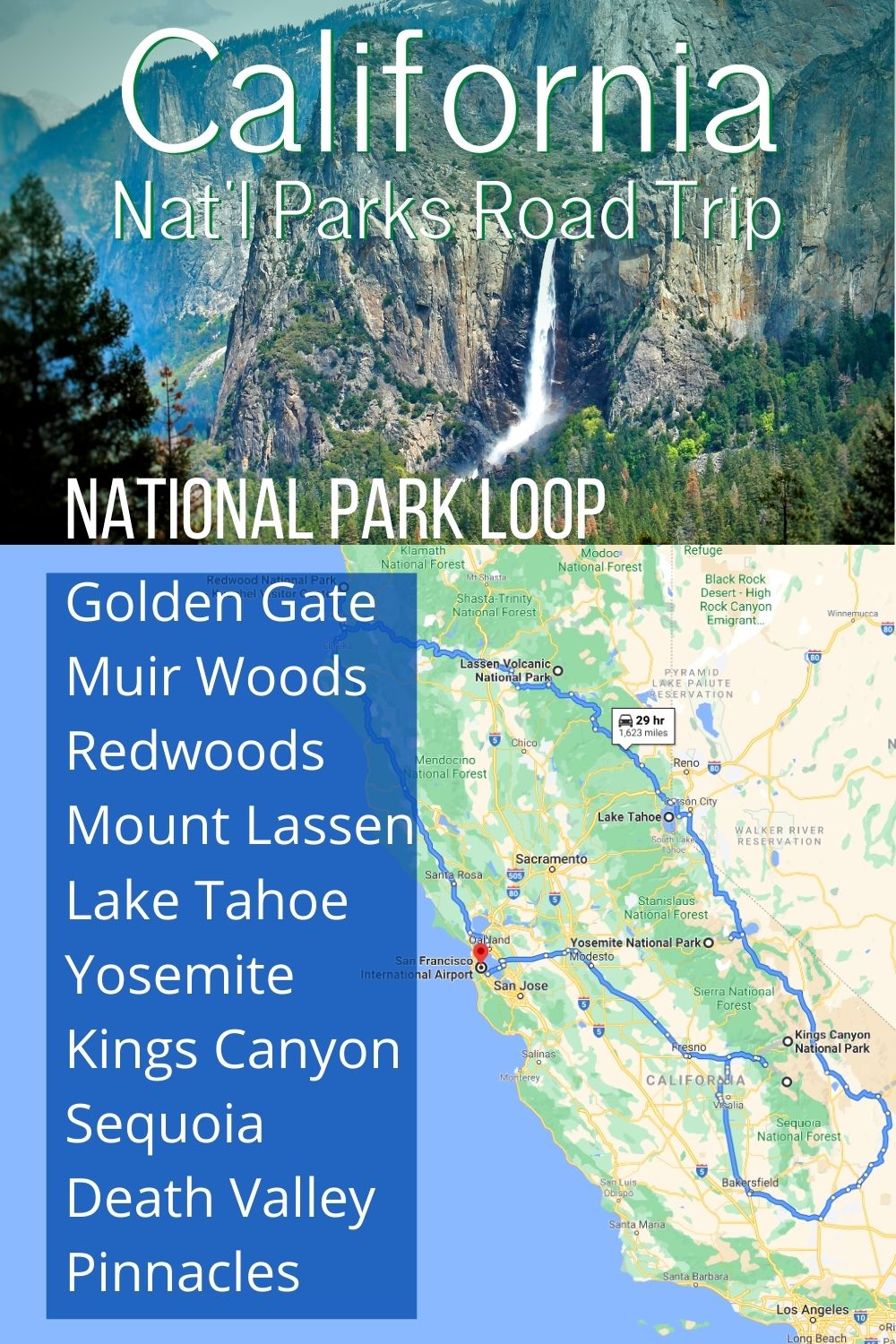
Day 1: San Francisco to Wine Country
Leave San Francisco early by crossing the Golden Gate Bridge to Marin County. Your first stop is at Muir Woods National Monument, aka the Forest Moon of Endor, for a hike among the redwoods. Continue north through wine country stopping in Healdsburg for wine tasting and a meal. Continue through wine country to Ukiah. Stay here to relax and explore, or drive onto Eureka.
Sleep in: Ukiah or Eureka (2 hours further)
Search for hotels in Eureka HERE or Ukiah HERE
Day 2: Eureka and Redwoods National Park
Spend the morning exploring a bit of Victorian Eureka, the gateway to the redwoods, and then head north to the Lady Bird Johnson Grove in Redwoods National Park. Enjoy some beach time, drive through a redwood tree or two, and then head back to Eureka for the night. The food scene in Eureka is surprisingly vibrant, like in a large metropolitan city, so be sure to enjoy a nice meal.
Sleep in: Eureka
Day 3: Lassen National Volcanic National Park
Driving to Mount Lassen Volcanic National Park is a gorgeous adventure. Make stops along the way to enjoy the rivers and grab lunch and snacks for later when you drive through Redding. Arrive at Mount Lassen around lunch time to check out the Sulphur Works, Boiling Lake, and other hydrothermal areas.
Sleep in: Mineral, Chester or drive to Reno (+2 hrs)
Search for lodging in Mineral HERE or Reno HERE
Day 4: the Best of Lake Tahoe
Yes, we’ve left California )but just temporarily). From Reno you’re heading to Lake Tahoe, where you can either take the eastern or western route. On the east, make a stop at Sand Harbor or Secret Cove, or on the west explore D.L. Bliss State park. Both offer some of the most clear waters in Lake Tahoe and are dotted with the iconic boulders near the shore. Grab lunch in South Lake Tahoe before you continue onto Mono Lake. Enjoy the sights of the salt water lake and it’s bizarre geologic wonders.
Sleep in: Mono or Lee Vining
Search for lodging in Mono or Lee Vining
Day 5: Unknown Yosemite National Park
Today is one of two days in Yosemite! Beginning with a hike at the Tuolumne Meadows, enjoy a side of Yosemite National Park most visitors don’t even know exists. From here head to the Hetch Hetchy Valley, stopping at the Rainbow Pool or hiking to the Tuolumne Grove (sequoias) along the way. Enjoy the easy (but long) hike along the Hetch Hetchy Reservoir with towering granite cliffs and monoliths all around.
Sleep in: Groveland
Search for hotels in Groveland / West Yosemite
Day 6: Famous Yosemite Sights
Start your day early so you can beat the crowds. Today is all about the Yosemite Valley. By making stops at Bridal Veil, Lower Yosemite Falls, and the Ansel Adams Gallery you’ll get the best of the park. For a challenging but unforgettable hike, do the Half Dome trail stopping at Vernal and Nevada Falls. Pre-registering for a permit is required to go to the top of Half Dome. When you’re done in the Valley, head south out of the park, stopping at Tunnel View and the Merced Grove before you leave.
Sleep in: Oakhurst
Search for lodging in Oakhurst / South Yosemite
Day 7: Explore Kings Canyon National Park
Kings Canyon National Park is your next stop. Begin at the Grant Grove to experience sequoias up close, including walking through the Fallen Patriarch (giant hollow tree tunnel). Then move onto the Zumwalt Meadows where an easy hike will take you into the valley and you’ll be surrounded by Kings Canyon’s granite mountains. Sleep in: Sequoia National Park
Search for lodging in Sequoia NP or Three Rivers
Day 8: Best of Sequoia National Park
Sequoia National Park is fun and fascinating. Start with a stroll through the General Sherman Tree area, followed by the loop through the Giant Forest. Make a reservation for a cave tour so you can explore the Crystal Cave. Finish the day by climbing up Morro Rock for sunset.
Sleep in: Sequoia National Park
Day 9: Sequoia NPS and Beyond
Explore just a bit more of Sequoia National Park before you leave. Start with the Tokopah Falls hike out of the Lodgepole area. Then visit the tunnel log, Hospital Rocks, and head out to your departure city.
Sleep in: Fresno or your departure city
Search for hotels in Fresno

Bonus Days to Enjoy on the California National Parks Road Trip
There are more hikes in all of these National Parks that are truly unique and exciting. Add a day at any of them to dig deeper into each park. And if you’re staying at one of the many lodges or ranches outside of the parks, having time to relax and explore the National Forests outside of the parks is always a good idea.
Depart: Fly out of Fresno (FAT) or out of your initial Bay Area airport
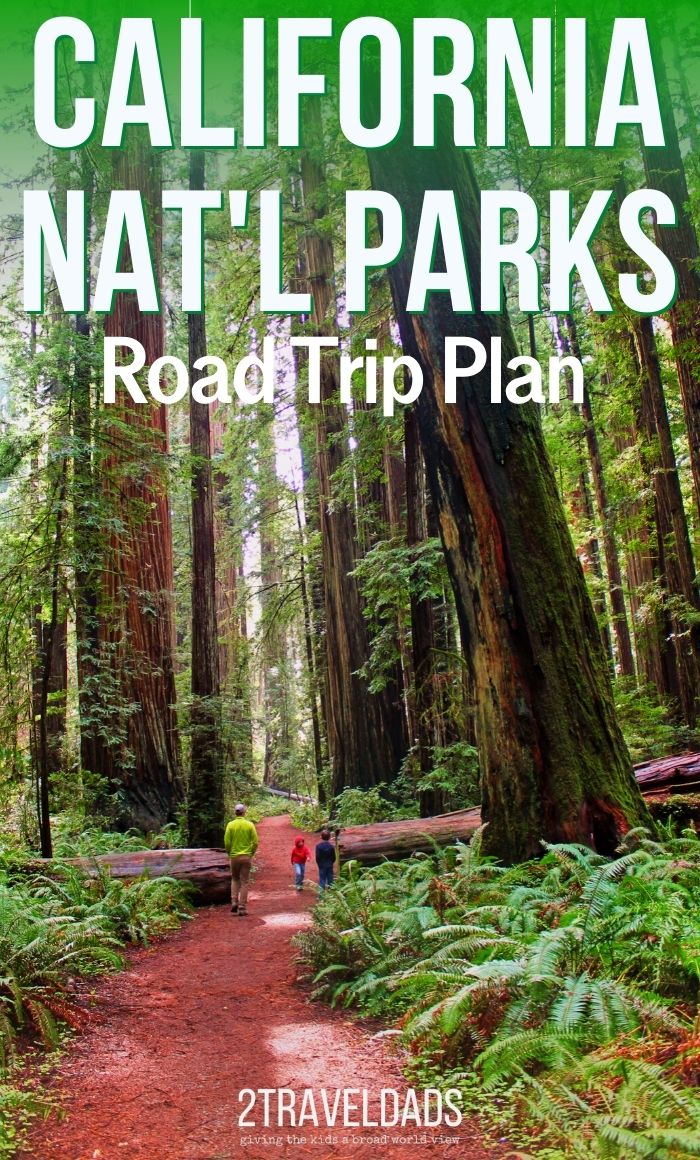
Richard Stokely
Monday 14th of June 2021
Very good information has been given in your article, the material you have written is very useful, I have learned a lot from it. California National Park, Reno and Lake Tahoe, Mount Lassen Volcano National Park, Redwoods National Park, Golden Gate Recreation Area are all very beautiful places, this place is worth seeing.
PRESENTED BY TRAVELODGE BY WYNDHAM
How to plan an epic summer trip to a national park
We’ve got insider tips on the best times to visit the most popular parks, timed entry passes, and where to stay.

As summer approaches, the siren call of national park adventures grows stronger. However, these iconic sites are bringing in unprecedented crowds.
In 2023, the National Park Service (NPS) reported over 300 million visits , a four percent increase from the previous year. This surge isn’t limited to famous spots; lesser known parks such as Congaree and Dry Tortugas are also experiencing record-breaking numbers. To manage the influx, park authorities are implementing innovative strategies to improve the guest experience.
( These are the 10 most popular national parks .)
From snagging the perfect stay to timing your bookings just right, we’ve got insider tips to ensure your national park vacation is nothing short of epic. Here’s what you need to know.
Best time to visit
Timing is crucial in planning your summer getaway, especially if you’re eyeing popular national parks. Finding affordable lodging and activities during the high season can be tricky.
During the shoulder seasons—early- to mid-spring and late fall—you can expect pleasant weather and a reprieve from the crowds, but there are a few trade-offs to consider. Some hotels and lodges might close during the off-season and reopen later in the year, potentially limiting your accommodation options. Additionally, parks at higher elevations, such as Glacier or Lassen Volcanic , may not have all their trails open and could require snowshoes or traction cleats to get around.
( Here’s why Yellowstone in the off-season is great for families .)
Arriving before sunrise has its perks, too. Typically, most visitors don’t arrive until mid-to-late morning, allowing you to enjoy attractions like Arches ’ Windows or Delicate Arch with minimal crowds, provided you arrive early enough.
When permitted, exploring the parks in winter offers a unique perspective that few experience. Yosemite Valley, for instance, transforms into a winter wonderland —a sight cherished by photographers and nature enthusiasts alike.
Tony McDaniel, a Yosemite Mariposa County spokesperson, says the best way to plan a visit is to avoid taking a “checklist approach” to your visit.
“Slow down and immerse yourself in the destination,” McDaniel says. “There’s no place on earth like Yosemite National Park , and it’s best seen slowly and outside of a vehicle where you can fully embrace the sights, sounds, and smells.”
What parks require timed entry passes?
Timed entry reservations typically provide access within a two-hour window. The price of the pass, however, does not include the standard park entry fee. But, a separate timed entry permit is unnecessary if you already have campground reservations, a wilderness permit, or bookings for a pre-arranged, park-sponsored activity. Additionally, if you plan to stay inside the park for multiple days, only one timed entry reservation is required—just make sure not to leave the park during your visit.
Although these passes can reduce a trip’s spontaneity, NPS spokeswoman Kathy Kupper says they also lead to better park experiences.
“Visitors love the timed entry system,” Kupper says, “because it gives them increased confidence that they’ll be able to get in and get where they want to go.”
If you miss out on a timed entry reservation, don’t fret. Ditch your car and opt to walk or bike into the park at any time of day. Glacier National Park adjusts its timed entry program annually, including relocating entry gates beyond the visitor center, where guests can hop on a shuttle bus to access the park.
( Ready to plan your fall hike? Read this safety advice first .)
Arches: Timed entry reservations will be required from April 1 to October 31. The reservation system operates on a rolling basis. For example, June 1–30 bookings opened March 1; July 1–31 reservations opened April 1. A limited number of reservations will also be released at 7 p.m. MST the day before, providing some flexibility for last-minute planners to Utah.

Glacier: For travelers intending to drive along the iconic Going-to-the-Sun Road or head to North Fork, Montana, a vehicle reservation is mandatory between 6 a.m. and 3 p.m. from May 24 to September 8. Similarly, from July 1 to September 8, a reservation is required to access Many Glacier between 6 a.m. and 3 p.m. These reservations can be secured up to 120 days or approximately four months in advance, starting at 8 a.m. MST. Additionally, a limited number of next-day vehicle reservations will be released at 7 p.m. MST for those seeking entry on the following day on a rolling basis.
Mount Rainier : Two areas of this Washington State park—Paradise Corridor from the south and Sunrise Corridor from the northeast—will require reservations from 7 a.m. to 3 p.m., May 24-September 2, and July 4-September 2, respectively. Each corridor requires a separate vehicle reservation, valid for a single day per vehicle. Note that reservations are unnecessary when entering the park from a different entrance.
Rocky Mountain : Between May 24 and October 20, reservations are required for entry into this Colorado park. Two types of reservations will be available: one granting access to the entire park, including the bustling Bear Lake Road Corridor from 5 a.m. to 6 p.m., and another from 9 a.m. to 2 p.m. that excludes access to this corridor. Reservations for May 24 to June 30 can be secured starting at 8 a.m. on May 1. Subsequent reservation releases will follow, with reservations for July becoming available on June 1, and so forth.
Yosemite: Reservations are needed from April to October. On Saturdays, Sundays, and holidays (May 27, June 19, September 2, and October 14) from April 13 to June 30 and August 17 to October 27, reservations are required from 5 a.m. to 4 p.m. From July 1 to August 16, reservations are needed daily during the same hours.
( Discover the best day hikes in Yosemite National Park .)
What parks require a specific area pass?

Acadia : In Maine, Cadillac Mountain Summit Road vehicle reservations are required from May 22 to October 27. About one-third of them can be purchased 90 days in advance, while the rest become available two days before, starting at 10 a.m. Reservations cost $6 and are sold only at https://www.recreation.gov/timed-entry/400000 .
Great Smoky Mountains : While you don’t need a timed entry reservation to enter this Tennessee-North Carolina park, you will need a parking permit to stop for more than 15 minutes. Passes are $5 (daily), $15 (weekly), and $40 (annually). Permits can be purchased in person or online . Passes are good for one vehicle only.
( See fireflies magically light up this national park .)
Haleakalā : To park at Hawaii’s Haleakalā summit for sunrise, you’ll need a parking pass from 3 to 7 a.m. throughout the year.
Shenandoah : Visitors hiking Virginia’s Old Rag Mountain must obtain a $2 day-use ticket in advance from March 1 to November 30. Of the 800 tickets issued daily, 400 will be released 30 days in advance, with the remaining 400 released five days beforehand on https://www.recreation.gov/ticket/10088450/ticket/10088451 .
Zion: You’ll need a timed permit to hike Angel’s Landing in Utah. Lotteries open for June-August hikes on April 1, September-November on July 1, and December-February on October 1. A limited number of next-day licenses will be available at 12:01 a.m. the day before. Hiking groups of up to six people can apply for a permit. Winning groups will be charged an additional $3 per person.
( Not a hiker? That’s not a problem at these eight national parks .)
Best alternatives to national parks
If you’re visiting in the summer, don’t have a reservation, and couldn’t get into the park early enough, you still have options. State parks and national forests surrounding official national parks often offer similar views but with few visitors.
( Go wild—and skip the crowds—at these 7 spectacular parks .)
For example, if you get shut out of Utah’s Bryce Canyon , you can always drive 15 minutes away to the picturesque Dixie National Forest . Instead of being shoulder-to-shoulder with thousands of other visitors on the trails, you’ll be almost entirely alone while overlooking nearly identical scenes.
Where to stay in or near a popular park
Most NPS campgrounds can be reserved six months in advance on a rolling basis through Recreation.gov, but the most popular sites, including Yellowstone ’s Slough Creek or Watchman in Zion , can sell out within minutes. Even if you miss out, you still have plenty of options.
“For something similar to camping in Yosemite Valley, Housekeeping Camp or Curry Village are as close as you’ll get to camping, plus you don’t need to bring a tent,” says McDaniel. “In areas like Wawona, Yosemite West, and Foresta, there are cabin rentals that will still get you into the park. Outside the park, there are hundreds of more options in great locations and historic towns that are generally more budget-friendly and put visitors close to more dining options.”
( These historic lodges are the perfect way to see North America’s wild parks .)
Nearby national forests and Bureau of Land Management areas typically offer established campgrounds or free dispersed camping (areas outside a designated campground). Sites are generally first-come, first-served. Arrive at an established campground between 10 a.m. and noon to score a recently vacated site.
Apps like AllStays and sites like freecampsites.net and Campendium can help tremendously. Signal Mountain Campground in Wyoming’s Grand Teton National Park sells out almost immediately, but on a recent trip to the park, I found an incredible mountaintop dispersed campsite, in Bridger-Teton National Forest . The view of the Tetons was spectacular, made even better because the campsite was free.
Related Topics
- NATIONAL PARKS
- ADVENTURE TRAVEL
You May Also Like

These are the 10 most popular national parks

Ready to plan your fall hike? Read this safety advice first.
Free bonus issue.

Not a hiker? That’s not a problem at these 8 national parks.

How to plan a family summer trip to the Swiss Alps

How to visit Grand Teton National Park

10 national parks to avoid the summer crowds
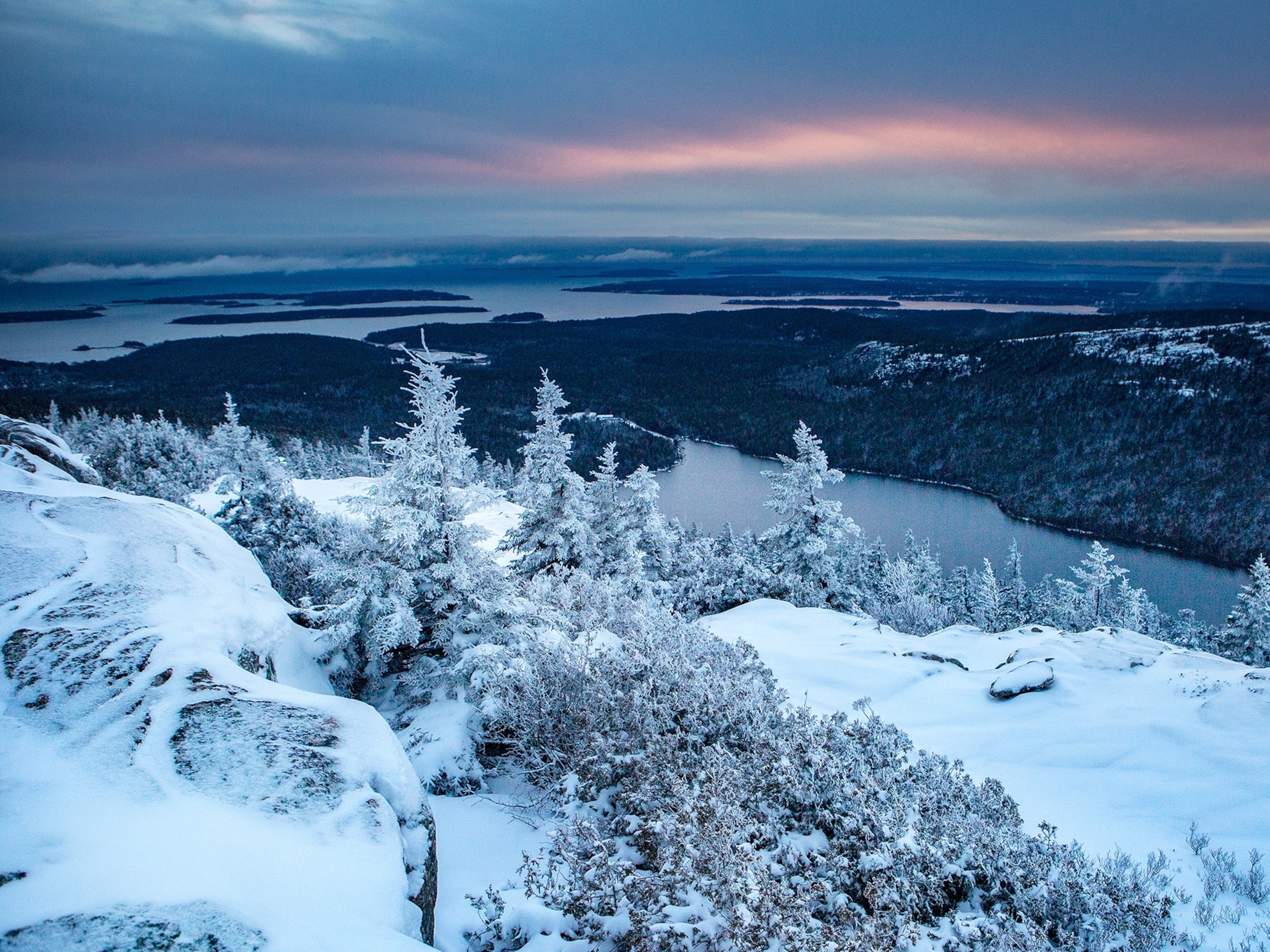
How do you avoid the crowds in national parks? Visit during winter.
- Environment
- Perpetual Planet
History & Culture
- History & Culture
- History Magazine
- Mind, Body, Wonder
- Paid Content
- Terms of Use
- Privacy Policy
- Your US State Privacy Rights
- Children's Online Privacy Policy
- Interest-Based Ads
- About Nielsen Measurement
- Do Not Sell or Share My Personal Information
- Nat Geo Home
- Attend a Live Event
- Book a Trip
- Inspire Your Kids
- Shop Nat Geo
- Visit the D.C. Museum
- Learn About Our Impact
- Support Our Mission
- Advertise With Us
- Customer Service
- Renew Subscription
- Manage Your Subscription
- Work at Nat Geo
- Sign Up for Our Newsletters
- Contribute to Protect the Planet
Copyright © 1996-2015 National Geographic Society Copyright © 2015-2024 National Geographic Partners, LLC. All rights reserved
DISCOVER CALIFORNIA
© 2024 California.com All Rights Reserved
RECOMMENDED BUSINESSES
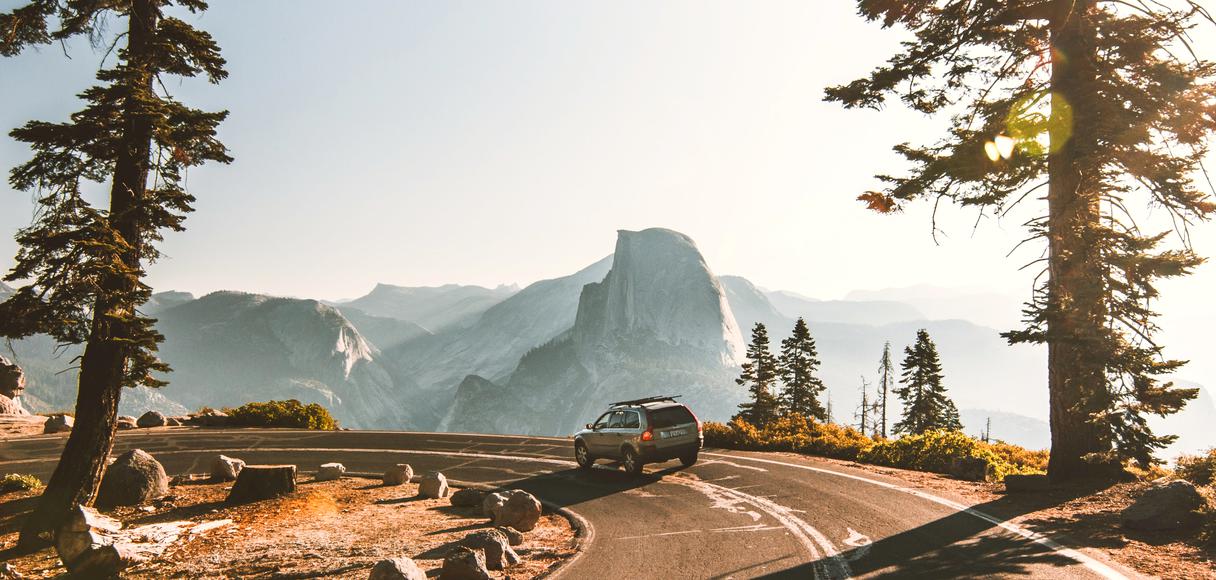
The Best Road Trip to California's National Parks
Go on an epic adventure and see some of the state's most iconic destinations on this California national parks road trip.

September 08, 2020
The fresh breeze flows through your hair; the scents of pine trees, ocean spray, and sun-baked desert clay greet you along the way; and an immense sense of wonder envelops your thoughts as you travel to and fro in California. A road trip to California’s national parks is a right of passage, serving as proof that you’ve truly experienced all that this great state has to offer. Whether you’re planning next weekend’s explorations or the trip of a lifetime, you won’t want to miss seeing these incredible spots.
The Ultimate California National Parks Road Trip Itinerary
While the best way to see the Golden State is to take a road trip through all the California national parks , sometimes life gets in the way and you have to break up this grand adventure into smaller segments that can be woven around your work and school schedules. But no matter how you tackle this trip, the fresh air, photographs, and unforgettable scenery are sure to soothe your soul. So, get ready to pack your bags or pencil in your future vacay—this road trip to Yosemite, Sequoia, Death Valley , and beyond is well worth the time.
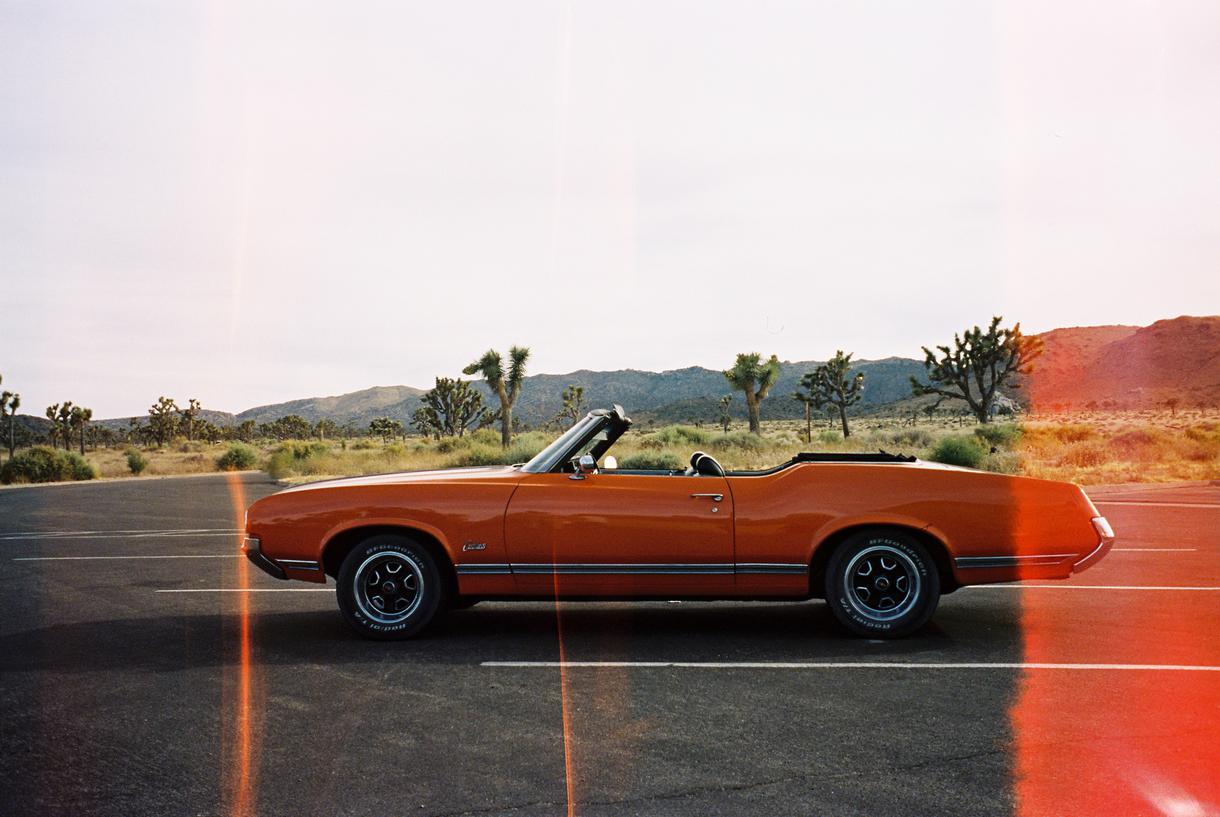
San Diego To Joshua Tree Road Trip
Driving time: 4 hours, 30 minutes
San Diego is a classic Southern California stop , so it makes sense that your Golden State road trip would start here. Renowned for its idyllic white-sand beaches, world-class surfing conditions, and the invention of the California burrito , San Diego is a must-see destination for locals and out-of-towners alike. After getting a good feel for the city’s laid-back vibe, it’s time to hit the road.
Though a trip up the 15 would undoubtedly be a faster way to get to Joshua Tree National Park, the journey is half the fun, so take the scenic route: First, cruise along the California border on Route 94, and stop near Campo to see the Southern Terminus of the iconic Pacific Crest Trail (PCT). Take a quick walk on the PCT to get a taste for the thrill of thru-hiking, but don’t go too far; there’s plenty more road to cover before arriving at the real destination.
Continue driving on the 94 until it runs into I-8. Before you know it, you’ll be turning north onto the 111 on your way to the Salton Sea . This unique area might not seem like much, but its unusual history makes up for its lack of pizzaz. If a more vibrant experience is more to your liking, be sure to stop by Salvation Mountain for an unexpected piece of desert artwork.
After fully experiencing these unusual bits of California’s landscape, continue on the 111 before turning right onto 66th Avenue, toward the south entrance of Joshua Tree. There’s nothing quite like a trip to Joshua Tree National Park . You’ll understand why as soon as you witness the stunning sunsets, incredible bouldering opportunities, and serene desert ambience. From here, cruise on up to Death Valley if you’re ready for more dusty days, or turn off the path for a short reprieve.
Does your business rank among the best in California?
Recomended businesses
Show me california.com recommended businesses near.
Learn more about our selection criteria and vetting process.
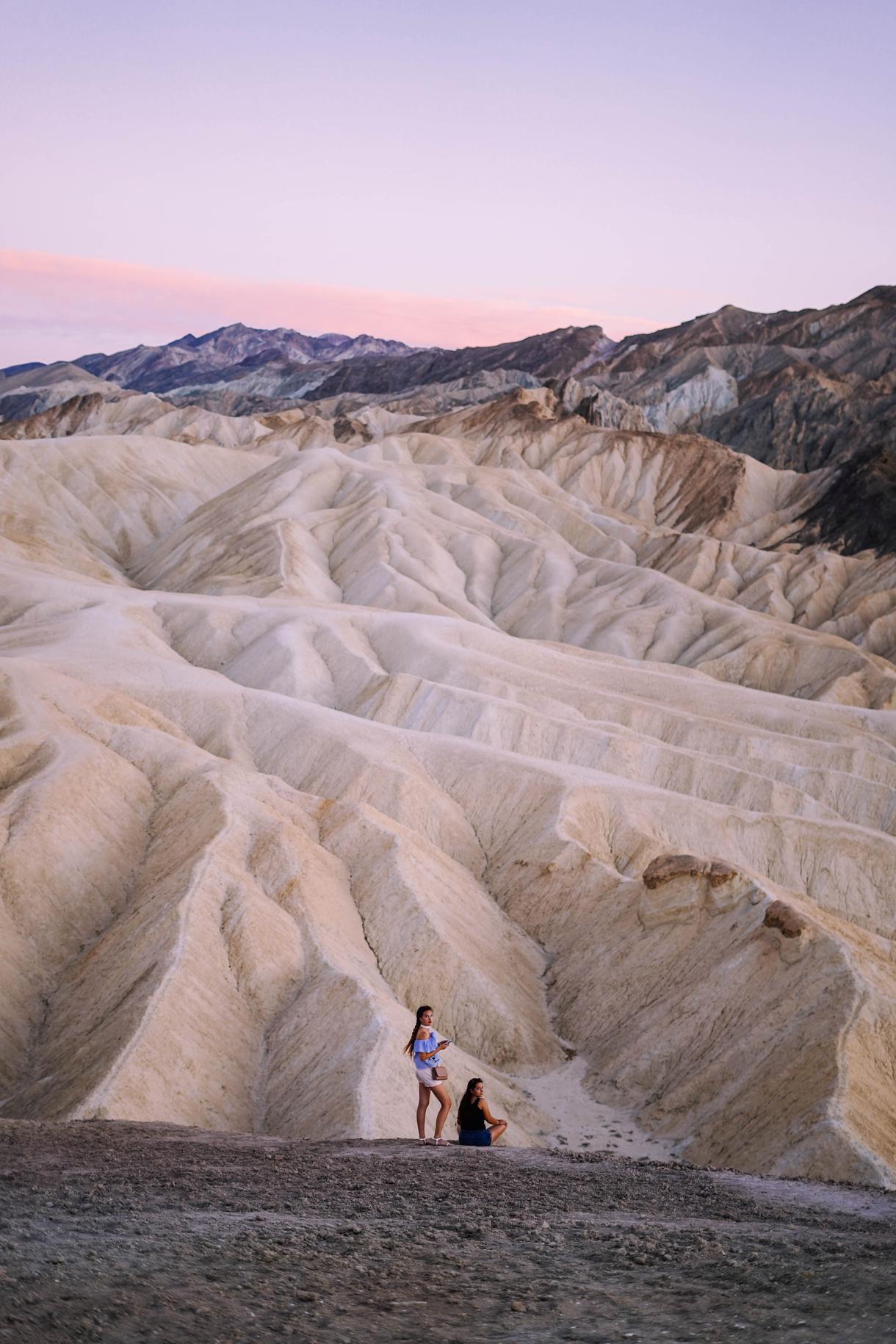
Detour: L.A. to Death Valley Road Trip
Driving time: 2 hours, 15 minutes
With a few days of camping under your belt, you may want to take a quick detour to Los Angeles for a taste of city life. Once satiated, hop back in the car for the drive to Death Valley—but be sure to stop by the Antelope Valley Poppy Reserve , especially in peak poppy season.
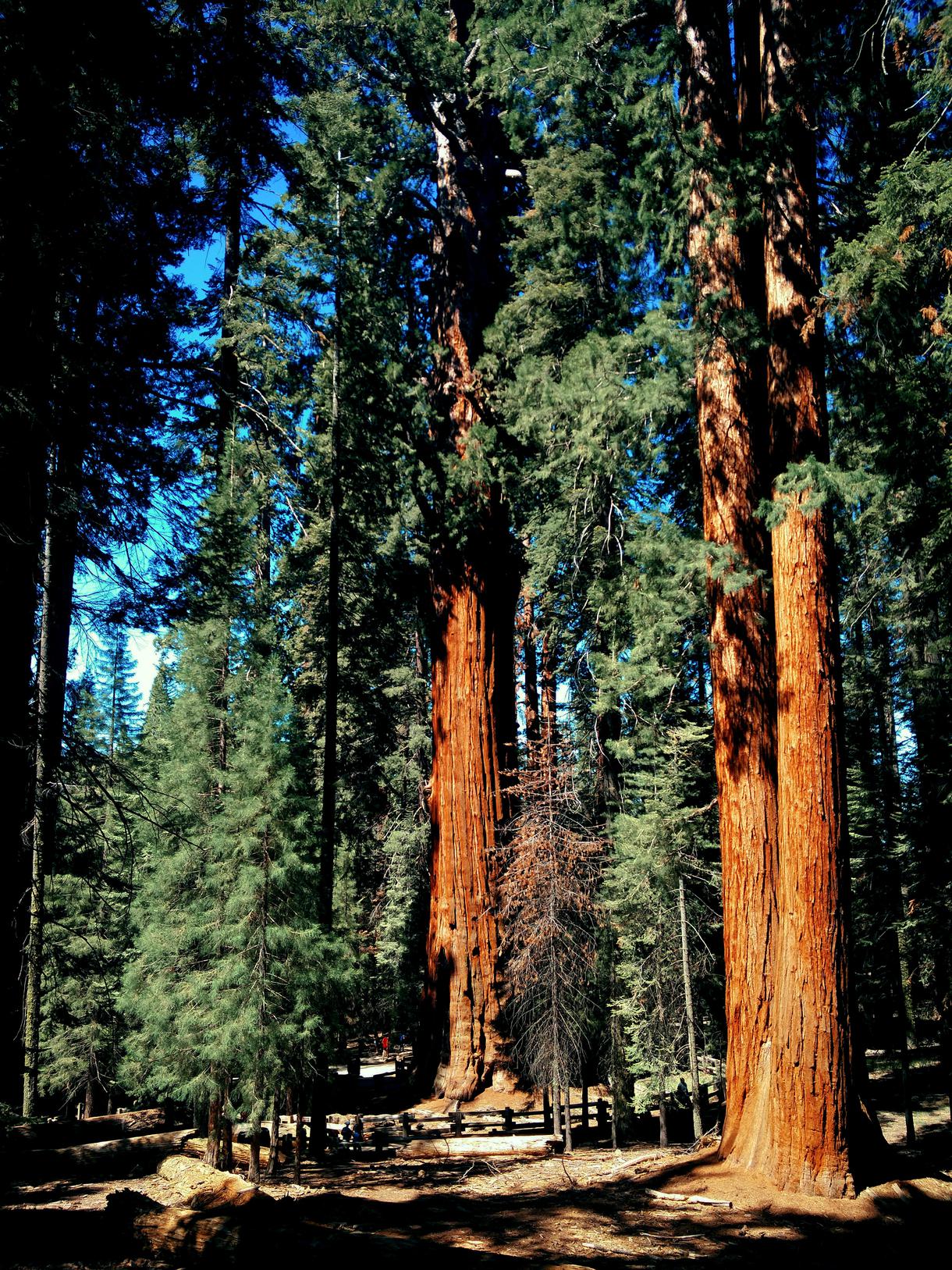
Alternate Route: Los Angeles To Sequoia National Park Roadtrip
Driving time: 3 hours, 40 minutes
If you need a longer break from the state’s best desert attractions, cruise directly from Los Angeles to Sequoia and Kings Canyon National Park before landing in Yosemite. These locales are full of towering trees and shady canopies that will make you wonder how they could be so close to such barren deserts.
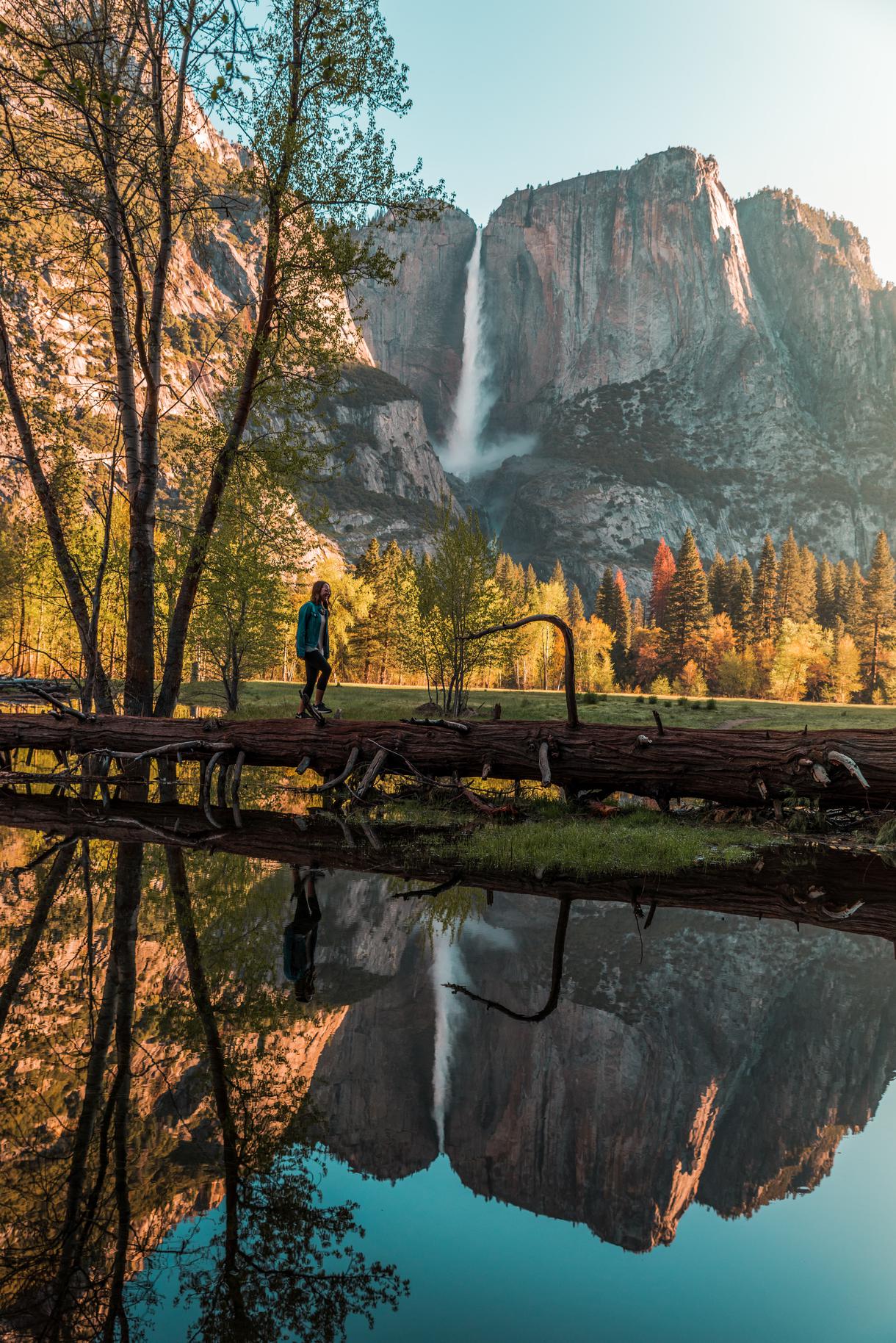
Death Valley To Yosemite Road Trip
Driving time: 5 hours
Death Valley is one of the most astonishing places in the Golden State and really ought to make it onto your California national parks itinerary . As the driest, lowest, and hottest national park—complete with record-breaking temperatures—Death Valley is not your typical vacation destination. While this spot does require you to plan ahead and pack a lot of water, the starry night sky, singing sand dunes, and vistas you’d think were located halfway across the world are well worth the effort.
Once you’ve gotten your fill of desert oases, jump in the car and venture onto the open road. Though it’s hard to imagine that the granite surfaces, lush trails, and serene waterfalls of Yosemite National Park lie within a few hours’ journey from such a desolate place, this excursion will prove it’s true.
Drive along the 190, and continue on as it turns into State Route 136 near Owens Lake. Just outside of Lone Pine, turn right onto the 395 and drive north for a couple of hours, making time to admire the scenery along the way. As you draw closer to the park, turn onto the 120, cruise past Tuolumne Meadows, and keep driving through the region. The beauty overwhelms the senses. and before you know it, you’ll be turning onto Big Oak Flat Road and meandering your way into the Yosemite Valley.
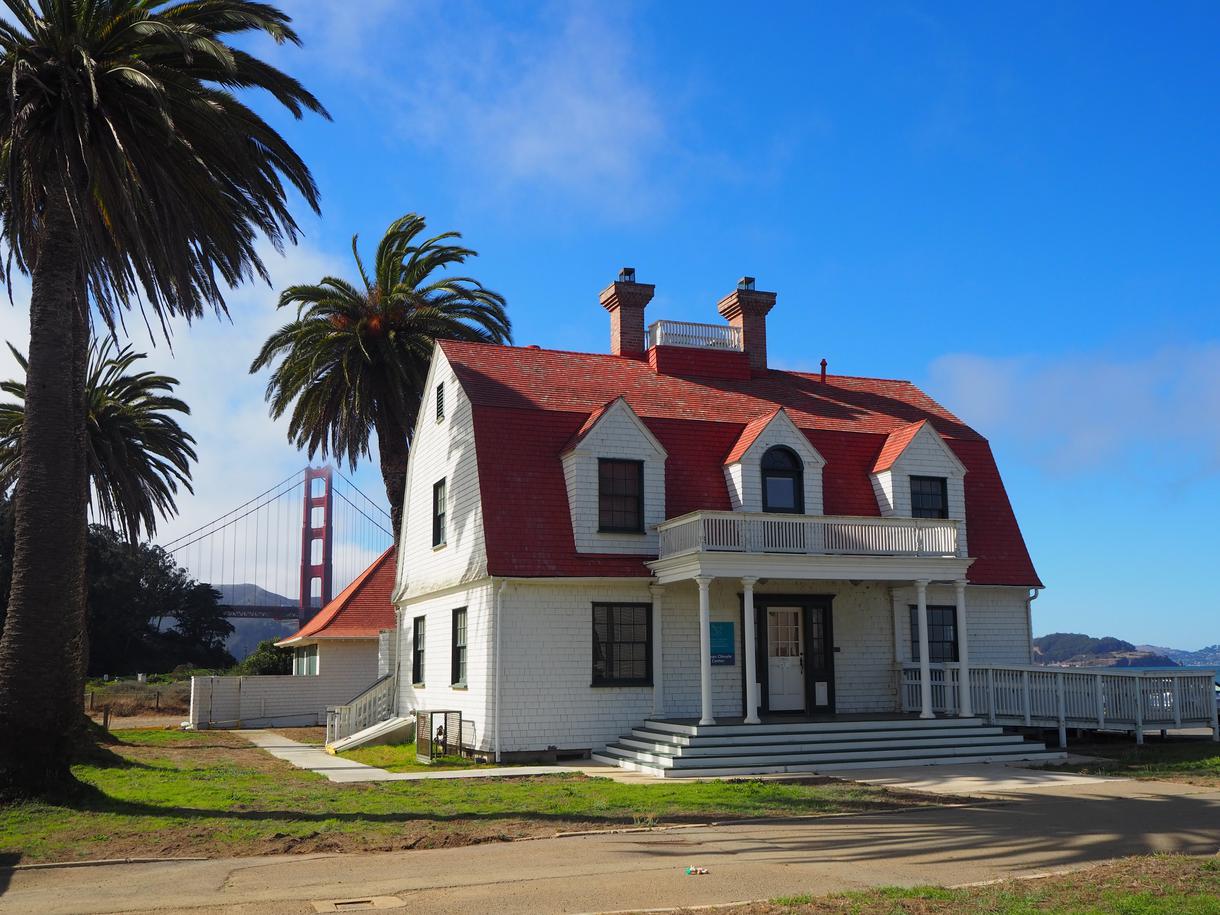
Yosemite to San Francisco
Drive time: 3 hours, 45 minutes
After spending some time rock climbing, hiking, slacklining, camping, and appreciating your surroundings, drive out to the coast to see the San Francisco Bay Area. While the region isn’t home to any national parks, the Presidio of San Francisco is a must-see California Historic Landmark .
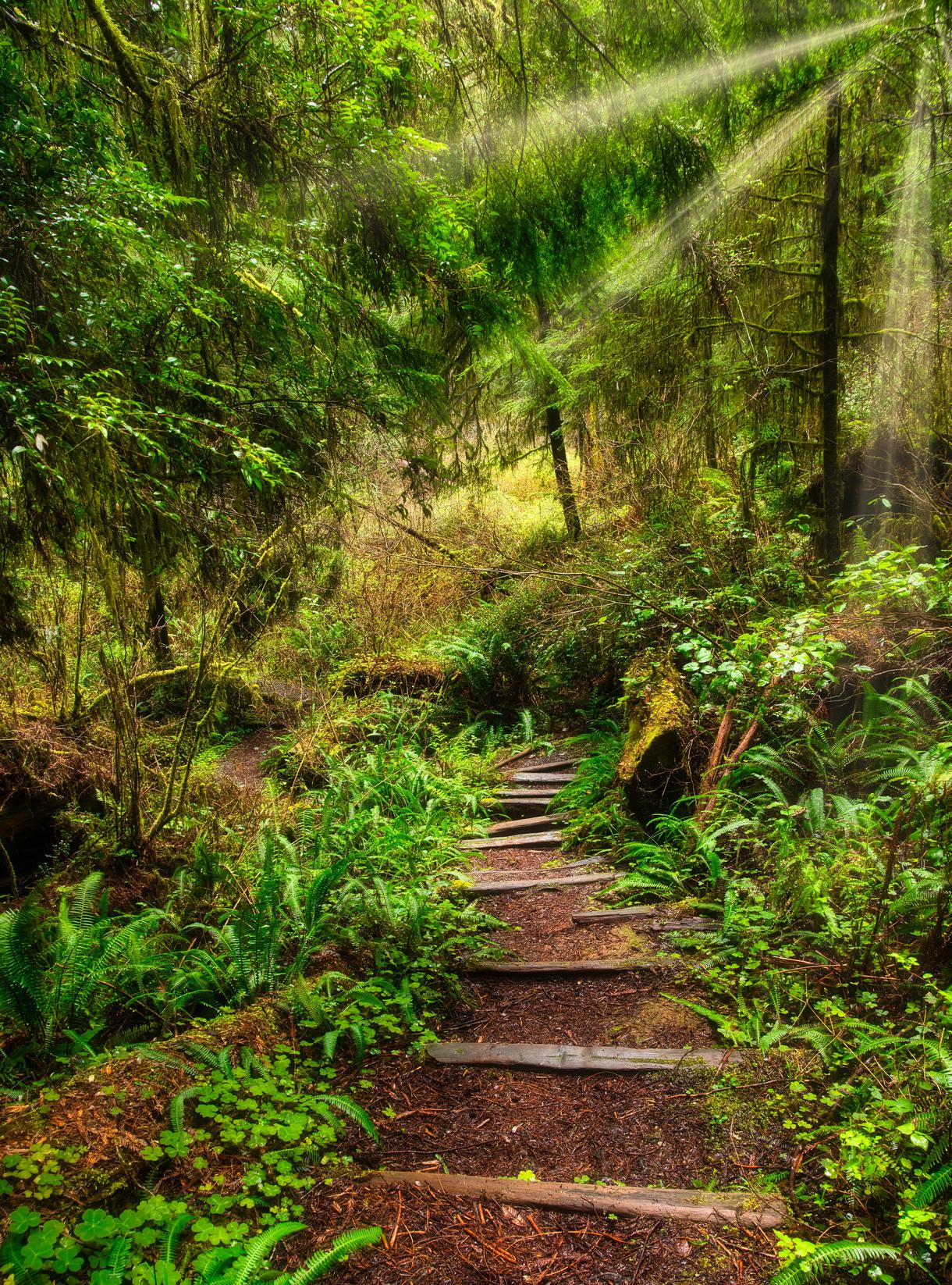
San Francisco To Redwoods Road Trip
Drive time: 6 hours
Hop back on the road, and cruise across the Golden Gate Bridge and then along the 101 to Northern California. As you get closer to Redwood National and State Parks, the road curves west, providing gorgeous views of the Pacific Ocean. Travel through Eureka and up to Gold Bluffs Beach Campground in Orick to spend a few days on the coast. The 101 runs through the parks, so you’ll have incredible views the whole way.
Whether you’re looking forward to taking a San Francisco to Yosemite road trip on another leg of this journey or are planning future San Diego to Death Valley road trips , your California national park trip itinerary will leave memories that last a lifetime.
Need help with a home improvement project? Get a free quote today!
Enter your zip code.
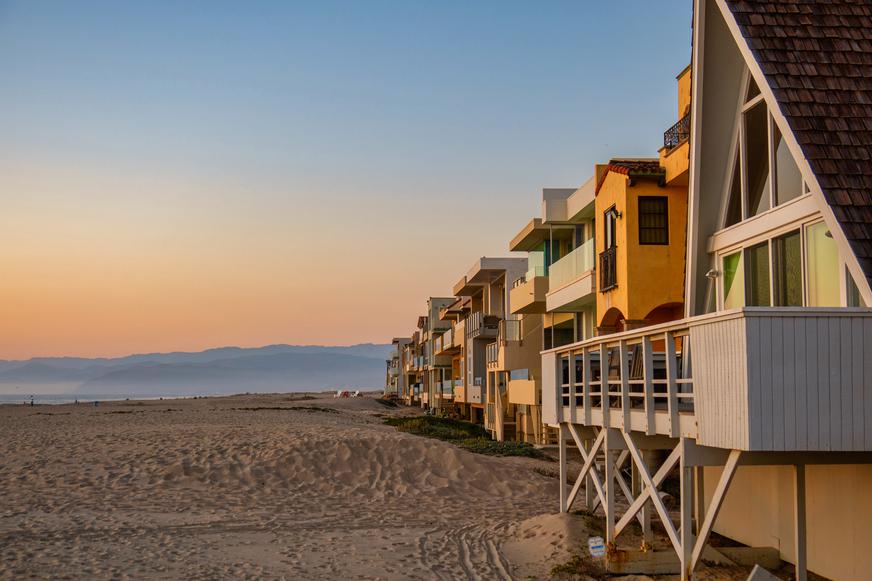
Inspiration delivered straight to your inbox.
Awesome thank you for subscribing to our newsletter..
When you provide your email address, you are agreeing to our Terms of Service and Privacy Policy , and you are giving your consent to receive email communications from California.com regarding updates, happenings, special offers, and promotions from our partners.

RELATED Articles

RELATED CITIES
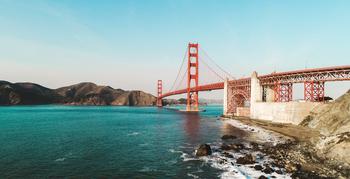
Discover More

5 Tips for an Eco-Friendly California Road Trip
Wherever you plan on going next in California, there’s still time to make your road trip more eco-friendly. Here are our best tips.
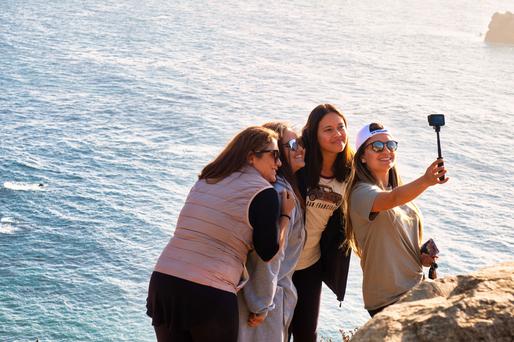
California's 7 Most Instagrammable Spring Photoshoot Locations
Explore California's top 7 spring photoshoot spots for Instagram-worthy snaps, from poppy fields to coastal cliffs.

The 7 Most Iconic California Sports Moments
Relive unforgettable California sports moments and memories that have left a lasting impression on fans and inspired future generations.

Best First Date Ideas in Los Angeles
Impress your date and allow the City of Angels to be the perfect backdrop for your romance with these first-date ideas.

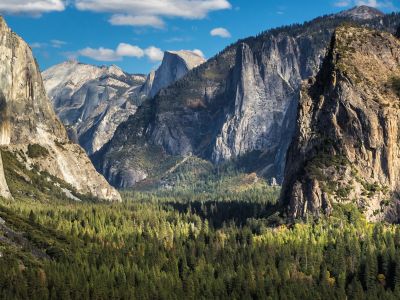
California and National Parks
Get to know the real California on this scenic guided tour. Soak in magnificent vistas, sunny beaches, the culture of San Francisco, the glamour of Los Angeles, and the awe-inspiring majesty of the most popular national parks in California. You can also add an extension to continue your journey to San Diego.
You can’t help falling in love with San Francisco . You’ll understand why people consider it one of California’s most scenic and culturally vibrant cities when you see the Golden Gate Bridge and Coit Tower.
To experience the majesty of nature, you can’t do better than Yosemite . Granite rock formations like Half Dome, and the pristine Yosemite Valley, are so beautiful they’ll take your breath away. Kings Canyon and Sequoia National Parks are next door neighbors with matching sets of towering redwood groves. The world’s tallest trees are surrounded by over 1,000 miles of stunning wilderness.
If you’re a beach person, Santa Barbara is a dream come true. Southern California’s easygoing charm is at its brightest in this sunny retreat. Los Angeles, the hometown of the entertainment industry and a capital of glitz and glamour, truly needs no introduction. From the Sunset Strip and the Hollywood Walk of Fame to the world-famous Santa Monica Pier, the City of Angels is more than ready for its closeup. Experience it all on this tour of California and its most popular national parks.
- Drive over the Golden Gate Bridge and visit the iconic Pier 39 in San Francisco
- See the massive sequoias and redwoods of Sequoia and Kings Canyon National Parks
- Visit the Giant Forest, home to General Sherman, the world’s largest tree
- Explore Yosemite National Park, where you will see the towering and world-famous Half Dome
- Visit the Santa Barbara Mission and the Getty Center
- Visit Hollywood and Santa Monica while on a panoramic city tour of Los Angeles
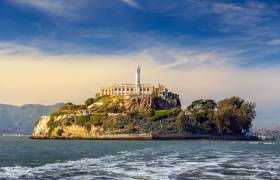
Alcatraz Island Tour & Pier 39 Dinner
Explore the island of Alcatraz.

Santa Maria Wine Tasting
Sample some of the finest California wines on this guided tour.
Activity level
- Very Active
Tour Includes
Sightseeing
- San Francisco
- 17-Mile Drive
- Yosemite National Park
- Kings Canyon National Park
- Sequoia National Park
- Pismo Beach
- Santa Maria
- Santa Barbara
- Los Angeles
Hotel Accommodations
- Moderate hotels based on twin/double occupancy
- 9 Breakfasts
- A professionally trained tour director who is knowledgeable about the area will provide you with a wealth of information. Their friendly service will make your trip a memorable experience.
Baggage Handling
- To and from your hotel room throughout your land tour for one piece of Checked Baggage per person.
San Francisco, California
Los Angeles, California
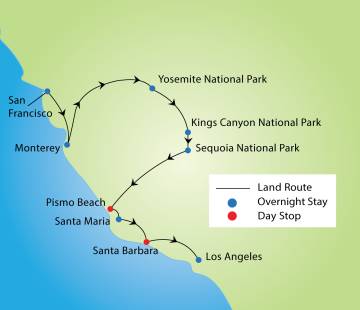
Welcome to San Francisco! Guests who have purchased airline tickets from YMT Vacations will be welcomed in the baggage claim area by a friendly YMT representative who will arrange your transfer to the hotel.
Spend the day at your leisure in one of California’s most beautiful and culturally rich cities. Enjoy diverse cuisine, incredible museums, parks, and dazzling architecture. The city is also home to historical landmarks including the colorful Victorian Painted Ladies, the Golden Gate Bridge, and the island prison of Alcatraz.
Hotel Caza or similar
Add-On : Alcatraz Island Tour & Pier 39 Dinner
This morning, head down the breathtaking 17-Mile Drive. Enjoy views of Pebble Beach and Pacific Grove, taking the opportunity to snap a picture of the Lone Cypress on a quick stop before arriving in Monterey. Enjoy a city tour of the once-gritty waterfront town immortalized by John Steinbeck’s classic novel, Cannery Row. (B)
Holiday Inn Express Monterey Bay Seaside or similar
Make your way to Oakhurst, a three-hour drive from Monterey. With scenic views of rolling hills, verdant forests and the rugged coastline, this promises to be an enjoyable drive. (B)
Fairfield Inn Oakhurst-Yosemite or similar
Visit the awe-inspiring Yosemite National Park. This magnificent and diverse land with elevations ranging from 2,000 to over 13,000 feet abounds with spectacular granite cliffs, thundering waterfalls, lush meadows, and towering trees. Discover Yosemite Valley, where you will find Half Dome, the park’s most recognizable feature. The iconic granite formation rises more than 4,700 feet above the valley floor. (B)
Wyndham Visalia or similar
Head west to the coast, stopping in Pismo Beach for lunch on your own. Spend the afternoon in Santa Maria, a city famous for its distinctive redoak smoked barbecue! (B)
Best Western Plus Big America or similar
Add-On : Santa Maria Wine Tasting
Visit Santa Barbara—the American Riviera—and enjoy its Spanish mission style architecture, mild Mediterranean climate, and stunning ocean views.
Take a self-guided tour of the lovely Santa Barbara Mission, where you can enjoy some of the best views in town. The “Queen of the Missions” is known for its magnificent twin bell towers, sprawling gardens, and the ocean views it enjoys from its position on a hill overlooking downtown Santa Barbara.
Continue to Los Angeles, where you will stop at the Getty Center. Enjoy amazing city views from this architecturally stunning art museum before a late afternoon arrival at your hotel. (B)
Sonesta Los Angeles Airport or similar
Today we take a guided tour of Los Angeles and Hollywood, seeing many of the highlights of the City of Angels. See Beverly Hills, the Hollywood Walk of Fame, the ornate TCL Chinese Theatre, and more. Enjoy an included farewell lunch on the Santa Monica Pier, which has endless views and its very own amusement park. (B, L)
Add-On : Paramount Pictures Studio Tour
San Diego, California

Hotel Zephyr or similar
Discover the bustling “City by the Bay” during a morning panoramic tour. Look out at Alcatraz, see Nob Hill, and catch a glimpse of Lombard Street along with many more exciting sights!
Cross the Golden Gate Bridge to Sausalito, San Francisco’s idyllic and much smaller neighbor. Enjoy lunch on your own and an included tour of this artistic enclave. Many of Sausalito’s residents live in house boats in the bay. Spend the evening relaxing in San Francisco, or join us for an optional sunset bay cruise and lively dinner at Pier 39. (B)
Hilton Garden Inn Monterey or similar
Visit the awe-inspiring Yosemite National Park. This magnificent and diverse land with elevations ranging from 2,000 to over 13,000 feet abounds with spectacular granite cliffs, thundering waterfalls, lush meadows, and towering trees. Discover Yosemite Valley, where you will find Half Dome, the park’s most recognizable feature. The iconic granite formation rises more than 4,700 feet above the valley floor. Half Dome’s sheer cliff face is nearly vertical, making it irresistible to the world’s best rock climbers. (B)
Continue to Kings Canyon, where you will find ancient giant sequoias and redwoods in Grant Grove. At the center of Grant Grove is the General Giant Tree, the second largest tree in the world. This 3,000-year-old wonder stands almost 270 feet tall with a base circumference of 107 feet! With terrain ranging from sun-soaked foothills to alpine forests, a huge variety of wildlife calls this national park home. Look out for animals including gray foxes, bobcats, marmots, eagles, and bears. (B)
Take a pleasant drive to the thick forests of Sequoia National Park, which is adjacent to Kings Canyon and just as magnificent. Designated a UNESCO World Heritage Site and administered by the National Park Service along with Kings Canyon National Park, Sequoia is home to the largest living single-stem tree in the world. General Sherman stands 275 feet tall with a diameter of 25 feet and is a centuries old display of the power of nature. The Giant Forest, where you’ll find General Sherman, contains five of the ten largest trees on Earth. (B)
Take a self-guided tour of the lovely Santa Barbara Mission, where you can enjoy some of the best views in town. The “Queen of the Missions” is known for its magnificent twin bell towers, sprawling gardens, and the ocean views it enjoys from its position on a hill overlooking downtown Santa Barbara. Continue to Los Angeles, where you will stop at the Getty Center. Enjoy amazing city views from this architecturally stunning art museum before a late afternoon arrival at your hotel. (B)
Holiday Inn LAX or similar
Note: For the Jun 27 departure The Getty Center will be on Day 9 and the Los Angeles/Hollywood tour will be on Day 8.
Your San Diego extension begins with a memorable train ride down the coast. From Los Angeles’ famed Union Station, travel on the Pacific Surfliner to San Diego. Your non-escorted extension to California’s southernmost city is the perfect opportunity to soak up the sun and beachy vibes at your own pace. (B)
Embassy Suites San Diego Bay or similarr
Explore San Diego at your leisure. San Diego is the quintessential California beach town, with amazing sightseeing, food, and activities available year-round. Enjoy the beach, the historical Gaslamp district, or some of the numerous museums and zoos in and around San Diego. (B)
Embassy Suites San Diego Bay or similar
Please note that this is a proposed itinerary; the actual itinerary may vary due to season, special events, or weather. Hotels may differ depending on date. Because our tour arrangements are often made a year or more in advance, YMT Vacations reserves the right to alter the itinerary. Itinerary changes are made to improve your vacation experience, as well as respond to any unforeseen circumstances that mandate alterations. By their nature, all tour vacations involve a certain level of physical activity. While YMT tours have been designed with our guests in mind and are not physically demanding, this tour does include walking and periods of standing during the sightseeing visits. You will also encounter steps and some uneven ground along the way, particularly at older, historical sights. Please ask your Travel Consultant for more information.
YMT Vacations itineraries may contain suggestions for activities for your leisure time; these suggestions do not constitute a recommendation nor an endorsement of any specific service provider and the decision to participate in any such activities should be made independently.
Inquire Now
Per person, double occupancy, excludes roundtrip airfare. Passport required.
Add airfare?
We’ll get back to you soon. To secure an exclusive limited-time offer for your trip, call 888-860-1969 now to uncover our best-kept secret deals!
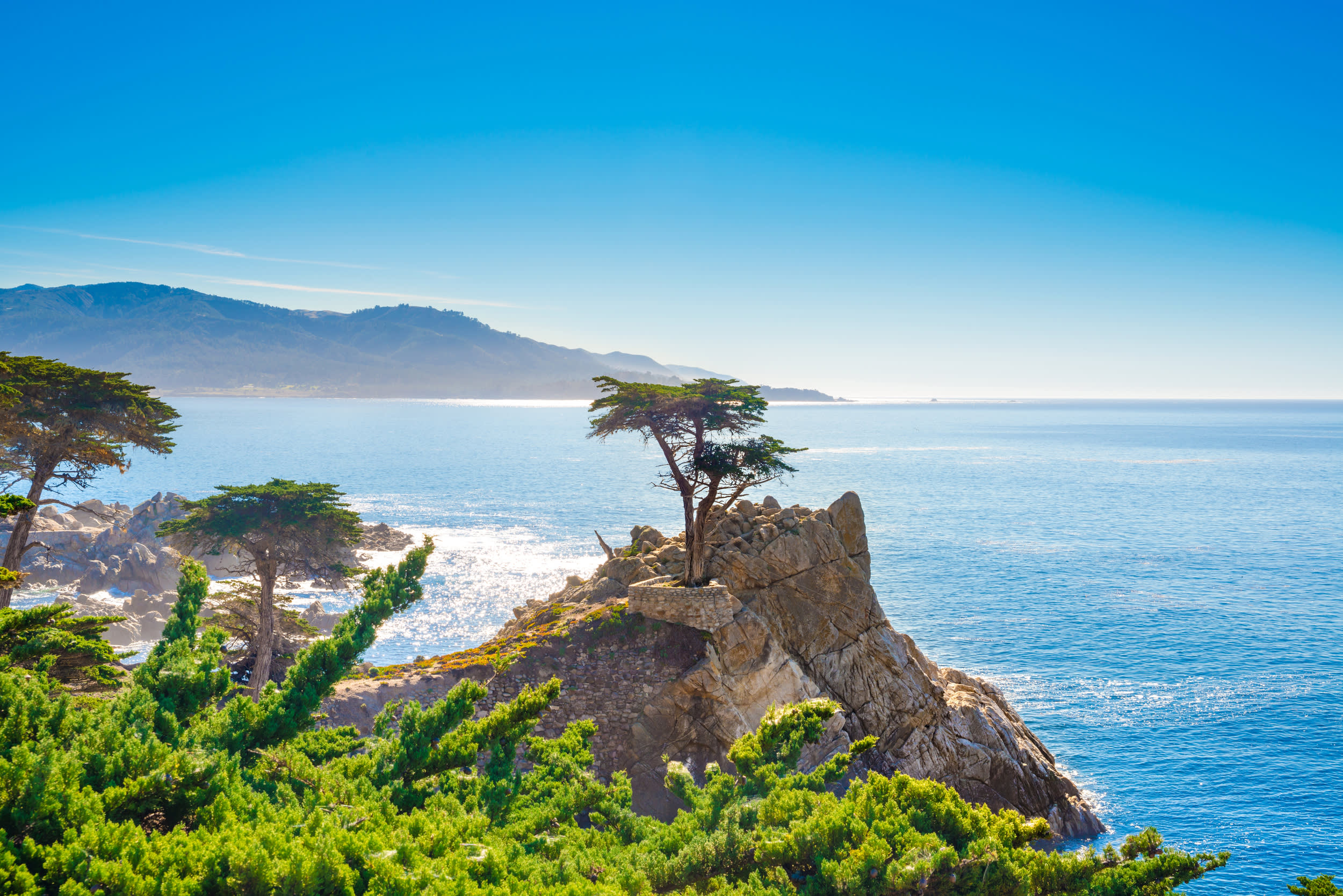
Unfortunately, additional nights are not available from YMT Vacations for this tour. Your YMT Sales Consultant will confirm the specific hotel related to your departure date, and you can then contact the hotel directly to arrange an extended stay.
Yes, triples are permitted (depending on availability) in 2 beds.
You should arrive in San Francisco no later than 4pm.
No, none are required.
You will visit locations that are higher elevations (6,000-7,000 ft).
For tips on managing altitude sickness, please read our blog .
Make your vacation extra special by adding optional excursions to your tour. It’s a great opportunity to enhance your trip, these experiences slot seamlessly into your package, and we’ll take care of all the logistics for you. Call us for pricing, and remember that adding an optional experience might increase the overall activity level of the tour, so always keep that in mind when planning your trip.
Explore one of the most infamous maximum-security prisons in the world, Alcatraz. Visit the Cell House and see where criminals such as Al Capone, Machine Gun Kelly and “Birdman” Robert Shroud were held. Tonight’s dinner will be at Bubba Gump Shrimp Co. on Pier 39. You’ll enjoy a delicious meal and one of the best views in San Francisco.
- Alcatraz Island Tour
- 3-course dinner at Bubba Gump featuring a choice of entrées: Captain’s Fish & Chips, Coconut Shrimp,Half Rack of Ribs and Chicken Combo followed by Chef’s Choice of Dessert. Tax & gratuity included.
Note: The distance from the dock on Alcatraz to the Cell House which is located at the top of the island is about 1/4 of a mile and the elevation change is 130 feet . In the Cell House, there is an elevator to provide access to the second story. There is an uphill walk to visit the prison on Alcatraz Island. At the dock will be the accessible tram (S.E.A.T), which transports visitors with mobility impairments to the Cell House. This is provided on a first come first serve basis only, not guaranteed.
Duration : Approx. 6 hours (evening)
Activity Level: Active
Price: $115 USD

Famous for its wine industry, Santa Maria is a beautiful small city located in California’s Central Coast region. Enjoy learning about and sampling California wines.
- Wine tasting – 5, one ounce pours of their 5 most popular wines: Pinot Noir Rosé, Estate Chardonnay, Estate Pinot Noir, GSM, and Cabernet Sauvignon (subject to change)
Note: This is only available for 2024 tours
Duration: 1.5-2 hours (evening)
Activity Level: Easy
Price: $29 USD

Explore over a century of Hollywood history and witness more in the making. During your visit, you’ll see where some of the most celebrated motion pictures and TV shows are made. Enjoy a classic Hollywood studio cart tours of historic and active backlot sets and prop warehouse.
- Paramount Studio Tour entrance and guided golf cart tour
Duration: 3 hours (Morning)
Price: $99 USD

You might also like
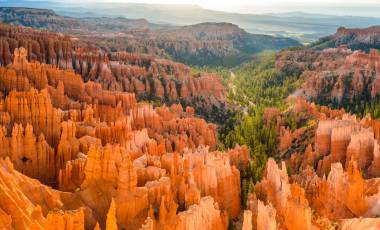
Crimson Canyons & Mesas National Parks Tour
Per person, double occupancy, excludes roundtrip airfare
Enjoy natural wonder after natural wonder on this unforgettable journey through the rugged beauty of six of America’s most spectacular national parks.
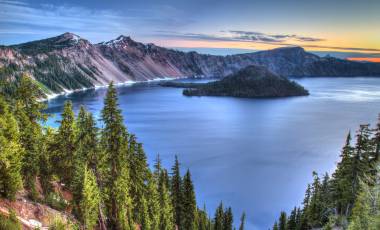
Sights of The Pacific Northwest
The Pacific Northwest is as famous for its natural beauty as its sophisticated yet quirky cities-experience the best of both worlds on this journey from Seattle to San Francisco.
Sign Up & Save
- Skip to primary navigation
- Skip to main content
- Skip to primary sidebar
- Skip to footer
TravelAwaits
Our mission is to serve the 50+ traveler who's ready to cross a few items off their bucket list.
Take An Epic Road Trip To Five California National Parks
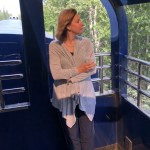
- Activities and Interests
- Destinations
- National Parks
- Road Trips In The U.S.
- Types of Travel
- United States
- United States National Parks
National park fans know President Teddy Roosevelt had a passion for preserving public land. He earned the nickname “conservationist president,” but National park fans may not know he was also the first president to publicly ride in a car, and someone who said, “Believe you can and you’re halfway there.”
As I took a road trip through California with my family, I kept thinking how all those presidential statements influenced what we were doing: enjoying nature, driving from point to point, and knowing we were halfway there. That’s because California has nine national parks — more than any other state — and we didn’t have time to hit all in one itinerary. So we picked five parks that promised a world of variety within one state’s borders.
Here’s what happened, logging more than a thousand miles in a rental car driven between a flight to San Francisco (SFO) and a flight out of Los Angeles (LAX):

Stop 1: Yosemite National Park
Yosemite is an appropriate start because it’s one of two places President Lincoln set aside for public land . (The other is Mariposa Grove, which you will see at the next stop!) Decades later, California preservationist John Muir wanted more Yosemite land protection, so he invited Teddy Roosevelt to camp there. Roosevelt later said , “It was like lying in a great solemn cathedral, far vaster and more beautiful than any built by the hand of man.”

Today, Yosemite is perfect for adventurers pushing their limits and sightseers content to tour in their vehicles. We got our bearings on day one with a short hike to El Capitan’s base, then driving through Yosemite Valley and towards Tunnel View and Glacier Point to see views photographer Ansel Adams made famous. We caught a stunning sunset after hiking up the 2.2-mile round-trip Sentinel Dome trail. It gets steep as you scurry up rocks at the end and is not accessible to wheelchairs, though many other trails are .

Day two brought a longer hike to Vernal Fall waterfall . This requires navigating 600 steps. If you prefer not to walk down the same way, pick up the John Muir trail to return to the valley floor.
Pro Tip: Lodging and camping in Yosemite books quickly. We couldn’t get a room in the park and instead booked two nights in a Tenaya Lodge Explorer Cabin. This meant an extra 90-minute drive in and out of the park each day, yet we appreciated a pool, laundry, and restaurants. Also, groceries are available in Yosemite at a few general stores, but they get crowded. Consider stocking up well before entering the park.

Stop 2: Sequoia National Park
Driving from Yosemite to Sequoia National Park gives the feeling something big is in store and it turns out to be really big: General Sherman , the world’s largest tree.
General Sherman is 275 feet tall and 36 feet in diameter. A park sign says looking towards the top is like a mouse looking up at a six-foot-tall human. Be prepared to wait in line with fellow tourists seeking the perfect tree picture. Part of the crowd size is due to General Sherman’s accessibility. You can see it from a paved trail connected to a shuttle bus stop and parking for vehicles with accessible parking placards or take a longer walk from a lot available to all visitors.

Another photo opportunity comes thanks to a sequoia’s downfall. Tunnel Log fell in 1937 when it was popular to attract tourists by advertising a chance to drive through the toppled tree. Today, parks focus more on natural environments, but Tunnel Log remains a relic of novelty attractions to delight drivers.
Pro tip: Sequoia National Park boasts hundreds of miles of trails, plus opportunities to see the park from different angles. From below: Crystal Cave is available for tours. Tickets can sell out months in advance. From above: try Moro Rock, where a 350-step climb rewards you with a remarkable view.
There are lodges and cabins in the park. We stayed at an Airbnb 45 minutes away in Exeter. This helped us start two days with big breakfasts at the Exeter Whistle Stop diner and the Wildflower Café , and wrap up days enjoying ice cream at the Frosty King . We also enjoyed meals closer to the park in nearby Three Rivers. The Ol Buckaroo came highly recommended in Airbnb’s guest journal, and Sierra Subs and Salads was a welcome find to grab sandwiches and salads for mid-day refueling.
Pro Tip: There are no gas stations within the park borders, so come with a full tank or fill up at the small stations on the park edges.

Stop 3: Kings Canyon National Park
We knew Kings Canyon and Sequoia were close when planning this road trip; we did not realize some parts are adjacent until studying the park map. They are so close the National Park Service awards just one junior ranger badge encompassing the two parks to young or young-at-heart explorers.
True confession: This realization changed our plans. We shoved two regular days of exploring into one marathon-long day so we would not cover the same crowded, curvy roads twice. We then relaxed at our Airbnb the second day.

With a redo, I would spend one day driving from Kings Canyon Visitor Center to Roads End, then spend a second day beginning at the same visitor center and heading through Sequoia National Park. Another option is cutting one day off this segment and substituting something else like a day exploring Los Angeles.
Sequoia National Forest splits Kings Canyon, and the Kings Canyon Scenic Byway provides multiple overlooks. Many trails are in the backcountry, though you can get a taste of the park if you simply visit the General Grant Tree . It’s second in size only to General Sherman, and worth a quick walk on a short, paved-loop trail. Kings Canyon has half the visitors of its neighbor, with more crowd-free places. So, when a bear crossed the road in front of our vehicle, we had plenty of time to stop and enjoy watching it without worrying about holding up traffic!

Stop Four: Channel Islands National Park
Once we got our feet wet, rhetorically speaking, with three parks, we headed to a park where water surrounds everything. Channel Islands National Park encompasses five California Channel Islands: Anacapa, Santa Cruz, Santa Rosa, San Miguel, and Santa Barbara. You can learn about the so-called Galapagos of North America at the Visitor Center in Ventura, but you need to leave land to get a real Channel Islands feel. Island Packers Cruises are boat voyages by the park’s official vendor. Island Packers leaves from Ventura and Oxnard harbors, and rates vary depending on island destination. Most of the Channel Islands’ 400,00 annual visitors visit this way, so make reservations early. There are hiking opportunities, and you can make reservations to kayak and explore sea caves, mingle with sea otters, and appreciate islands towering above the Pacific Ocean. All islands have permitted camping ; you will need to carry all supplies.

Pro Tip : Look for 2,000 plant and animal species, including the island fox, found no place on earth except these islands.
We opted to sail around two islands on a chartered sailboat where the captain and bosun explained history, geography and seafaring to us while we watched pods of hundreds of dolphins. Food prepared on the boat tasted even better watching the ocean change by the hour, and two nights of anchorages provided an opportunity to relax before hitting the road again.

Joshua Tree National Park
The National Park Service says remember four letters at Joshua Tree National Park: BYOW, as in Bring Your Own Water. Drinkable water doesn’t exist in most of the park where the Mojave and Colorado deserts meet , so you need to bring lots of water. Another simple park guide is to hike only if you are taller than your shadow in the hot, midday sun.
One way to follow this advice is to start your day in the dark. Cholla Cactus Garden is a remarkable place to watch the sunrise. We drove from there to popular sites like Skull Rock, Split Rock, and Arch Rock. Seeing them in early morning hours helped avoid heat and crowds and each was a relatively short walk from parking areas.
We left the park midday to grab a meal at Crossroads Cafe and cool off at our Airbnb home just minutes from the Joshua Tree entrance. It was so close we could easily return to the park later to enjoy Keys View , where Mexico’s in sight on a clear day, and watch the sunset through the park’s namesake trees.

With more time, I would have loved to have watched climbers explore the San Andreas Fault and hike around Cottonwood Spring . Yet one day in the park provided enough variety to feel disconnected from everyday life. The Joshua Tree area has some great Airbnbs available to get a good night’s sleep before heading out. The next day, an early 141-mile drive to LAX wrapped up the journey, with great memories and the reminder that more national parks await. Lassen Volcanic, Death Valley, Pinnacles, and Redwood National Parks promise more adventure, the next time vacation calls for an epic California road trip.
National Parks are ranked among the top places to visit by travelers from around the United States:
- 6 Things To Know Before Visiting A National Park This Summer
- Top 15 Can’t-Miss Hidden Gem National Parks
- 10 Important Ranger Tips For A Great National Park Visit

Emily Schmidt is an Emmy award-winning journalist who grew up on an Iowa farm and is based in Washington, DC. She has told stories while floating in air, wading through floodwaters, and covering the race for U.S. President.
Emily scopes out places like Tajikistan and Guinea while on assignment and tackles exploring U.S. National Parks with her husband and two sons. They’re writing a book, “Geokids: 50 States On School Breaks” about those adventures and mapping out continent visits. Next up: Antarctica.

Northern California National Parks Road Trip Itinerary
Last Updated on March 24, 2024 by Bonnie
California is home to 28 national parks. This includes nine designated National Parks and 19 National Monuments, National Recreations Areas and other units managed by the National Park Service. You’d likely need several months to visit all these parks and truly enjoy the experience. Since most folks don’t have that much time, we suggest focusing on just one region at a time. Here, we share our itinerary for a northern California national parks road trip.
First, let’s clarify what we mean by “northern” California. For this particular itinerary, we focus on just the parks that are north of San Francisco and Sacramento. Second, because of the proximity, we include a couple of parks in southern Oregon.
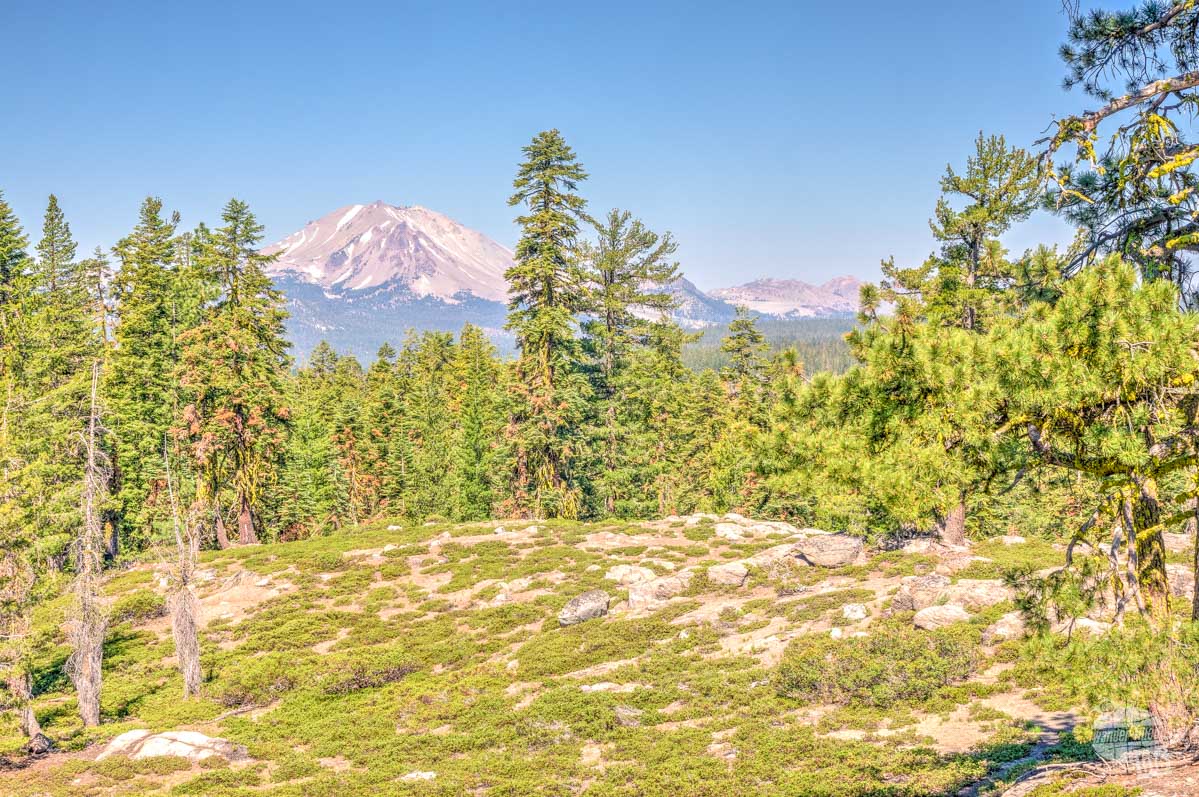
The seven parks you’ll visit on this itinerary are Redwood National and State Park, Oregon Caves National Monument, Crater Lake National Park, Lava Beds National Monument, Tule Lake National Monument, Lassen Volcanic National Park and Whiskeytown National Recreation Area. What we didn’t know before setting out on our journey is that the National Park Service has named this particular itinerary the Circle of Discovery .
Along the route, you’ll see the country’s tallest trees and deepest lake. You’ll also visit marble caves, hydrothermal areas, volcanic landscapes and even a Japanese American WWII relocation center. As you can see, the parks included protect a wide range of landscapes, natural features and historic sites.
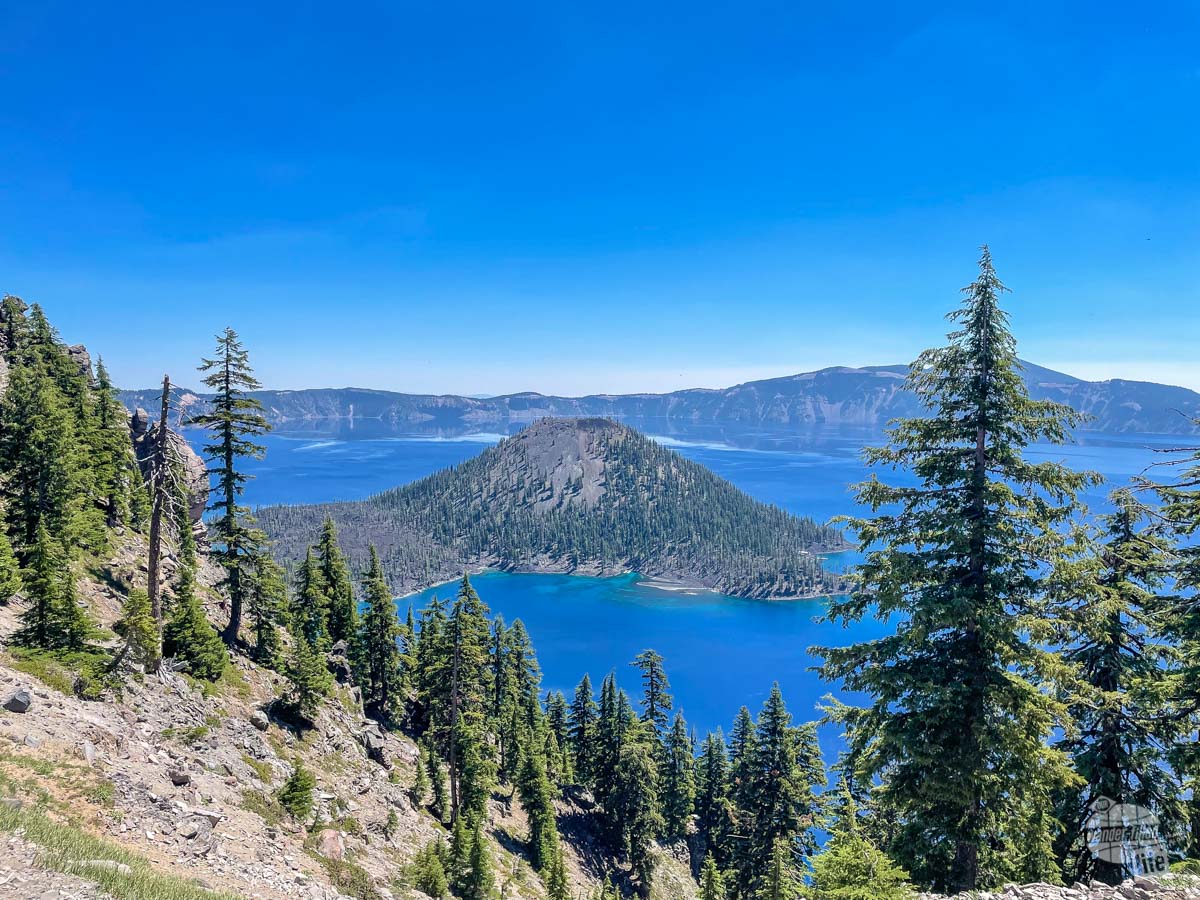
(Disclaimer: When we link to places where you can buy our stuff or places we stayed, we are using special codes that earn us commissions on the sales at no additional cost to you. Please see our Review Policy for more information.)
Planning Your Northern California National Parks Trip
The location of the seven parks on this Northern California national parks road trip itinerary makes almost a perfect loop. Thus, you could easily start at just about any location. It also can fairly easily be accessed from the north, south or east. This flexibility allows you to drive from home, fly into several different airports or connect the itinerary to other sights if you have more time.
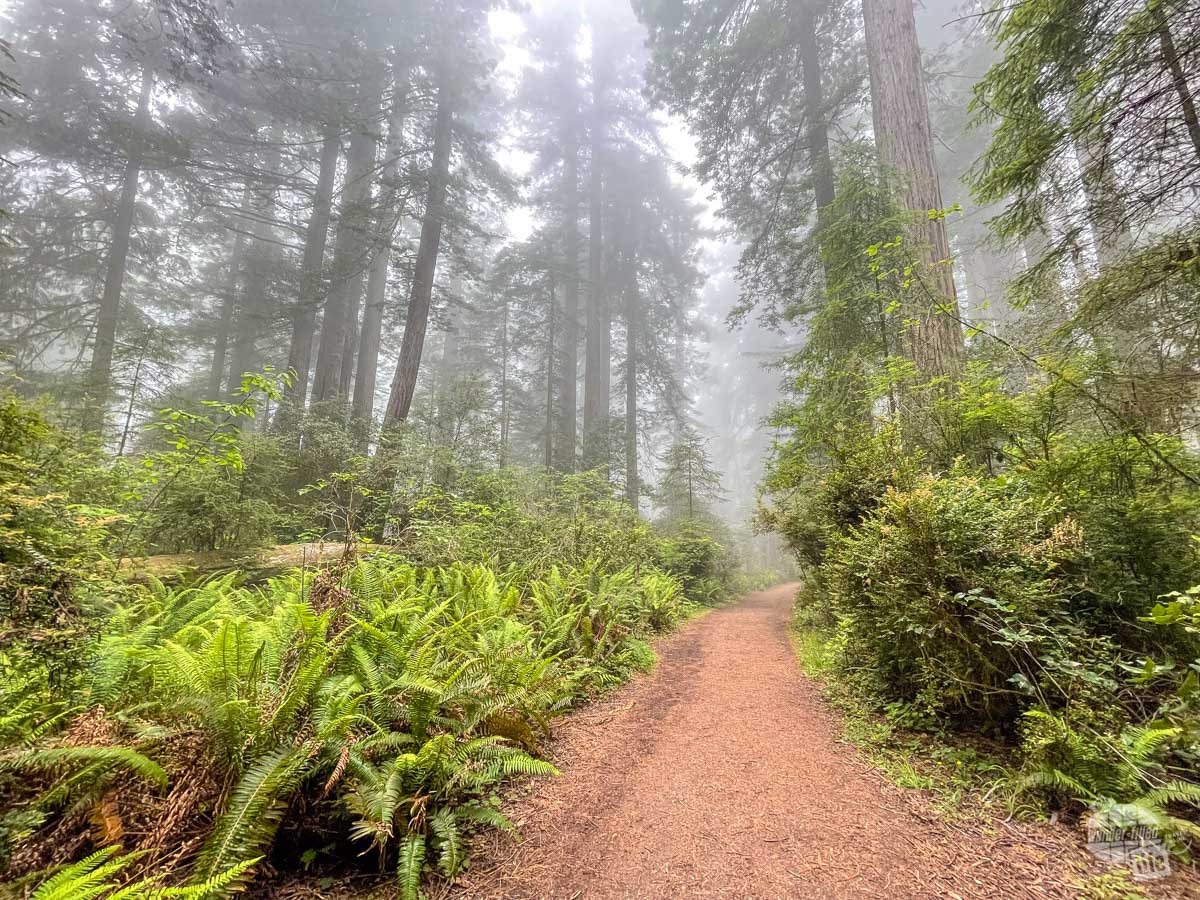
For the sake of this article, we start the loop at Redwood National Park, which is easily accessed via Highway 101, better known as the Pacific Coast Highway. If you are coming in from the north side, you might prefer to start the loop at Crater Lake National Park. From the east, Lassen Volcanic National Park would be your starting point.
You can also drive the loop either clockwise or counterclockwise. Honestly, this would probably just be based on personal preference or when you can get reservations in each location.
Best Time to Visit
Both Crater Lake and Lassen Volcanic national parks generally receive a large amount of snow in the winter. The parks are open year-round, but you’ll have limited services in the winter. Additionally, some areas of both parks will be very difficult to reach unless you are prepared for over-snow travel.
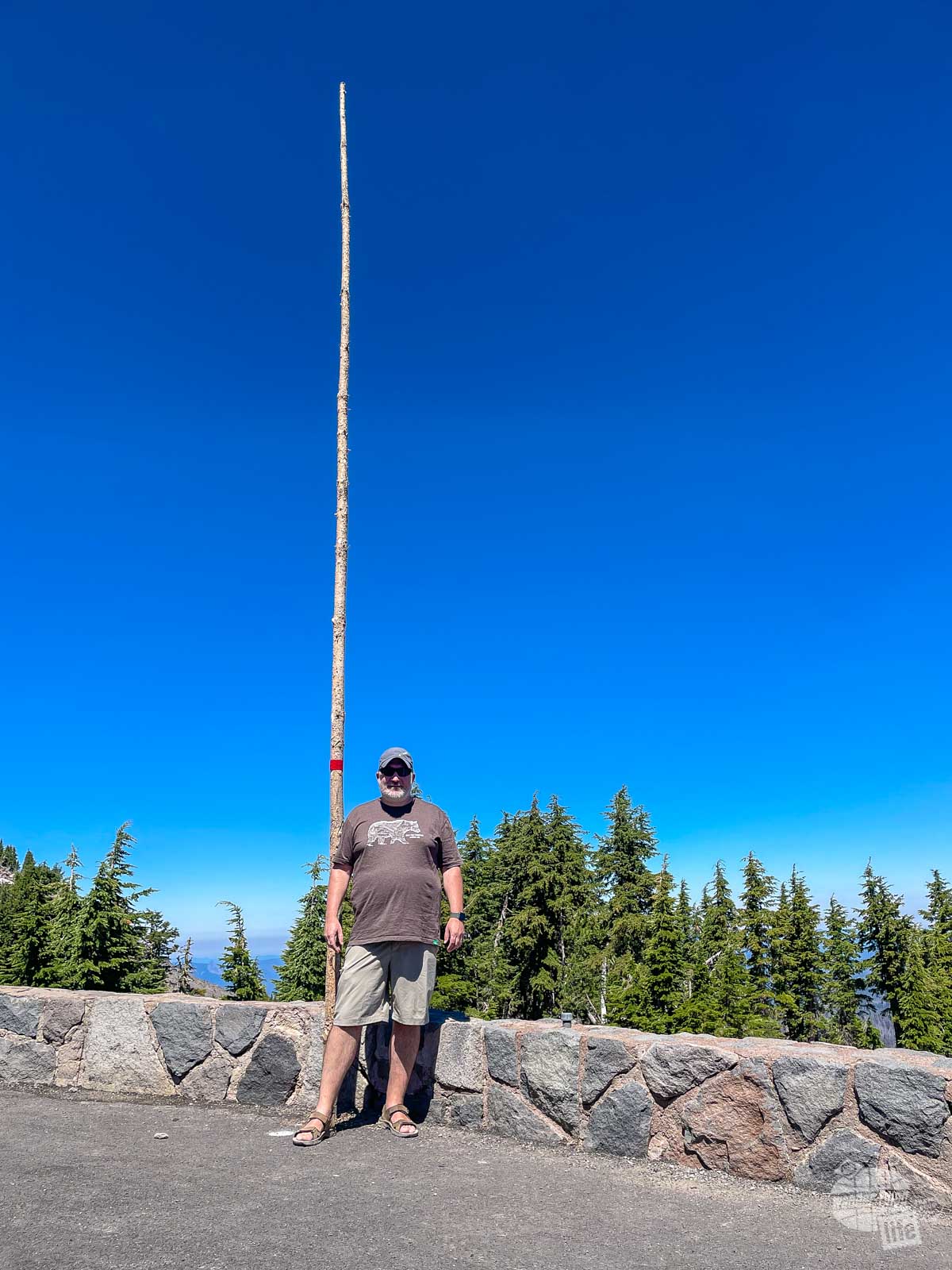
Thus, summer is certainly the best time to complete this road trip. But not too early in the summer. Crater Lake and Lassen Volcanic national parks are generally not fully open until late June or early July. The exact date of various areas and services changes from year to year, depending on snowfall. Additionally, Oregon Caves National Monument is located nestled in the mountains on a winding road that is closed in the winter.
You’ll also need to be prepared for a wide range of temperatures along your route. Lava Beds National Monument, Tule Lake National Monument and Whiskeytown National Recreation Area will likely be very hot and dry in the summer. In fact, during our visit, the temperature at Whiskeytown was more than 110 degrees.
On the other hand, the temperature at Redwood National Park was in the mid-60s. Due to its location on the Pacific coast, Redwood National Park gets quite a bit of cloud cover, fog and cool breezes off the ocean. You’ll likely want long sleeves or a lightweight pullover here, especially in the mornings and evenings.
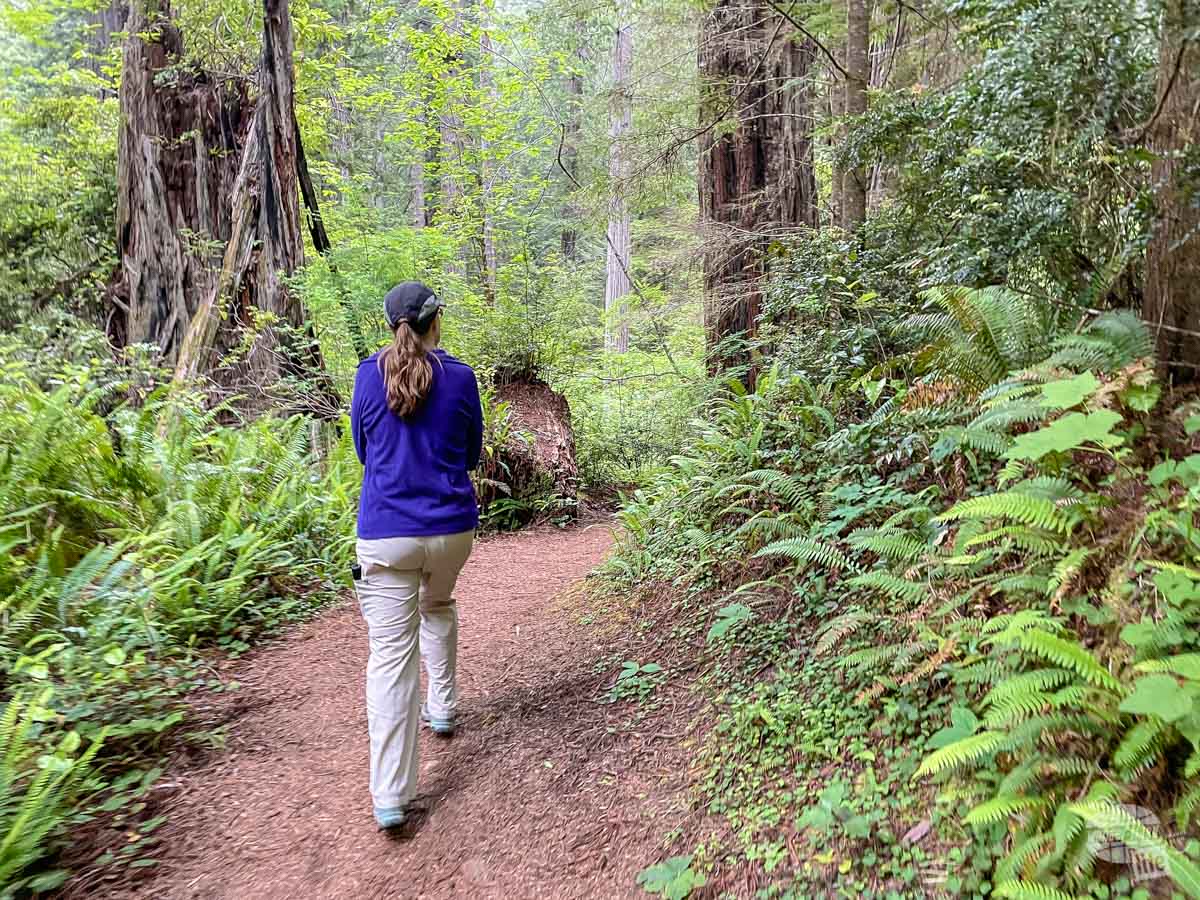
Crater Lake and Lassen Volcanic national parks tend to have more moderate temperatures. Mornings and evenings can be cool, though. Temperatures can vary greatly from lower elevation to higher elevation.
Basically, you need to make sure you have the proper layers with you while visiting the northern California national parks.
Northern California National Parks Itinerary
We did this trip as an RV road trip. It would also work well if you are just in a car and staying in hotels or tent camping. You definitely need a car, though, as this route goes through very remote areas with essentially no public transportation.
Redwood National Park – 3 Days
Redwood National Park is a very interesting park and you’ll likely never tire of looking up at the massive redwood trees it protects. That said, one grove of redwoods is really not all that different from another. So, you can get a very thorough visit to the park in one day or even less.
Still, the park preserves more than just redwood trees and you can easily spend several days exploring it all. A three-day visit allows you plenty of time to enjoy all the different aspects of the park.
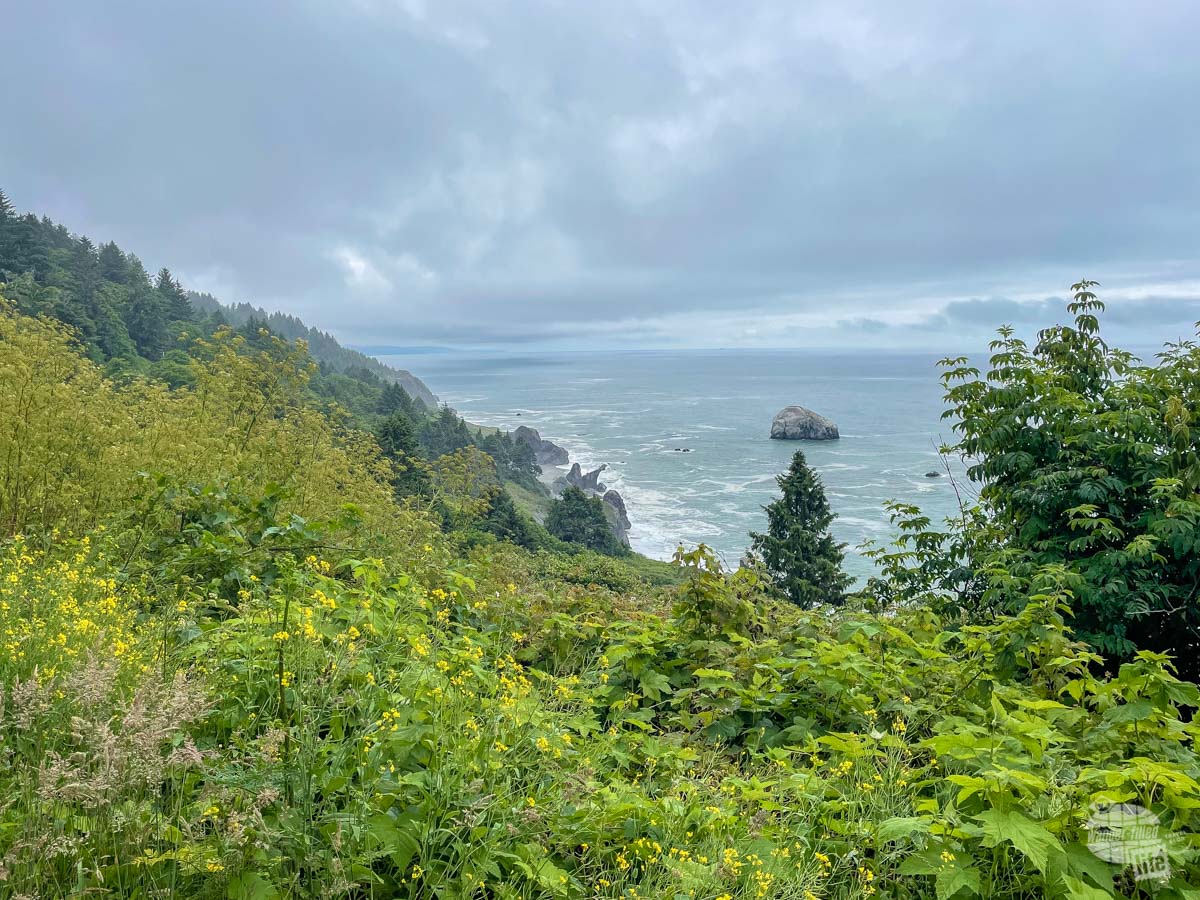
Be sure to visit several groves, such as Lady Bird Johnson Grove on the south end or Stout Grove on the north end. There are also several scenic drives, including the Newton B. Drury Scenic Parkway, Coastal Drive and Bald Hills Road. For a different perspective on the park, a hike through Fern Canyon offers a look at the lush vegetation that is found right along the coast.
With three full days, you can get in a few longer hikes, such as the Trillium Falls Trail, Boy Scout Trail or Tall Trees Trail. You can even do some tidepooling and look for marine animals hiding out under the rocks at low tide.
Where to Stay for Redwoods National Park
We recommend staying in either Crescent City on the north end or perhaps Klamath or Orick further south. Based on the layout of the park, you may even choose to spend 1-2 nights on the south end and 1-2 nights on the north end.
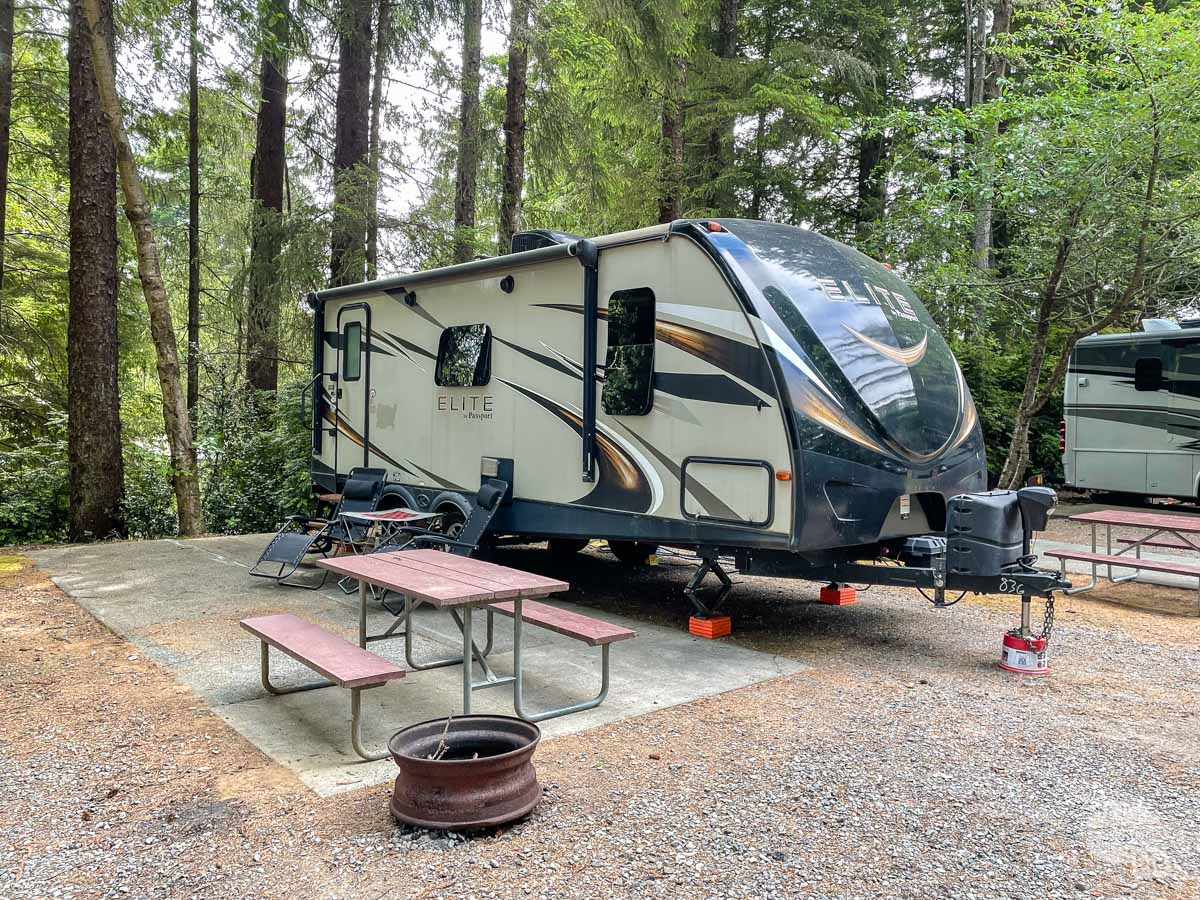
Inside the park, there are a few campgrounds but no lodges or restaurants.
Check out our full coverage of Redwood National Park here.
Oregon Caves National Monument – 1 Day
Oregon Caves National Monument and Preserve is located just east of Cave Junction, OR, which is just about an hour north of Crescent City, CA. The park preserves a marble cave that is somewhat hidden several miles off the main highway, in the Siskiyou Mountains.
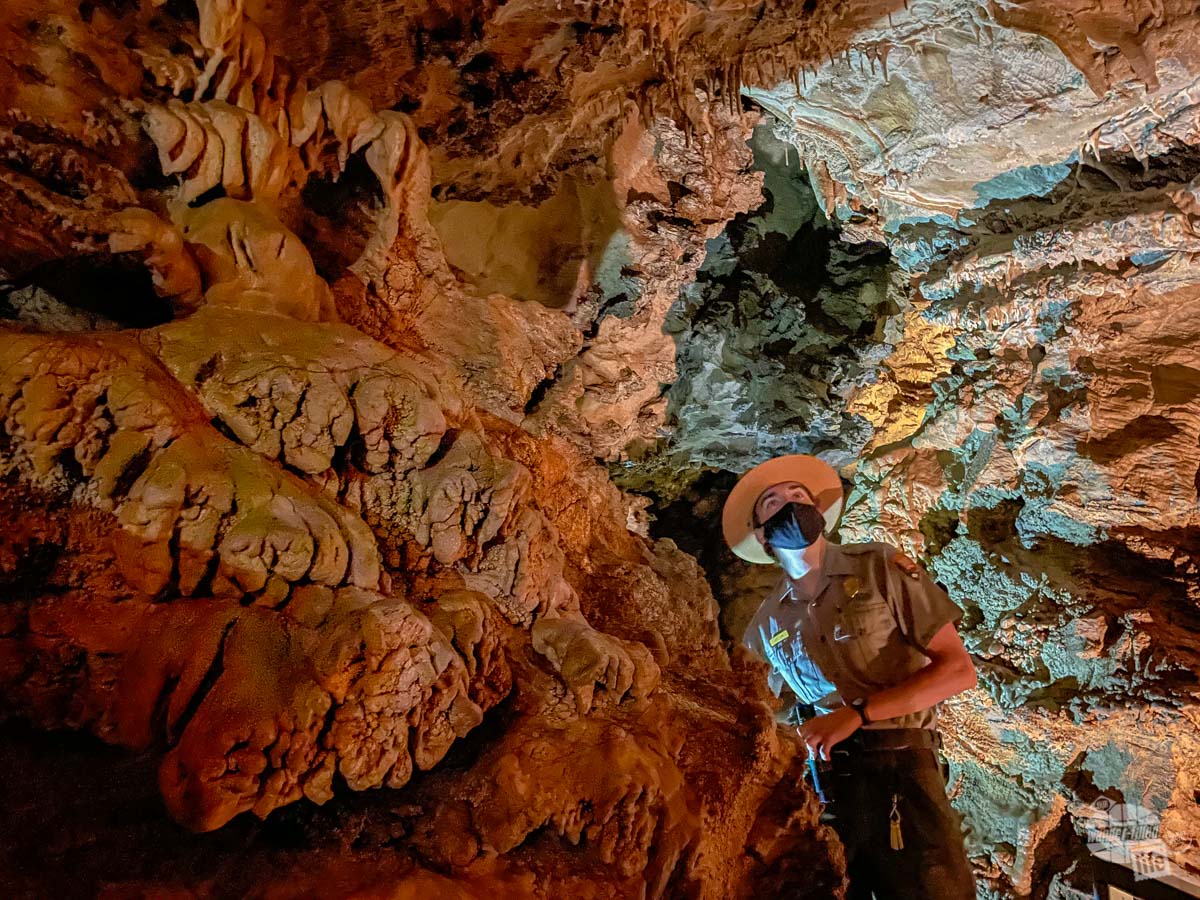
To visit the cave, you’ll have to schedule a cave tour. Typically, the park offers four options, the most popular of which is the Discovery Cave Tour. We also recommend the Candlelight Cave Tour. While we haven’t done that tour at this park, we really enjoyed the candlelight tour at Wind Cave and highly recommend it anytime it is offered.
Above ground, there are six hiking trails, offering views of the mountains and fir forest. While the cave is certainly the highlight of this park, we enjoyed a short hike. It’s also a good way to spend an hour or two while waiting on your tour.
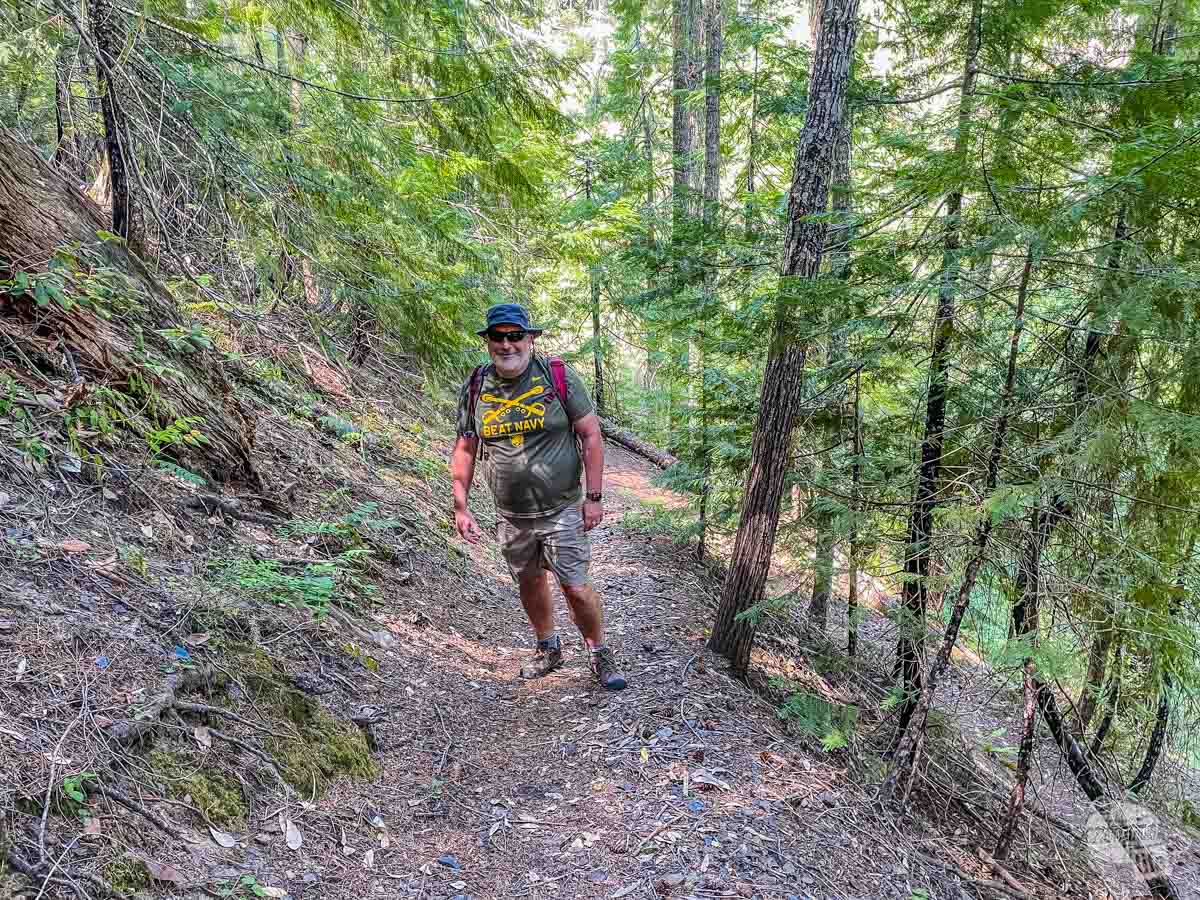
During our visit in the Summer of 2021, the park offered only the Discovery Tour. Additionally, tour tickets were available only on a first-come, first-served basis, at the visitor center in Cave Junction, due to COVID-19. Traditionally, though, you can purchase tickets for any of the four cave tours ahead of time at recreation.gov . Tours are offered during the summer, typically starting Memorial Day Weekend and going through Labor Day Weekend.
Check the park’s website for updated information regarding tour availability and where to purchase tickets.
Read our tips for visiting a National Park Service cave here.
Where to Stay for Oregon Caves National Monument
We camped for two nights in Cave Junction. It’s a fairly small town, though, with limited options for lodging and dining.
About 45 minutes north of Cave Junction, Grants Pass is a much larger town with abundant options for camping, lodging, dining and shopping. If you can secure cave tickets in advance, we suggest staying in Grants Pass. If you will have to rely on first-come, first-serve tickets, you might prefer to stay in Cave Junction to avoid a very early morning drive.
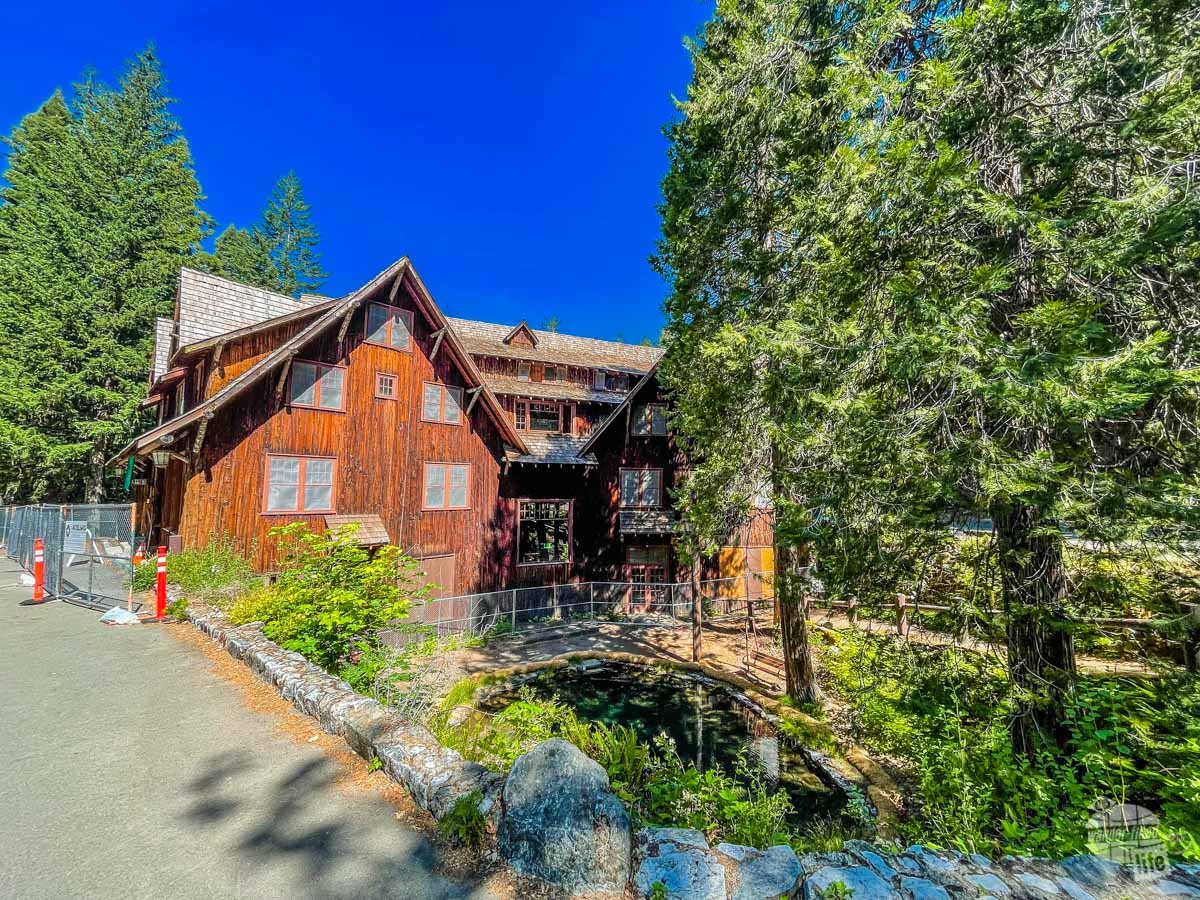
The historic Oregon Caves Chateau, right across from the cave entrance and visitor center would be a great place to stay. Unfortunately, it has been closed for renovations and does not currently have a projected reopening date.
Read more about visiting Oregon Caves National Monument.
Crater Lake National Park – 1 Day
At 1,943 feet, Crater Lake is the deepest lake in the United States. It is also generally regarded as the bluest lake. A drive around the lake provides ample opportunity to take in the stunning blue water and surrounding scenic beauty.
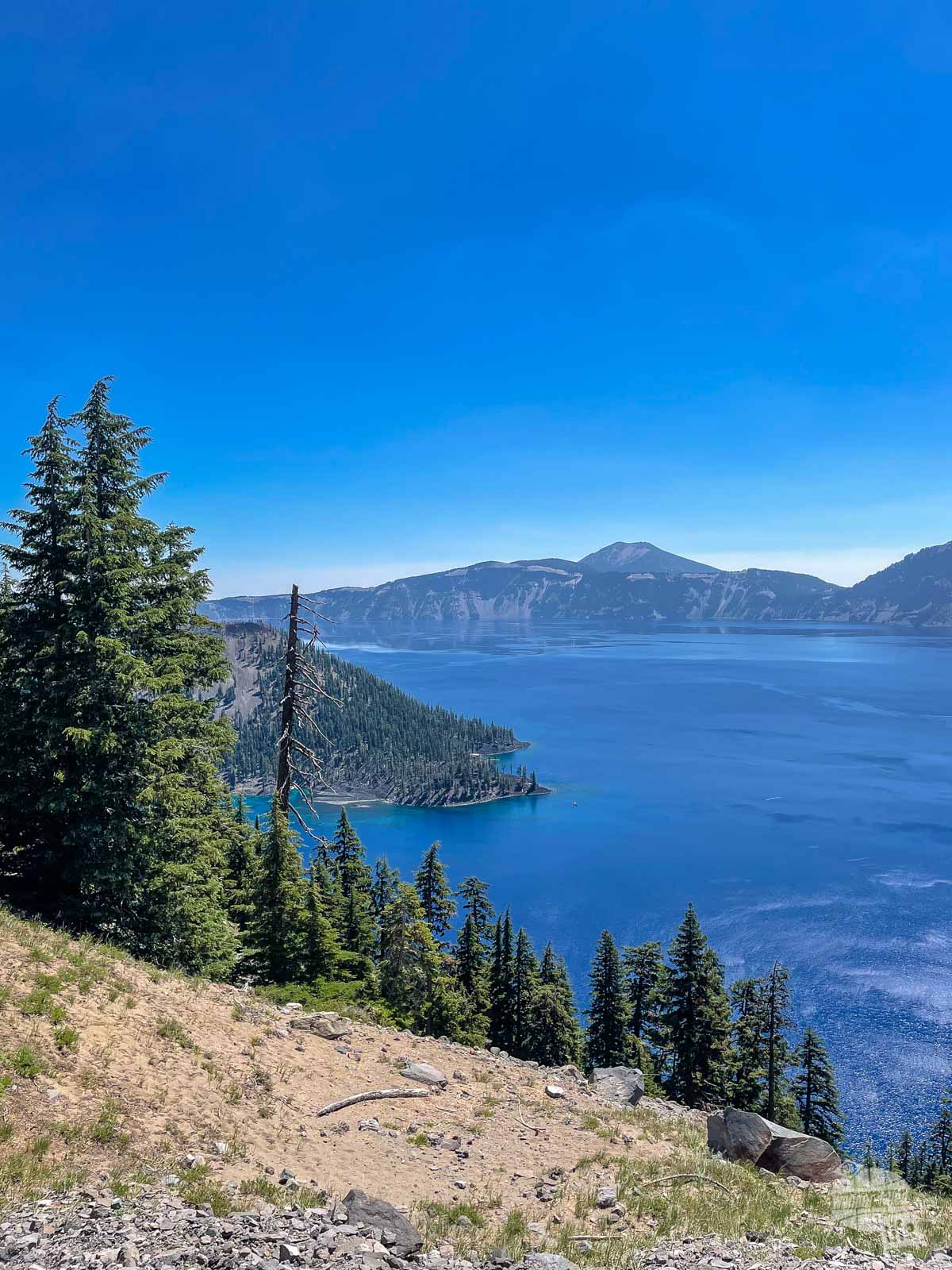
Depending on how many stops you make, the drive around the lake should take you 2-3 hours. You can spend the rest of the day doing a couple of short hikes. In particular, we enjoyed the Plaikni Falls Trail, which is a relatively easy 2-mile hike.
If you are up for a challenge, check out the Cleetwood Cove Trail, which descends 700 feet to reach the lake. At the lake, you can swim, fish or take a boat tour. Just make sure you can handle the hike back up to the rim!
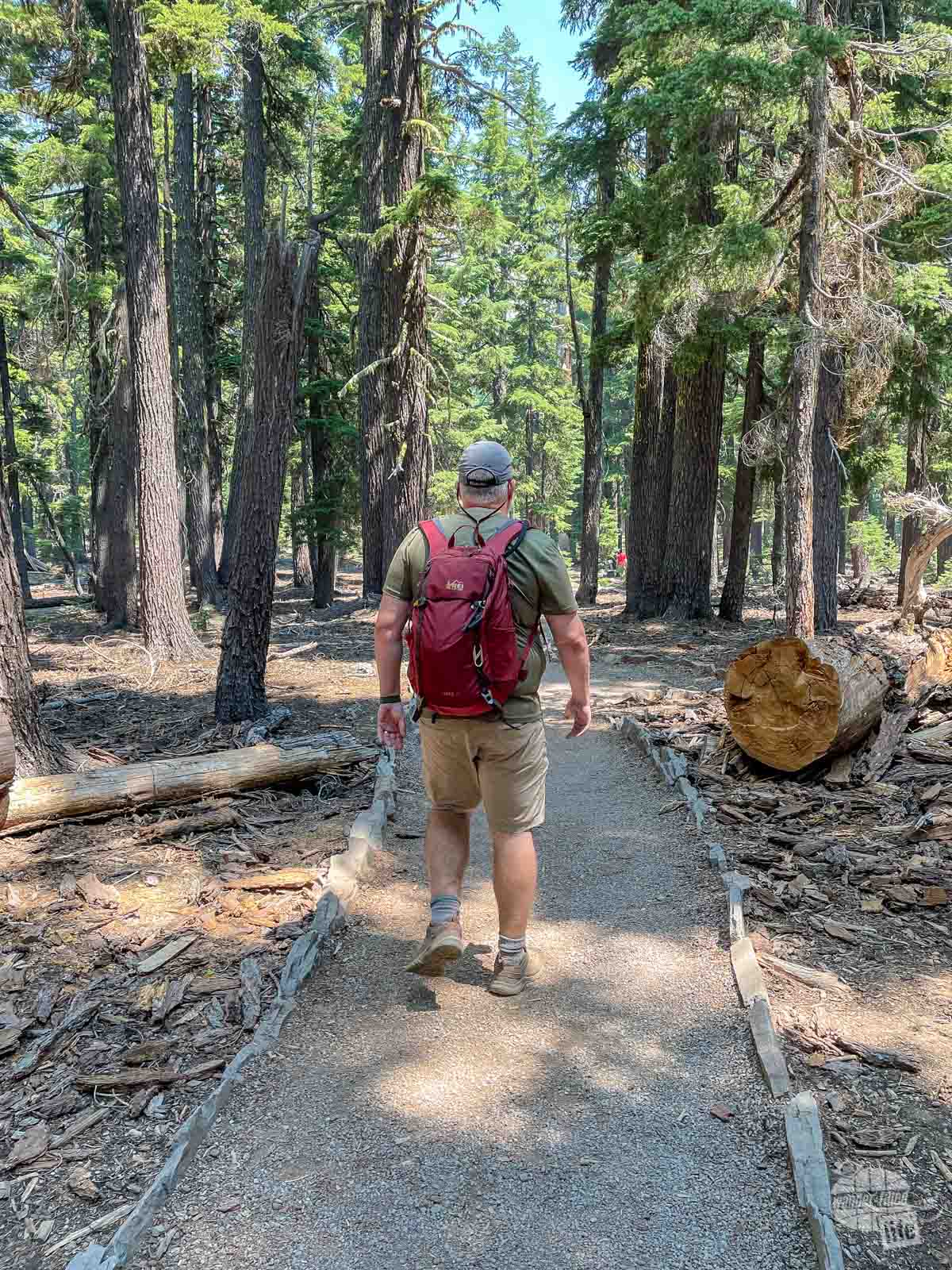
Unfortunately, the park canceled boat tours during our visit (again, due to COVID-19). We were really looking forward to spending a few hours out on the lake and possibly even doing some hiking at Wizard Island. Hopefully, we’ll have the opportunity to return to Crater Lake NP one day so that we can enjoy a boat tour!
I’d suggest adding at least one additional day onto your stop if you do plan to hike to do a boat tour or spend any considerable time down at the water. Of course, we could also just spend a couple of days sitting on the porch of the Crater Lake Lodge enjoying the scenery!
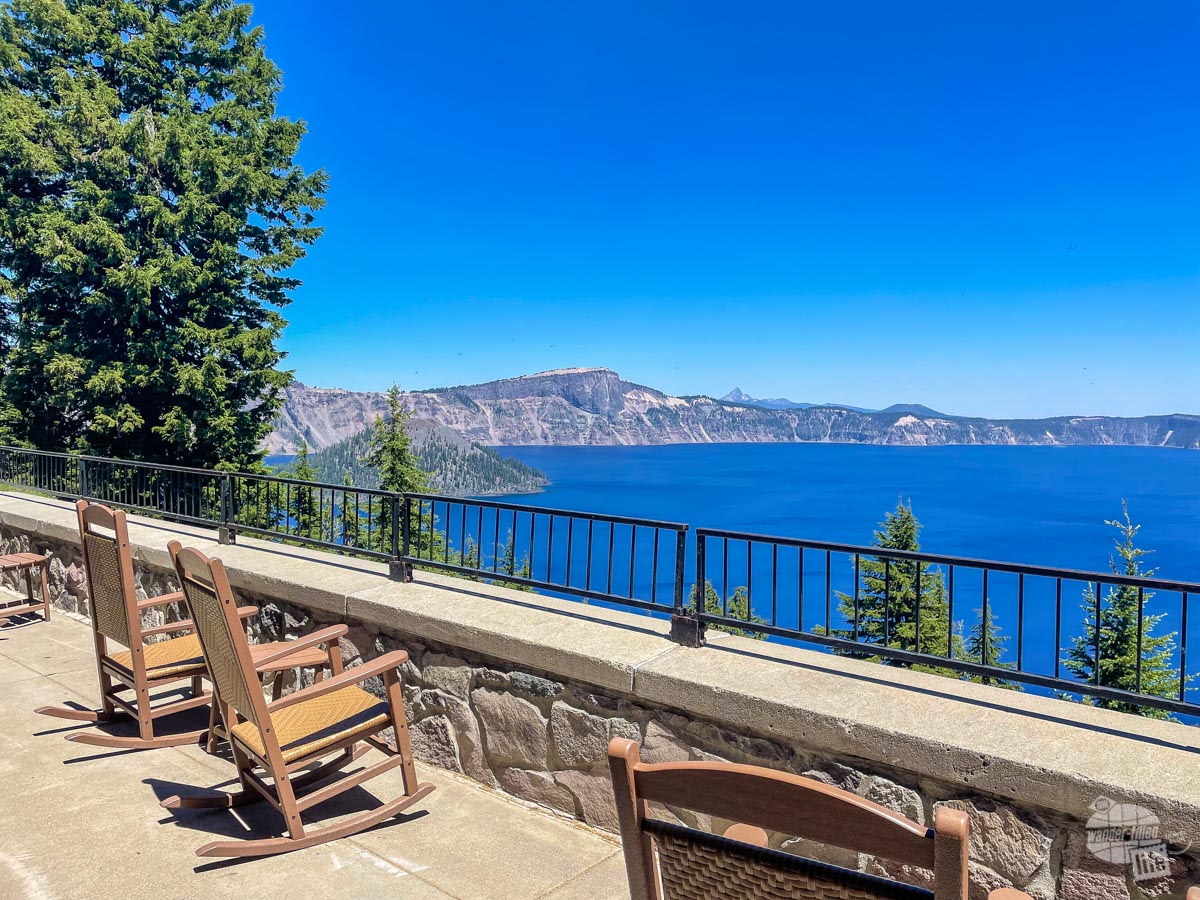
Where to Stay for Crater Lake National Park
We spend almost a week in the area, camping at Broken Arrow Campground just north of the park. The campground does not have any hookups but was still one of our favorite campgrounds of all time.
With well-spaced sites tucked into the trees, we really enjoyed the serenity of the campground. And, it was only a 10-minute drive to the north entrance of Crater Lake NP.
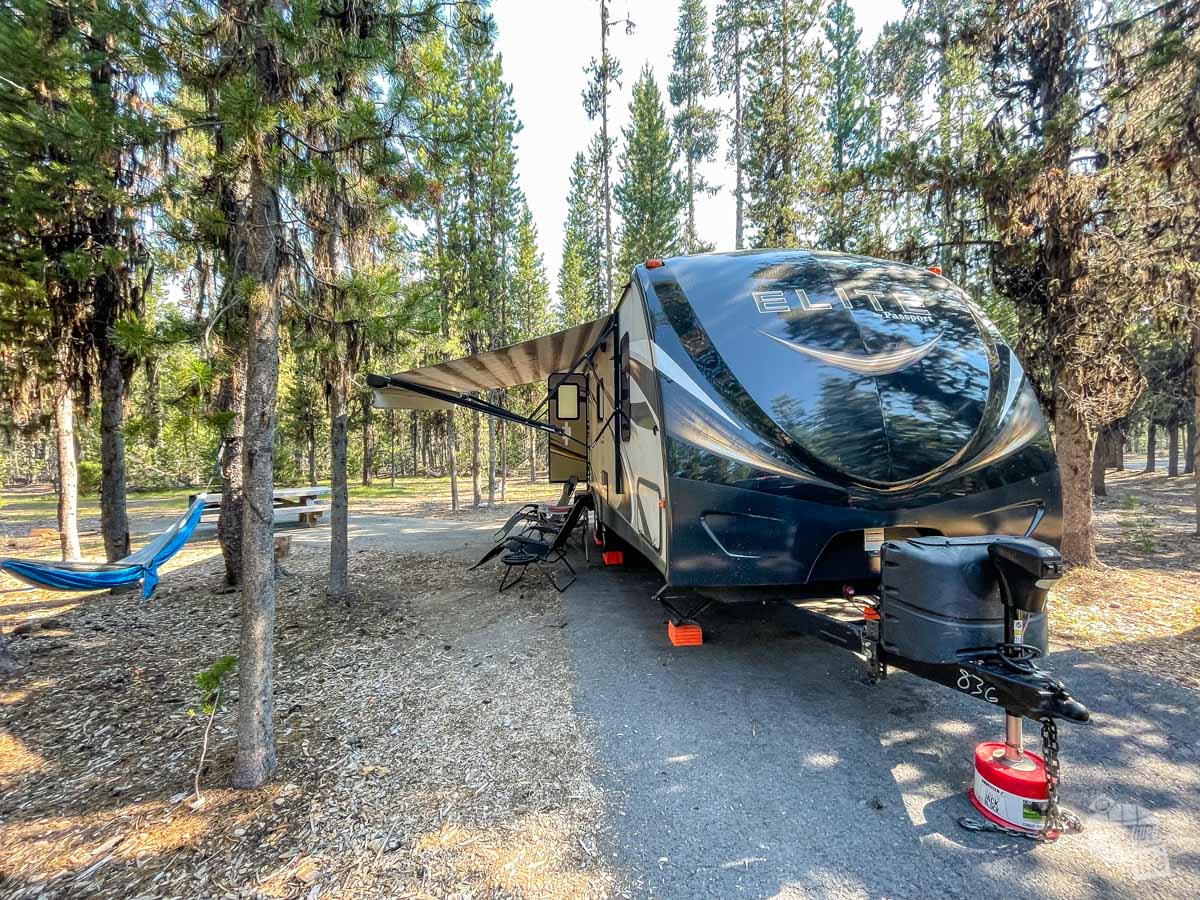
Honestly, though, the history, scenic views and charm of the Crater Lake Lodge is difficult to pass up. It will certainly be a struggle to choose between the lodge and a return visit to the campground on our next visit!
Get all the details of a one-day visit to Crater Lake National Park.
Tule Lake National Monument and Lava Beds National Monument – 1 Day
Our Northern California national parks road trip itinerary returns to California to two national monuments: Tule Lake and Lava Beds. The two parks are located just 20 minutes apart in Tulelake, CA.
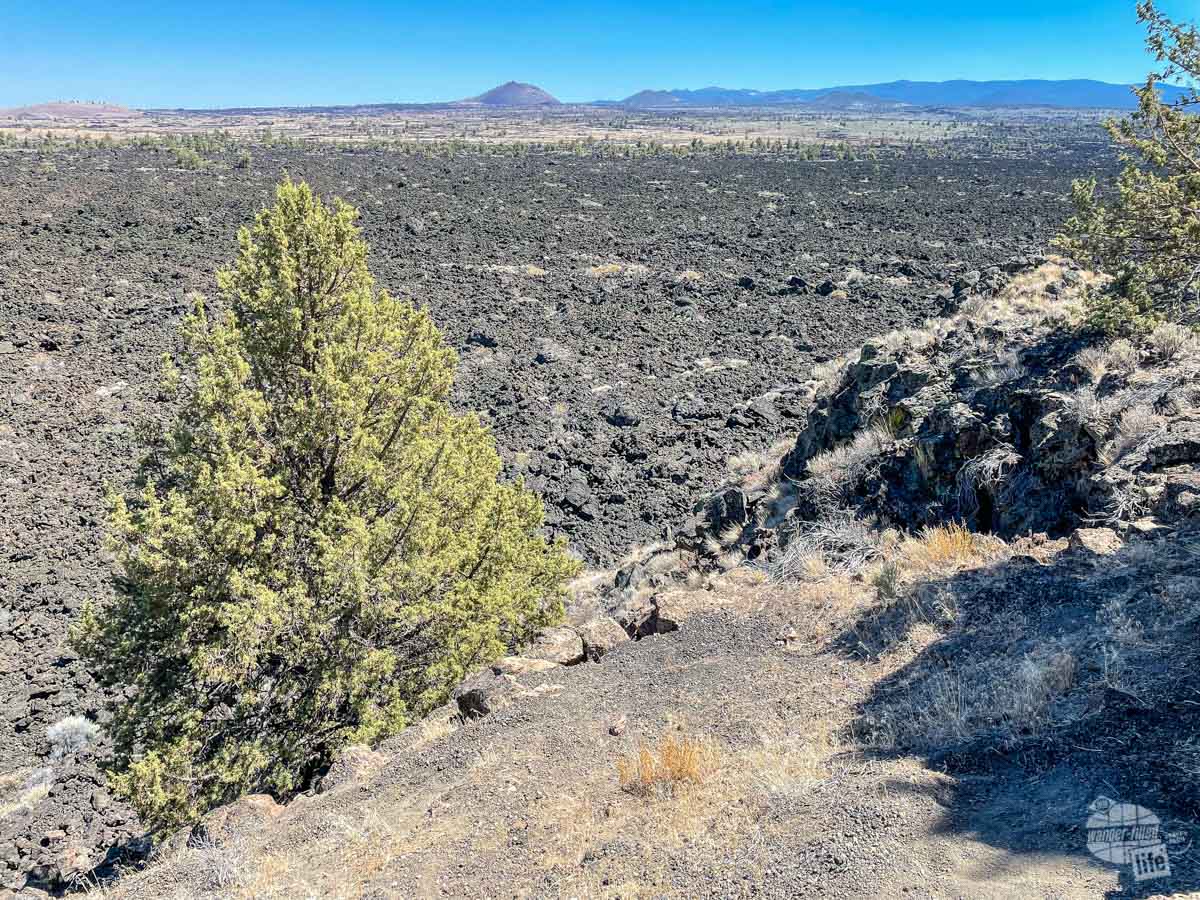
Previously, Tule Lake was just one unit of the World War II Valor in the Pacific National Monument. In March 2019, Congress redesignated the park, creating Tule Lake National Monument as a separate park from the better-known Pearl Harbor National Memorial in Hawaii. Tule Lake National Monument preserves the largest of 10 relocation “camps” that housed incarcerated Japanese Americans during World War II.
Unfortunately, Tule Lake National Monument has limited visiting hours and is only open Thursday through Monday in the summer. We were not able to visit this park during our trip in the Summer of 2021. We have, however, visited other relocation camps, such as Heart Mountain in Cody, WY, Minidoka National Historic Site in Jerome, ID and Amache National Historic Site in Granada, CO. This little-known piece of American history is a story that deserves more attention.
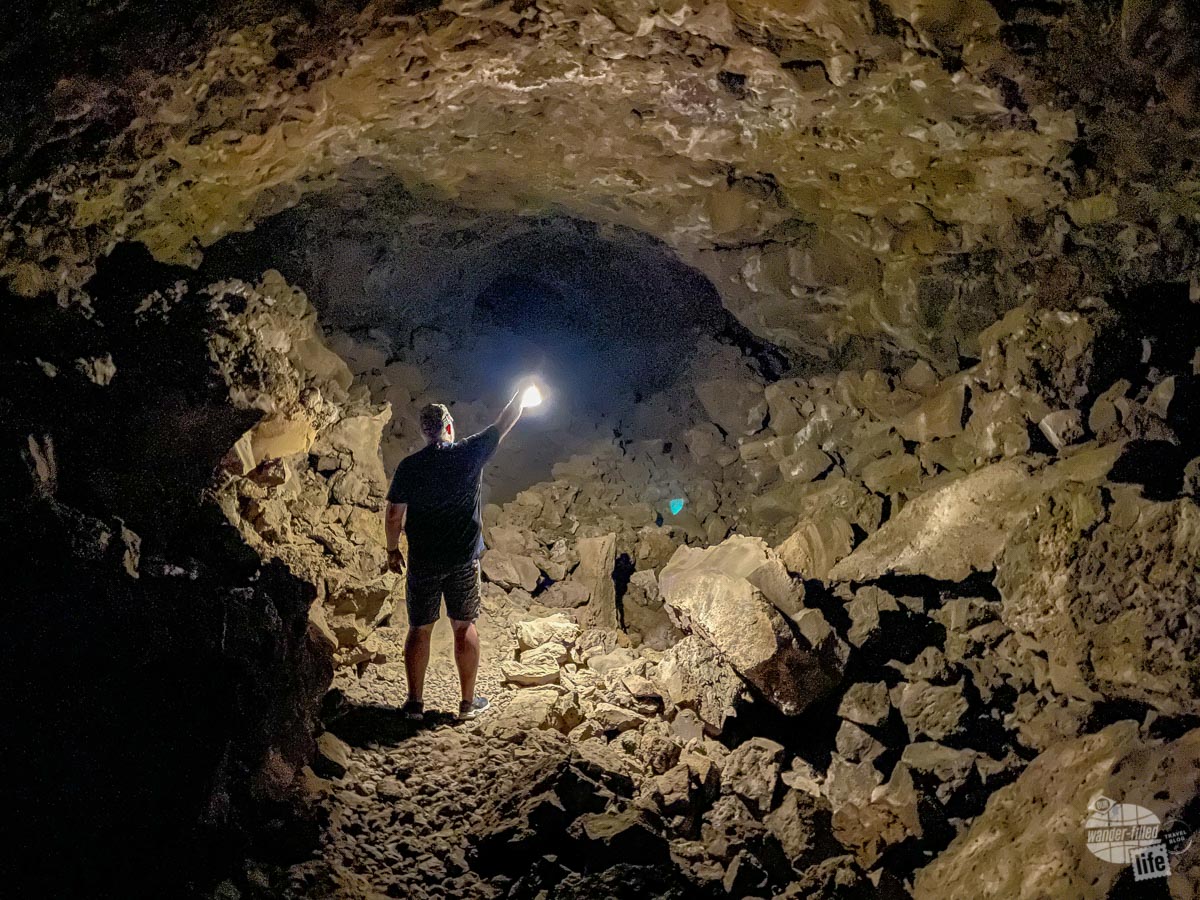
On a lighter note, Lava Beds National Monument preserves a volcanic landscape, which is home to more than 800 caves, historic battlefields and Native American art. What we enjoyed most about this park was being able to explore the lava caves on our own. At most parks, caves can only be explored on a guided tour.
Only a small fraction of the 800 caves are open to the public but you can still easily spend an hour or two exploring them. There are also a few hiking trails but be prepared to hike through a desert climate with essentially no shade. We generally love a good hike but based on the summer climate, the caves are a much more comfortable way to spend your day.
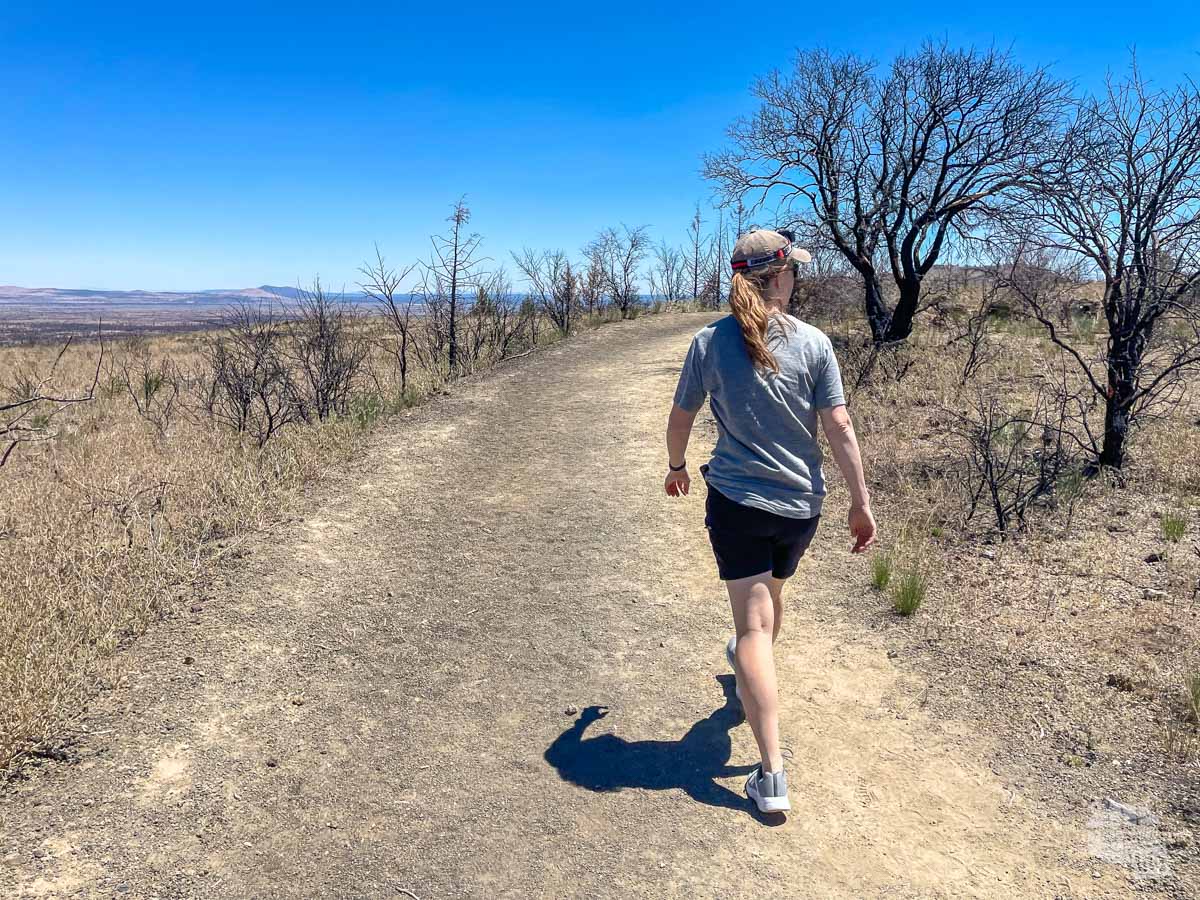
Where to Stay for Lava Beds and Tule Lake National Monuments
We actually visited Lava Beds National Monument as a day trip from our campground at Crater Lake. While that worked for us, it did make for a long day, since it was about a 2-hour drive each way. And that did not include a visit to Tule Lake National Monument. You probably don’t want to do that if you plan to visit both parks.
Tulelake is a very small town without much to offer in terms of camping, lodging or dining. As such, we would suggest staying in Klamath Falls, OR. You could use Klamath Falls as a base for visiting Crater Lake National Park also. Crater Lake is about an hour’s drive from Klamath Falls.
Check out our full coverage of Lava Beds National Monument.
Lassen Volcanic National Park – 3 Days
Continuing south, Lassen Volcanic NP is yet another volcanic landscape with mountains, forests, hydrothermal features and more. We suggest spending 1-2 days in the main area of the park and 1-2 days in the Warner Valley/Juniper Lake area on the southeast side. With additional time or specific interest, visit the northeast area of Butte Lake.
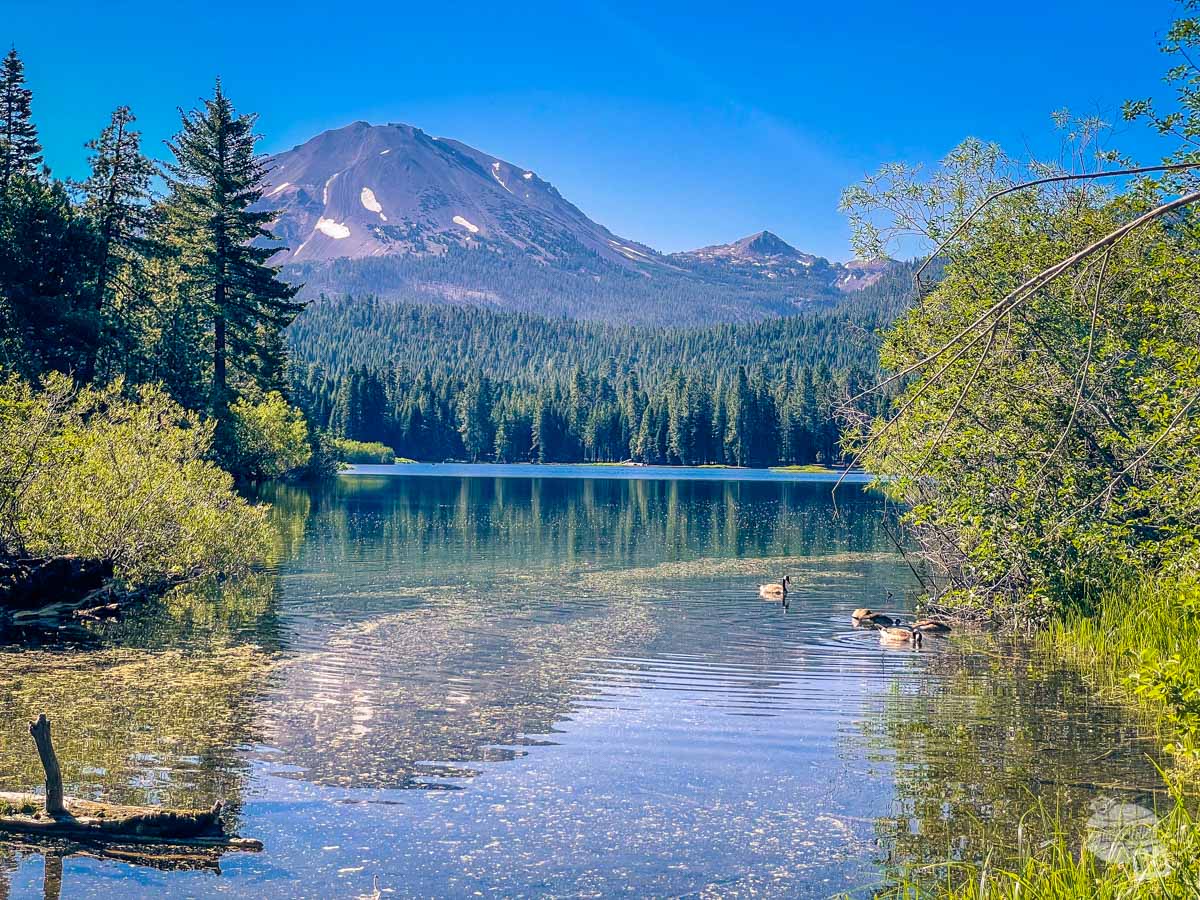
Coming in from the north, you’ll enter the park at Manzanita Lake. Stop here for a quiet and easy stroll around the lake, a visit to the Loomis Museum or pick up a bite to eat at the Camp Store. As you drive the main highway through the park, stop at some of the many pullouts to learn more about the landscape and take in the scenery.
To see the best hydrothermal area, hike the 2.6-mile Bumpass Hell Trail, our top recommendation in the park. If you’re not up for the moderately strenuous hike, you can still get a small taste of thermal features at the Sulphur Works pullout near the southwest entrance.
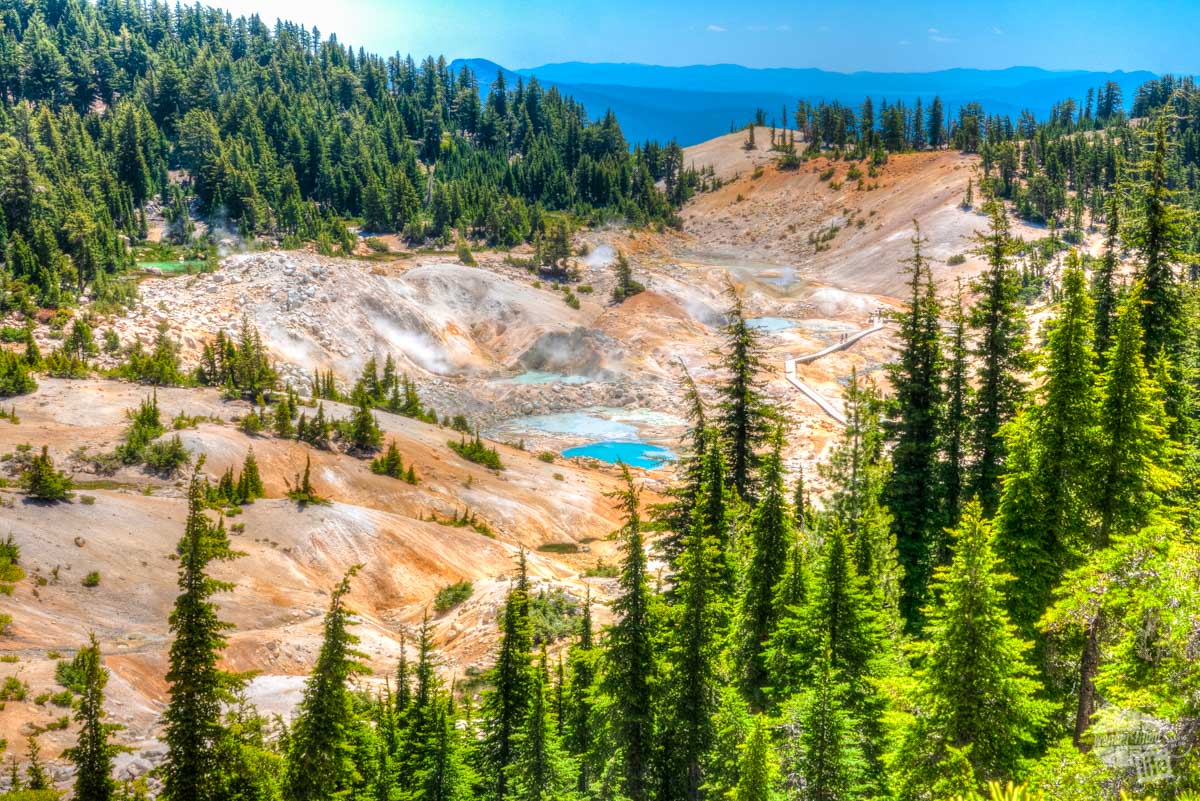
In Warner Valley, our recommendation is yet another thermal area, Devils Kitchen. As a much more remote area, you just might like Devils Kitchen even better than Bumpass Hell. At Juniper Lake, you can take an easy stroll along the lake or hike up Mount Harkness for some of the best views in the park.
Dixie Fire of 2021
You likely heard the news of the Dixie Fire in the summer of 2021, which burned more than 950,000 acres in and around Lassen Volcanic National Park. The fire started less than three weeks after we visited the park. The fire burned through some areas of the park, destroying several structures along the way.
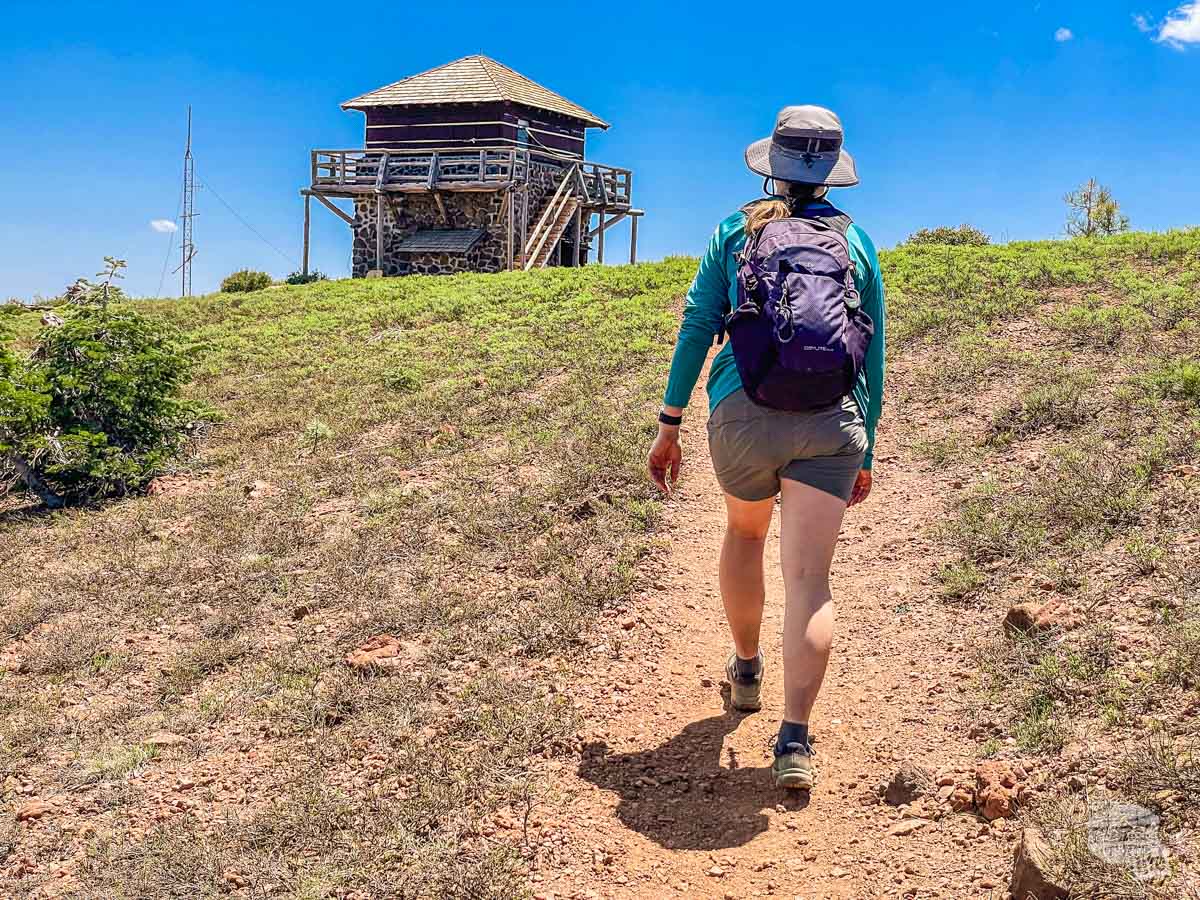
In particular, the Mount Harkness Lookout Tower was lost in the fire. When we did the hike up Mount Harkness in late June, we were surprised to find the tower unstaffed. Upon asking a ranger about this, she said that traditional staffing regulations hadn’t quite caught up with climate change.
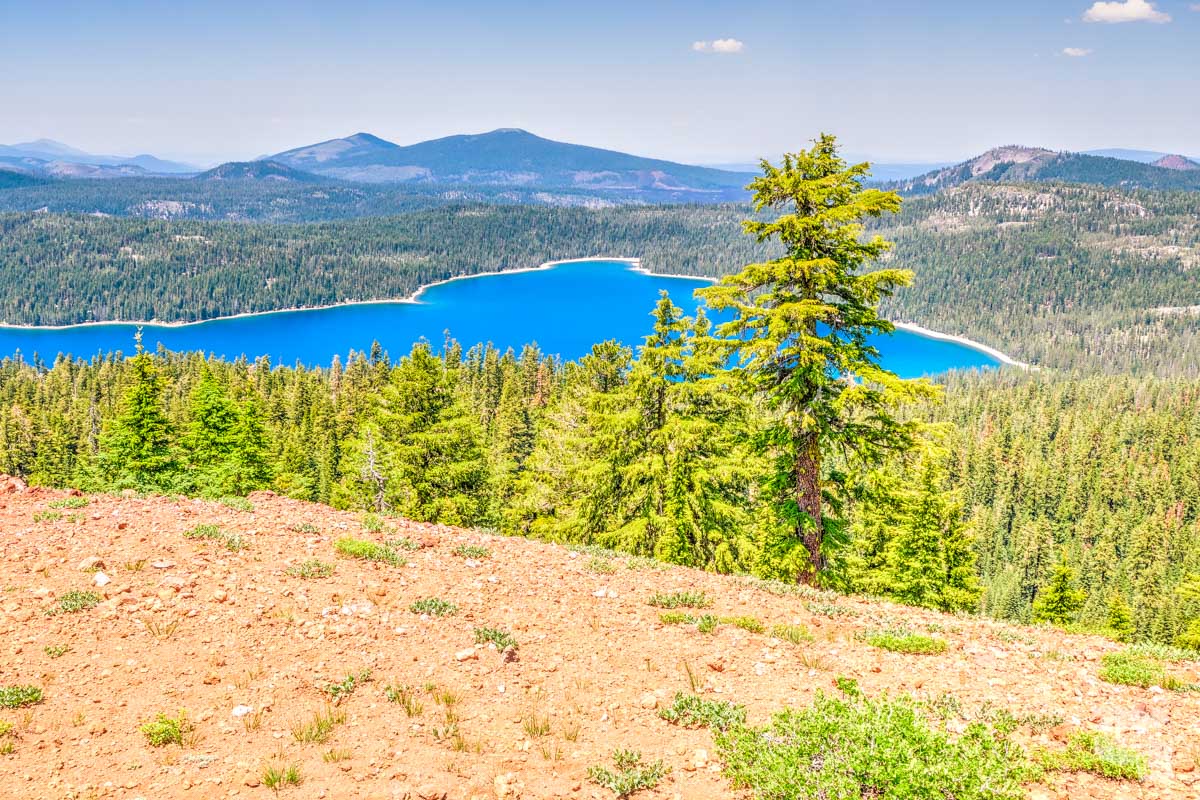
In addition to the fire lookout tower, a few other structures and a campground were destroyed. Some trails and footbridges have been affected as well. Of course, the burned areas will be visible for years to come. While this is heartbreaking to see, fire is a part of nature. And some vegetation thrives after a fire, with some relying on fire for reproduction.
Where to Stay for Lassen Volcanic National Park
Since Lassen Volcanic National Park is remote and fairly spread out, finding a central place to stay can be difficult. We camped at The Village at Childs Meadow, near the Southwest entrance in Mineral, CA. The location proved to be a good location for visiting the main area of the park, Juniper Lake and Warner Valley. There are a few other options for lodges and even a small resort in that area.
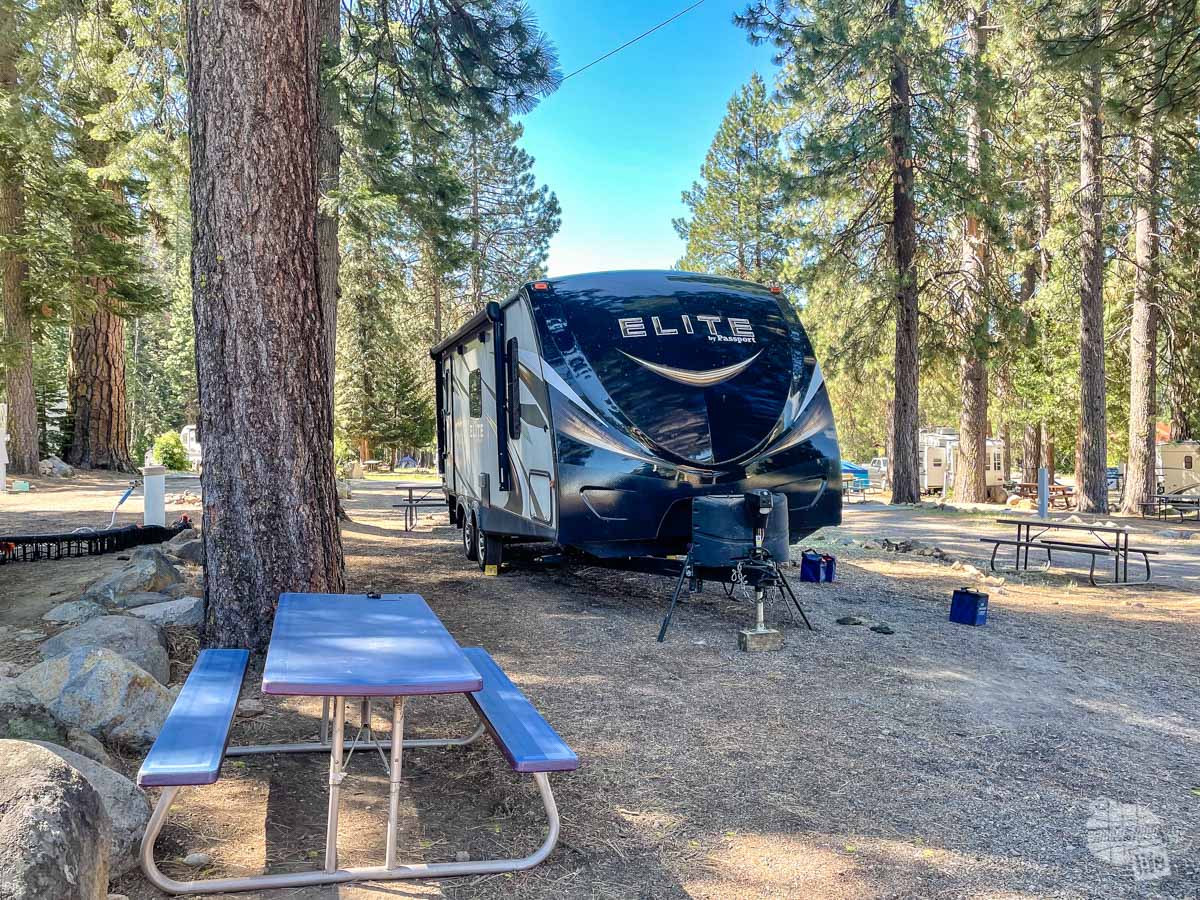
If you prefer to tent camp or stay in a cabin, you’ll find both at Manzanita Lake at the north entrance to the park.
Larger cities with more services are at least an hour away.
Read more about visiting Lassen Volcanic National Park.
Whiskeytown National Recreation Area – 1 Day
As with most national recreation areas, Whiskeytown National Recreation Area will appeal mostly to visitors looking to recreate on or in the water. Whiskeytown Lake is the centerpiece of the park, with swimming, boating and paddling being popular activities for visitors. In the summer, the water is a welcomed relief from the oppressive heat that typically engulfs Redding, CA.
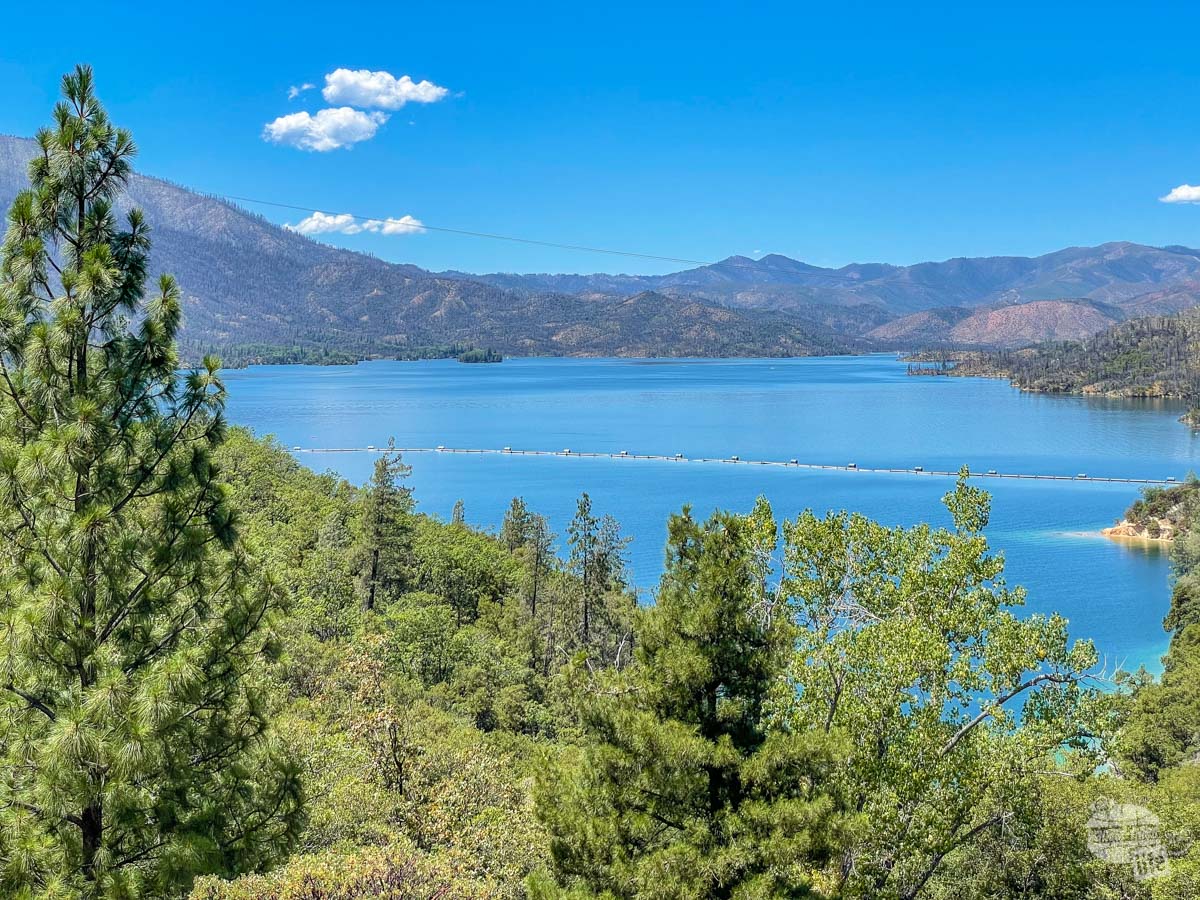
Of course, there are also opportunities for hiking, scenic drives and mountain biking, among other activities. Unfortunately, a good portion of the park is still closed following the 2018 Carr Fire. This fire burned 97% of Whiskeytown National Recreation Area and affected more than 100 structures. It is considered the most destructive fire in the history of the National Park System.
Between the extreme heat (well over 100 degrees) and the lack of shade due to the fire, visitors must plan their time at this park carefully.
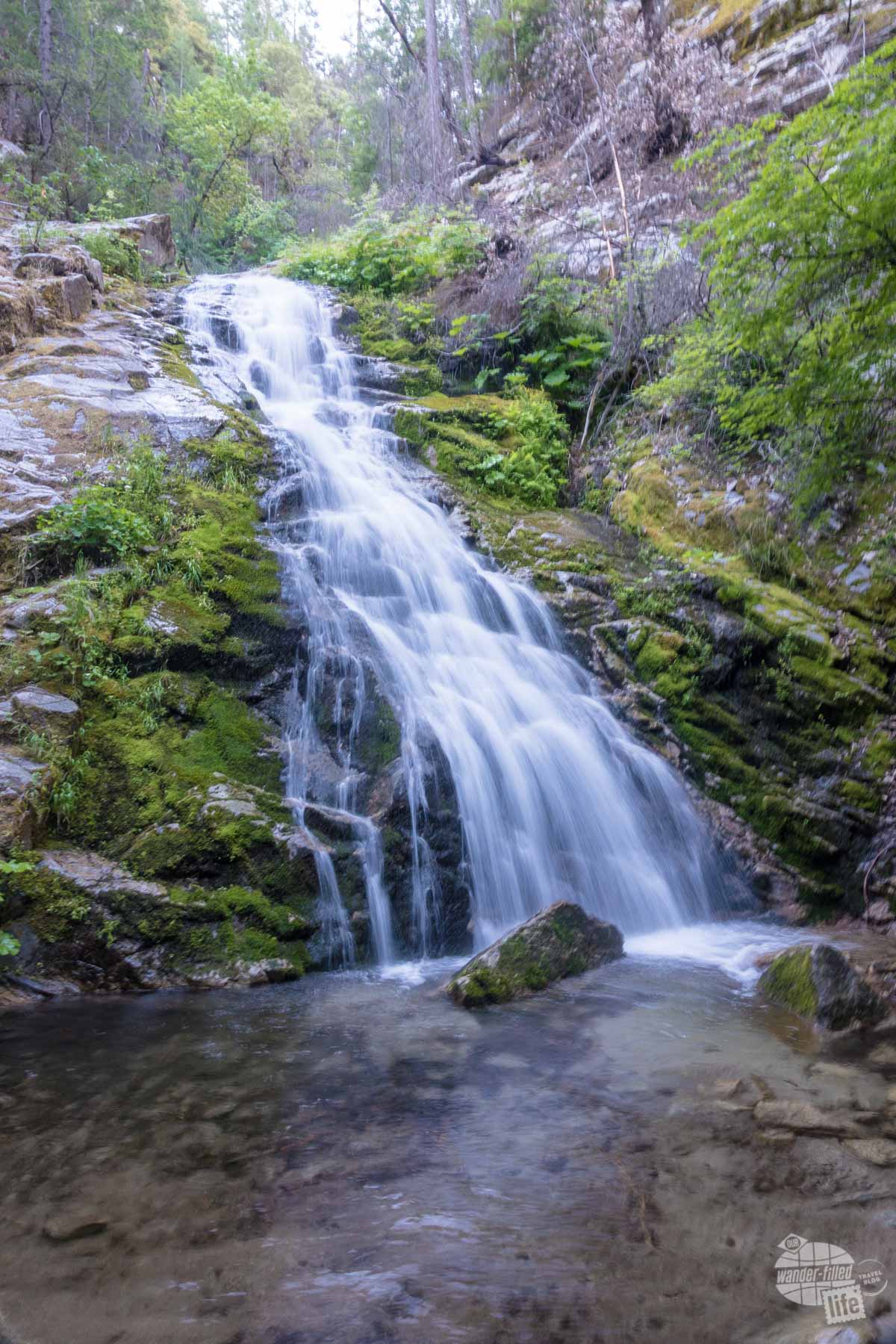
We made a point to get up early to do a couple of hikes. Indeed, by noon we found the heat to be almost unbearable. If you do have time for a couple of hikes, the namesake Whiskeytown Falls is well worth the moderately strenuous 3-mile roundtrip hike. Crystal Creek Falls is another nice waterfall that can be reached with a short and easy 5-minute walk along a paved road.
Additionally, the Kennedy Memorial is worth a stop. This memorial commemorates President John F. Kennedy’s participation in the dedication of the dam in September 1963, just two months before his assassination.
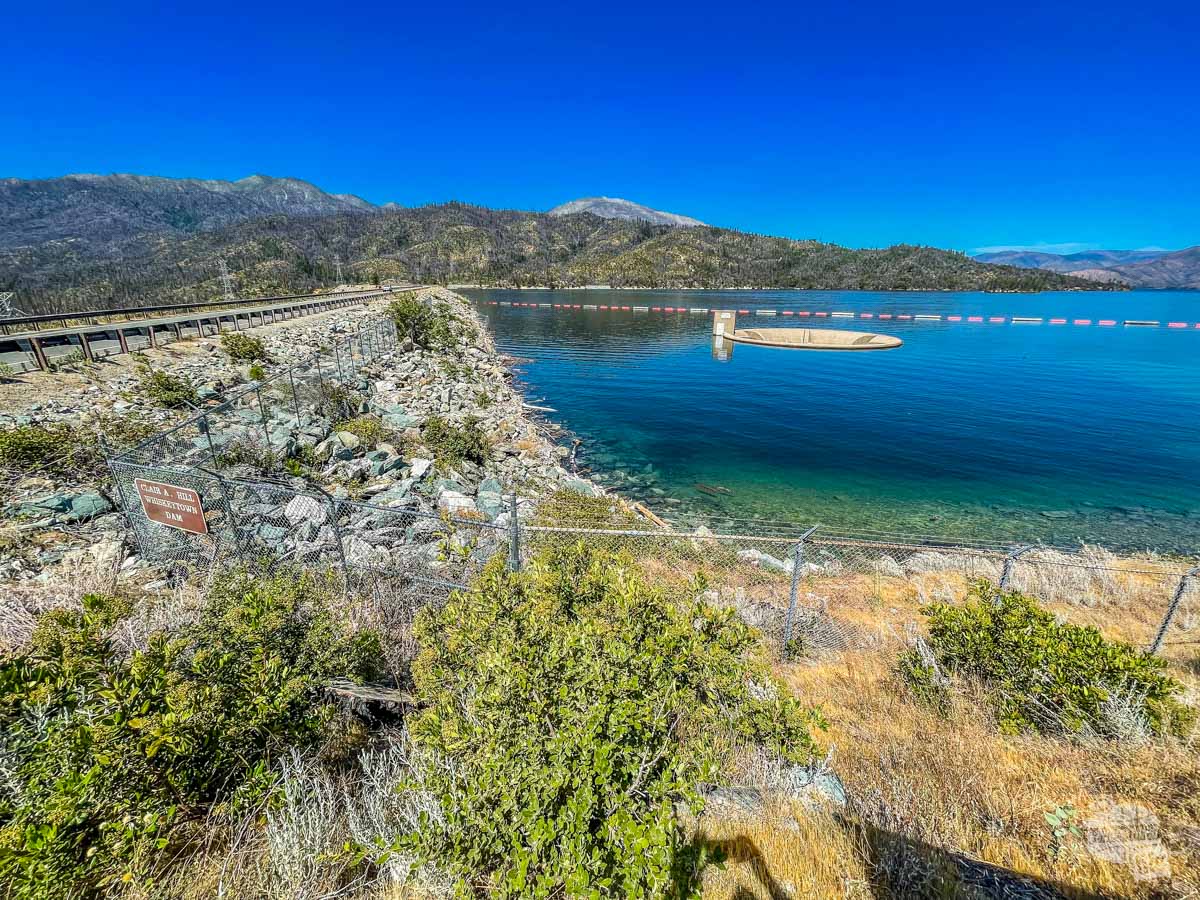
While we made the most of our visit, I have to admit that Whiskeytown National Recreation Area was not our favorite park, at least in the summer. It was simply too hot to enjoy.
Unless you have a specific interest in boating or swimming in the lake, I’d say you can skip it. Of course, if you are like us, and are looking to visit all 400+ units of the national park system, you will go and find something to enjoy, if only for a few hours!
Mostly, we just want you to know what to expect in terms of the extreme temperatures so that you can have a safe visit.
Where to Stay at Whiskeytown National Recreation Area
Whiskeytown National Recreation Area is located just outside Redding, which is a large city with plenty of options for camping, lodging and dining. We camped at the Redding Premier RV Resort. While we enjoyed the campground, the extreme heat was just too much for our camper’s air conditioner.
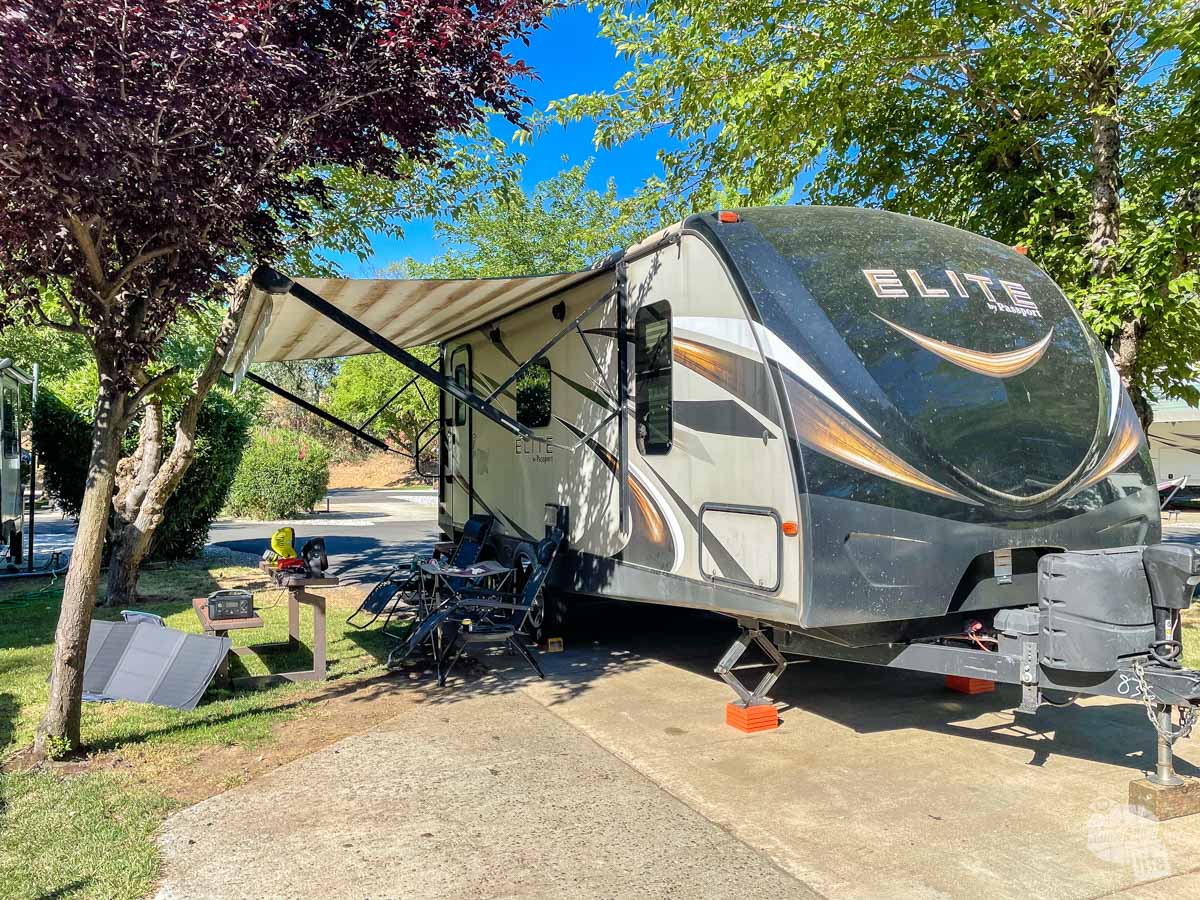
Based on our experience, I would not advise camping unless you have a powerful AC that can withstand extreme temperatures. I certainly would not recommend tent camping unless you are very used to camping in extremely hot and dry conditions.
Thankfully, there is a wide variety of hotels available in Redding.
Read our full guide to visiting Whiskeytown National Recreation Area.
Final Thoughts on the Northern California National Parks Road Trip
With a wide range of landscapes and features, Northern California and southern Oregon are home to some incredible national parks. The area is home to an incredible volcanic landscape, which creates much more variety than you might initially expect. With hiking trails, scenic drives and numerous caves, there is no shortage of activities to pique your interest.
Ultimately, this itinerary is full of extremes. You’ll find extremely tall trees, an extremely deep lake, extremely remote areas and, perhaps, even some extreme temperatures.
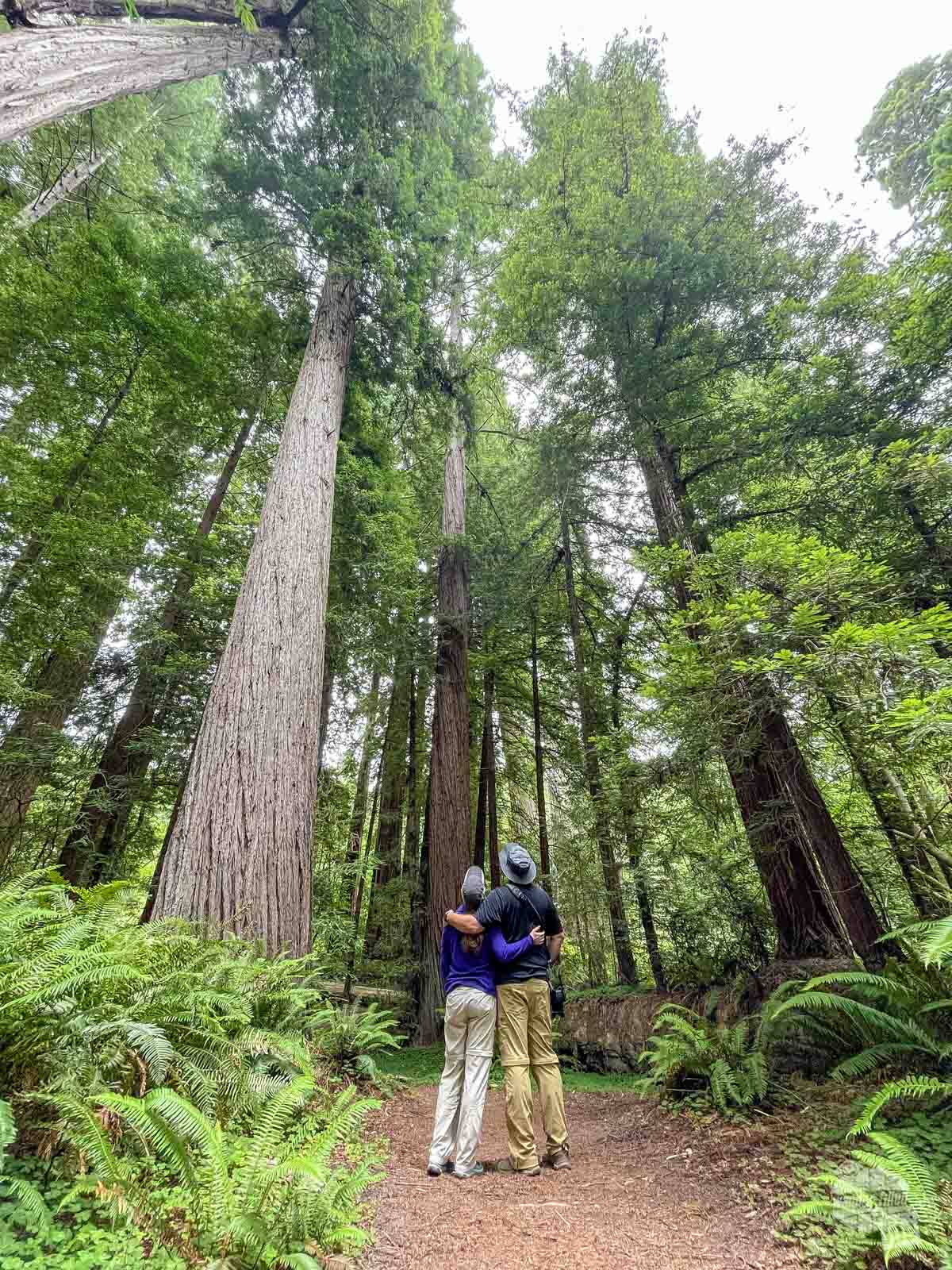
This Northern California national parks road trip itinerary is flexible on its starting point and makes for a good road trip in a car or RV. There also are several airports providing access to the region, though you should be prepared for a drive of at least an hour or two from any airport to the nearest park.
Many of the parks can be enjoyed in just a day or two. Those who prefer to travel slower or doing some additional hiking can easily enjoy a longer visit at most of the parks, especially the designated National Parks.
However you complete this journey, you are sure to find something you enjoy.
Travel Resources
What do you use to find a flight.
We use Skyscanner to find deals on flights. Skyscanner has a great interface and compares tons of airlines for the best pricing and routing. That said, it does not always have every airline and some airlines will have better deals on their website. Still, Skyscanner is a great place to start. Click here to search for a flight.
What do you use to find a hotel?
We typically stay at Hilton properties , so we use the Hilton website . You can find good Hilton Honors discounts or AAA discounts for a hotel there. We make great use of our free night certificates from our Hilton Honors American Express. Click here to book a Hilton property.
If there are no Hilton properties available, we use TripAdvisor to read reviews and book the hotel. We find we can get the best price that way. Click here to search for a hotel.
We recently partnered with Stay22 to add interactive maps to each of our destination posts. This will allow you to see a plethora of hotels and vacation rentals all in one responsive map of the area.
What if I need more space than I can get at a hotel?
We use Vrbo for the times when we have rented a cabin for a weekend getaway, like this cabin in Townsend, TN , or needed to rent a house for a large family vacation. We had a great experience with them in terms of refunding deposits when COVID hit and will continue to use them. Click here to search for a vacation rental.
Who do you use for rental cars?
As a general rule, we book with Hertz for rental cars. We have had nothing but good experiences with them. Plus, we really like unlimited mileage and not worrying about crossing state lines. We have even rented from Hertz overseas in both Slovenia and Croatia . Click here to book a rental car.
How about booking a cruise?
We have found some amazing prices for booking a cruise through Cruise Direct . We have saved a lot of money on our cruises compared to what we found elsewhere, making a last-minute Bahamas cruise even cheaper. Click here to book a cruise.
What if I want to rent an RV?
We highly recommend Outdoorsy for RV rentals. We rented a camper van for a week to visit Rocky Mountain National Park for the elk rut and Custer State Park for the Buffalo Round-Up and had a blast. The program was easy to use and we really enjoyed the freedom of having a camper van for that trip. Click here to rent an RV.
What do you use for booking tours?
We don’t often book tours. Typically, we like to do stuff on our own. That said, there are some experiences you can’t have any other way. So, when we do want to book a tour, we always check Viator first. Click here to book a tour.
Do you use anything to get discounts on the road?
We make extensive use of both Good Sam and AAA on the road. Good Sam is normally regarded as a discount card for RVers at campgrounds and Camping World but anyone can use the 5 cents off a gallon at the pump at both Pilot and Flying J. Click here to get a Good Sam membership. We have had AAA as long as we have been married and it has more than paid for itself in discounts at hotels, aside from the peace of mind of having roadside assistance. Add in paper maps and the ability to get an international driver’s license and it is more than worth it for any traveler out there. Click here to get a AAA membership.
Leave a Comment Cancel reply
I accept the Privacy Policy
TTC family of brands
My Trafalgar
Destinations
Get Inspired
866 513 1995
California's Great National Parks
204 reviews
Seasonal Sale
Save up to $419
Available Dates
Your itinerary
Dates & prices
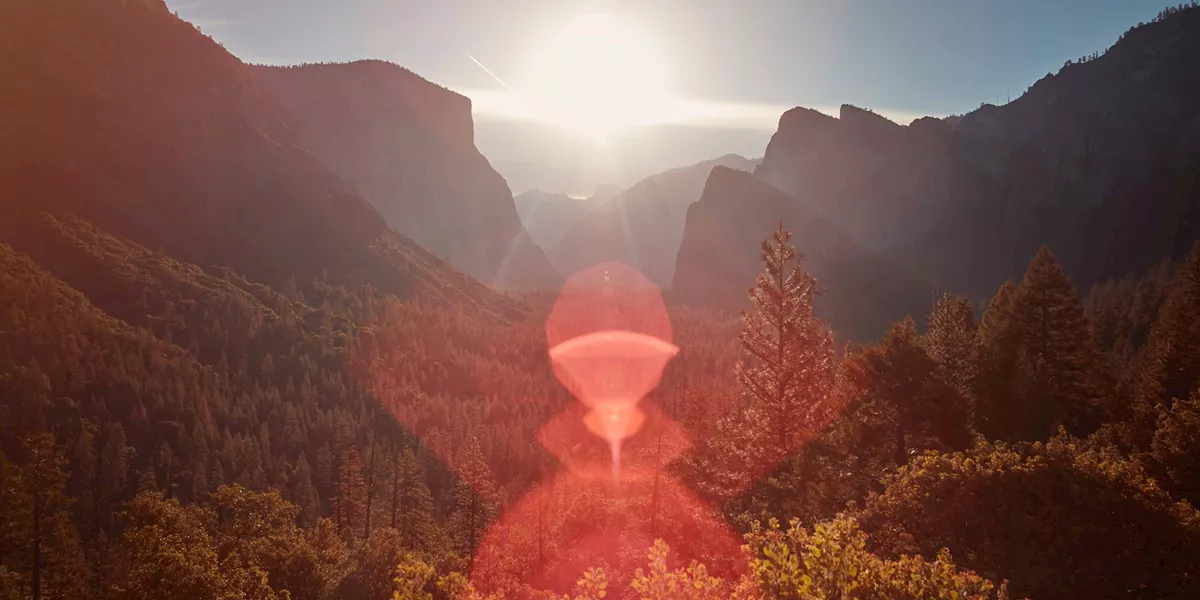
8 Day California Tour to Death Valley, Yosemite, and Sequoia National Parks
8 days, 1 country and 6 cities
Accommodation
7 Breakfasts, 3 Lunches, 3 Dinners
View day-by-day trip itinerary
Larger-than-life sequoias frame your path through the Land of the Giants - experience the natural wonders of California National Parks. Gain fascinating insight and MAKE TRAVEL MATTER® as you meet a climber within Yosemite National Park to learn first-hand about the world of climbing and important conservation efforts. Have lunch with a Local Specialist in Sequoia National Park and learn about the timeless nature that abounds and later admire the stars above in a guided stargazing experience. Bask in the beauty of Mammoth Lakes and see the stunning Death Valley National Park.
Looking to book in a group of 9 or more?
Deals, savings and exclusive private touring options available plus if you need a different date or itinerary change we can create a custom trip. Contact us for more details
Trip code:
Low deposit from $200
Deposit protection
Free booking changes
Trip map & itinerary
Day by day itinerary
8 days itinerary trip from Las Vegas to Los Angeles visiting 1 country and 6 cities
Download itinerary
Print itinerary
Expand all days
About this trip
Sightseeing highlights.
Visit Yosemite National Park, Sequoia National Park, Kings Canyon National Park, Mammoth Lakes, Death Valley National Park, Giant Forest Museum, High Roller Las Vegas
View Zabriskie Point and Badwater Basin in Death Valley National Park, General Grant Tree in Kings Canyon National Park, General Sherman Tree in Sequoia National Park
See El Capitan, Half Dome, Bridalveil Falls
Scenic Drive Along Tioga Pass (seasonal)
Tickets Included Mammoth Mountain Scenic Gondola
Travel highlights
Specific transfer information can be found here:
Airport Transfers
An expert Travel Director and professional Driver
Cherry-picked hotels, all tried and trusted
All porterage and restaurant gratuities
All hotel tips, charges and local taxes
Breakfast daily and up to half of your evening meals
Must-see sightseeing and surprise extras
Audio headsets for flexible sightseeing
All transport and transfers shown
Luxury air-conditioned coach with Wi-Fi in most countries or alternative transportation (such as rail journeys)
Optional Experiences and free time
On occasion, hotels of similar standard and location may be utilized.
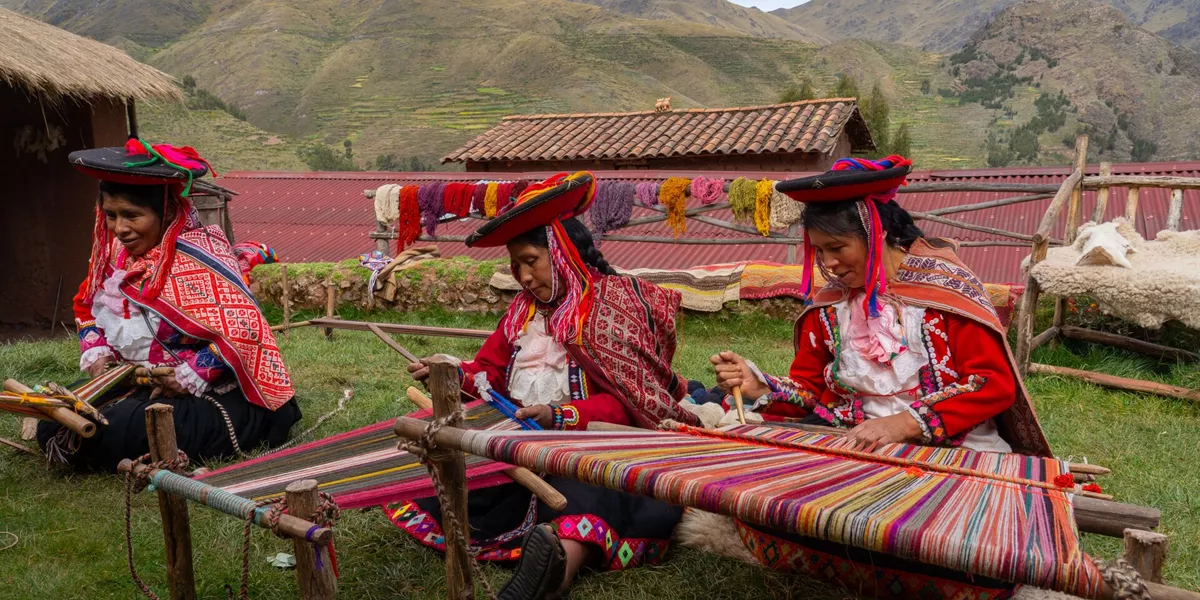
MAKE TRAVEL MATTER® Experiences
Every one of our tours includes at least one conscious travel experience that supports one or more of the United Nations Sustainable Development Goals (SDGS). Look out for yours within the day-by-day trip itinerary.
Find out more

Net-zero by 2050
Travel knowing our 4-point climate action plan will ensure net-zero greenhouse gas emissions by 2050.

Support Local
Your tour directly supports local communities by visiting family-run businesses, UNESCO sites and places of cultural significance.
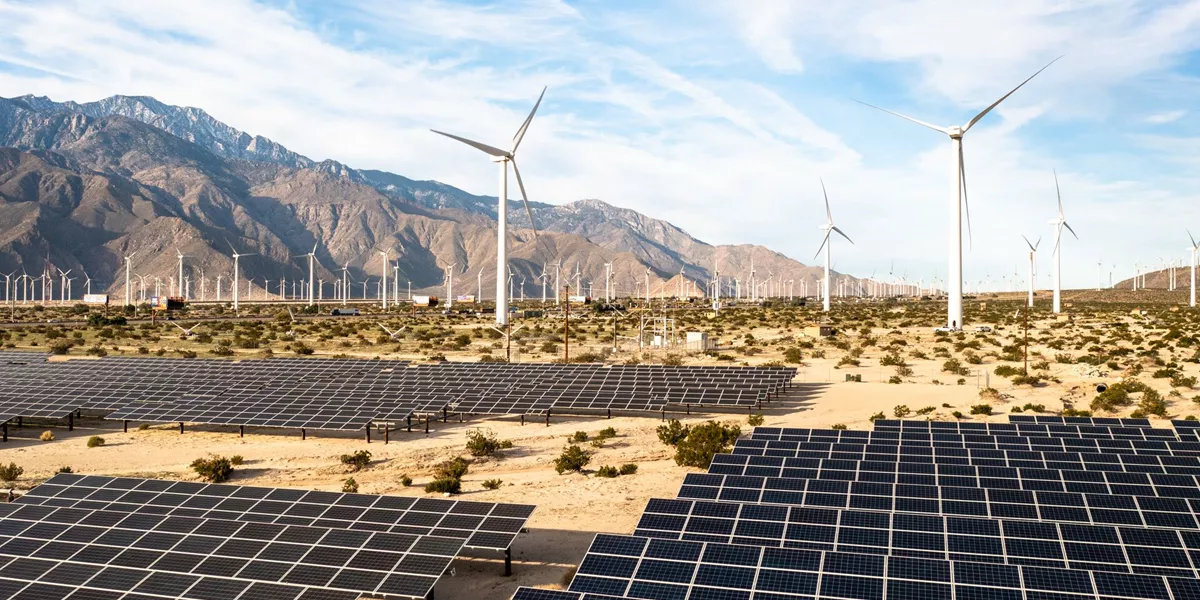
Sustainable Practices
Every part of our business, from trip design to how we run our offices, aligns to our 5-year sustainability strategy which ensures a positive impact on people, the planet and wildlife.
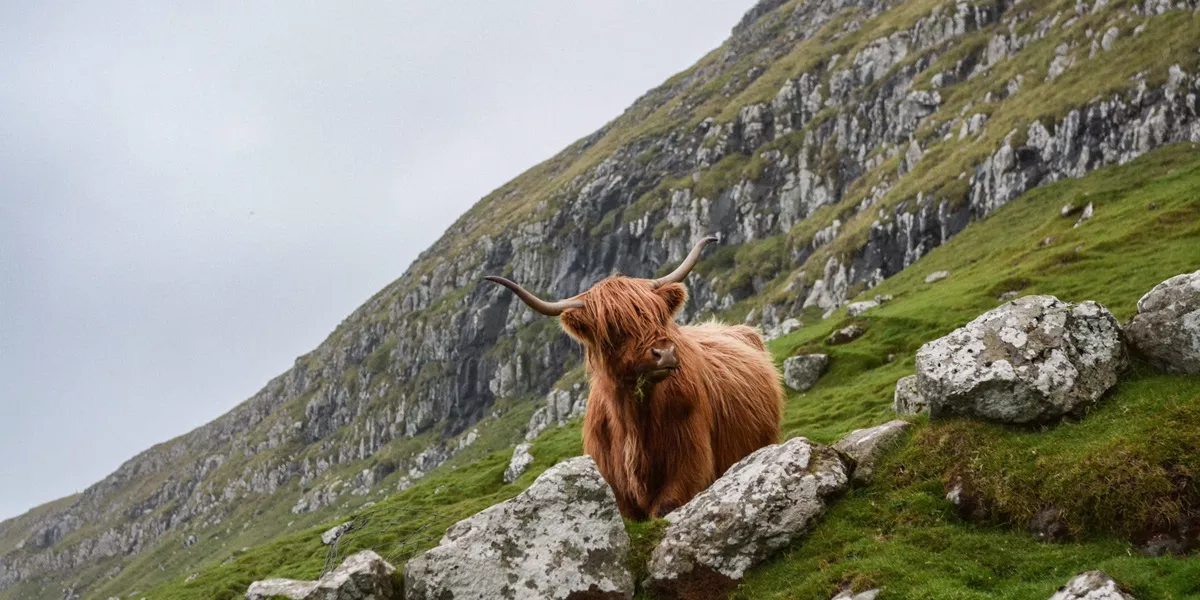
Philanthropic Efforts
Our not-for-profit, the TreadRight Foundation, invests in nature-based solutions to address climate change.
You’ll make a positive impact to people, planet and wildlife on this tour
LIVE, UNEDITED & INDEPENDENT TRAVELER REVIEWS
California's Great National Parks trip reviews
#ttcanationalparks.
Real moments from real travelers, creating the greatest travel stories they’ll ever tell
Or search for something else

Help & Info
WE MAKE TRAVEL MATTER®
Unedited Reviews
Our Destination Management Companies
Frequently Asked Questions
Travel Updates
Media & Press Room
Do Not Sell or Share My Personal Information
Travel Planning
Get Your Free Brochure
Travel Insurance
Booking Conditions
Trip Deposit Level
Recommendations
Trafalgar Tours Limited is a proud member of The Travel Corporation family of companies.
#SimplyTrafalgar
Travel House, Rue du Manoir St Peter Port, Guernsey, GY1 2JH
Selected Region
United States
United Kingdom
New Zealand
South Africa
Copyright 2024 Trafalgar. All rights reserved.
Terms and Conditions
Privacy Policy
Cookie Policy

The Ultimate Guide to National Parks in Northern California
By: Author Leslie Harvey
Posted on Published: April 24, 2023
Share this!:
My home state of California has an important designation when it comes to national parks – California has more national parks than any other state. Five of California’s nine national parks are within a few hour drive from my home base in the San Francisco Bay Area. So it probably goes without saying that my family makes national parks travel a priority. We think your family should too!

I’m often asked about which is the must-visit national park on a trip to Northern California. Often visitors to San Francisco come for a full week and want to include a day trip or even a weekend jaunt to a national park to enjoy California’s great outdoors.
My answer about which park is best is different for every traveler. It also varies depending on the time of year. Weather is very much a factor at all of Northern California’s national parks. Snow is a common occurrence in several of the parks in many winter months, sometimes resulting in limited access or even complete closures. Summer can bring its own challenges as well at some parks. Peak season is often very crowded, and some parks are hard to visit without planning many months in advance.
In order to give other traveling families guidance about which parks to pick and when, here’s a guide to Northern California’s national parks, with a local’s tips and tricks about when to visit and the best things to do while you are there.

Northern California’s 5 National Parks
1. yosemite national park.

- Location : About 80 miles east of Modesto, CA
- Closest airport(s) : Fresno-Yosemite (FAT) ~ 2 hours (to Yosemite Valley), Merced (MCE) ~ 2 hours (to Yosemite Valley). Larger airports of Oakland (OAK), San Francisco (SFO) and Sacramento (SMF) are 3.5-4 hours with no traffic (but plan for plenty of traffic).
- Best time of year to go : Late spring, early fall, summer weekdays
- Recommended visit length : 2-4+ days
- 2023 price to visit : $35 per car
In the pantheon of national parks, Yosemite looms large. Most Americans know something about it and at least know the name, even if they don’t travel to national parks regularly. The park’s majestic waterfalls, monuments like El Capitan and Half Dome, and views from Glacier Point are some of the most iconic national parks images. The hiking and outdoor opportunities are pretty endless. My husband worked in Yosemite years ago, and it is the park we have visited most often, so we can say from a lot of personal experience that it lives up to the hype!
Unfortunately, Yosemite has been a bit of a victim of its own success in recent years. It has almost gotten too popular. Stories about the long lines to enter and complete lack of parking for the cars that do enter flood the news during the summer high season.
But that doesn’t mean you shouldn’t go! It just means more strategy is required to make a trip successful. If you must go in the summer peak season, weekday visits are highly preferable to weekend ones. If you must enter on a summer weekend, plan to arrive very early to beat the crowds (as in, sun up early). Finding lodging inside the park can also really help you dodge many of the crowds since you can park and take Yosemite’s shuttles or rent bikes.
Yosemite can also be pretty glorious during shoulder season. Early fall right after the Labor Day crowds leave is a sweet spot, as is May before Memorial Day. Yosemite in winter is an entirely different type of vacation, with snow blanketing much of the park during the season. The park is even home to one of the very few ski resorts within national park boundaries – Badger Pass. Just be sure to watch for road and park closures during winter storms.
See all our family’s best tips in my complete guide to Yosemite National Park with kids . And be sure to check the park’s website in advance of your visit. While Yosemite has announced it does not plan to require reservations for the rest of 2023, it has required reservations off and on the last several years. A reservations requirement could always return again if crowds warrant it.
2. Sequoia & Kings Canyon National Parks

- Location : About 70 miles east of Fresno, CA
- Closest airport(s) : Fresno-Yosemite (FAT) ~ 1.5 hours, Bakersfield (BFL) < 2 hours, San Jose (SJC) ~ 3.5-4 hours
- Best time of year to go : Late spring through early fall
- Recommended visit length : 2 days
I might be stretching it a bit to place Sequoia & Kings Canyon national parks in Northern California. They are just south of the dead center of the state in the southern Sierra. But they are more often visited from San Francisco as home base, so we claim them up north!
Technically the two are separate national parks, but they are adjacent to one another and usually visited together. A popular national parks road trip includes visiting both Sequoia and Kings Canyon as well as Yosemite in a single drive. But I’d only recommend this if you have 4 total days or more because these parks cover a lot of ground.
The parks are – unsurprisingly given the name – home to giant sequoia trees. The most famous of these trees are the General Sherman tree in Sequoia and the General Grant tree in Kings Canyon. There are numerous hikes available to get up close and personal with the largest trees in the world.
Much of both parks are at substantial elevation, so they are subject to closures during winter storms (parts of Kings Canyon more so than Sequoia) and reduced offerings in winter months. Some parts of the parks were damaged by a large wildfire in 2021, so be sure to check for continued closures into 2023 as repairs are being finished. (Related: Tips for Traveling During Wildfire Season )
3. Lassen Volcanic National Park

- Location : About 45 miles east of Redding, CA
- Closest airport(s) : Redding (RDD) < 1 hour, Sacramento (SMF) < 3 hours
- Best time of year to go : Late summer, early fall
- Recommended visit length : 1 full day
- 2023 price to visit : $30 per car
Lassen Volcanic National is the hidden gem of Northern California’s national parks. So many people – including NorCal locals – don’t even know it exists. The park is centered around Lassen Peak, a volcano that last erupted from 1914-1917. The area is still seismically active, creating bubbling mud pots and sulfur vents that make the park an especially engaging sight for kids. The hike to “Bumpass Hell” is one of our family’s favorites at a national park ever!

With its thermal activity, Lassen feels like a mini-Yellowstone, but without the crushing crowds. In fact, it rarely has crowds at all due to its more remote location. The only “catch” you need to worry about at Lassen is the weather. It is located at very high elevation and gets the most snow of any spot in the entire state of California, so snow closes the road that connects the park’s two entrances/exits for much of the year. Unless you want to participate in winter sports (and there are some there), the time to go for families is in late summer or early fall when the snow has melted.
4. Pinnacles National Park

- Location : About 75 miles southeast of San Jose, CA
- Closest airport(s) : Monterey Regional (MRY) ~ 1 hour, San Jose International (SJC) ~ 1.5 hours
- Best time of year to go : Spring, Fall
Like Lassen Volcanic, most people have never heard of Pinnacles National Park. Since it has only been a national park since 2013, that is at least a bit more understandable! Pinnacles is located right on top of the San Andreas fault, which has created some unique rock formations and caves to explore.
Pinnacles should be on the radar of many traveling families because it isn’t that far from Monterey , a very common destination that many travelers with kids visit when in Northern California or the Central Coast. It’s an easy day trip from there if you are paying the Aquarium a visit.
One thing to watch for: be sure to choose between the two driving park entrances carefully because they do not connect up within the park! It’s a long route around the park (about an hour’s drive or more) if you choose incorrectly! More visitors head to the east entrance which has the main Visitor Center and several more popular hikes, including some family friendly hikes through caves (not always open due to an endangered bat colony).
Also watch out and plan for inland summer heat.
5. Redwood National Park

- Location : About 40 miles north of Eureka, CA to southernmost area of the park; just minutes from Crescent City, CA to northernmost area of the park.
- Closest airport(s) : Del Norte County Regional Airport (CEC) ~ 15 mins; Arcata/Eureka Humboldt County Airport ~ 45 mins
- Best time of year to go : Spring, Summer, Fall
- 2023 price to visit : Free (but some state park areas may require fees but accept National Parks Passes).
Last but certainly not least is the northernmost national park in the state. You’ll often see it designated as Redwood National and State Park, as the area does double duty as both a national and a state park. The redwood trees in this area of the state are truly a sight to behold, creating some peaceful hiking opportunities, particularly for families with young kids just getting started with national parks travel . The redwoods thrive in moist areas not far from the coast, so the weather is usually mild and pleasant year round (although winter brings more rain).
The challenge of visiting Redwood National Park is that it is quite far from civilization and thus major airports. It’s at least a 5 1/2-6 hour drive from the San Francisco Bay Area. The closest airports are the very tiny ones in Crescent City, CA or Arcata/Eureka. The park stretches for about 60 miles north to south so visitors need to plan which regions to tackle carefully, especially when considering drive time.
More Information On California’s National Parks

In talking about the five major national parks in Northern California, I’ve only scratched the surface of the outdoor offerings the NPS has in the northern half of the state as well as all over California . The National Park Service also manages national monuments and various historic and conservation areas all over the country, many of which are in Northern California too! (Related: National Park Sites in the San Francisco Bay Area )
And of course the California State Parks system and so many local and regional parks have robust outdoor offerings within the state too. The key is just to get started with them! (Related: Getting Started with National Parks Travel: National Parks Tips for Beginners)

This post was originally written in partnership with the National Park Trust and sponsor Northside USA for Kids to Parks Day . Kids to Parks Day is held the third Sunday in May (May 20 in 2023) and is a day encouraging families to visit public lands with special events in many parks, sponsored by the National Park Trust. This post has been subsequently updated independent of that relationship. All opinions are my own.
Notify me of follow-up comments by email.
Notify me of new posts by email.
Tuesday 29th of May 2018
This is an awesome guide.
- Skip to global NPS navigation
- Skip to park navigation
- Skip to main content
- Skip to park information
- Skip to footer

Alcatraz Island
San Francisco, CA
Alcatraz reveals stories of American incarceration, justice, and our common humanity. This small island was once a fort, a military prison, and a maximum security federal penitentiary. In 1969, the Indians of All Tribes occupied Alcatraz for 19 months in the name of freedom and Native American civil rights. We invite you to explore Alcatraz's complex history and natural beauty.

- Basic Information »
- Current Conditions »
National Historic Trail
Butterfield Overland
MO, AR, OK, TX, NM, AZ, CA
In 1857, businessman and transportation entrepreneur John Butterfield was awarded a contract to establish an overland mail route between the eastern United States and growing populations in the Far West. What became known as the Butterfield Overland Trail made an arcing sweep across the southern rim of the country. Stagecoaches left twice a week carrying passengers, freight, and mail.
National Monument
San Diego, CA
Climbing out of his boat and onto shore in 1542, Juan Rodriguez Cabrillo stepped into history as the first European to set foot on what is now the West Coast of the United States. In addition to telling the story of 16th century exploration, the park is home to a wealth of cultural and natural resources. Join us and embark on your own Voyage of Exploration.

- Alerts & Conditions »
Various States CA,CO,ID,KS,MO,NE,NV,OR,UT,WY
Follow in the footsteps of over 250,000 emigrants who traveled to the gold fields and rich farmlands of California during the 1840s and 1850s: the greatest mass migration in American history. The California National Historic Trail is over 5,000 miles long and covers portions of 10 states. Step into history along more than 1,000 miles of ruts and traces from travelers and their overland wagons.

Castle Mountains
Barstow, CA
Castle Mountains represents some of the most unique elements of the Mojave Desert. Nestled between the Nevada state line and Mojave National Preserve, the nearly 21,000 acres of Castle Mountains boasts Joshua tree forests, unbroken natural landscapes, rare desert grasslands, and rich human history. This intriguing area provides serenity and solitude from nearby metropolitan areas.

César E. Chávez
Yes, we can! Widely recognized as the most important Latino leader in the United States during the twentieth century, César E. Chávez led farm workers and supporters in the establishment of the country's first permanent agricultural union. His leadership brought sustained international attention to the plight of U.S. farm workers, and secured for them higher wages and safer working conditions

National Park
Channel Islands
Ventura, CA
Channel Islands National Park encompasses five remarkable islands and their ocean environment, preserving and protecting a wealth of natural and cultural resources. Isolation over thousands of years has created unique animals, plants, and archeological resources found nowhere else on Earth and helped preserve a place where visitors can experience coastal southern California as it once was.

Death Valley
Death Valley, CA,NV
In this below-sea-level basin, steady drought and record summer heat make Death Valley a land of extremes. Yet, each extreme has a striking contrast. Towering peaks are frosted with winter snow. Rare rainstorms bring vast fields of wildflowers. Lush oases harbor tiny fish and refuge for wildlife and humans. Despite its morbid name, a great diversity of life thrives in Death Valley.

Devils Postpile
the Sierra Nevada near Mammoth Lakes, CA
Established in 1911 by presidential proclamation, Devils Postpile National Monument protects and preserves the Devils Postpile formation, the 101-foot high Rainbow Falls, and pristine mountain scenery. The formation is a rare sight in the geologic world and ranks as one of the world's finest examples of columnar basalt. Its' columns tower up to 60 feet and display a striking symmetry.

National Historic Site
Eugene O'Neill
Danville, CA
America's only Nobel Prize winning playwright, Eugene O'Neill, chose to live in Northern California at the height of his writing career. Isolated from the world and within the walls of his home, O'Neill wrote his final and most memorable plays; The Iceman Cometh, Long Day's Journey Into Night, and A Moon for the Misbegotten.

Presidio of San Francisco, CA
From its vantage point overlooking the spectacular Golden Gate, Fort Point defended the San Francisco Bay following California's Gold Rush through World War II. Its beautifully arched casemates display the art of 3rd system brick masonry and interacts gracefully with the Golden Gate Bridge.

National Recreation Area
Golden Gate
Experience a park so rich it supports 19 distinct ecosystems with over 2,000 plant and animal species. Go for a hike, enjoy a vista, have a picnic or learn about the centuries of overlapping history from California’s indigenous cultures, Spanish colonialism, the Mexican Republic, US military expansion and the growth of San Francisco. All of this and more awaits you, so get out and find your park.

Martinez, CA
John Muir played many roles in his life, all of which helped him succeed in his role as an advocate for Nature. As America’s most famous naturalist and conservationist, Muir fought to protect the wild places he loved, places we can still visit today. Muir’s writings convinced the U.S. government to protect Yosemite, Sequoia, Grand Canyon and Mt. Rainier as national parks.
Joshua Tree
Southern California between I-10 and Hwy 62; headquarters in Twentynine Palms, CA
Two distinct desert ecosystems, the Mojave and the Colorado, come together in Joshua Tree National Park. A fascinating variety of plants and animals make their homes in a land sculpted by strong winds and occasional torrents of rain. Dark night skies, a rich cultural history, and surreal geologic features add to the wonder of this vast wilderness in southern California. Come explore for yourself!

Juan Bautista de Anza
Nogales, AZ to San Francisco, CA, AZ,CA
The Juan Bautista de Anza National Historic Trail covers over 1200 miles through the homelands of 70+ Tribal communities. It follows the historic route of the 1775-76 Spanish colonizing expedition from Sonora, Mexico to San Francisco, CA. Whether urban or rural, the trail offers adventure, diverse cultural perspectives, and an opportunity to experience history.

Lassen Volcanic
Mineral, CA
Lassen Volcanic National Park is home to steaming fumaroles, meadows freckled with wildflowers, clear mountain lakes, and numerous volcanoes. Jagged peaks tell the story of its eruptive past while hot water continues to shape the land.

Tulelake, CA
Lava Beds National Monument is a land of turmoil, both geological and historical. Over the last half-million years, volcanic eruptions on the Medicine Lake shield volcano have created a rugged landscape dotted with diverse volcanic features. More than 800 caves, Native American rock art sites, historic battlefields and campsites, and a high desert wilderness experience await you!

Independence, CA
In 1942, the United States government ordered more than 110,000 men, women, and children to leave their homes and detained them in remote, military-style camps. Manzanar War Relocation Center was one of ten camps where the US government incarcerated Japanese immigrants ineligible for citizenship and Japanese American citizens during World War II.

National Preserve
Southern California between I-15 and I-40; headquarters in Barstow, CA
Mojave preserves a diverse mosaic of ecological habitats and a 10,000 year history of human connection with the desert. Offering extensive opportunities to experience desert landscapes, the preserve promotes understanding and appreciation for the increasingly threatened resources of the Mojave Desert. This remote preserve encourages a sense of discovery and a connection to wild places.

- Maps & Brochures »
Mill Valley, CA
Walk among old growth coast redwoods, cooling their roots in the fresh water of Redwood Creek and lifting their crowns to reach the sun and fog. Federally protected as a National Monument since 1908, this primeval forest is both refuge and laboratory, revealing our relationship with the living landscape. What will you discover in Muir Woods?

Old Spanish
AZ,CA,CO,NV,NM,UT
Follow the routes of mule pack trains across the Southwest on the Old Spanish National Historic Trail between Santa Fe, New Mexico, and Los Angeles, California. New Mexican traders moved locally produced merchandise across what are now six states to exchange for mules and horses.

Paicines, CA
Some 23 million years ago multiple volcanoes erupted, flowed, and slid to form what would become Pinnacles National Park. What remains is a unique landscape. Travelers journey through chaparral, oak woodlands, and canyon bottoms. Hikers enter rare talus caves and emerge to towering rock spires teeming with life: prairie and peregrine falcons, golden eagles, and the inspiring California condor.

National Seashore
Point Reyes
Point Reyes, CA
From its thunderous ocean breakers crashing against rocky headlands and expansive sand beaches to its open grasslands, brushy hillsides, and forested ridges, Point Reyes offers visitors over 1500 species of plants and animals to discover. Home to several cultures over thousands of years, the Seashore preserves a tapestry of stories and interactions of people. Point Reyes awaits your exploration.

Pony Express
Various States CA,CO,KS,MO,NE,NV,UT,WY
It is hard to believe that young men once rode horses to carry mail from Missouri to California in the unprecedented time of only 10 days. This relay system along the Pony Express National Historic Trail in eight states was the most direct and practical means of east-west communications before the telegraph.

National Memorial
Port Chicago Naval Magazine
Concord Naval Weapons Station, CA
On the evening of July 17, 1944, residents in the San Francisco east bay area were jolted awake by a massive explosion that cracked windows and lit up the night sky. At Port Chicago Naval Magazine, 320 men were instantly killed when two ships being loaded with ammunition for the Pacific theater troops blew up. It was WWII's worst home front disaster.

Presidio of San Francisco
For 218 years, the Presidio served as an army post for three nations. World and local events, from military campaigns to World Fairs and earthquakes, left their mark. Come enjoy the history and the natural beauty of the Presidio. Explore centuries of architecture. Reflect in a national cemetery. Walk along an historic airfield, through forests or to beaches, and admire spectacular vistas.

National and State Parks
Del Norte & Humboldt counties , CA
Most people know Redwood as home to the tallest trees on Earth. But the Parks also protect vast prairies, oak woodlands, wild rivers, and 40 miles of rugged coastline. People have lived in this verdant landscape since time immemorial. Together, the National Park Service and California State Parks are managing and restoring these lands for the inspiration, enjoyment, and education of all.

- Redwood Calendar of Events »
National Historical Park
Rosie the Riveter WWII Home Front
Richmond, CA
Explore and honor the efforts and sacrifices of American civilians on the WWII home front. Find out how diverse neighbors lived, worked, and interacted. Many faces, many stories, many truths, weave a complex tapestry of experiences from this time of opportunity and loss.

San Francisco Maritime
Located in the Fisherman's Wharf neighborhood, San Francisco Maritime National Historical Park offers visitors the sights, sounds, smells and stories of Pacific Coast maritime history. The Park includes a magnificent fleet of historic ships, a Visitor Center, Maritime Museum, Maritime Research Center, and Aquatic Park Historic District.

Santa Monica Mountains
Thousand Oaks, CA
The Santa Monica Mountains offer easy access to surprisingly wild places. Experience the famous beaches of Malibu or explore more than 500 miles of trails. The park abounds with historical and cultural sites, from old movie ranches to Native American centers. What will you and your family discover?

- Schedule of Events »
National Parks
Sequoia & Kings Canyon
In the southern Sierra Nevada in Tulare and Fresno counties, CA
Huge mountains, rugged foothills, deep canyons, vast caverns, and the world’s largest trees exemplify the diversity of landscapes, life, and beauty here. Explore these pages to plan your visit or to learn about the plants and animals here and the threats they face. Ancient giant sequoias may seem invincible, but they, too are vulnerable.

Tule Lake National Monument includes both Tule Lake Segregation Center, the largest and most controversial of the sites where Japanese Americans were incarcerated during World War II, and Camp Tulelake, which was first a Civilian Conservation Corps camp, then an additional facility to detain Japanese Americans, and finally a prisoner of war camp.

Whiskeytown
Whiskeytown, CA
Whiskeytown Lake’s crystal-clear water is perhaps the most recognized feature of the park. However, water-based recreation is only a part of what the 42,000-acre Whiskeytown National Recreation Area has to offer. Visit waterfalls, hike through rugged mountains, explore California Gold Rush history, and observe post-fire ecology in action. Your national park is calling...

the Sierra Nevada, CA
Not just a great valley, but a shrine to human foresight, the strength of granite, the power of glaciers, the persistence of life, and the tranquility of the High Sierra. First protected in 1864, Yosemite National Park is best known for its waterfalls, but within its nearly 1,200 square miles, you can find deep valleys, grand meadows, ancient giant sequoias, a vast wilderness area, and much more.

By The Numbers
- 28 National Parks
- 37,627,611 Visitors to National Parks
- $4,489,900,000 Economic Benefit from National Park Tourism »
- $373,607,122 of Land & Water Conservation Fund Appropriated for Projects (since 1965) »
- 69 Certified Local Governments »
- 296 Community Conservation & Recreation Projects (since 1987) »
- 1 National Heritage Area »
- 10 Wild & Scenic Rivers Managed by NPS »
- 5 National Trails Administered by NPS »
- 2,990 National Register of Historic Places Listings »
- 147 National Historic Landmarks »
- 37 National Natural Landmarks »
- 3 World Heritage Sites »
- 3,981 Places Recorded by Heritage Documentation Programs »
- 27,713,265 Objects in National Park Museum Collections »
- 11,789 Archeological Sites in National Parks »
- 7 Teaching with Historic Places Lesson Plans »
- 14 Discover Our Shared Heritage Travel Itineraries »

These numbers are just a sample of the National Park Service's work. Figures are for the fiscal year that ended 9/30/2020.
More Information
- Photos & Multimedia
- Nationwide News
- Get Your America the Beautiful Pass!
- Work With Us
Protect Your Trip »
26 top things to do in california.
There's something for everyone in the Golden State.
Top Things to Do in California

Getty Images
California is full of beautiful destinations and fun attractions to experience.
California's attractions are so diverse that travelers of all types will have no problem finding things to thrill them. Beaches , lakes , forests, mountains and deserts all sit side by side within the state's borders. Amid its natural wonders, California is also home to several wine regions, luxury hotels and, of course, star-studded Hollywood. With all this and so much more, it may be challenging to figure out how to fit all the state's most important must-sees in one or more trips.
Let this guide assist you in your California vacation planning, whether you're a first-timer or a seasoned pro. From the north to the south and everything in between, these are the top things to do in California.
17-Mile Drive

California's 17-Mile Drive is a spellbinding and awe-inspiring route that weaves along the most scenic stretch of the Monterey Bay coastline. This must-visit road, winding through the exclusive community of Pebble Beach, takes drivers up into the Del Monte Forest, past palatial mansions and down along picture-perfect craggy beaches and bluffs. Take time to stop at the various lookout points marked along the way, including the famous Lone Cypress.
If you're interested in bedding down in Pebble Beach, consider splurging on a room, or at least stopping for a meal, to behold the stunning scenery that surrounds the properties at Pebble Beach Resorts, including The Lodge at Pebble Beach or The Inn at Spanish Bay . If you are not staying overnight or dining here, expect to pay a vehicle fee to access 17-Mile Drive. Also note that motorcycles are not allowed.
Carmel-by-the-Sea

This small community in Monterey County is one of the most unique and charming towns in California. Its enchanting coastal location, wooded streets, fairytale-like architecture, and bevy of local shops and restaurants make Carmel-by-the-Sea well worth the detour from the iconic state Route 1. Even if you only have a half-day in Carmel, browse the art galleries, take a walk on the beach and enjoy a meal in one of the quaint restaurants.
Be sure to visit a few of Carmel's beaches, starting with the namesake Carmel Beach, which is located at the end of Ocean Avenue, the town's main drag; pet owners will be pleased to know it's a dog-friendly beach . Carmel River State Beach, which is lesser known and typically not as highly trafficked, connects to the even more secluded Monastery Beach via the Carmel Meadows Trail. As for where to stay, consider treating yourself to one of the town's luxurious accommodations, including traveler-approved L'Auberge Carmel or La Playa Carmel .
[Read: The Top Weekend Getaways From Los Angeles .]
Visit the theme parks

Courtesy of Universal Studios
You are truly spoiled for choice when it comes to theme parks in California. The impressive amount of options will please every type of traveler. Kids will naturally be dazzled by Anaheim's world-famous Disneyland Resort . However, if you're not up for paying Disneyland's notoriously high ticket fees, consider exciting alternatives such as Legoland California . There are Six Flags amusement and water parks near both Los Angeles and San Francisco – perfect for thrill-seekers – and Universal Studios Hollywood is home to the popular Wizarding World of Harry Potter and the new Super Nintendo World.
Due to the popularity of these parks, you'll have no problem finding nearby accommodations. Disney's Grand Californian Hotel & Spa is a top choice among travelers, as is The Garland for those visiting Universal Studios Hollywood. Legoland has two kid-friendly hotels to choose from, though travelers can also opt for a stay at the well-received Cape Rey Carlsbad Beach, a Hilton Resort and Spa , which is located right on the beach and only a short drive to Legoland.
Read: The Top California Theme Parks
Yosemite National Park

If you only have time to visit one outdoor destination during your California trip, make it Yosemite . With the national park welcoming more than 3 million visitors per year, Yosemite Valley has been known to stir awe for centuries with its grand granite peaks, magnificent waterfalls and lush evergreen landscapes. There is so much to do in this nearly 750,000-acre park that you'll need several days to take it all in. If you're unsure where to start at this California bucket list destination, know that Glacier Point, Half Dome, Tunnel View and the Mist Trail are considered iconic, can't-miss Yosemite attractions , according to recent travelers.
There are three hotels within Yosemite, including the luxury Ahwahnee hotel. You'll also find cabins, canvas-sided tents, campgrounds and RV campsites spread around the park, as well as several dining options. Be warned that the park does get very crowded during the summer months, so visiting in the offseason is a great idea – especially with Yosemite's picturesque snow-capped peaks. Check for road closures during winter months; tire chains may be required.
Explore the desert

To properly appreciate California's diverse geological landscape, you'll need to venture beyond the coast and explore the desert. Luckily, two magnificent desert landscapes can be found less than three hours from Los Angeles and San Diego. Joshua Tree National Park , located about 130 miles east of Los Angeles, is an approximately 800,000-acre oasis dotted with the unique Joshua tree, which can only be found in the American Southwest. Meanwhile, Anza-Borrego Desert State Park, located about 85 miles northeast of San Diego, is California's largest state park and features striking scenery ranging from slot canyons to palm oases.
Both of these parks offer memorable hiking trails and camping options. You'll want to plan a multiday trip to explore either of these vast parks. Traveler favorites in Joshua Tree include the 3-mile out-and-back Ryan Mountain trail and the 1.7-mile Skull Rock loop trail. In Anza-Borrego, visitors enjoyed the 2.6-mile out-and-back Pictograph Trail and the more moderate 2.3-mile Slot loop trail. Due to the desert's extreme summer heat (think: daytime temperatures in the 90s or even 100-plus degrees), it's best to visit during the spring and fall.
See more of Joshua Tree National Park: Things to Do | Photos
Laguna Beach

If you're interested in experiencing small-town Southern California, Laguna Beach is the perfect place to start. Conveniently situated between Los Angeles and San Diego, Laguna Beach is located along the coast just off state Route 1. Laguna Beach's picturesque setting is characterized by pristine oceanfront parks and a collection of beautiful beaches wedged between its coastal bluffs. Be sure to visit unique cove beaches, such as Victoria Beach and Crescent Bay Beach, as well as larger shorelines, including traveler-favorite Crystal Cove State Park, which receives praise for its beautiful setting between Laguna Beach and Corona del Mar.
Laguna Beach is also home to a bevy of luxurious accommodations , including The Ranch at Laguna Beach and the traveler-approved five-star Montage at Laguna Beach . Once an artists' colony, Laguna Beach is known for its summer art festivals and numerous art galleries. There are plenty of outdoor activities to enjoy too, such as mountain biking, skimboarding and hiking. Parking can be hard to find in the summer months and on holiday weekends, but there is a free open-air trolley service that runs along the area's stretch of coastline.
See more of Laguna Beach: Things to Do | Photos

Located a little more than 30 miles west of Los Angeles, Malibu is often seen as a coastal refuge for the rich and famous. While that impression is certainly true, Malibu is worth a visit for its superb beaches and the exceptional parks a stone's throw away.
Drive up state Highway 1 and make a pit stop at popular shorelines, including Robert H. Memorial State Beach, Zuma Beach and Point Dume State Beach. Nature lovers should also take time to hike some of the many trails at Point Mugu State Park, Topanga State Park or the Santa Monica Mountains National Recreation Area. For hikes with spectacular ocean views, hit up the 3-mile Solstice Canyon Loop trail or the challenging 2.7-mile Mugu Peak loop trail. Check for trail closures before heading out.
Due to Malibu's small size and affluence, you won't find many hotels that offer affordable rates, so you might want to bed down in nearby Los Angeles. If you are intent on staying in Malibu, you'll find comfort and luxury at the Malibu Beach Inn , The Surfrider Malibu and Hotel June Malibu. Stop by Malibu Country Mart for high-end shopping and farm-to-table dining, or check out Trancas Country Market for snacks at Vintage Grocers or lunch at Malibu Brewing Company.
Read: The Top Los Angeles Beaches
San Francisco

A visit to California is not complete without a stop in San Francisco . There are several ways the city is a standout, not only in the state but in the entire country. Its scenic bayfront setting, towering hills and the plethora of colorful Victorian homes that line them are a feast for the eyes. On top of all of that, the city is home to world-famous attractions and is widely considered to be one of the best foodie cities in the U.S.
While here, check out all the visitor-favorite sights , including the Golden Gate Bridge and Chinatown. You can also take advantage of the outdoor spaces that make up the Golden Gate National Recreation Area, such as Land's End, Muir Woods National Monument and more. As for where to stay, you have endless hotel options in San Francisco , including Ritz-Carlton , Four Seasons and St. Regis outposts.
See more of San Francisco: Tours | Photos
Alcatraz Island

While in the San Francisco Bay Area, take a tour of the infamous Alcatraz Island , an island that has housed a fort, military prison and penitentiary. Self-guided audio tours are included with your ferry ticket to Alcatraz: Listen to the stories of past inmates as you walk through what was once a maximum-security prison. On the island, you'll also find an exhibition about the 1969 Native American occupation of Alcatraz that took place for 19 months to advocate for Indigenous civil rights.
Alcatraz features amazing views of the San Francisco skyline, historic gardens and a sanctuary for nesting waterbirds. The ferry ride aboard Alcatraz City Cruises takes about 15 minutes. Advance reservations are recommended.

The state's second-largest city is a great alternative for those who want a big city experience without the intense traffic and smog of neighboring Los Angeles. San Diego is a premier vacation destination thanks to its diverse array of attractions . Here, you have your pick of fantastic beaches , including Pacific Beach and La Jolla Shores.
Other top things to explore include the world-famous San Diego Zoo, museum-heavy Balboa Park, Torrey Pines State Natural Reserve and traveler-favorite USS Midway Museum, located in a retired aircraft carrier. You'll find plenty of hotels near various points of interest in San Diego, including by the beach, the bay and downtown. For a real treat, consider a stay at the elegant Fairmont Grand Del Mar or the historic Hotel del Coronado, Curio Collection by Hilton .
See more of San Diego: Tours | Photos
Death Valley National Park

This national park is one for the books, breaking records as both one of the hottest places on Earth and the driest land in North America. A visit to Death Valley is not easy; the closest major airport sits nearly two hours away in Las Vegas . Should you decide to make the trek, you'll be rewarded with memorable desert landscapes, including walkable sand dunes and Artists Drive, a 9-mile paved road past colorful hills. There's also the Racetrack, which is home to the famous moving rocks. If you'd like to stay within the park, know that there are a variety of campgrounds and lodging options, including The Oasis at Death Valley.

This laid-back remote region located along the central coast of California should be on everybody's bucket list. The beauty of Big Sur is so palpable and restorative that it's become a popular spot for a wellness retreat. You can achieve this with a stay at the famous Esalen Institute, a holistic educational and wellness center, or at the luxurious Alila Ventana Big Sur , where you can book spa treatments and wellness activities. Travelers can also practice mindfulness while taking in all of Big Sur's stunning natural sights .
First-time visitors should stop and admire Bixby Bridge, hike along the coast at Andrew Molera State Park and visit McWay Falls at Julia Pfeiffer Burns State Park. You can also check out the inspiring Hawthorne Gallery or browse the Henry Miller Memorial Library before capping off the day by sitting in an Adirondack chair in the river at the Big Sur River Inn or catching a sunset at Pfeiffer Beach, home to the famous Keyhole Arch. Don't miss out on the delectable pastries at Big Sur Bakery. For lunch with a view and artisan souvenirs, Nepenthe is a must.
If Ventana Big Sur is out of your price range for accommodations , consider a stay at the more affordable Glen Oaks Big Sur or the Big Sur Lodge, both of which earn high praise from travelers for their serene woodland settings. Or, pitch a tent at Ventana Campground.
Tips on Trips and Expert Picks Newsletter
Travel tips, vacation ideas and more to make your next vacation stellar.
Sign up to receive the latest updates from U.S News & World Report and our trusted partners and sponsors. By clicking submit, you are agreeing to our Terms and Conditions & Privacy Policy .
Los Angeles

The City of Angels is a go-to place that deserves a spot on every California itinerary. Aside from being home to Hollywood, Los Angeles also offers an incomparable dining scene; some of California's most famous beaches, including Venice and Santa Monica; world-class art institutions, including the Los Angeles County Museum of Art and the state-of-the-art Getty Center; self-guided hiking options galore; and a variety of other attractions .
There is so much to do that you'd need more than a week to see it all. An easy way to take in the sights is through bus tours: Some tours allow you to skip the line for popular attractions. LA is also filled to the brim with exceptional hotels . Give yourself the celebrity treatment and splurge on a stay at highly rated properties, such as The Beverly Hills Hotel , Hotel Bel-Air or The Peninsula Beverly Hills .
See more of Los Angeles: Tours | Photos
Indulge in wine country

Many are aware of Napa Valley 's reputation as a world-class wine destination , but Napa isn't the state's only wine producing hot spot. Sonoma is considered Napa's more casual sibling, offering more diversity in terms of attractions , including the beaches of Sonoma Coast State Park and the African-style game drives run by Safari West. Travel farther south to experience the Santa Ynez Valley, considered one of the most diverse grape-growers in the country. Meanwhile, Temecula Valley Wine Country, found north of San Diego, has produced hundreds of award-winning wines from its member wineries. With so many wine regions in California, you are likely to be within driving distance of at least one wherever you are in the state.
Behold the giant sequoias and redwoods

Did you know that the Pacific Coast of the U.S. is the only place in the world where giant sequoias and coastal redwoods grow naturally? Visiting these natural wonders is a must-do when in the Golden State. Contrary to popular belief, redwoods and sequoias are not the same tree; they require two separate climates to survive. To see giant sequoias, head into the Sierra Nevada mountain range, such as to Sequoia National Park , where you'll find the world's largest tree measured by volume: General Sherman.
To marvel at giant redwoods, you have your pick of Redwood National Park, Jedediah Smith Redwoods State Park, Del Norte Coast Redwoods State Park, Prairie Creek Redwoods State Park or Humboldt Redwoods State Park (don't miss the Shrine Drive Thru Tree). All these parks sit in northwestern California. These parks offer a variety of camping experiences, such as individual campsites, group sites and trail camps for wilderness backpacking and backcountry camping. Tent camping sites and cabins are available.

If you're the kind of traveler who enjoys a lake vacation , know that Lake Tahoe is California's best. Situated in Northern California, Lake Tahoe is so big that is spills into neighboring Nevada. This alpine lake destination is lauded for its spectacular clear blue waters and beautiful mountainous landscape, and it features some of the best skiing in the country .
If you're visiting during winter, enjoy a ride along the slopes of Heavenly Ski Resort and Northstar California Resort. During the summer, soak up the sun with a dip at Kings Beach State Recreation Area or with a hike through one of the many trails that meander around the lake, such as the 4.4-mile out-and-back Emerald Point Trail at Emerald Bay State Park. What's more, there are a bevy of highly rated hotels in the area, including The Ritz-Carlton, Lake Tahoe ; The Lodge at Edgewood Tahoe; and the Hyatt Regency Lake Tahoe Resort, Spa and Casino .
See more of Lake Tahoe: Things to Do | Photos
Experience wildflower season

Spring and summer are great times to see an abundance of wildflowers – such as the state flower. Depending on where you go, the California poppy has been known to blanket valleys and hills with its vibrant orange tint. How much of a bloom you see and where varies based on the year's seasonal rainfall. Some of the best places to see wildflowers are in Southern California. Antelope Valley California Poppy Reserve, Point Mugu State Park, Figueroa Mountain Recreation Area and Chino Hills State Park are a few of the most popular locations where you can spot pretty flowers.
If your California travels will be concentrated in the north, try North Table Mountain Ecological Reserve or Lake Tahoe, the latter of which is known to feature a spectacular seasonal display of violet and deep blue lupines. Just be sure to respect the landscapes by staying on designated trails, checking to see if dogs are permitted before you bring your furry friend, and visiting only during park hours.
Santa Barbara

Santa Barbara enjoys a beautiful location wedged between the coast and the mountains, affording visitors plenty of opportunities for hiking and time at the beach. Can't-miss shorelines include Summerland Beach, Arroyo Burro Beach and Leadbetter Beach. Santa Barbara's alluring Spanish and Mediterranean architecture also makes this destination feel like a true getaway.
Visit the Funk Zone for wine tasting and art, State Street for shopping and dining, and the one-of-a-kind Ganna Walska Lotusland. Hotel options in Santa Barbara are just as dreamy as the setting, with highly rated spots like The Ritz-Carlton Bacara, Santa Barbara and El Encanto, a Belmond Hotel . What's more, Santa Barbara sits around 100 miles northwest of Los Angeles (about a two-hour drive), which could make it a convenient addition to your LA itinerary.
See more of Santa Barbara: Things to Do | Photos
Learn to surf at Huntington Beach

One of the most quintessentially Californian things to do during your trip is learn how to surf . There are several places you can surf up and down the coast, but beginners shouldn't go just anywhere: The best shorelines for novice surfers feature calm waters and knowledgeable lifeguards. Surf City USA (the nickname for Huntington Beach ) fits that bill perfectly, with several surf schools here. Highly rated operators include Corky Carroll's Surf School, Learn2Rip Surfing and Ocean Academy, and Banzai Surf School. After hitting the waves, rest your sore muscles at top-rated beachfront hotels , including the Kimpton Shorebreak Resort or the Pasea Hotel & Spa .
See more of Huntington Beach: Things to Do | Photos
Explore one or more of the national forests

Did you know California has the most national forests of any state in the nation? In addition to its famous national parks, California has 18 national forests to its name. If you are vacationing in the southern part of the state, consider a visit to the Cleveland, Angeles, San Bernardino or Los Padres national forests (but check with the U.S. Forest Service before you go to ensure they're not under closure orders caused by fire or storm damage when you visit). These options sit in proximity to vacation hot spots like San Diego, Los Angeles and Santa Barbara.
North of Sacramento, outdoor lovers have their choice of nearly a dozen national forests, including the Mendocino, Six Rivers and Klamath national forests, to name a few. These forest destinations offer beautiful wilderness landscapes, hiking trails and camping options.
Trek along the Lost Coast

Intrepid travelers looking to experience the untouched landscapes of California should consider a trek along one-of-a-kind Lost Coast. Located less than 40 miles south of Eureka in Northern California, the Lost Coast is an undeveloped stretch of coastline. Unlike Big Sur, which shares similar geography, the Lost Coast is devoid of major roads and can be accessed via a 25-mile-long hiking trail. The trail takes about two to four days to traverse (one way), so you should only attempt this hike if you're an experienced backpacker.
Visitors who make the journey will be treated to peace and quiet, empty beaches and plenty of wildlife, ranging from elk to elephant seals, not to mention striking views of the King Range, a collection of mountains that hug the coastline. Camping is allowed on the coast, but you need to obtain a backcountry permit in order to do so.
Point Reyes National Seashore

Point Reyes National Seashore gives visitors a glimpse into a wilderness landscape on the Northern California coastline with no development. Conveniently situated less than 40 miles northwest of San Francisco, this national seashore is easier to reach than Big Sur and the Lost Coast.
Here, you'll be treated to breathtaking stretches of coastline, some of which are only accessible by trail, including the popular 9.7-mile round-trip Tomales Point Trail. A visit to Point Reyes will also take you through verdant, wooded landscapes and put you in close contact with wildlife such as elk, bobcats, seals, beavers and much more. You'll find campgrounds on-site for backcountry hike-in and boat-in camping, as well as modest accommodations in nearby towns, including Olema, Point Reyes Station and Inverness.
Griffith Observatory

Griffith Observatory sits on the south face of Mount Hollywood and overlooks the Los Angeles basin. Its location gives visitors impressive views of the surrounding area, which many rave about. But there's more than just a pretty photo-op here: The observatory hosts fascinating exhibits and features a top-notch planetarium. Recent travelers cited the breathtaking setting as Griffith Observatory's main draw, though the free entry was certainly a bonus. Use of the public telescopes is also free, but you will have to pay a fee for the planetarium shows.
Hollywood Sign

The iconic Hollywood Sign is located in Griffith Park on Mount Lee. Visitors can hike to this iconic landmark on a few different routes and get sweeping views of LA, but the sign itself is fenced off and is typically guarded. Many visitors say that seeing the sign up close is a must-do.
The sign was originally built in 1923 and read, "Hollywoodland," the name of a real estate development, before the last four letters were removed in 1949. After years of neglect, the dilapidated sign was finally rebuilt in 1978 and has been a universal symbol for the glitz and glamour of the movie industry ever since. In 2023, the sign is celebrating its 100th anniversary. Griffith Park is free and open to the public daily with limited complimentary parking provided throughout the property.
Palm Springs

If you're looking for a place to unwind, Palm Springs is hard to beat. The Sonoran Desert provides a beautiful backdrop, warm weather and plenty of outdoor activities. In the late fall and early spring, temperatures typically range from the 50s at night to the 80s during the day. If you just want to chill, you can spend the day sipping cocktails poolside or get pampered at a luxurious spa. For travelers seeking an active vacation, other draws to the area include golf, tennis and miles of hiking trails.
A traveler-favorite Palm Springs attraction is the Palm Springs Aerial Tramway, which whisks visitors from the desert floor up 2.5 miles to Mount San Jacinto State Park. When the sun sets, head out to one of the city's hip bars or restaurants for a gourmet meal or craft cocktail, such as Bar Cecil or Mr. Lyons Steakhouse. Make it a weekend away with an overnight stay at a Palm Springs hotel like the new wellness-focused Sensei Porcupine Creek or the modern yet rustic Sparrows Lodge .
Monterey Bay Aquarium

Located on the central California coast, the Monterey Bay Aquarium draws nearly 2 million visitors per year. This institution houses more than 200 world-class exhibits that highlight the marine habitats of the area, as well as plants and creatures of the deep ocean. Guests can watch sea otters frolicking, witness glowing jellyfish and admire a 28-foot-tall kelp forest.
The aquarium also prides itself on working to protect the Pacific Ocean off California's coast. Its initiatives include reducing plastic pollution in the ocean, promoting sustainable seafood choices and helping rebuild sea otter populations. Past visitors recommend taking a behind-the-scenes tour of the aquarium.
You might also be interested in:
- The Best Places to Visit in California
- The Top Romantic Getaways in California
- The Top Things to Do in Big Bear Lake, California
- The Top Things to Do in Orange County, California
- The Top Hot Springs in California
The 13 Best National Parks in California

Tags: Travel , US Vacations , California Vacations , U.S. West Vacations
World's Best Places To Visit
- # 1 South Island, New Zealand
- # 4 Bora Bora
If you make a purchase from our site, we may earn a commission. This does not affect the quality or independence of our editorial content.
You May Also Like
Flight canceled or delayed what to do.
Amanda Norcross April 26, 2024

The Best Beach Hats
Megan Johnson and Sharael Kolberg April 26, 2024

The Best Florence Tours
John Rodwan April 25, 2024

The 9 Best Louisiana Swamp Tours of 2024
John Rodwan April 24, 2024

How Much Does a Cruise Cost?
Gwen Pratesi April 24, 2024

The Best Whale Watching in Cape Cod
Lyn Mettler April 24, 2024

Best Whale Watching Tours in Maine
Marisa Méndez April 23, 2024

The Best Wineries in Napa Valley
April 23, 2024

The Best East Coast Beaches
April 19, 2024

The Best Carry-on Luggage
Erin Evans , Rachael Hood , Catriona Kendall , Amanda Norcross and Leilani Osmundson April 17, 2024

- Share full article
Advertisement
Supported by
What to Know Before Booking a National Park Trip This Summer
Additional routes in popular parks now require reservations, the annual pass gets a big change, Juneteenth is now a new free entrance day and more changes for 2024.

By Lauren Matison
In 2023, the seashores, lakeshores, battlefields, historic sites, monuments and more that make up the National Park Service had 325.5 million visits , an increase of 4 percent from the year before.
The National Park Service director, Charles F. Sams III, praised the surge of interest in “learning our shared American story throughout the hidden gems of the National Parks System.”
Expecting an even greater turnout in 2024, the Park Service and Recreation.gov , the booking platform for federal land reservations, have implemented new measures to streamline the park experience, manage overcrowding and safeguard the environment.
More parks are requiring reservations
To better avoid congested trails, packed parking lots and overflowing trash cans, additional parks are joining Rocky Mountain , Arches and Glacier National Parks this year in requiring day-use permits, timed entries and other reservations for travelers who wish to visit, particularly during peak hours, holidays and the parks’ high seasons. Yosemite National Park is reinstating a timed-entry system it instituted in 2020, but paused in 2022.
Many park enthusiasts expressed mixed feelings about the reservation policies, with some lamenting a lack of first-come, first-served campsites while others find comfort in knowing they have a confirmed booking. As nearly 75 percent of visitors each year descend on national parks from May to October (and often on weekends), park officials stand by the system.
“In some parks, the level of demand is exceeding the capacity for which infrastructure was designed or is outpacing the National Park Service’s ability to sustainably support visitation,” said Kathy Kupper, a public affairs specialist for the service. “This trend is resulting in the need to explore new strategies to protect natural and cultural resources and provide opportunities for safe and meaningful visitor experiences.”
It can be confusing.
New to implementing timed-entry reservations for vehicles is Mount Rainier National Park , in Washington, for its popular Paradise and Sunrise Corridors during certain times in the summer season. Reservations cost $2, are valid for one day and must be purchased along with the park ticket, but do not apply for visitors with wilderness permits or camping or lodge reservations. Similar vehicle reservations are now required for certain periods for viewing the sunrise at Haleakalā National Park in Maui, Hawaii , and driving the Cadillac Summit Road in Maine’s Acadia National Park .
Visitors wishing to hike Old Rag Mountain in Virginia’s Shenandoah National Park must obtain a day-use ticket between March 1 and Nov. 30, and in Zion National Park, in Utah, hikers wishing to visit Angels Landing , the dramatic 1,488-foot-tall rock formation, also need to purchase a permit. Fees range from $1 to $6, in addition to the parks’ entrance fees.
As each destination is managed differently, check the park’s webpage for the type of reservation required. Although most bookings can be made through Recreation.gov, some sites, such as Muir Woods National Monument, use a different system.
New features on Recreation.gov
In 2023, Recreation.gov reported that more than 4 million camping reservations and 2 million timed-entry reservations were booked online, and 1.5 million permits were issued. Some 2.9 million new users signed up for the site. With its expanding user base, the booking platform has added 58 reservable national park locations — including 17 campgrounds — such as Central Avenue Walk-in Sites at Indiana Dunes National Lakeshore and Bluff Hike In Camping in South Carolina’s Congaree National Park.
Recreation.gov has also improved an alerts feature, piloted in July 2023, that can notify users through email or mobile push notifications when a sold-out campsite becomes available. After Recreation.gov notifies you of availability, you must book the campsite yourself online — and quickly, as you’ll be shown how many other people (possibly hundreds) have received the same alert.
While its customer support center and mobile app are still only available in English, Recreation.gov recently introduced a Spanish language translation option. The Park Service partners with Latino Conservation Week , which hosts nationwide hikes and events on environmental education and in-park stewardship, and will celebrate its 10th year in September.
A limit to the annual America the Beautiful pass
The 2024 America the Beautiful pass no longer allows two owners. The annual interagency pass, which costs $80 and covers the entrance fees for more than 2,000 federal recreation sites (of which roughly 100 do not charge for admission year-round), is now marked by a single signature line on the back of the card. The pass owner must show I.D. and be present with any accompanying travelers wishing to access the park with the pass. (Annual passes issued in 2023 will still be valid until their expiration date.) The pass covers all passengers in a vehicle — up to four adults, and children under 16 are admitted free — or up to four cyclists riding together. Active military or veterans and people with permanent disabilities are eligible for a free lifetime pass; 4th grade students may receive a free annual pass; and senior citizens may purchase a $20 annual pass or pay $80 for a lifetime pass.
At the parks, more accessible features, E.V. chargers and new lodging
To better protect against global warming, the Park Service is putting more than $65 million from the Inflation Reduction Act and Great American Outdoors Act into climate mitigation and ecosystem restoration.
Using $15.9 million budgeted for zero-emission vehicle deployment, charging capacity and infrastructure, the Park Service is prioritizing a reduction in carbon emissions, said Mr. Sams, by installing new electric-vehicle charging stations and running electric buses.
An interactive online locator tool created in 2023 shows E.V. charging stations throughout 27 national parks and the type of chargers available. In addition to the tool, every national park page displays alerts on road closures, parking lot capacities, construction work and other incidents.
Mr. Sams also said the Park Service is investing $1.3 billion from the Great American Outdoors Act to improve accessibility features, ranging from a new A.D.A.-compliant visitor center at Morristown National Historic Park in New Jersey to new beach wheelchairs at Sleeping Bear Dunes , Channel Islands and Virgin Islands National Parks . Each destination’s website has an accessibility tab to help visitors plan their trip, and Recreation.gov now has a search filter on its homepage to make it easier to locate accessible accommodations.
New lodging options now available across the country include the Flamingo Lodge , which opened inside Everglades National Park last fall with 24 guest rooms built from repurposed shipping containers. In March, along the southeastern border of Great Smoky Mountains National Park, the Cataloochee Ranch reopened with 11 renovated cabins and a new restaurant. This spring, the Clubhouse Hotel & Suites will welcome its first guests in Rapid City, S.D., the closest major town to Badlands National Park , and opening in May in Idaho is the Yellowstone Peaks Hotel , a 30-minute-drive from Yellowstone National Park. This fall, California-bound travelers planning a visit to General Sherman, the largest known tree on Earth, might book at AutoCamp Sequoia , just outside Sequoia and Kings Canyon National Park .
Also in California: Those who don’t score a highly coveted (and contentious) spot at the newly reopened High Sierra Camps in Yosemite could book Wildhaven Yosemite in Mariposa, which offers more affordable rates, hiking trails and views of the Sierra Nevadas. Reservations for its first season are available beginning May 1.
Celebrating milestones and a new free entrance day
On the 60th anniversary of the Civil Rights Act, visitors can pay tribute to African American heritage at over 100 parks , including the Frederick Douglass National Historic Site in Washington, D.C., Birmingham Civil Rights National Monument , and the Selma to Montgomery National Historic Trail . This year also marks 100 years since Indigenous people were recognized as United States citizens. Although many parks have Indigenous programming , Mr. Sams, who is the first Native American to serve as N.P.S. director , suggested visiting Hopewell Cultural Historical Park in Ohio and Whitman Mission Historic National Historic Site in Washington, where he recently brought his daughter.
“In order to celebrate the diversity that makes our country great, we must share the complete story of America, which includes both the successes and challenges encountered on the way to form a more perfect union,” Mr. Sams said.
Juneteenth National Independence Day is the National Park Service’s newest free entrance day . Visitors can also take advantage of free admission on April 20, the first day of National Park Week; Aug. 4, the four-year anniversary of the Great American Outdoors Act ; Sept. 28 on National Public Lands Day ; and Nov. 11 for Veterans Day .
Follow New York Times Travel on Instagram and sign up for our weekly Travel Dispatch newsletter to get expert tips on traveling smarter and inspiration for your next vacation. Dreaming up a future getaway or just armchair traveling? Check out our 52 Places to Go in 2024 .
An earlier version of this article misstated the location of the Flamingo Lodge. It is inside Everglades National Park, not outside the park.
How we handle corrections
What to know about California’s new state park, a scenic green space where two rivers meet

- Show more sharing options
- Copy Link URL Copied!
On June 12, California will open its first new state park in nearly a decade, setting aside 1,600 acres near the confluence of the Tuolumne and San Joaquin rivers in the San Joaquin Valley.
The park will give visitors a glimpse of what the valley’s waterways were like before the arrival of agriculture, but it will be a while before the site offers many activities. Or has a name.
Travel & Experiences
California is home to some of the greatest state parks. Here are 7 you can’t miss
From Will Rogers State Beach to Tule Elk State Natural Reserve, these state parks are all less than three hours from Los Angeles.
June 9, 2022
The site is known as Dos Rios, but state officials have yet to officially name it. It sits eight miles west of Modesto, amid dairy farms and almond orchards, and is considered the largest public-private floodplain restoration project in the state.
State parks officials said that beginning June 12 , visitors will be able to take escorted hikes on some areas of the property and use about a dozen newly placed picnic tables and shade structures.
But many activities will need to wait. Officials are still seeking public input and making plans for other possible activities, including biking, swimming, fishing and nonmotorized boating.
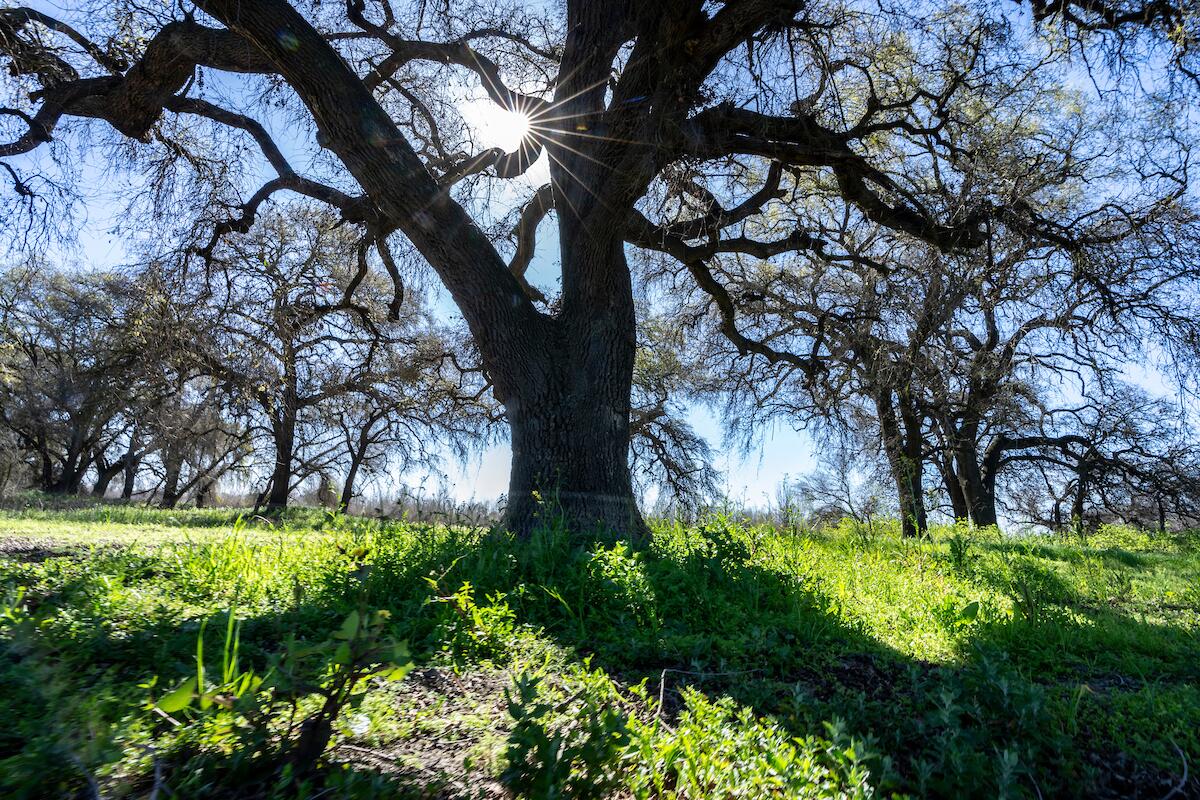
“We’re still growing,” park manager Paige Haller said. Haller said the park would open with three full-time interpretive employees and be open 7 a.m. to 5 p.m., Friday, Saturday and Sunday. Visitors will be able to reserve guided visits, Haller said, on a soon-to-be-unveiled park website.
Temporary restroom facilities are in place. A prefab “welcome center,” about the size of a trailer, is due to open by year’s end, to be followed eventually by a larger visitor center.
Once a dock is in place at the park’s main pond, Haller said, “We’re planning on having nonmotorized boating” and fishing, perhaps by the end of 2025.
There will be no entrance fee at the beginning, Haller said, adding, “We expect that to happen in the next couple of years.”
The property, formerly known as the Dos Rios Ranch, includes eight miles of river; a long, oxbow-shaped pond; a barn; several farm buildings that will be adapted to new uses; and about 20 miles of ranch roads, many of which likely will become trails.

7 perfect L.A. spots beyond the beach for a tranquil walk by the water
Driving to the beach can be a pain. Here are 7 inland gems with bodies of water that make for refreshing outdoor excursions.
March 18, 2024
The property was run as a dairy and cattle ranch for decades, with a series of berms separating the rivers from the rest of the land, before it was acquired in 2012 by the California conservation nonprofit River Partners. River Partners planted vegetation, removed the berms in 2018 and began a transfer of the property to the state in 2023.
A River Partners analysis of the property found species including riparian woodrat, Swainson’s hawk, least Bell’s vireo, yellow warbler, sandhill crane and “an entire suite of neotropical migratory songbirds.” In waters near the restoration site, River Partners has documented spawning Chinook salmon, steelhead trout and white sturgeon. The park is neighbored by the San Joaquin River National Wildlife Refuge.
Before this, the last new state park unit to be unveiled was Eastern Kern County Onyx Ranch State Vehicular Recreation Area, opened in November 2014. The Dos Rios park will be the 281st unit in a system that covers nearly 1.4 million acres and includes almost 15,000 campsites and 3,000 miles of hiking, biking and equestrian trails.
The Dos Rios park’s name is to be determined and approved in coming meetings of the California State Park and Recreation Commission. Its next meetings are June 11 and Sept. 11. Gov. Gavin Newsom spoke at the Dos Rios site on Monday as part of an Earth Day celebration.
The Tuolumne and San Joaquin rivers both carry snowmelt from the Sierra into agricultural areas of the Central Valley. The 366-mile San Joaquin River, longest in the valley, eventually flows into the Pacific Ocean by way of Suisun Bay and San Francisco Bay.
More to Read
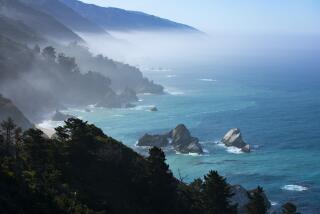
California libraries may lose free passes to state parks as budget deficit mounts
Feb. 28, 2024

After heavy storms, Death Valley is now open to kayakers: The return of ghostly Lake Manly
Feb. 21, 2024
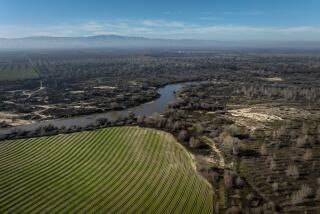
How freeing rivers can help California ease flood risks and revive ecosystems
Feb. 20, 2024
Sign up for The Wild
We’ll help you find the best places to hike, bike and run, as well as the perfect silent spots for meditation and yoga.
You may occasionally receive promotional content from the Los Angeles Times.

Born and raised in California, Christopher Reynolds has written about travel, the outdoors, arts and culture for the Los Angeles Times since 1990.
More From the Los Angeles Times

Climate & Environment
Chuckwalla National Monument would protect swath of California desert and preserve a sacred land
April 28, 2024

L.A. supervisors oppose plan to eradicate Catalina deer by shooting them from helicopters
April 27, 2024

Entertainment & Arts
A new play about Jesus comes to the O.C. It could provoke ‘intense’ reactions
April 26, 2024

How to have the best Sunday in L.A., according to Laufey
- Election 2024
- Entertainment
- Newsletters
- Photography
- Personal Finance
- AP Investigations
- AP Buyline Personal Finance
- AP Buyline Shopping
- Press Releases
- Israel-Hamas War
- Russia-Ukraine War
- Global elections
- Asia Pacific
- Latin America
- Middle East
- Election Results
- Delegate Tracker
- AP & Elections
- Auto Racing
- 2024 Paris Olympic Games
- Movie reviews
- Book reviews
- Personal finance
- Financial Markets
- Business Highlights
- Financial wellness
- Artificial Intelligence
- Social Media
California announces first new state park in a decade and sets climate goals for natural lands
California Gov. Gavin Newsom breaks ground at a new state park in a decade on Monday April 22, 2024 at the Dos Rios property, in Modesto, Calif. The announcement comes as the state sets targets for cutting planet-warming emissions on natural lands. (AP Photo/Sophie Austin)
First partner Jennifer Siebel Newsom plants a tree during ground breaking ceremony where the state will open the first new state park in a decade on Monday April 22, 2024 at the Dos Rios property, in Modesto, Calif. The announcement comes as the state sets targets for cutting planet-warming emissions on natural lands. (AP Photo/Sophie Austin)
Civil Rights activist Dolores Huerta participates in a ground breaking ceremony where the state will open its first new state park in a decade at the Dos Rios property, in Modesto, Calif. on Monday April 22, 2024. The announcement comes as the state sets targets for cutting planet-warming emissions on natural lands. (AP Photo/Sophie Austin)
Civil Rights activist Dolores Huerta speaks during a ground breaking ceremony where the state will open its first new state park in a decade at the Dos Rios property, in Modesto, Calif. on Monday April 22, 2024. The announcement comes as the state sets targets for cutting planet-warming emissions on natural lands. (AP Photo/Sophie Austin)
California Gov. Gavin Newsom talks during a ground breaking ceremony at the Dos Rios property, in Modesto, Calif. on Monday April 22, 2024. The property is located in the state’s crop-rich Central Valley region, where the state will open its first new state park in a decade this summer. The announcement comes as the state sets targets for cutting planet-warming emissions on natural lands. (AP Photo/Sophie Austin)
Gov. Gavin Newsom and first partner Jennifer Siebel Newsom laugh during a speech by Dolores Huerta during the dedication of the new Dos Rios State Park in the Central Valley, near Modesto, Calif., Monday, April 22, 2024. (Paul Kitagaki Jr./The Sacramento Bee via AP)
American labor leader and civil rights activist Dolores Huerta speaks during the dedication of the new Dos Rios State Park in the Central Valley, near Modesto, Calif., Monday, April 22, 2024. (Paul Kitagaki Jr./The Sacramento Bee via AP)
Gov. Gavin Nerwsom and first partner Jennifer Siebel Newsom plant a valley oak during the dedication for the new Dos Rios State Park in the Central Valley near Modesto, Calif., Monday, April 22, 2024. (Paul Kitagaki Jr./The Sacramento Bee via AP)
- Copy Link copied
MODESTO, Calif. (AP) — California will open its first new state park in a decade this summer, Gov. Gavin Newsom and state officials announced Monday, as the state sets targets for cutting planet-warming emissions on natural lands.
The 1,600-acre (648-hectare) Dos Rios tract in the state’s crop-rich Central Valley is set to open June 12 as California’s 281st state park. Located near the confluence of the Tuolumne and San Joaquin rivers, it is surrounded by vast almond orchards and dairy pastures. Californians will be able to use the park for hiking and picnicking, with plans for swimming and boating access in the future.
Ali Manzo, a Central Valley native and California State Parks interpreter, said the new park will help bring people together and allow them to develop a deeper respect for nature.
“Dos Rios is not just a park,” Manzo said. “It’s a community treasure that offers peace, adventure and a vital connection to nature.”
Manzo joined the governor, First Partner Jennifer Siebel Newsom and civil rights icon Dolores Huerta to announce the new park.
The Earth-Day announcement comes as Newsom unveiled new targets for cutting greenhouse gas emissions on natural lands. The plan sets out to reduce the risks of wildfires, expand forest cover and restore wetlands. Newsom said the targets would move the state closer toward achieving its mandate of carbon neutrality , meaning it will remove as many carbon emissions from the atmosphere as it emits, by 2045.
“These are stretch goals, unquestionably,” the Democratic governor said. “The good news is we’re making real progress.”
Newsom did not say what success would look like for implementing the targets. His administration did not release an estimate for how much the plan would cost the state, which is facing a massive projected budget deficit.
The targets come out of a law Newsom signed in 2022 requiring the state Natural Resources Agency to work with other agencies to create a plan to reduce emissions from natural lands.
The plan aims to reduce the risks of wildfires across nearly 53,000 square miles (138,000 square kilometers) of land by 2045 through methods that include burning vegetation that can make wildfires more intense. The state also plans to plant 4.2 million trees, manage and restore 1.6 million acres (647,000 hectares) of grasslands, and protect more than 233,000 acres (94,000 hectares) of wetlands and seagrasses along that timeline.
California has spent about $9.6 billion since 2020 on efforts address climate change using the state’s natural lands.
Natural Resources Secretary Wade Crowfoot called the plan “a big deal” because the state has focused much of its climate policy on reducing emissions from other areas, such as the energy sector, and less so from natural lands.
“We know we have to reduce pollution significantly, but we also need to improve the health of our landscapes to actually remove carbon dioxide from the air,” Crowfoot said.
In recent years, the state has approved the eventual phasing out of the sale of new fossil fuel-powered cars , lawn mowers , large trucks that transport goods through ports and trains powered by diesel .
Sophie Austin reported from Sacramento. Austin is a corps member for The Associated Press/Report for America Statehouse News Initiative. Report for America is a nonprofit national service program that places journalists in local newsrooms to report on undercovered issues. Follow Austin on X, the platform formerly known as Twitter: @sophieadanna

IMAGES
COMMENTS
Leave Pinnacles National Park and travel 233 miles to Ventura, California. Day 16: Ventura to Channel Islands National Park. Make a reservation for an Island Packers tour to Channel Islands National Park. Head back to Los Angeles after the day tour, or stay in Ventura for another night. Where to stay
Distance to Ventura: 200 miles, 3.5-hour drive. Ventura to Santa Cruz Island: 1-hour ferry ride. Oxnard to Anacapa Island: 1.5-hour ferry ride. You've made it to the last leg of your national parks road trip, congrats! It's finally time to head to the coast to check out California's famous Channel Islands.
7. Pinnacles National Park. Characterized by unique rock formations, caves, and diverse flora and fauna this lesser-known park is a great getaway destination. Located in Central California, Pinnacles National Park is one of the best places to experience a natural wonder that is slightly away from the usual crowds.
Miles: 223 miles. National Park: Lassen Volcanic National Park. Lassen Volcanic is a hidden gem on your national park road trip. Because it's tucked away in Northern California, it often gets overlooked. The good news is it makes it a great place to get away and have some hikes to yourself, even in summer.
The last stop of our California National Parks road trip is Lassen Volcanic National Park. Though Lassen Peak hasn't erupted since 1917, this volcano is very much alive, complete with bubbling mud and steaming sulfurous streams. The drive from Yosemite Valley to Lassen Volcanic National Park is a little over six hours in length.
For the quintessential California desert experience, there is no better place to visit than Joshua Tree National Park.Situated just 50 miles east of Palm Springs, Joshua Tree offers 800,000 acres ...
Kings Canyon National Park: Tall Trees and Deep Canyons. Kings Canyon National Park is located just 50 miles from Sequoia National Park, and the two parks are connected by the scenic Generals Highway, one of the most scenic drives in California. If you have the time, it makes sense to combine visits to both parks, for an epic wilderness experience.
Start your trip with a visit to the world-famous, Yosemite National Park. Breathe in the sweet pine-scented air and dangle your toes in playful mountain rivers. With the diverse natural landscapes in the region, you could easily spend 3-4 days (or a lifetime) exploring the trails, rock climbs, and other things to do.
Redwood National Park. In the land of 30-story-high redwoods, two popular sites require advance planning this summer: Fern Canyon 's two-story cliffs covered in ferns and Tall Trees Grove, a cluster of majestic trees growing near Redwood Creek. To drive to the Fern Canyon trailhead at Gold Bluffs Beach from May through September, you must ...
California is home to a variety of national parks, including 9 official national parks and a total of 28 national park units. A 10-day road trip through California is a great way to explore the ...
Check current road conditions and chain restrictions by calling 209-372-0200. Bears remain active in the park year-round. Please be aware of how to store food when in the park. Always check park conditions before a visit, especially during fire season when smoke and fires can lead to closures or restrictions.
This guide lists ALL 33 national park sites in California with park info, activity ideas and a map. Get inspired to visit California's national parks. This guide lists ALL 33 national park sites in California with park info, activity ideas and a map. ... This trip has key stops within the park, but also suggests some cool spots outside of the ...
When to do the CA Parks Road Trip. The best time of year to do a California National Parks road trip is either late spring or early fall. You'd think summer would be great, but truth be told that's when EVERYBODY and their grandma tries to visit all the National Parks.If you can plan your road trip for the beginning of May through the beginning of June, you'll get the best weather AND ...
Upon entering California's Yosemite Valley, most visitors pause along the roadside to marvel at 620-foot-high Bridalveil Fall. Yosemite is one of the 63 U.S. national parks gearing up for summer ...
This trip takes you to California's most popular national parks. Yosemite is a nearly 1,200-square-mile expanse in the western Sierras filled with meadows, waterfalls, and spectacular granite ...
Death Valley To Yosemite Road Trip. Driving time: 5 hours. Death Valley is one of the most astonishing places in the Golden State and really ought to make it onto your California national parks itinerary. As the driest, lowest, and hottest national park—complete with record-breaking temperatures—Death Valley is not your typical vacation ...
Rachel + Dana of Traveling Found Love are here today sharing this epic California national park road trip itinerary!. One thing is for sure, California's vibrant cities and the stunning Pacific Coast Highway attracts millions of visitors every year. We loved walking on the Santa Monica Pier and admiring the amazing views on Highway 1 but what really left us speechless was the inner part of ...
California and National Parks. Get to know the real California on this scenic guided tour. Soak in magnificent vistas, sunny beaches, the culture of San Francisco, the glamour of Los Angeles, and the awe-inspiring majesty of the most popular national parks in California. You can also add an extension to continue your journey to San Diego.
Stop 1: Yosemite National Park. Yosemite is an appropriate start because it's one of two places President Lincoln set aside for public land. (The other is Mariposa Grove, which you will see at the next stop!) Decades later, California preservationist John Muir wanted more Yosemite land protection, so he invited Teddy Roosevelt to camp there.
Book Your California National Park Trip with Road Scholar. At Road Scholar, we have a wide range of National Park vacation packages for California to choose from. Whether you're interested in group National Park tours or National Park senior travel adventures, we have a great selection of learning adventures that allow you to learn and ...
Our Northern California national parks road trip itinerary returns to California to two national monuments: Tule Lake and Lava Beds. The two parks are located just 20 minutes apart in Tulelake, CA. Lava beds at Lava Beds National Monument. Previously, Tule Lake was just one unit of the World War II Valor in the Pacific National Monument.
8 Day California Tour to Death Valley, Yosemite, and Sequoia National Parks. Larger-than-life sequoias frame your path through the Land of the Giants - experience the natural wonders of California National Parks. Gain fascinating insight and MAKE TRAVEL MATTER® as you meet a climber within Yosemite National Park to learn first-hand about the ...
2023 price to visit: $30 per car. Lassen Volcanic National is the hidden gem of Northern California's national parks. So many people - including NorCal locals - don't even know it exists. The park is centered around Lassen Peak, a volcano that last erupted from 1914-1917.
Road Trip Itinerary Details: Distance: 180 miles. Time: 4h. Today's Extraordinary Places: Yosemite National Park. Rise and shine early - today's the first of the park-to-park days that highlight the middle of this 10-day California road trip.
California. Various States CA,CO,ID,KS,MO,NE,NV,OR,UT,WY. Follow in the footsteps of over 250,000 emigrants who traveled to the gold fields and rich farmlands of California during the 1840s and 1850s: the greatest mass migration in American history. The California National Historic Trail is over 5,000 miles long and covers portions of 10 states ...
From Yosemite and Joshua Tree National Park to Monterey, Hollywood and San Diego, here are top experiences for your list. ... Travel, US Vacations, California Vacations, U.S. West Vacations. Read ...
Visitors wishing to hike Old Rag Mountain in Virginia's Shenandoah National Park must obtain a day-use ticket between March 1 and Nov. 30, and in Zion National Park, in Utah, hikers wishing to ...
On June 12, California will open its first new state park in nearly a decade, setting aside 1,600 acres near the confluence of the Tuolumne and San Joaquin rivers in the San Joaquin Valley.
Asked about his experience with the word touron, former park ranger Griff Grifffith said it wasn't used much around his main stomping grounds — Northern California's redwood parks — where ...
The 1,600-acre (648-hectare) Dos Rios tract in the state's crop-rich Central Valley is set to open June 12 as California's 281st state park. ... Report for America is a nonprofit national service program that places journalists in local newsrooms to report on undercovered issues. Follow Austin on X, the platform formerly known as Twitter ...